













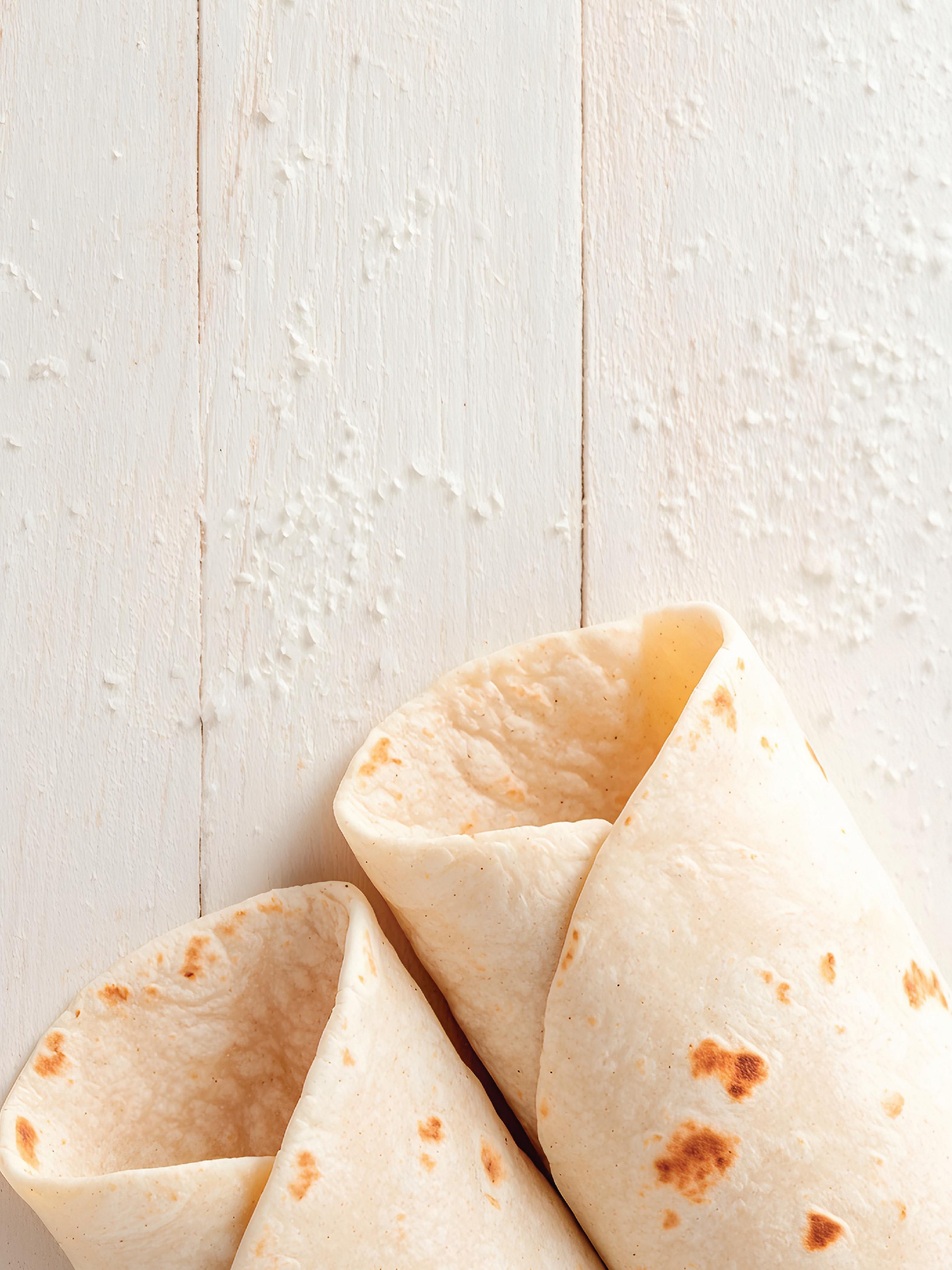
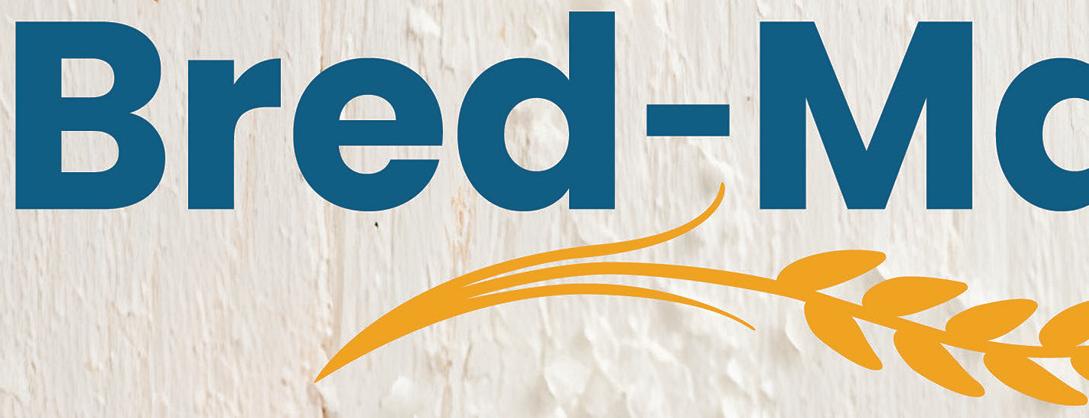


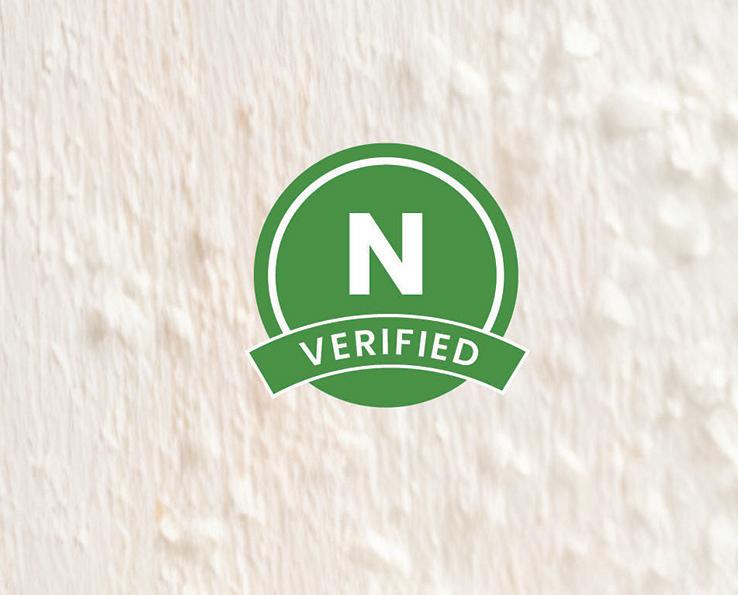


























Every step of the baking process matters. From mixing to proofing to baking to decor, our brands offer cuttingedge solutions designed to make your operations more reliable, efficient, and cost-effective. Together, we push boundaries to create the next generation of deliciousness.
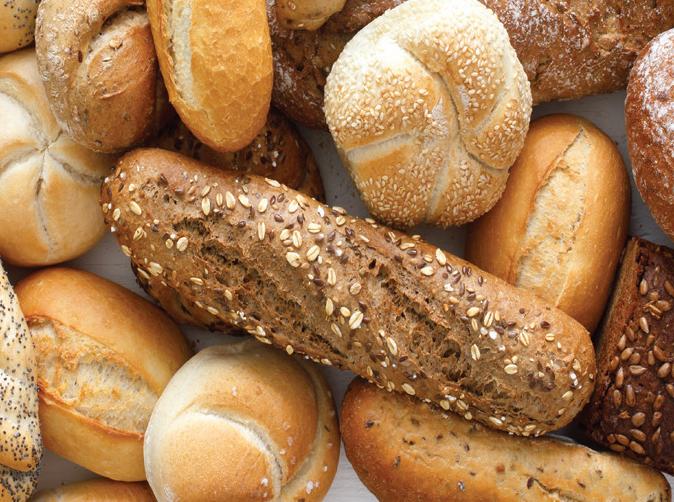

Top of the Line Equipment for
Bread & Buns
Sweet Goods, Cakes & Muffins
Biscuits, Crackers & Energy Bars
Artisan & Flat Bread
Pizza & Pastries
Tortillas & Snacks
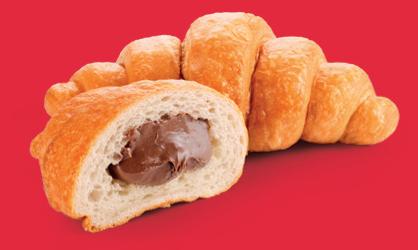







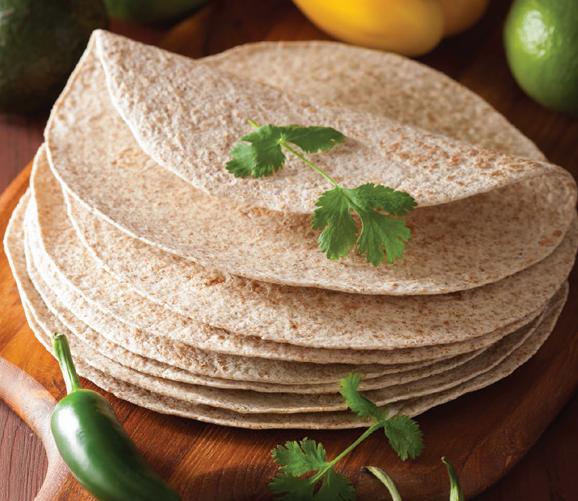

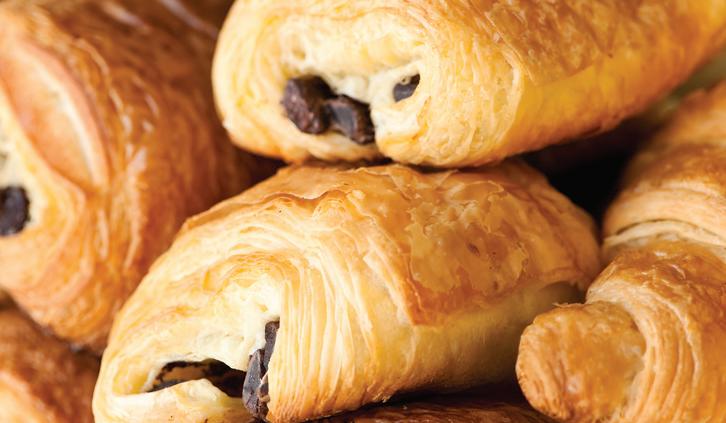





We are turning up the heat at IBIE! Tour Oven Alley on Booth 1025


Removing eggs from a formula can not only remove an allergen, but also save on costs, make raw material storage easier and simplify the production process.
Brolite’s egg replacers can work as a total egg replacement in yeast raised products and up to 30% in cakes. Even with a partial replacement, a baker can have more consistent costs of ingredients and more supply stability.
Lose the eggs, keep the functionality, supply and cost savings of an egg replacer.
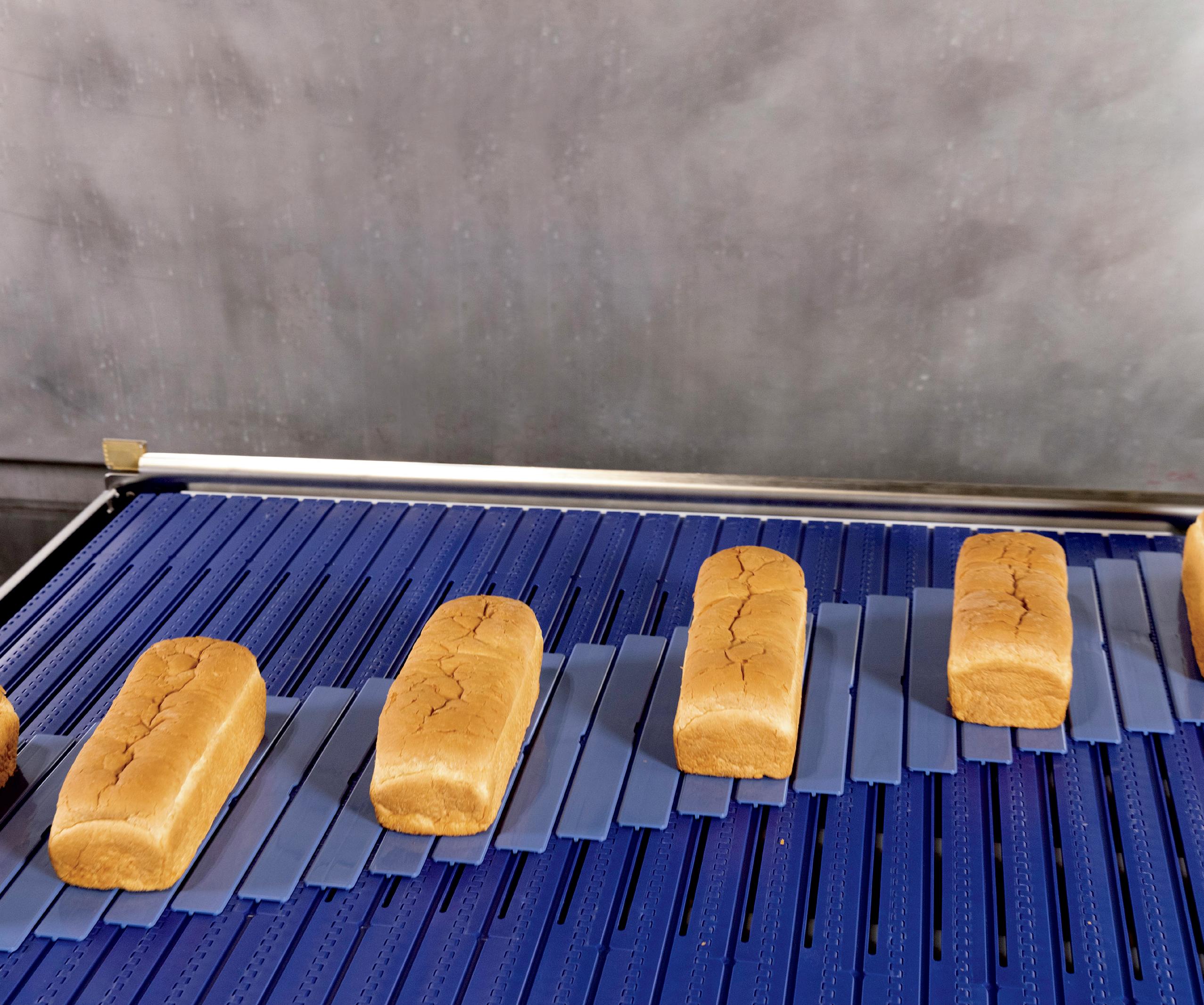

www.intralox.com



Intralox’s new Active Integrated Motion (AIM) Glide™ is a gentle, hygienic automation solution. It eliminates unscheduled downtime and jams while requiring 75% less maintenance and 50% less cleaning time than metal slat switches.


Gentle product handling while maintaining orientation
75% less maintenance
Reliable zero-jam automation
50% less cleaning time
Zero lubrication required
Paul Lattan
President - Principal
Steve Berne
Executive Vice President - Principal
Joanie Spencer
Vice President - Partner
Paul Lattan
Publisher | paul@avantfoodmedia.com
816.585.5030
Steve Berne
Director of Sales | steve@avantfoodmedia.com
816.605.5037
Erin Zielsdorf
Account Executive | erin@avantfoodmedia.com
937.418.5557
Joanie Spencer
Editor-in-Chief | joanie@avantfoodmedia.com
913.777.8874
Mari Rydings
Editorial Director | mari@avantfoodmedia.com
Jordan Winter
Creative Director | jordan@avantfoodmedia.com
Olivia Siddall
Multimedia Director | olivia@avantfoodmedia.com
Annie Hollon
Digital Editor | annie@avantfoodmedia.com
Maddie Lambert
Associate Editor | maddie@avantfoodmedia.com
Lily Cota
Associate Editor | lily@avantfoodmedia.com
Beth Day | Maggie Glisan
Contributors | info@commercialbaking.com







Commercial Baking is published by Avant Food Media, 1703 Wyandotte St., Suite 300, Kansas City, MO 64108. Commercial Baking considers its sources reliable and verifies as much data as possible, although reporting inaccuracies can occur. Consequently, readers using this information do so at their own risk. Commercial Baking is distributed with the understanding that the publisher is not liable for errors and omissions. Although persons and companies mentioned herein are believed to be reputable, neither Avant Food Media nor any of its employees accept any responsibility whatsoever for their activities. Commercial Baking magazine is printed in the USA and all rights are reserved.
No part of this magazine may be reproduced or transmitted in any form or by any means without written permission of the publisher. All contributed content and advertiser supplied information will be treated as unconditionally assigned for publication, copyright purposes and use in any publication or digital product and are subject to Commercial Baking ’s right to edit.
Commercial Baking ISSN 2767-5319, / USPS Publication Number: 25350 is published in February, April, June, July, August, October and December, in print and digital formats by Avant Food Media, 1703 Wyandotte St., Suite 300, Kansas City, MO 64108. Periodicals Postage Paid at Kansas City, MO, POSTMASTER: Send address changes to Commercial Baking, c/o Avant Food Media, 1703 Wyandotte St., Suite 300, Kansas City, MO 64108.
Circulation is tightly controlled, with print issues sent only to hand-verified industry decision makers and influencers. To apply for a free subscription, please visit www.commercialbaking.com/subscription


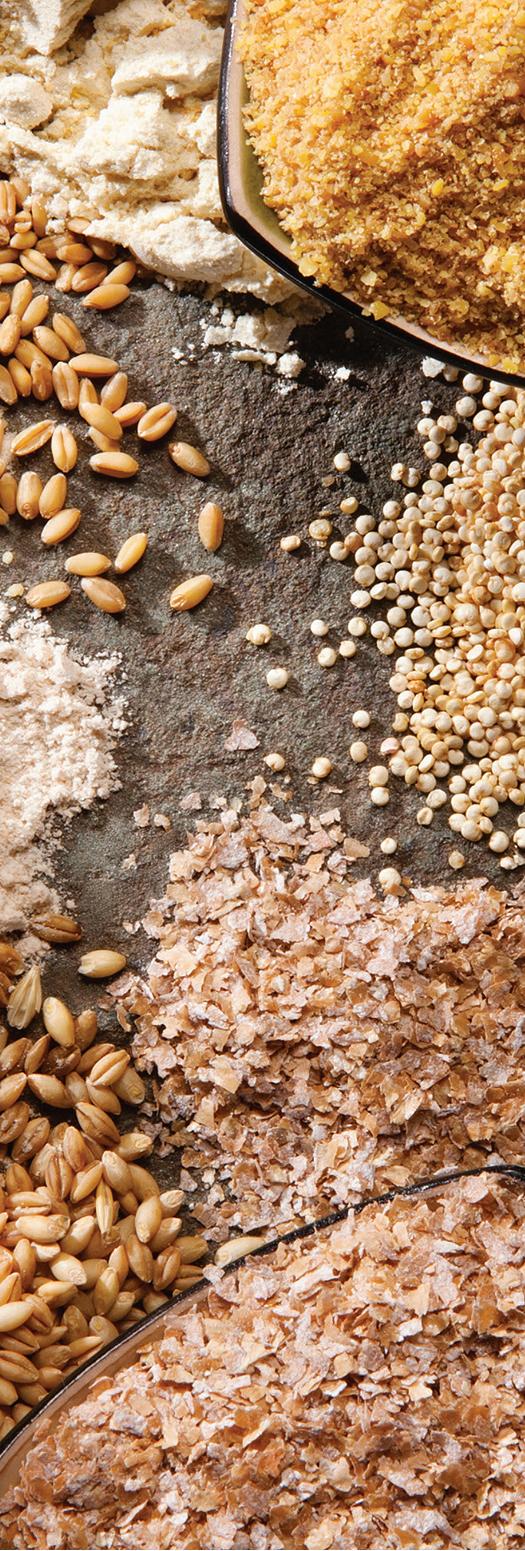
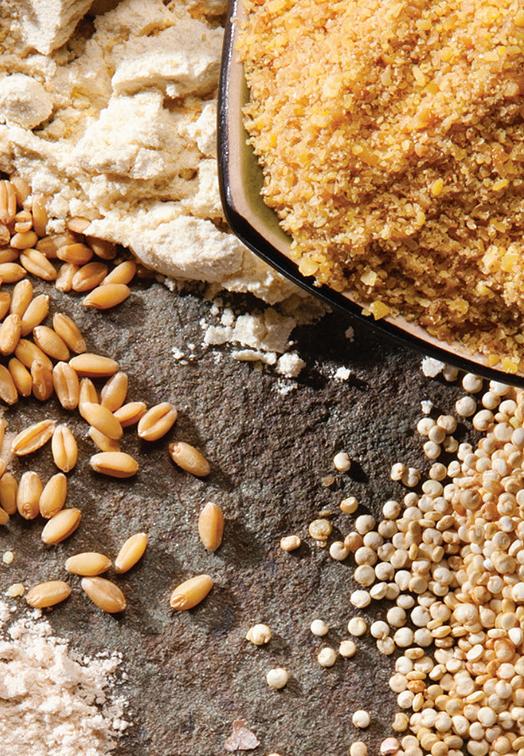
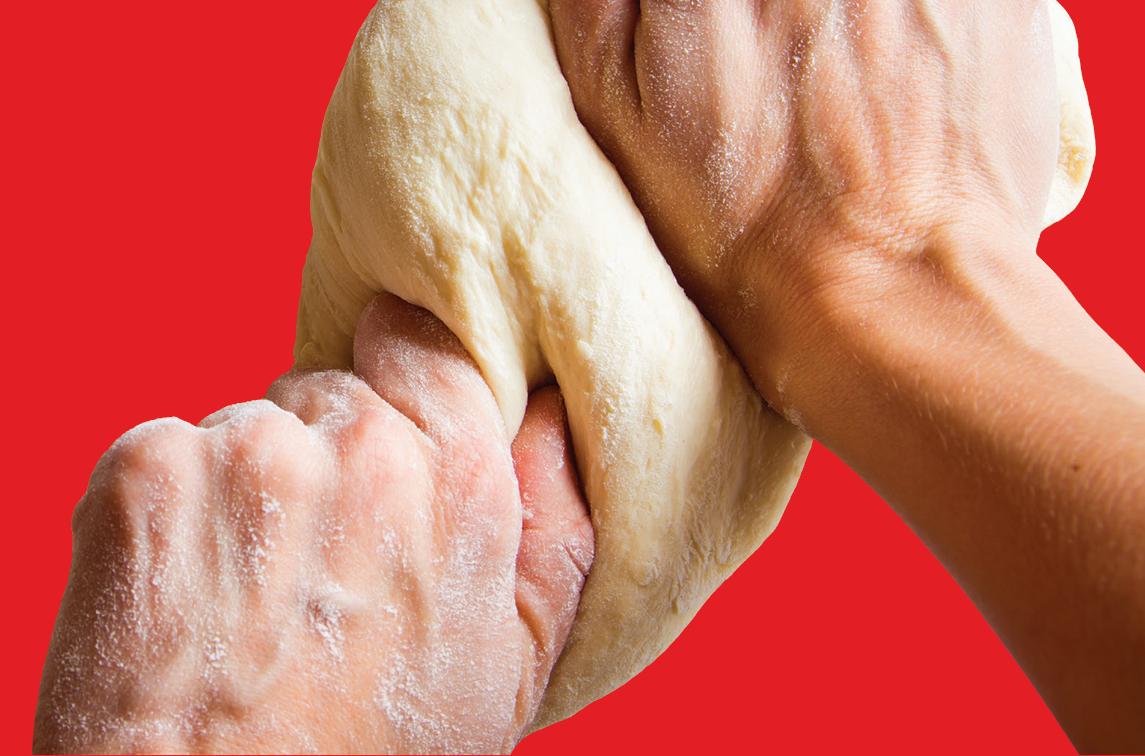


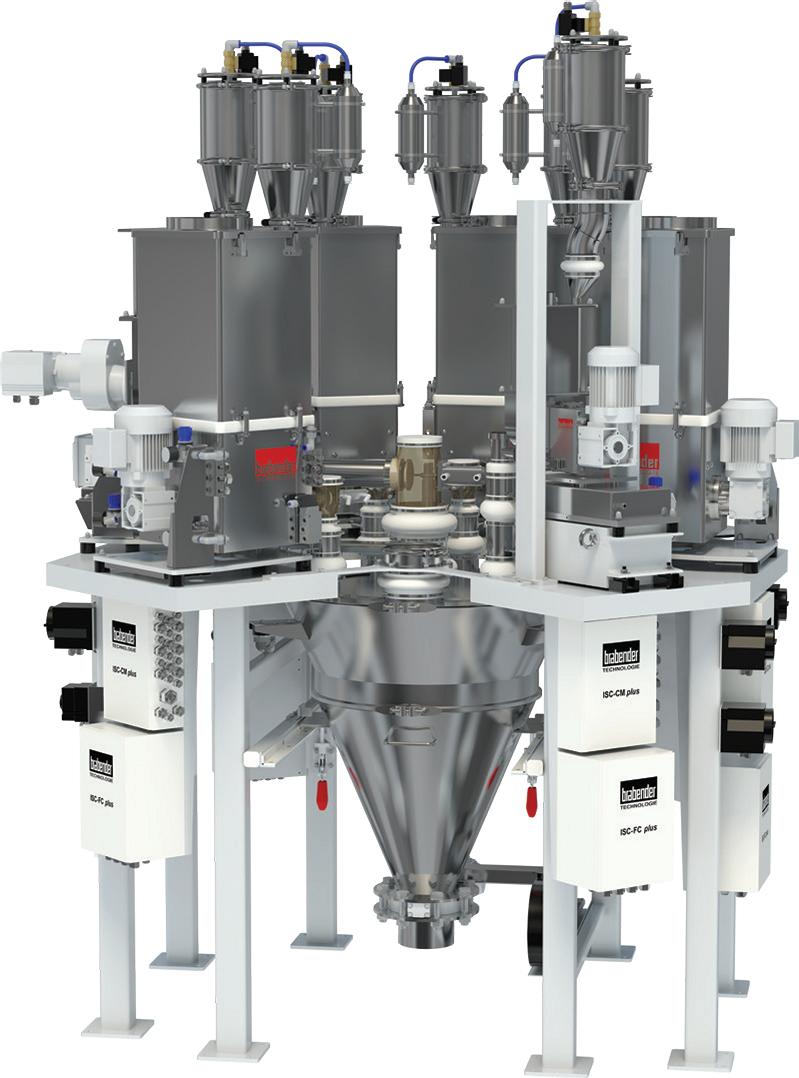







PLUS:
Look for QR codes that contain exclusive digital content throughout the issue.

New Horizons: The Quintessential Moniker
Alexander Salameh: Running Toward the Why
Cover:
With an unconventional acquisition strategy and a bit of calculated risk, Norwalk, OH-based New Horizons Baking Co. addresses the ultimate question: “How big do you want to be?” Read more on page 22.
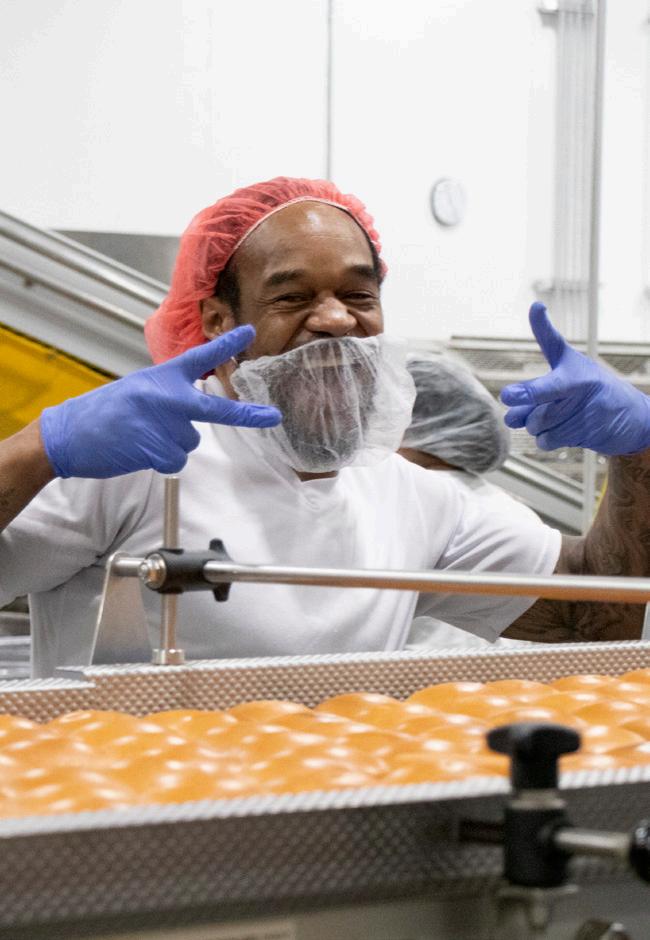

Critical Issues: Artificial Intelligence 47 Emerging Brand: OMG! Pretzels
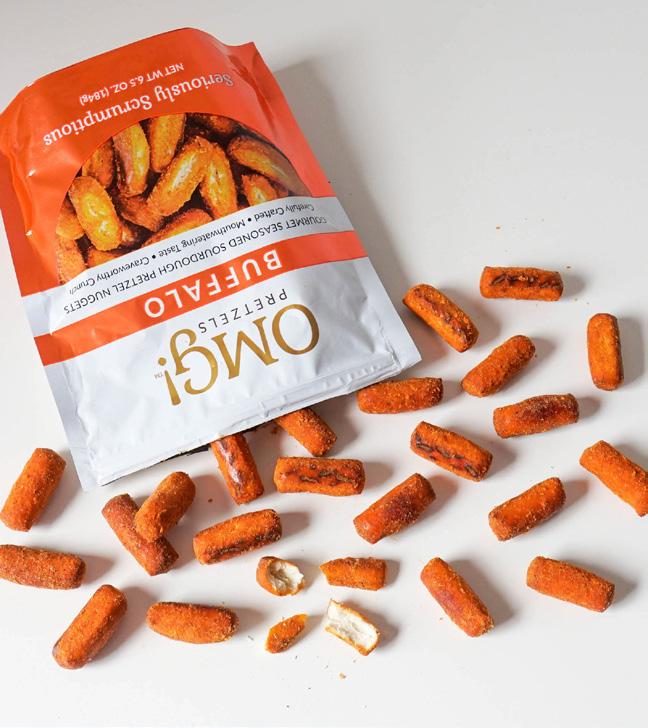

Critical Issues: Sustainability
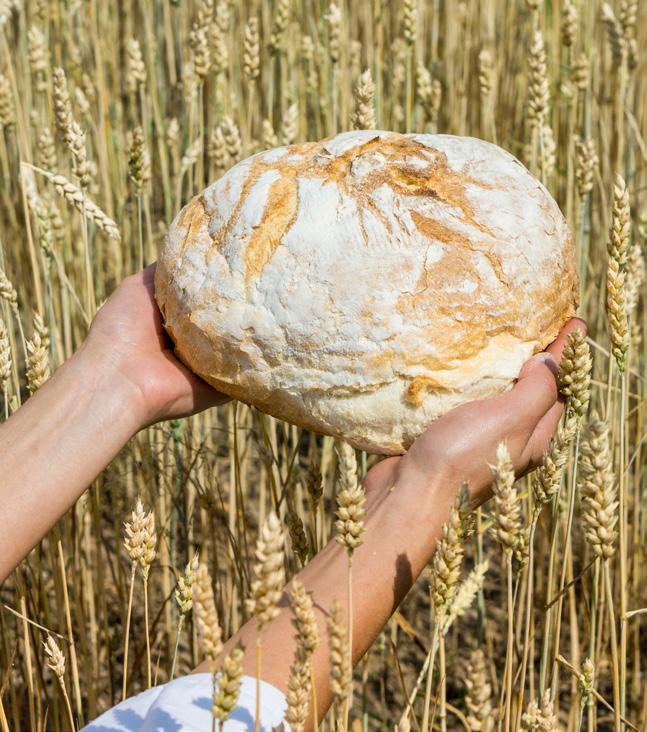






















































































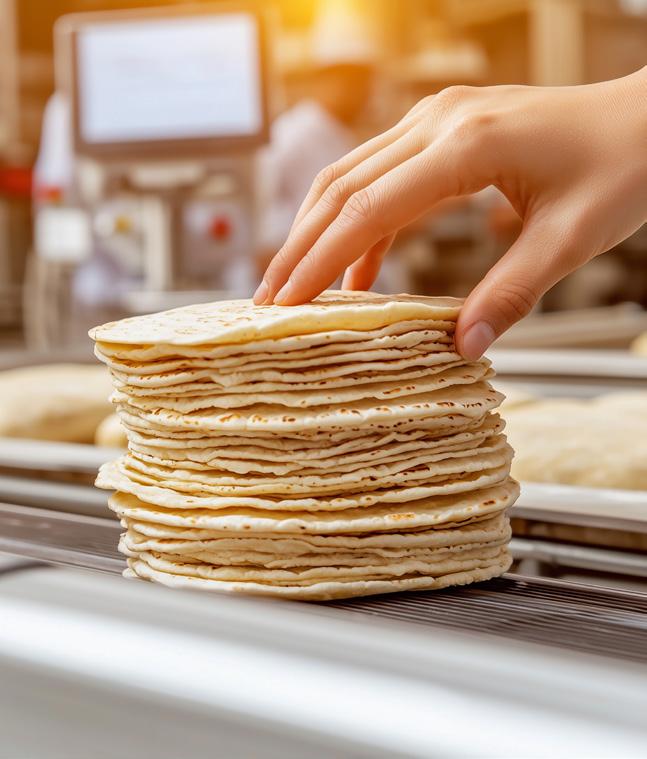



JOANIE SPENCER Editor-in-Chief | joanie@avantfoodmedia.com

WATCH NOW:
Joanie Spencer weighs in on risk vs. reward. Sponsored by Bundy Baking Solutions.
I’ve had some interesting conversations over the summer, not only in my editorial interviews but also at industry events, around the office and in my personal life. Many of them were centered around taking risks. Scary concept!
Take parasailing, an activity I’ve consistently filed under “hard pass.” Too risky. The thought of being 800 feet or more above a body of water — connected by what, to me, looks like a string — held no appeal. But someone talked me into it, and I learned it involves a harness, tow rope and winch ... not a string. I wasn’t yanked up into the air at breakneck speed; it was more like a glide. And the view from above — and the quiet that came with it — brought an unimaginable sense of peace. Parasailing, which once felt so risky, is now filed under “I’m in!”
There’s a lot of uncertainty out there. Not exactly perfect conditions for risk-taking, right? But here’s the thing: Innovation either requires or causes change, and change is not immune from risk.
These days are, indeed, unnerving. But you still have to think about where — and how big — you want to be in the future. That’s the long-game mindset that ultimately triggered historic growth for New Horizons, our featured bakery. Was it easy? No way. It took vision, trust and a solid plan. And a united commitment, even when the risk seemed terrifying.
As we head to the International Baking Industry Exposition, I recommend you go forth with an open mind. When you envision the future free from fear, you’ll be surprised how beautiful the view can be.











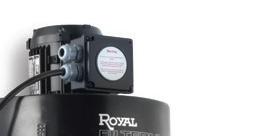




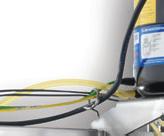
































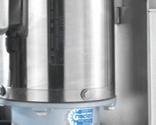





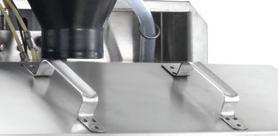















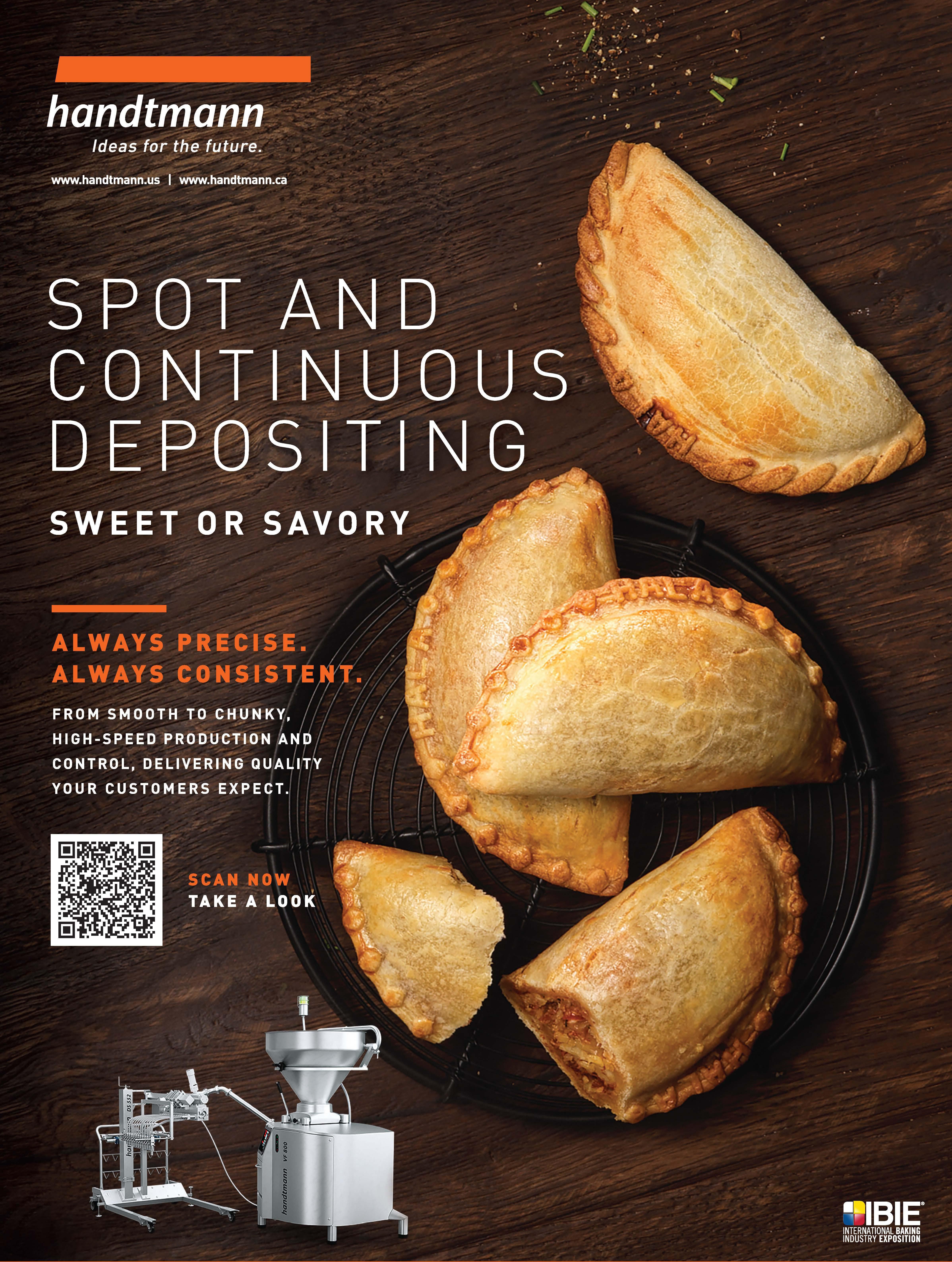

“The collective success of IBIE is the success of the baking industry. Every dollar that it generates is reinvested … in scholarships, safety, workforce development and more.”
Allen Wright | IBIE 2025 vice chair and president of Hansaloy Updating BEMA Convention 2025 attendees on IBIE

“Your product may change, but if your commitment to a certain type of product or quality is what built you to where you are now … that doesn’t change.”
Chimene Ross | CEO | The Killer Brownie Co.
During the Ask-A-Baker panel discussion at BEMA Convention 2025
“‘Newstalgia’ is about taking a classic and putting a little twist on it to appeal to a new customer. Nostalgic items play on emotion, and emotion is probably the strongest thing we use to make decisions.”
Karri Zwirlein | director of bakery, deli and prepared foods | Tops Markets
During a panel discussion on consumer trends at IDDBA 2025
IDDBA

“We looked for the right consumer to test [our product]. If people are passionate about cookies and can repeat-buy, then we know we can invest in more mass market conventional channels.”
Maura Duggan | founder, CEO | Fancypants Baking Co. On the Emerging Brands podcast with Kelly Bennett
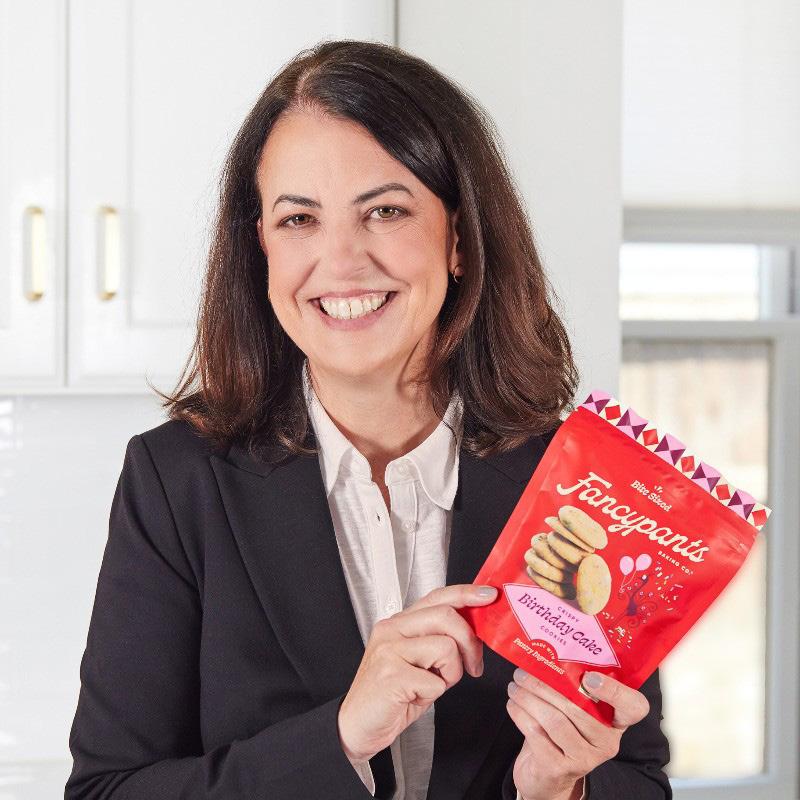




Martin J. Hahn | partner | Hogan Lovells US LLP

The Provident is the latest in depanner sanitary design and compliance!
Our depanner offers a complete washdown system for the conveyor, depanner and vacuum chamber; JSD auto vacuum control; remote low profile vacuum module; and works-in-a-drawer vacuum blower/motor accessibility.
The Provident is built to meet:
•FDA, USDA and ANSI 50.2 standards!
•BRC Global Standard for Food Safety!
• Vacuum chamber and conveyor system IP69K Washdown rating! No one
“Explore different roles within the industry. Having cross-functional experiences can be challenging, but rewarding, and open up new possibilities you didn’t even realize you wanted to explore.”
Eric Lindskog | R&D principal engineer | General Mills Via General Mills’ employee spotlight on LinkedIn


“Shoppers aren’t just buying products; they’re buying relevance. Curating trendy products makes it easy for consumers to stay in the know and feel like they belong.”
Sarah Weise | CEO | BIXA During a consumer trends panel
discussion at IDDBA
2025
“Get a [packaging prototype], go to your local store and stick it on the shelf, right where you think it’s going to sell, and then step back. Does it stand out? Compared to everybody else, how is [your product] going to be different?”
Molly Blakeley | founder,
CEO |
Molly
Bz
Cookies On growing a brand, during Season 15 of Commercial Baking’s Troubleshooting Innovation podcast



“It’s
not just
about
filling positions;
it’s
about upskilling the people you have. That’s how you’re going to keep your workforce and give them those next-level skills in order to retain them and stay competitive.”
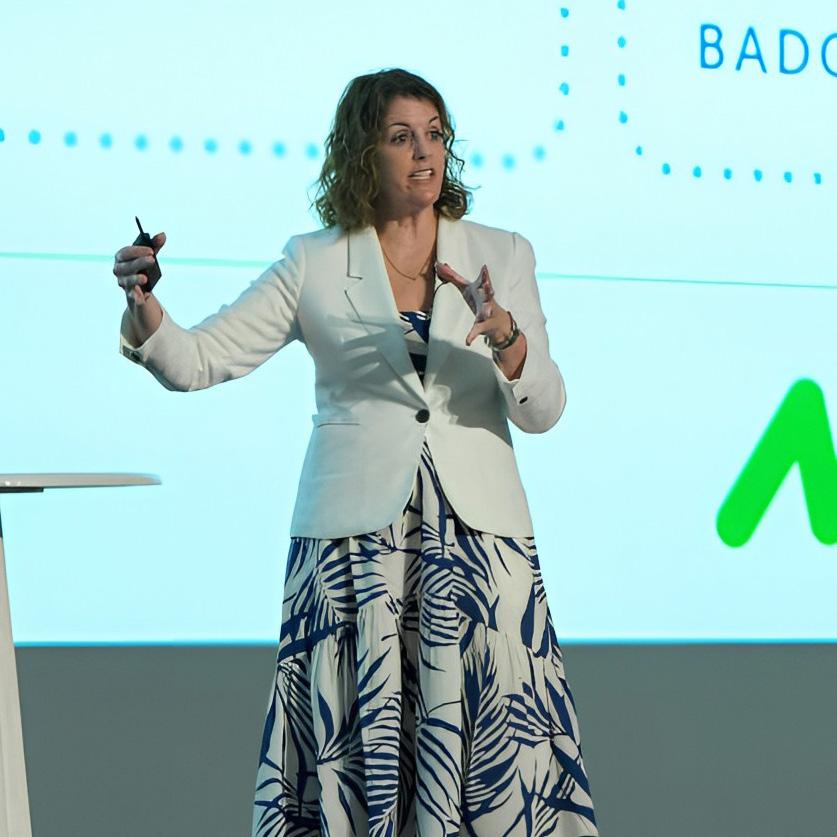

“When it comes to looking for trends, the most obvious place to start is with teenagers. Young people are the ones liking and following, and that’s what’s really driving trends.”
Katrina Robbins | R&D chef | David’s Cookies
an IDDBA 2025 session on cookie and flavor trends
“Let’s have the hard conversations. But let’s ground them in science, in nuance and in a shared desire to create better options for everyone.”












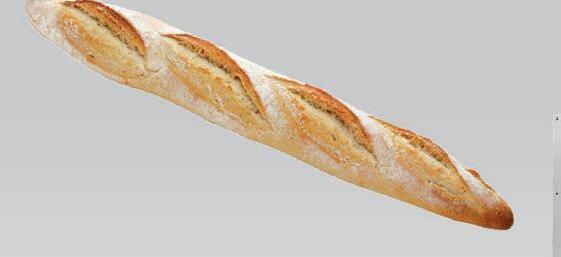
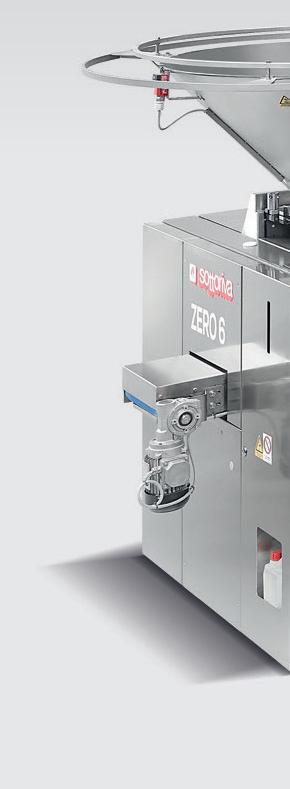
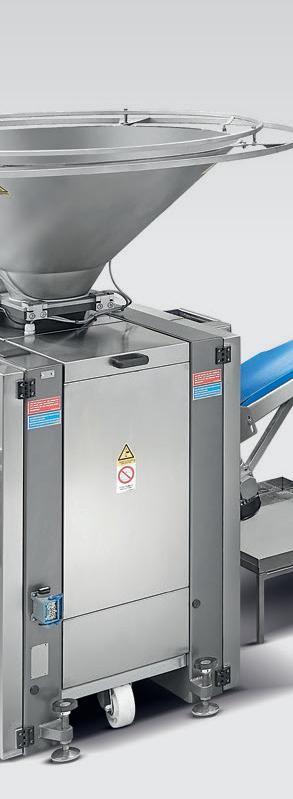
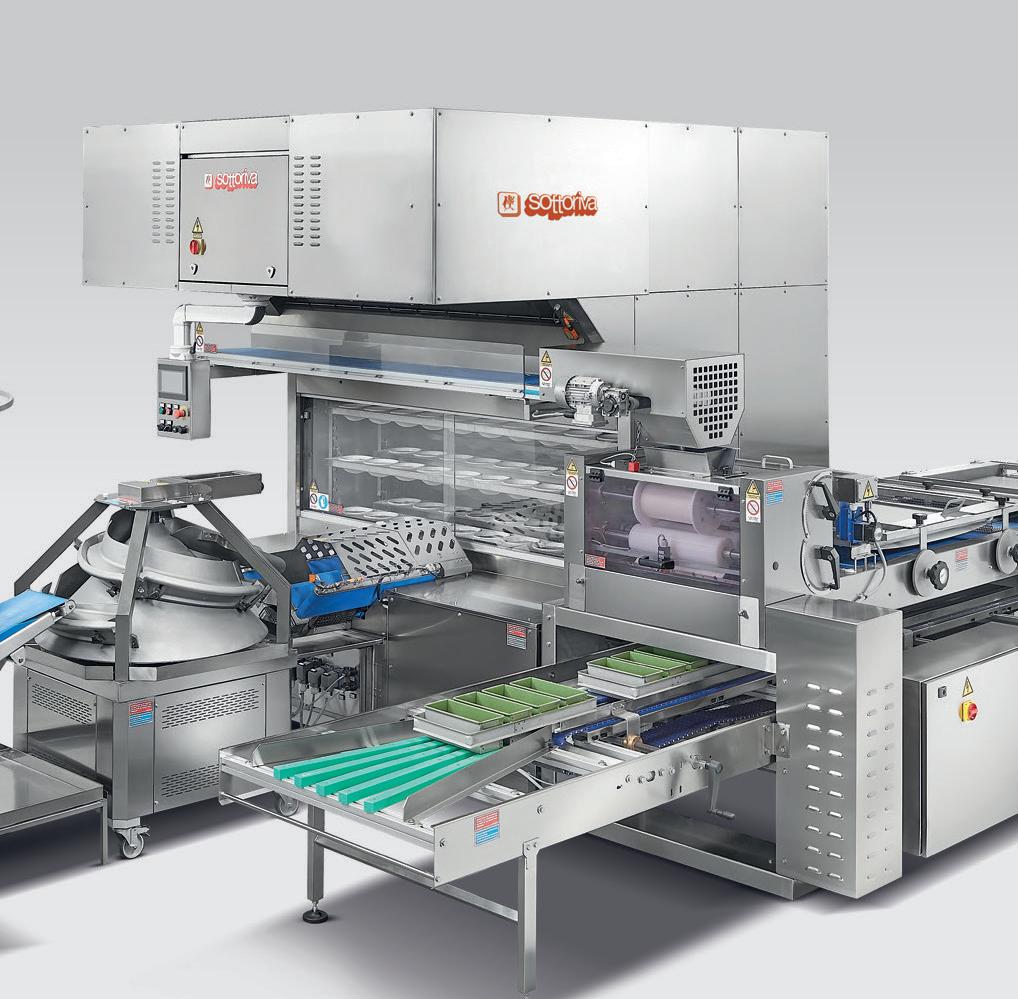








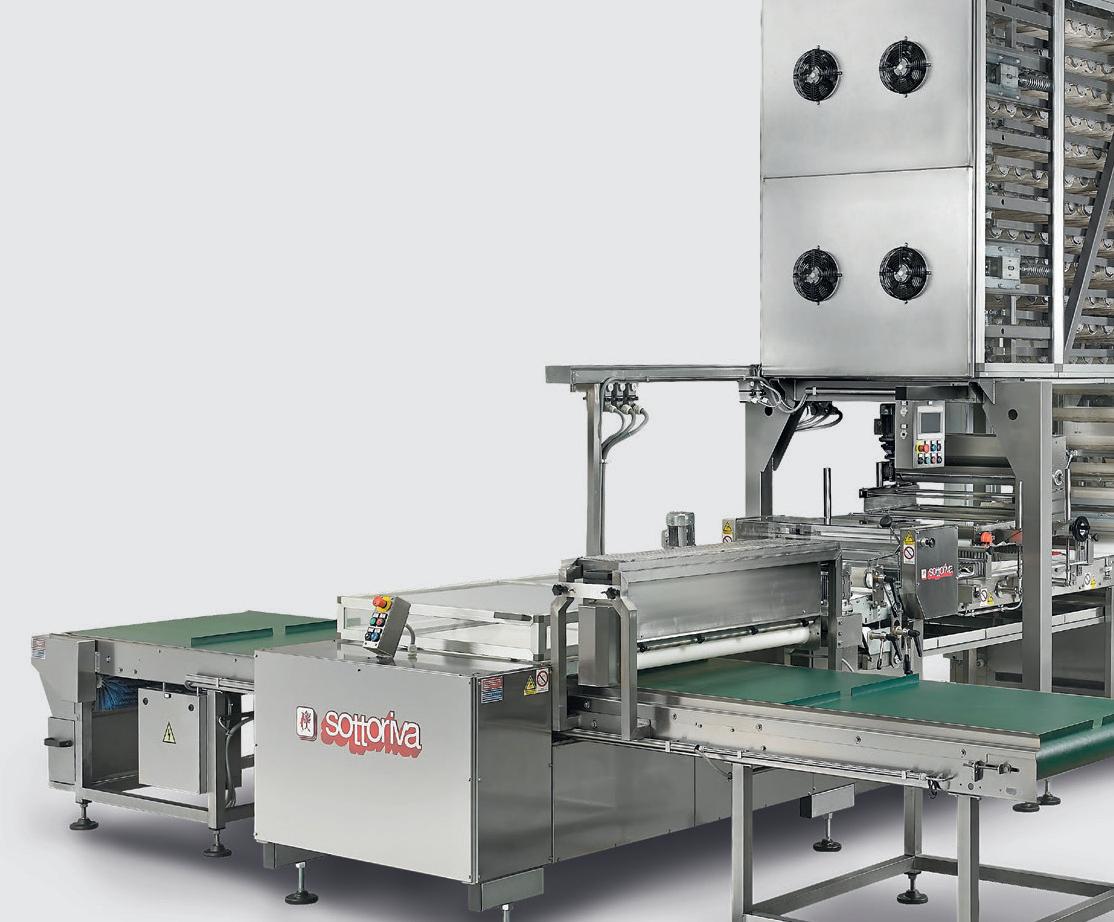


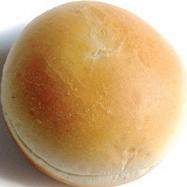

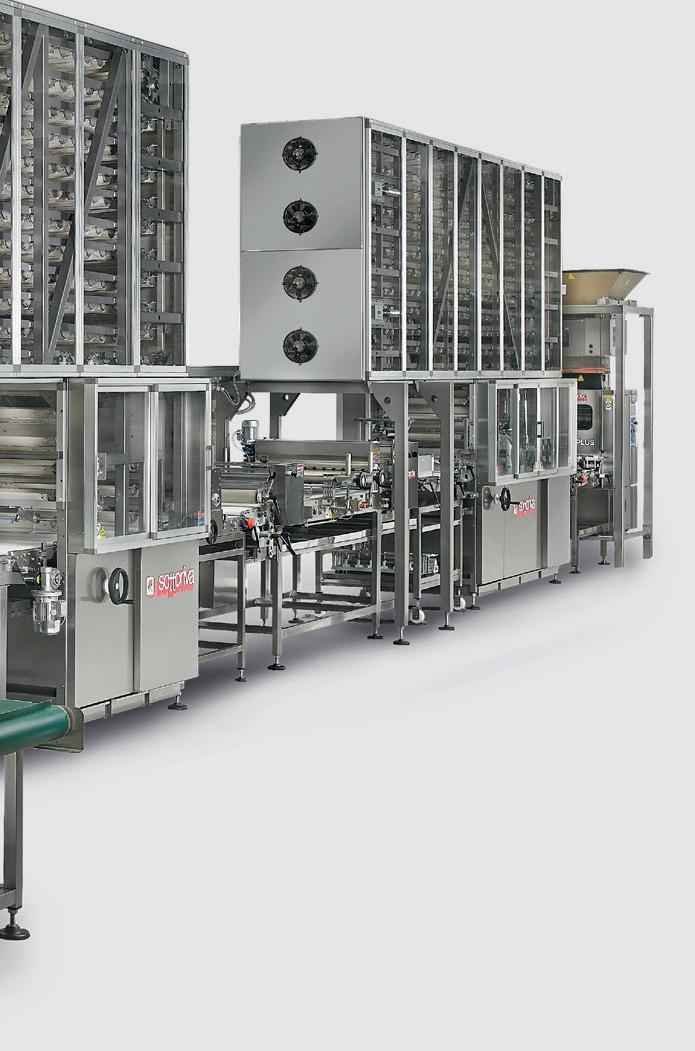

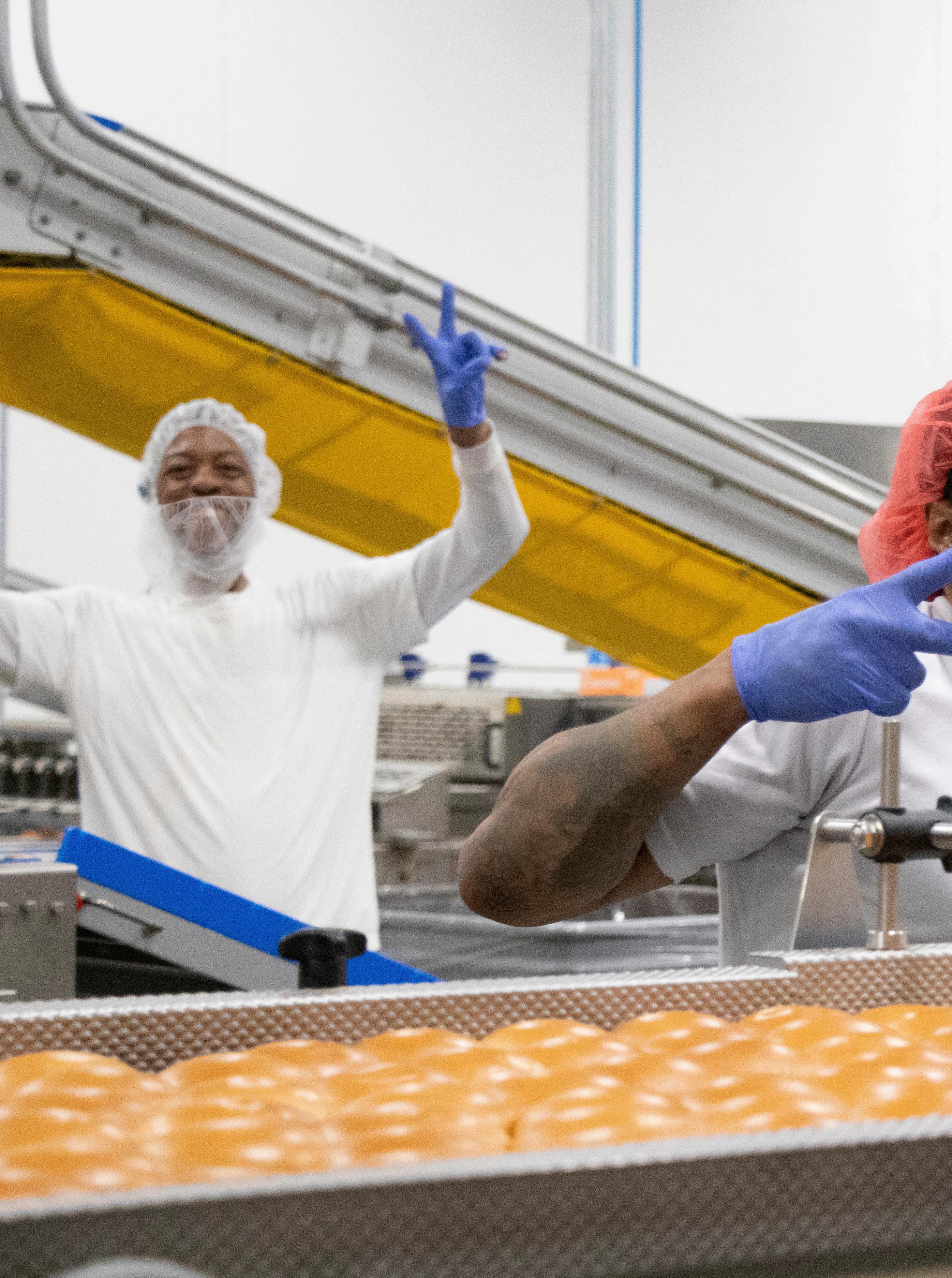
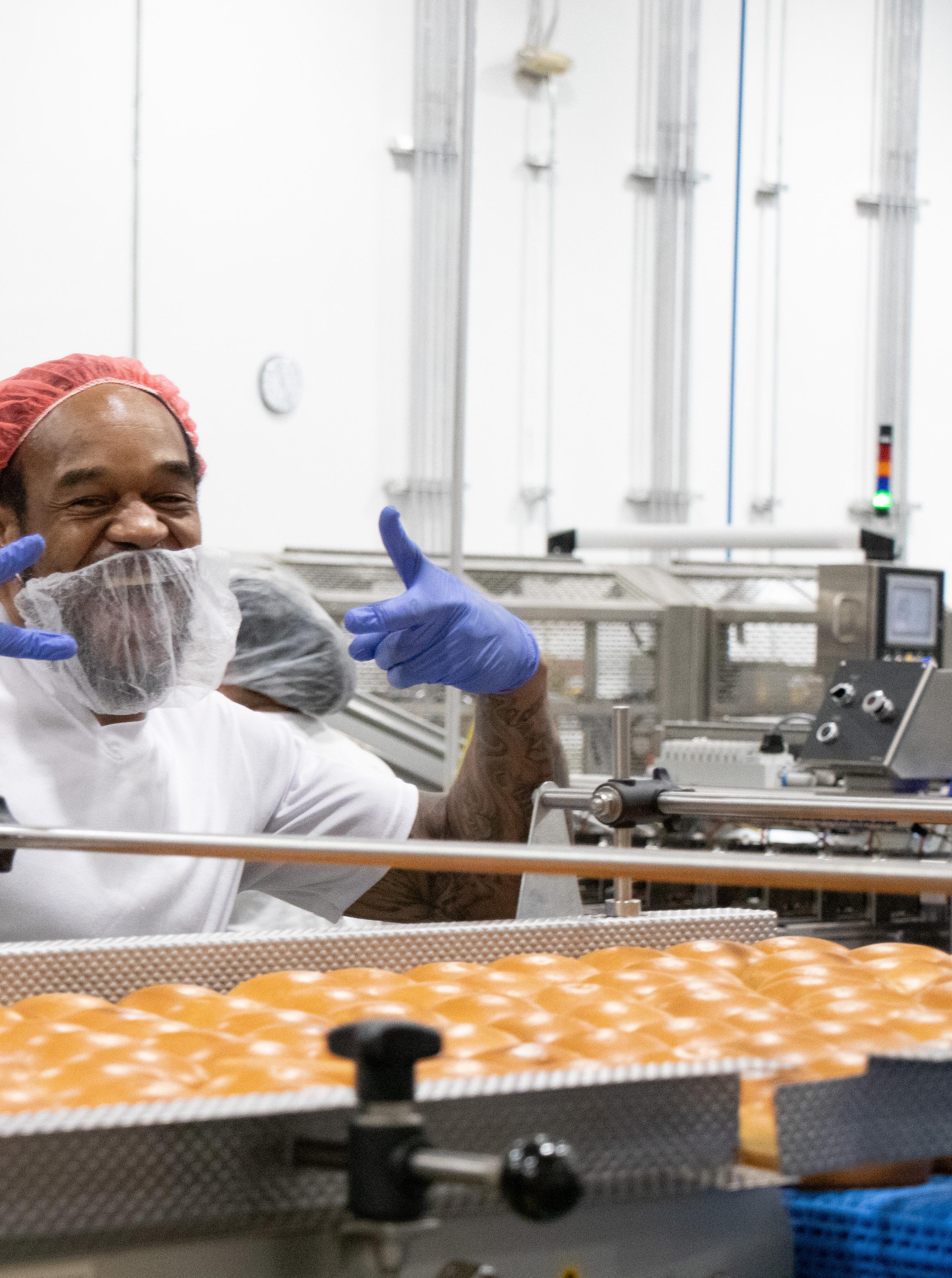
When it comes to growth for New Horizons Baking Co., the name says it all.
BY JOANIE SPENCER
Seven simple words. Strung together and punctuated, they form a question that comes with a myriad of answers, a lifetime of achievement and turning points on a path with unlimited potential.
“How big do you want to be?” That’s what Tilmon “Tim” Brown, founder and chairman of Norwalk, OH-based New Horizons Baking Co., asked his daughter Trina Bediako before she took the helm as the company’s CEO in 2020.
New Horizons was a small bun operation for McDonald’s when the Brown family purchased the business (formerly West Baking Co.) in 2014. Today, the company is home to more than 700 employees in four baking facilities that produce buns, English muffins, and, soon, pancakes for a variety of retail and foodservice customers throughout the US, as well as an ingredient blending operation, known as New Horizons Food Solutions.
“I asked that question 25 years ago,” Brown said. “I asked the question to keep people encouraged about our growth. To tell them that we could grow if we had the right vision within us.”
While the direction and speed of growth might be executed differently from how Brown did it in his day, Bediako’s vision and the operational expertise of Mike Porter, president and COO, are ushering in a new era for New Horizons. The latest milestone is a 155,000-square-foot bakery in Columbus, OH, which houses a high-speed bun line and a new pancake line set for startup in early September, as well as a 120,000-square-foot production facility, also in Columbus, dedicated to the ingredient operation.
“Trina’s doing things that make sense for the company,” Brown said. “I was more risk-averse and didn’t move the company as fast or as far as she has. It served me well at that time, but I applaud what she’s doing now. This team has come a long way, not only with the plant and equipment but also in their thinking about acquisitions and how big they truly want to be. In my mind, it’s picture perfect.”
Between strategic vision and operational execution, New Horizons has figured out how to take fundamentals into the future by turning traditional bun production into all-new possibilities. That began with getting the basics right.
Known as “the baker’s baker,” New Horizons spun off the Genesis Baking subsidiary in 2008 to handle contract manufacturing for all non-McDonald’s production, including the new pancake line. By strategically entering new markets through Genesis, New Horizons has diversified its business while maintaining McDonald’s as a longstanding, valued partner.
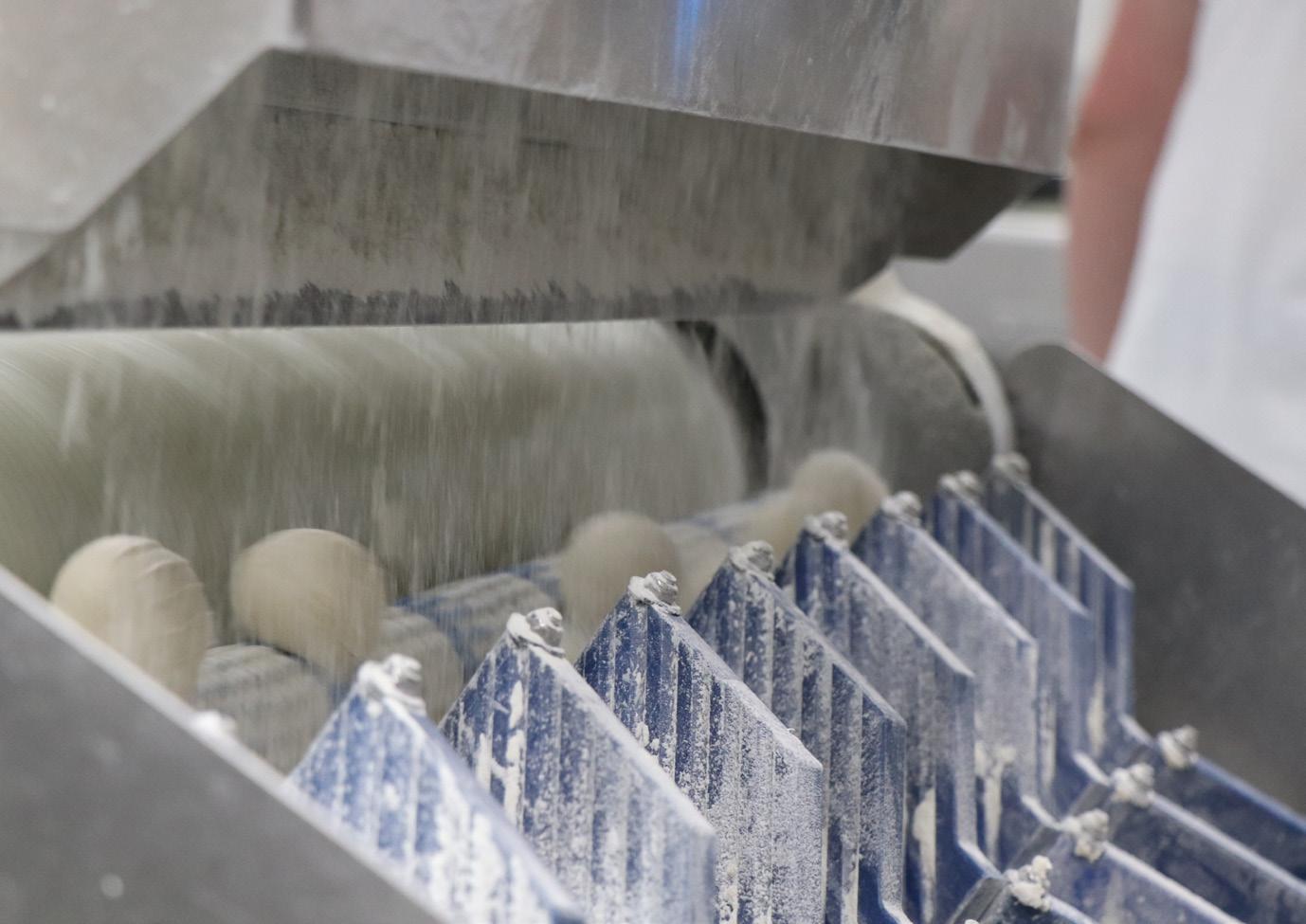
The past five years brought a surge of growth when the company transformed its Toledo, OH, distribution center into a bakery with a new English muffin line that launched in 2021. Then later that year, New Horizons acquired Coalescence, a manufacturer of dry ingredient blends, followed by the 2024 acquisition of Graffiti Foods, which produces liquid blends for the foodservice market.
While the ingredient side was coming together, Bediako envisioned the next chapter of growth.
“When we thought about that idea of, ‘How big do you want to be,’ we put together a plan for three to five years,” Bediako said. “We recognized there’s a lot of change in the industry. There are fewer family businesses, more private equity groups coming in, and we wanted to be sure our place in the industry was as strong as it could be.”
Oftentimes, opportunity spurs action. But sometimes, the action has to come first, and that can be risky. Intuition must
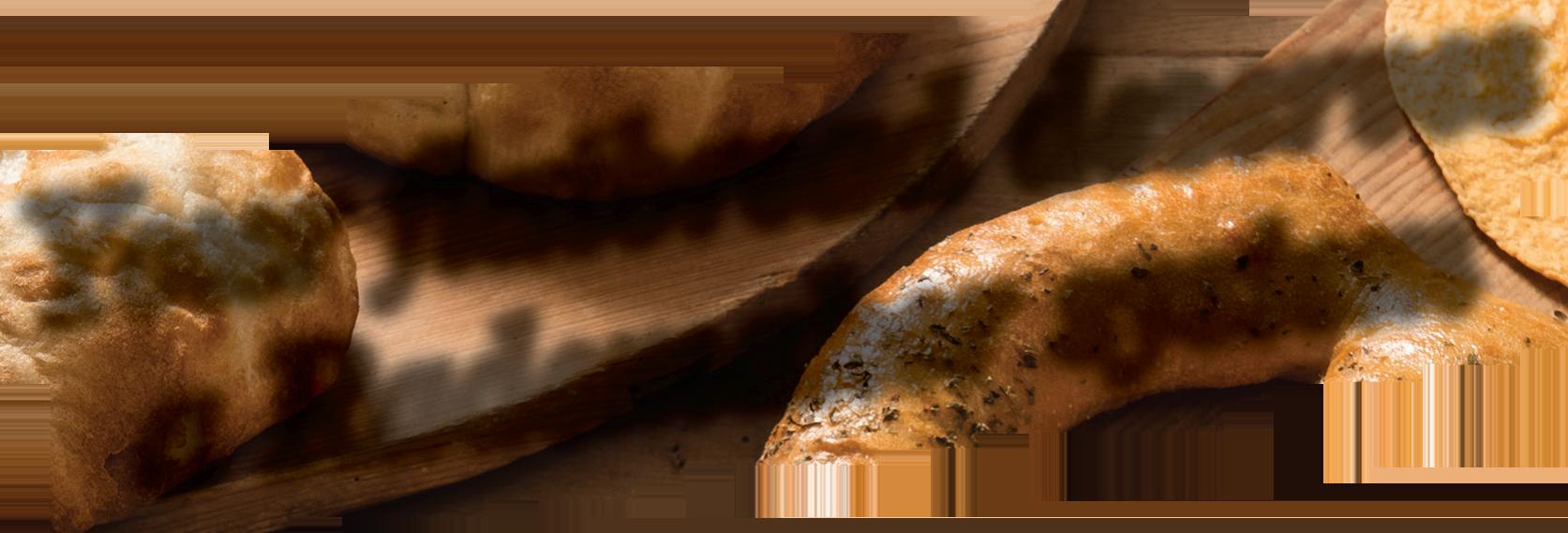
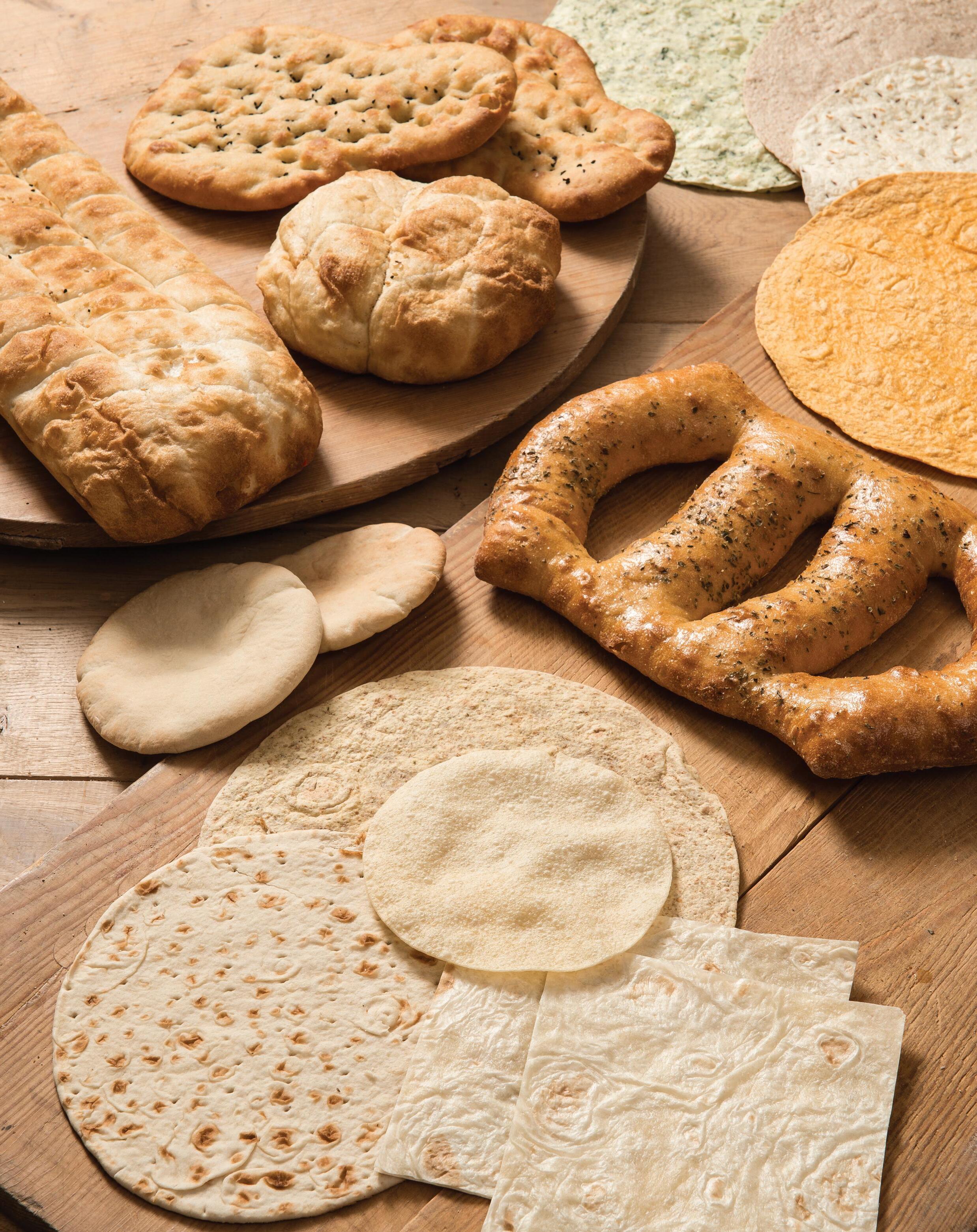

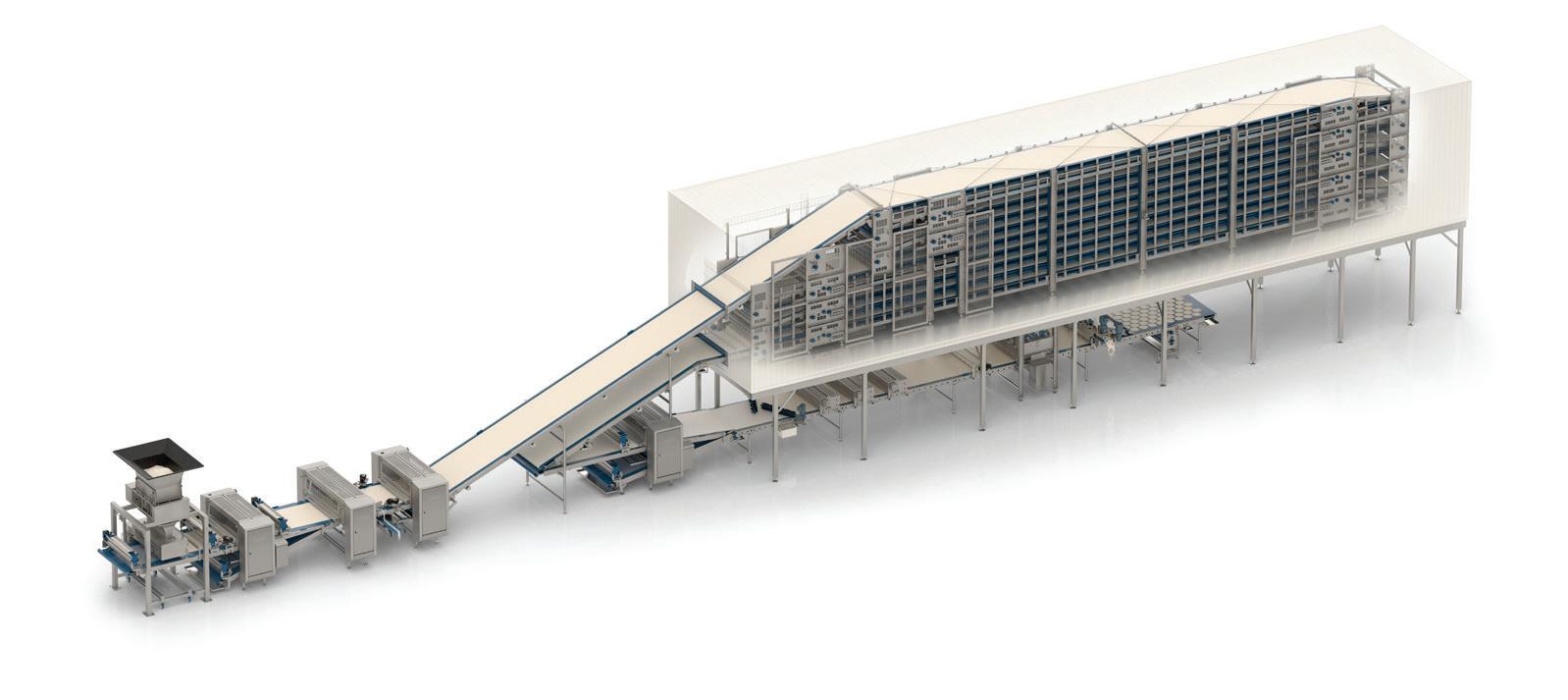

be sharp and in tune. For Bediako, the iron was heating up, and it was time to strike.
In 2024, a building became available in Columbus, originally designed for food manufacturing and equipped with an existing internal freezer, space for a high-speed bun line and capacity for additional lines. The vision was coming into focus.
“We realized we couldn’t wait for all the business to be booked before we built this next phase,” Bediako said. “If we did, we’d end up missing the opportunities when they came. So, we strategized. We assessed. We planned. We looked at where we wanted to be and what our customers’ needs were, and we decided we were ready to take some degree of risk.”
They sat with a team of 10 bankers to share the New Horizons vision and strategy for the future, and the result was the capital needed to bring both Columbus facilities to fruition. A year later, Coalescence and Graffiti merged into one operation to become New Horizons Food Solutions. With full blending capabilities, the opportunities increased exponentially, whether blending for its own bakeries or supporting customers, ingredient suppliers or even other bakers. And with the ingredient operation streamlined, the Columbus bakery is now running one of the fastest bun lines in the McDonald’s network.
“The business we’ve created from these investments has put us in an enviable financial position,” said Kurt Loeffler, New Horizons’ CFO. “The work has just begun, but the possibilities of where we go from here are endless.”
Not only will the new bakery allow New Horizons to increase its bun capacity by about 55 million dozen per year, but it will also allow the company to serve a customer base in a 250-mile radius, reaching almost as far as Washington, DC.
But the Columbus operations aren’t limited to buns and ingredient blends. The team originally planned to install an English muffin line after the bun line, but opportunity knocked from a non-McDonald’s English muffin customer on the Genesis side of the business.
“Opportunities have a way of presenting themselves,” Porter said. “We had the privilege to sit down with one of our largest customers, and we were awarded pancake business, not because of what we could do for them, but because of what we have done for the past 19 years.”
These types of opportunities come from a commitment to quality that often begins with New Horizons’ R&D team, led by Matt Bowers, director of R&D, who has been with the company for more than 34 years.

After monthsof thoughtful considerationand creative effort, we are pleased to introduce our refreshed company logoaccompanied by our newwebsite!
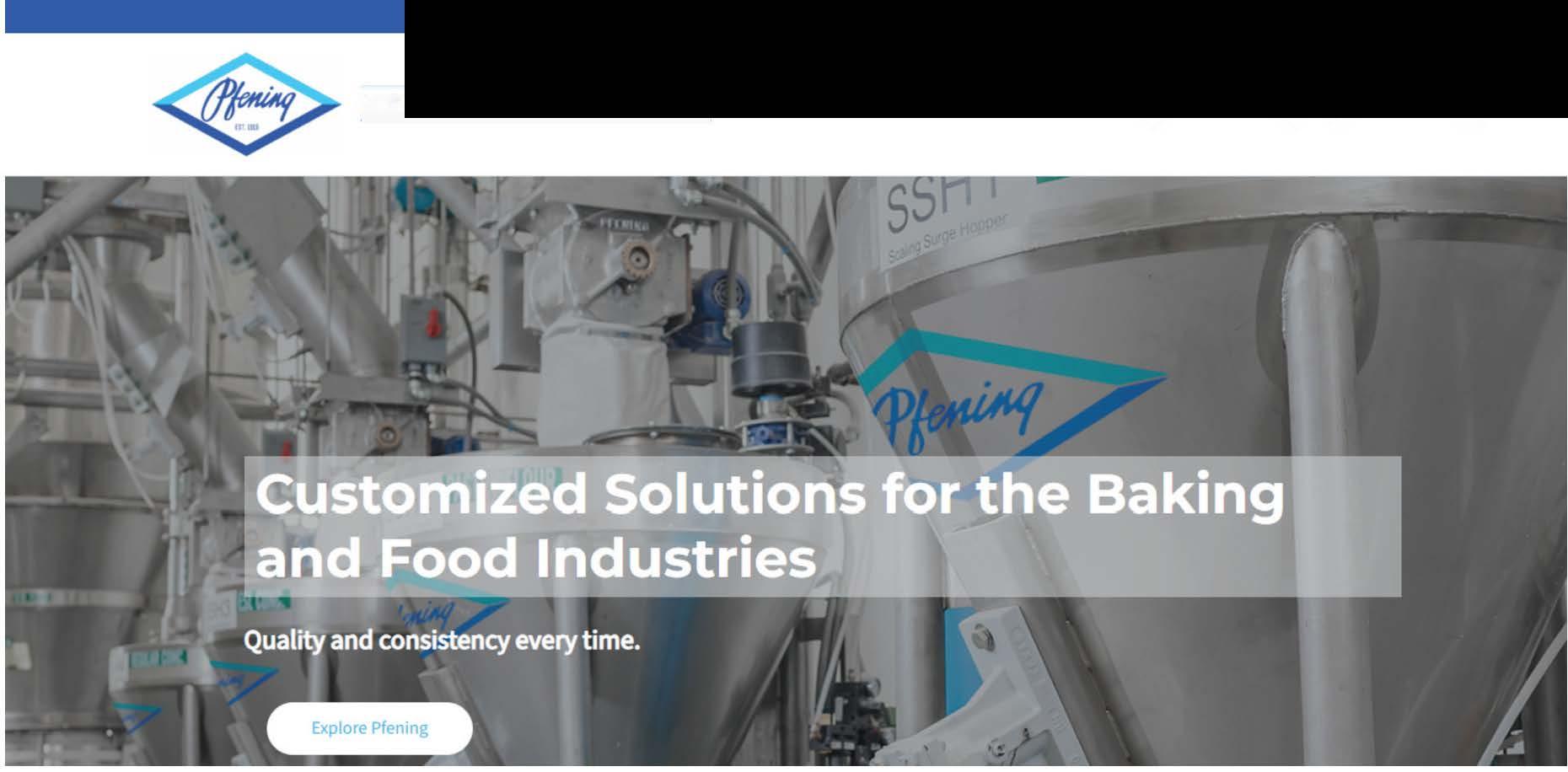
Our refreshed logo represents our commitment to:
✓ Innovation, growth, and evolving identity
✓ Staying current and relevant in a rapidly changing market
Our new website was designed with your convenience inmindandis:
More organized and streamlined
User-friendly experience that enables you to locate the information you need quickly.



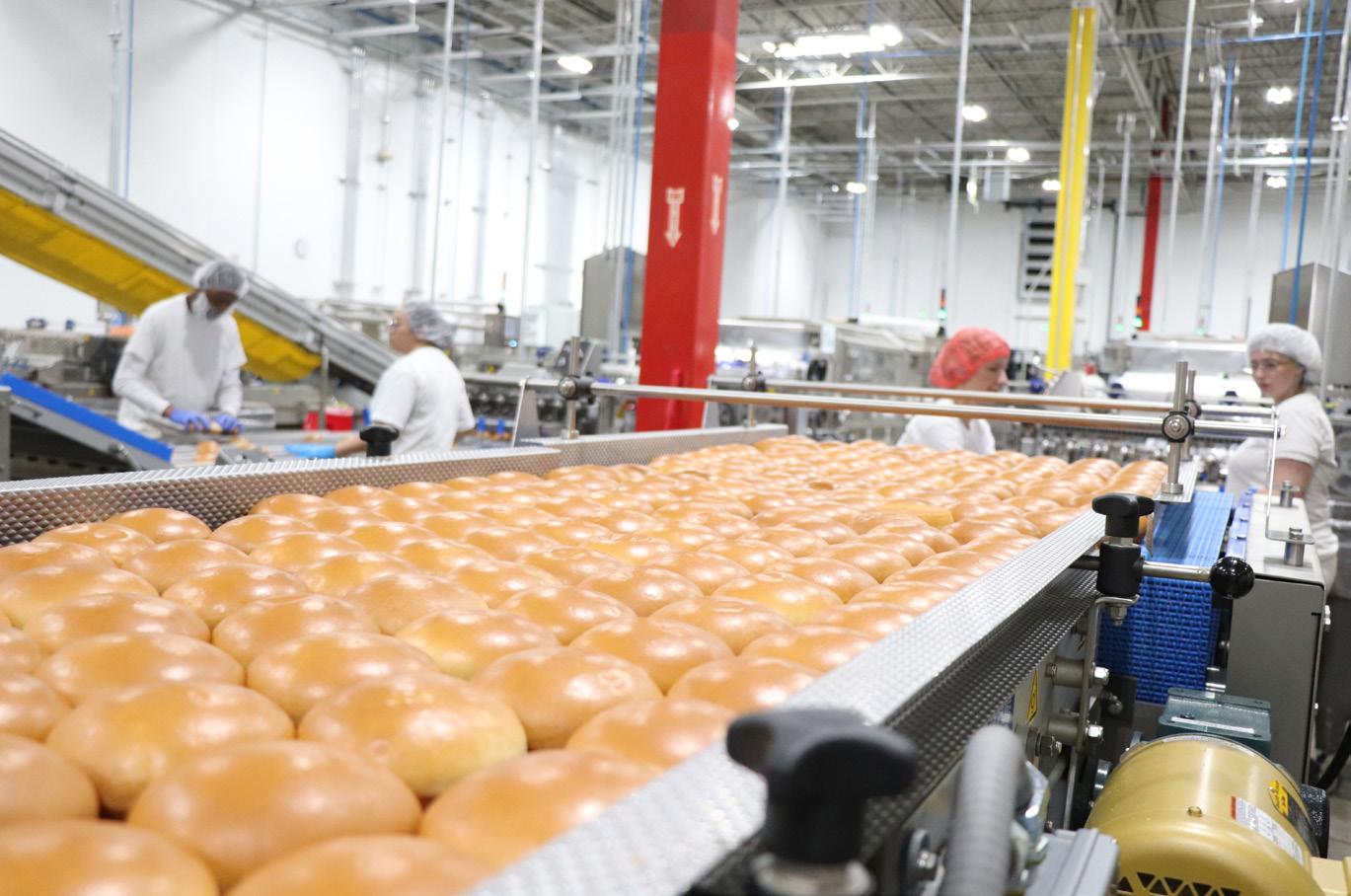
“We pride ourselves on the fact that we don’t bake in a lab,” Bowers said. “Our R&D team is beyond brilliant, and they focus on doing samples on the line, especially when it comes to clean- l abel and high-protein products. With this strategy, we can demonstrate how we make these products day in and day out.”
With the pancake line starting up this fall, the Food Solutions facility will feed that business by blending its pancake mix, allowing New Horizons to leverage buying power for sugar and other ingredients.
What’s more, the vertical integration makes growth more tangible than ever, especially when the pancake line alone will have the capacity to produce 30,000 full-size pancakes or 72,000 minis an hour. It also provides opportunities for further expansion, should the business call for it.
“We’ve taken risks, but when we get new business opportunities, that’s how we can pay for it,” Porter said.
“What one of our other bakeries can produce in six days, we can do in four days here. We’re also using less energy and less gas, even though there’s more tonnage going through.”
Mike Porter | president and COO | New Horizons Baking Co.
As New Horizons expands bakery capabilities with a new pancake line, it’s also focused on wet and dry ingredient blending. In 2024, the company rebranded its ingredient operation as New Horizons Food Solutions, housed in a 120,000-square-foot facility in Columbus, OH.
The operation blends products such as barbecue sauce, wing sauce and smoothies, as well as salt and pepper packets, drink powders, cornmeal, pancake mixes and nutritional packs.
Dry ingredients are combined in 100-cubic-meter blending tanks. For liquid blends, two kettles heat and mix before packaging and placing in a water bath that brings the temperature up or down, depending on specifications.
As New Horizons Food Solutions grows, so do opportunities for the more than 700 workers in the New Horizons network (about 53 of which work in Food Solutions).
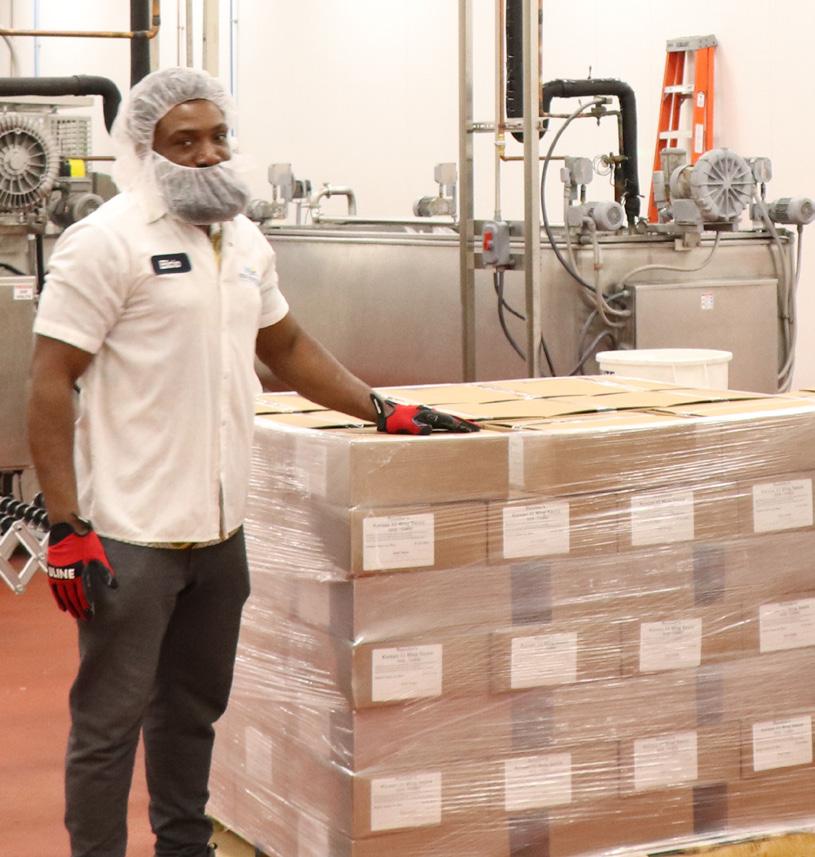
A unique processand blend of pre-soak..,el andpre-cook..,elgrains andseeds! Your sandwich just got healthier.
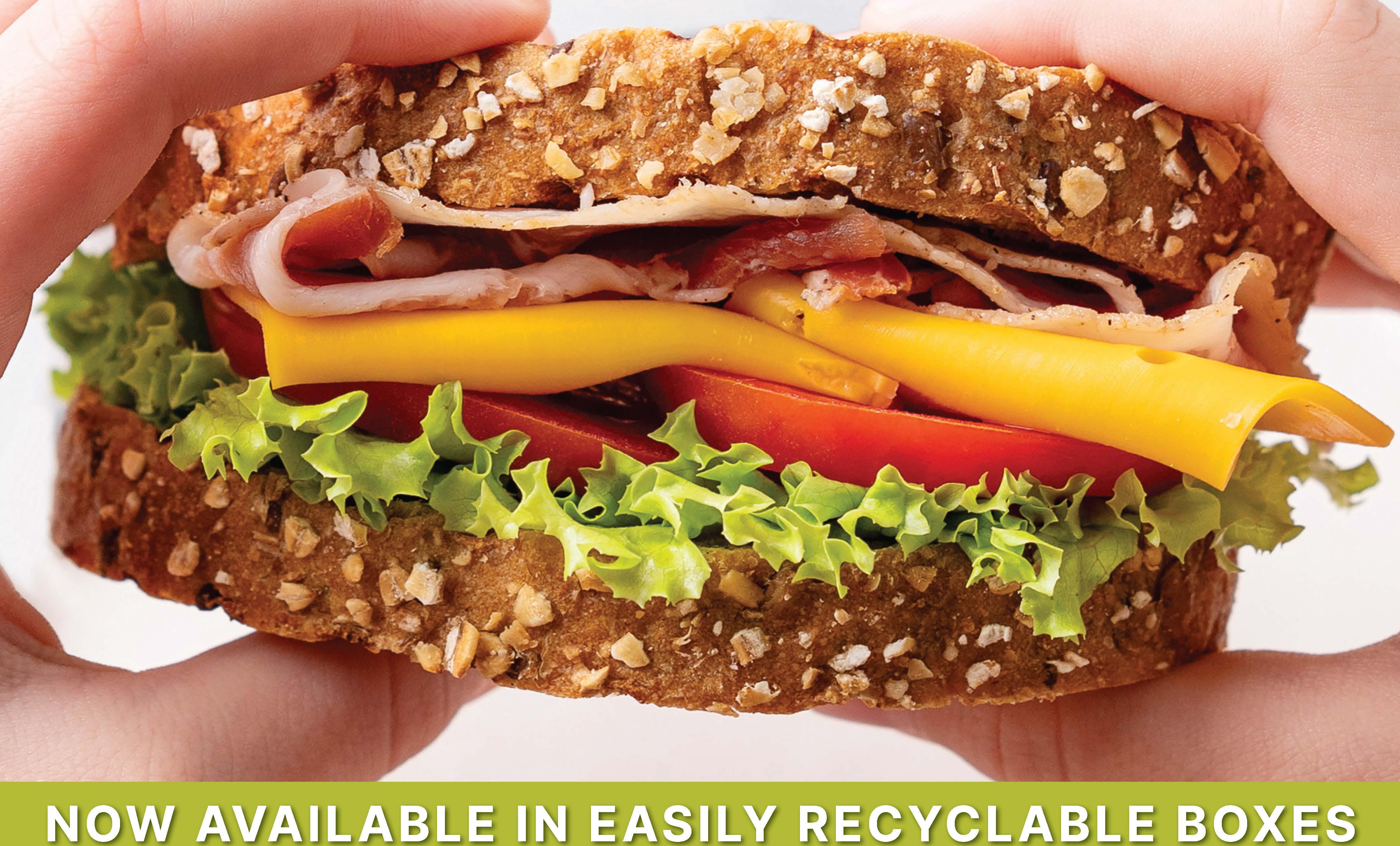


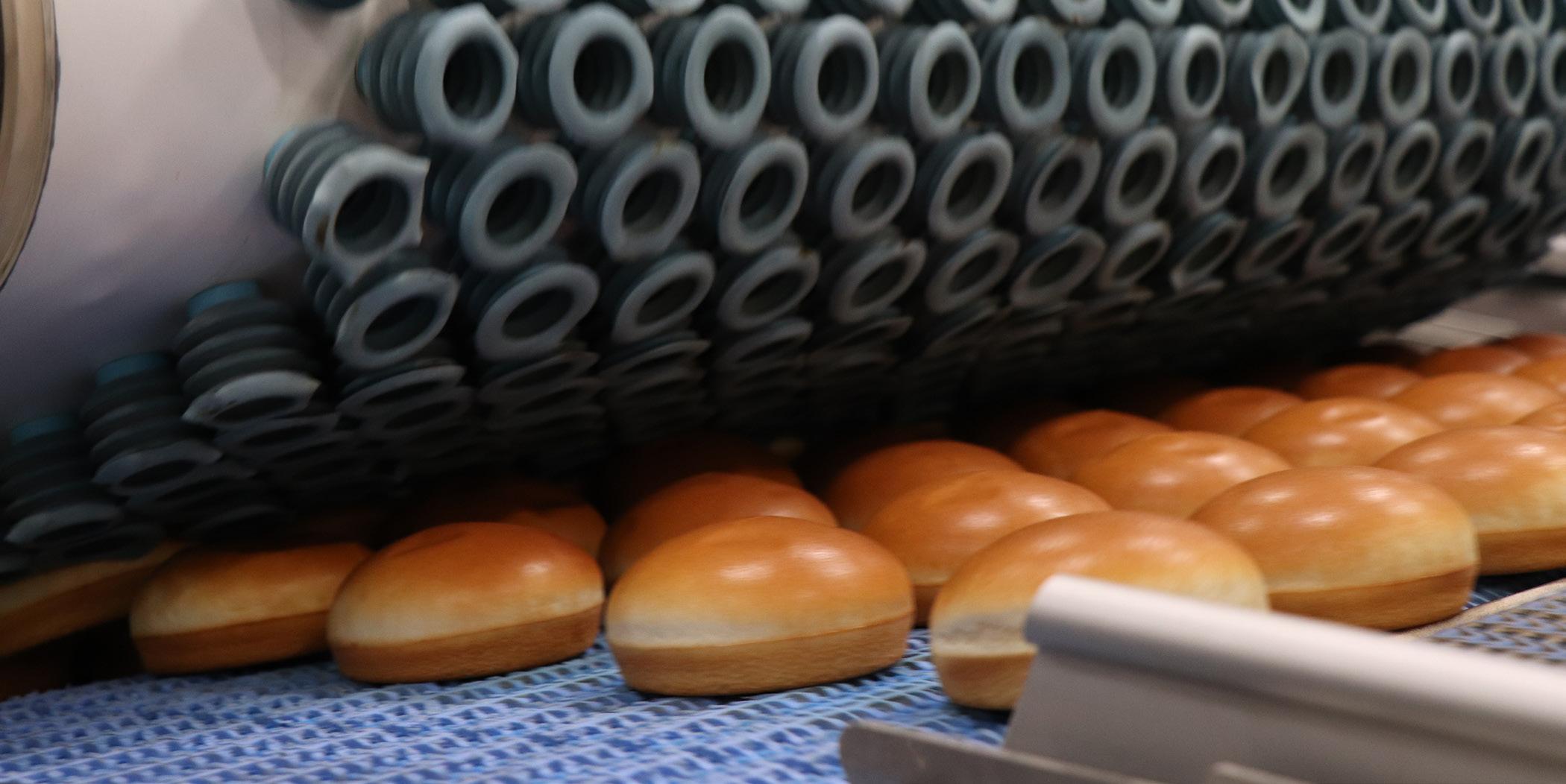
“That’s why the pancake line and the business it created have been such a blessing for us. Trina’s taking the question of, ‘How big do you want to be’ even deeper. We’re thinking inward and reminding ourselves that we have to be better than we were yesterday. When we are, the sky’s the limit.”
With new infrastructure in place, dreams are becoming reality in nearly every aspect of the business.
“Mike and I did a lot of ‘blue sky’ thinking,” Bediako said. “Now that the ingredient business is underway, we’re bringing the vision to fruition with the bun and pancake lines. It’s a beautiful thing.”
With the bakery located near the rail lines, one of the first orders of business was investing in silos, super sacks and ingredient handling systems that could receive bulk ingredients and streamline the entire process. The team chose a Fred D. Pfening Co. system that simplified a complex process into just a few steps.
“We wanted simplicity,” Porter said. “This system is three steps, and we have easy access to every one of our ingredients, including minors, and can dose to the smallest fraction to each of the mixers.”
From mixing through wrapping, the bakery relied on AMF Bakery Systems as its supplier of choice, not only based on a longstanding relationship but also for AMF’s project management proficiency on a line capable of producing 8,000 dozen buns an hour.
“We worked with one AMF project manager who could oversee everything,” Porter said. “Having one point of contact for a bun line project of this magnitude was critical.”

WATCH NOW:
Mike Porter explains the benefit of working with one project manager to oversee such a big installation.
Running trays that hold 60 items at a time, the bun operation is composed of two makeup lines that feed one proofer, oven and cooler, and three packaging lines. The capacity is game-changing, not only in terms of output but also regarding workflow, sustainability and other factors.
“What one of our other bakeries can produce in six days, we can do in four days here,” Porter said. “We’re also using less energy
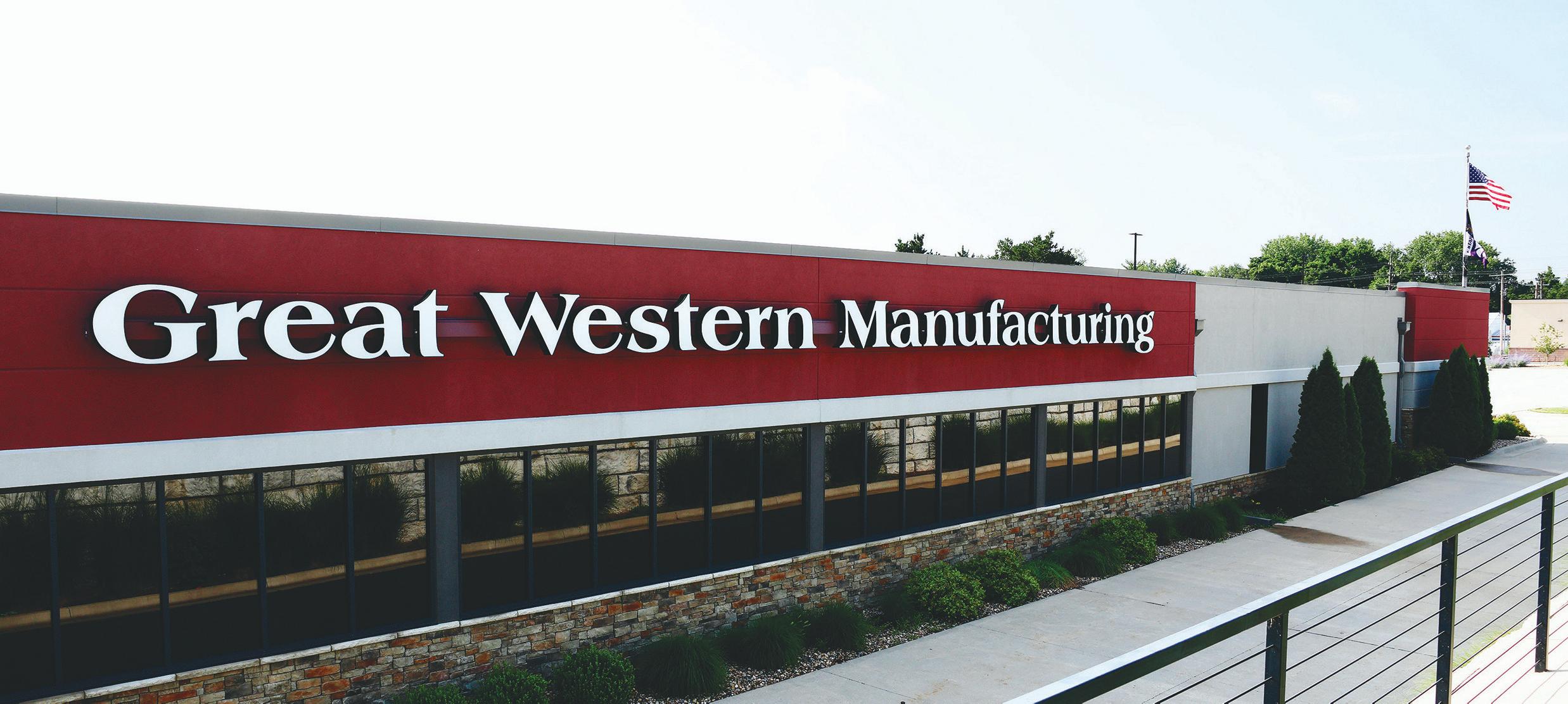









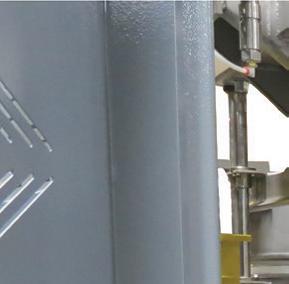

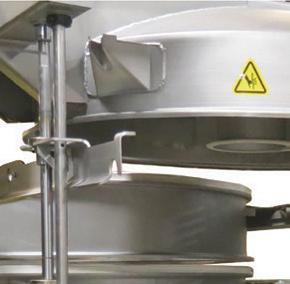
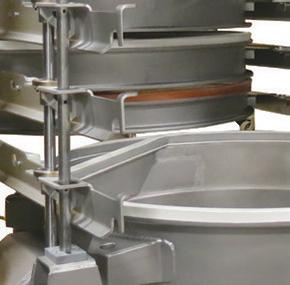


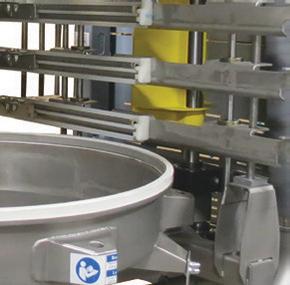







and less gas, even though there’s more tonnage going through.”
Ultimately, the entire system allows roughly 600 more buns per minute to go out the door, all with the same headcount as any other bakery in the network. In this facility, 90% of that headcount is stationed in the packaging area, and automation in places like the oven area reduces the need for people in those hot spots. In the uncomfortably cold spots like the freezer, where pallets wait for pickup from the distribution centers, robotic skids ensure they move first-in, first-out onto the trucks.
Taking a risk in business can be unnerving, especially when more than 700 teammates and their families are counting on the risk to pay off. Ultimately, that’s why the new bun line’s throughput is so critical. The speed can generate revenue, but perhaps more importantly, it also supports the company’s alternative work schedule: When employees fulfill three 12-hour shifts in their work week, they are paid for 40 hours, allowing for more flexibility and better work-life balance.
“When we designed this bakery, we wanted our customers and our team members to experience a facility where everything we put in is from a safety perspective and a quality perspective,” Porter said. “We wanted to create an environment where people want to be.”
The pancake line was also designed to stay on par with those expectations. With Rademaker’s Doug Hale, director of systems integration for Rademaker USA, providing system integration, commissioning is expected Sept. 1.
“Doug Hale and his group have been second to none,” Porter said. “I’ve had my team watch how they’re leading this
project so they can gain key learnings on system integration and startup. It can really help us improve our own processes down the line as well.”

Trina Bediako describes how the new pancake line will support overall growth.
It’s a point Porter took to heart when the team first saw the facility and its potential.
“We were in the plant, and there was nothing here,” he recalled. “It was completely empty. We just came together in the corner and tried to envision what the lines would look like. I went around and asked everyone on the team if they were committed to this. When we all agreed we were, we prayed over it. And we’ve been moving forward ever since.”
It’s all intertwined, capital investments and product development. But, Bediako testifies, the most important element is in relationships. Without those, the lines would simply be machines, and the building would be little more than a shell.
“The relationships are critical,” Bediako said. “My father established this business 30 years ago on a strong foundation of relationships with many stakeholders. When he handed me the baton, I had to maintain those relationships. That’s how we keep the New Horizons name a good one. It’s how we remain known as good partners who operate with integrity, keep our word and make a quality product.”
That’s how this company works: together. New Horizons is family-owned, but those ties run deeper than the Brown and Bediako names.
Whether it’s Bediako’s assistant Kelly Kromer; Jealousy Matson, who writes the company newsletter; Kevin Stevens, senior director of operational excellence; or any associate on any of the five factory floors, everyone is considered family. For the core leadership team — Brown, Bediako, Porter and Loeffler — family is who they will always see.
“Trina’s like a sister and Mike’s like a brother to me,” Loeffler said. “This

“Relationships are critical … It’s how we remain known as good partners who operate with integrity, keep our word and make a quality product.”
Trina Bediako | CEO | New Horizons Baking Co.



• Inline vacuum depanner.
• Hartmannslicerandbagger.
• SR Packbasket loader.
• Rexfabpanstacker-unstacker: electric, ultra-quiet, gentle on pans and operators
•
•
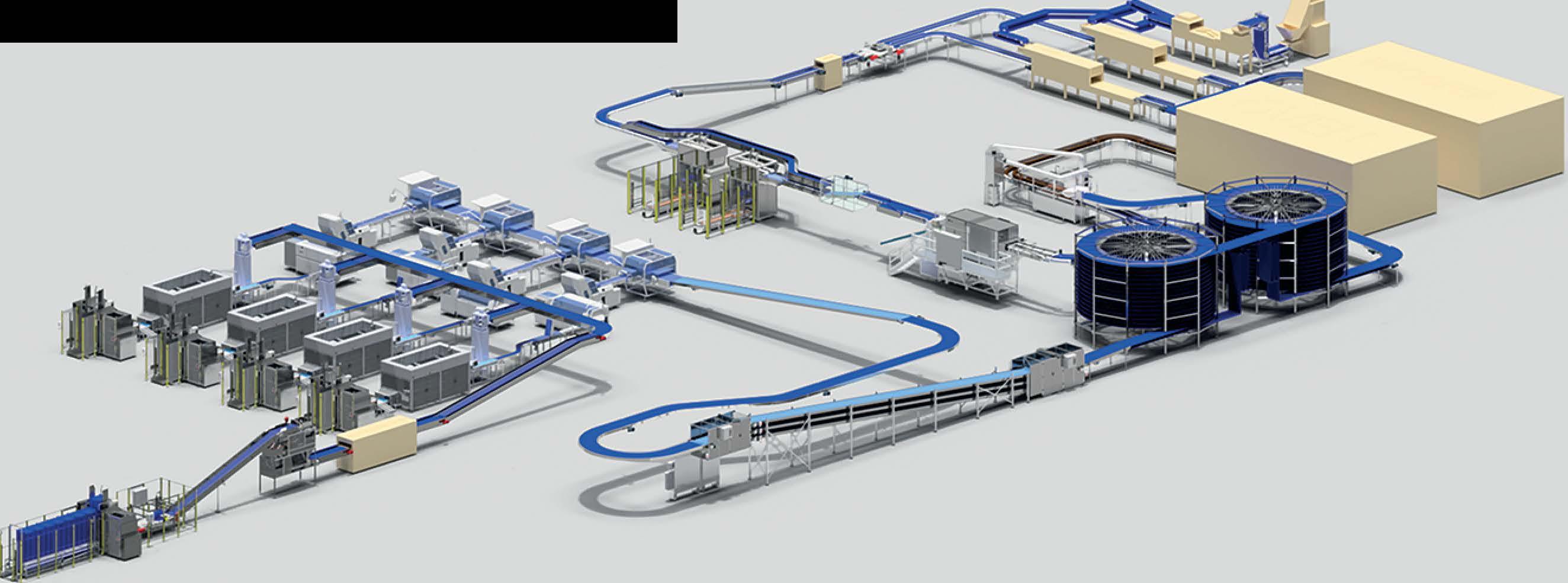
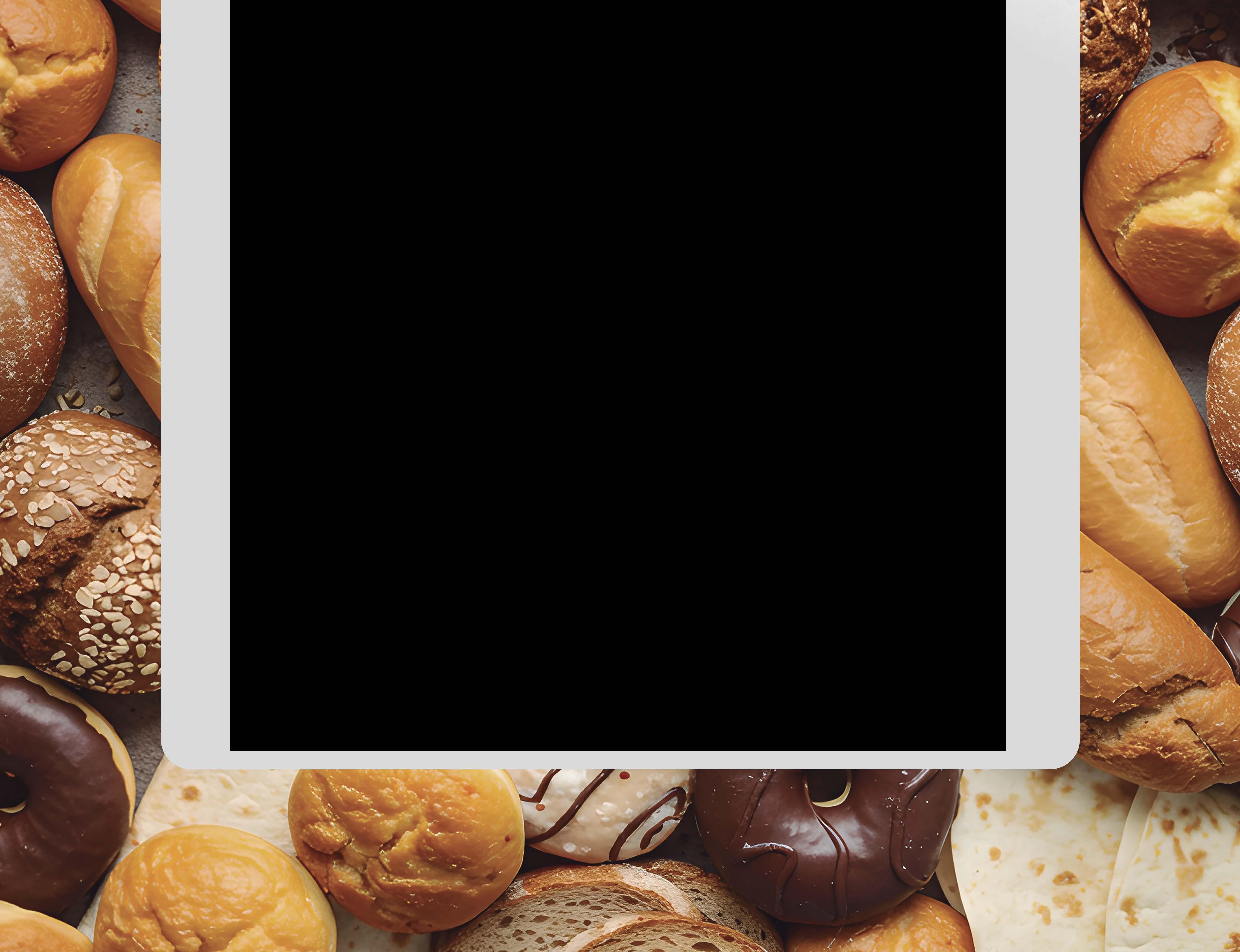


company truly is like a tight-knit family, and it’s an honor for me to serve as the CFO.”
While New Horizons is a multi-generational family business — the second generation includes not only Bediako, but also her husband Gabe, and her brother, sister, and sister-in-law, as well as her daughter and son in the third generation — the company holds more family trees than the one who owns it. Porter, who has been with New Horizons since he was 19, now has a second generation at the company, as well.
“I’ve had two mentors in my life: Russ Bundy and Tim Brown,” Porter said. “I’ve learned so much from them both, and one big lesson Tim has taught me is that all you have is your name. I’m teaching that to my kids now.”
Today, the name New Horizons is the quintessential moniker.
“With all Trina, Mike and the team have accomplished, it’s opened up a new horizon,” Brown said. “We’re starting to understand how companies can mushroom, because we’re seeing that now with capabilities we never even realized we had.”
The company began with one product, and today, New Horizons — with the leadership and executive team representing 200 collective years of baking experience — has business in 65 countries.
“We built the infrastructure, giving the sales team unlimited options to grow the business,” Porter said. “Now, we could be one phone call away from anything. If we have a pan and a product, we can make it. We really are feeding the world, and as long as we keep moving forward, every day is a new horizon.” CB
Earlier this year, New Horizons opened its fourth baking facility, located in Columbus, OH. The 155,000-squarefoot facility houses one of the fastest bun operations in the baking industry and will soon commission the company’s first pancake line. Below is a list of supplier innovations that can be found on the bakery floor.
Air Management glycol system, heat recovery
AMF Bakery Systems mixing, makeup, proofer, oven, packaging
Campbell Systems dust collection
Capway depanner
Fred D. Pfening Co. ingredient handling and silos
Newsmith pan cleaner
Spraying Systems glaze spraying
CPM griddle
FPS freezer
Pattyn case packing
Rademaker system integration
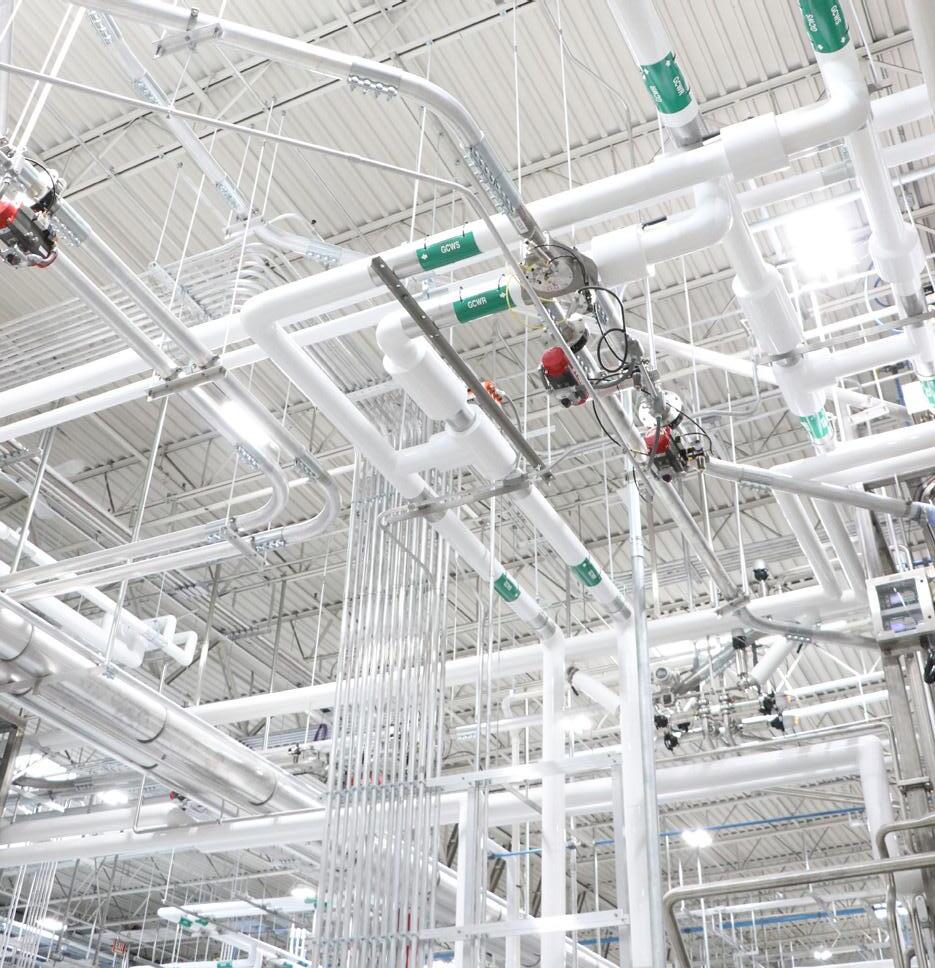

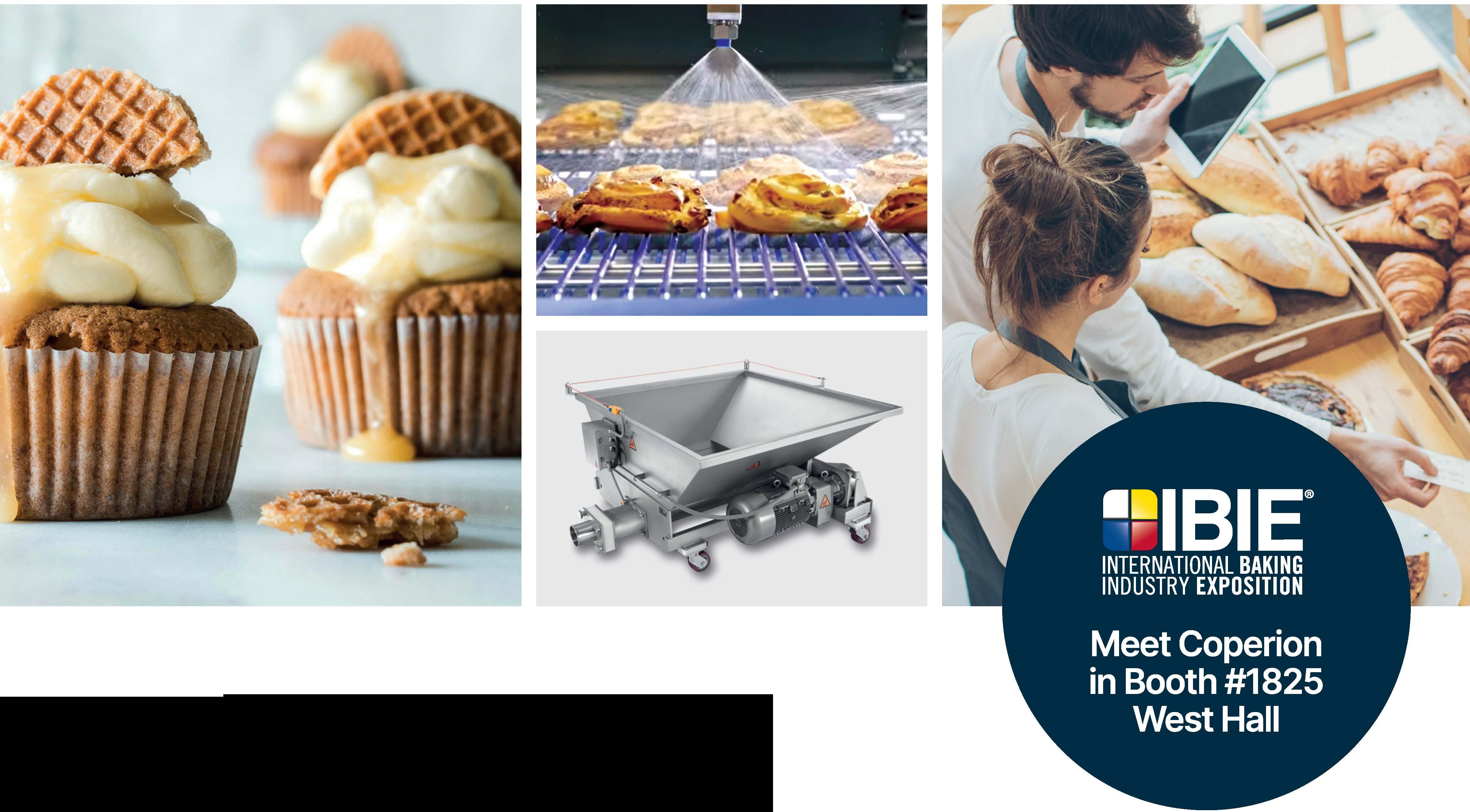

Coperion unites the leading technology brands in food manufacturing to deliver innovative system solutions for your bakery.
Technology for: Systems & Ingredient Automation
Pre-Dough, Mixing, Forming & Dividing
Depositing, Decorating & Cutting

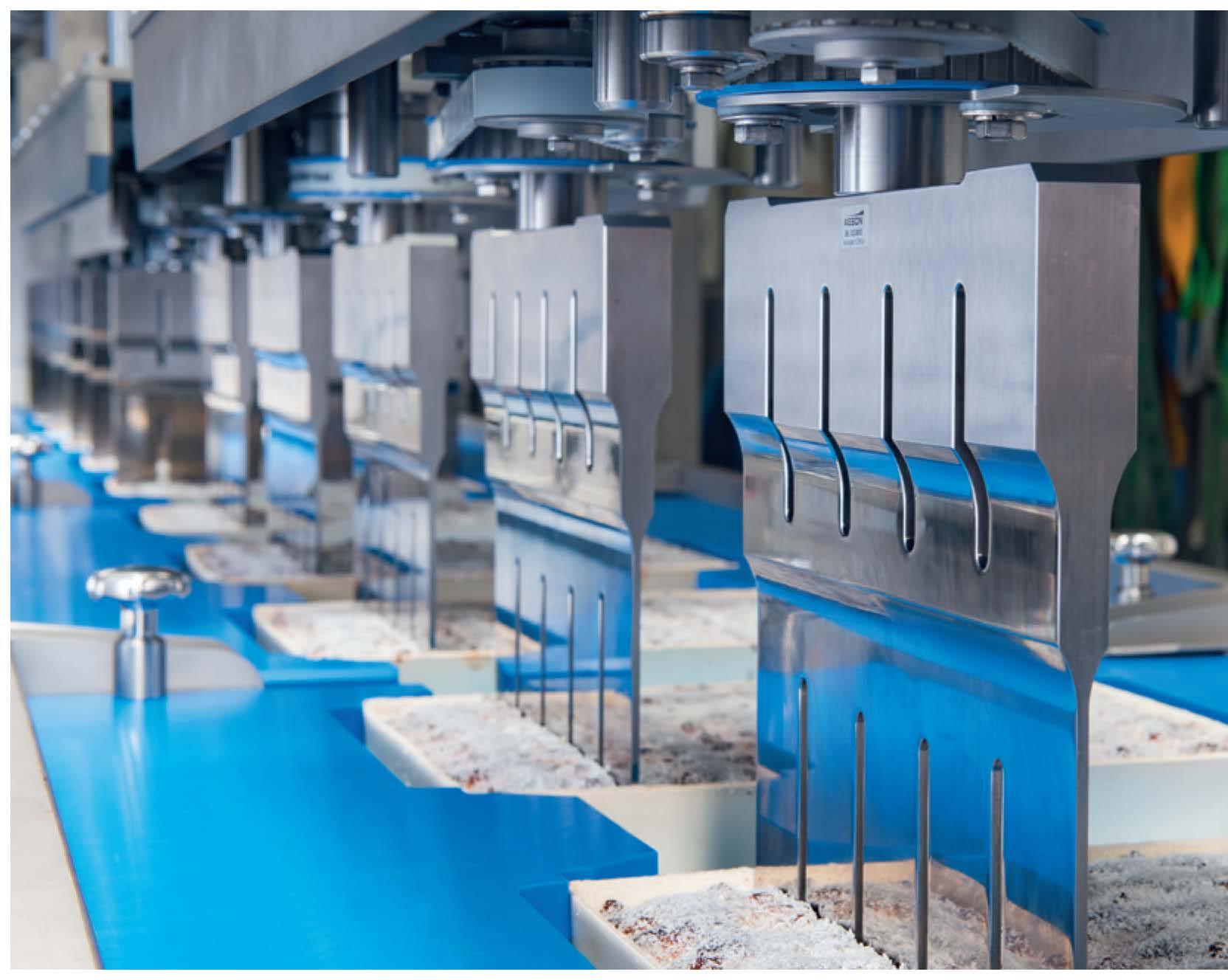
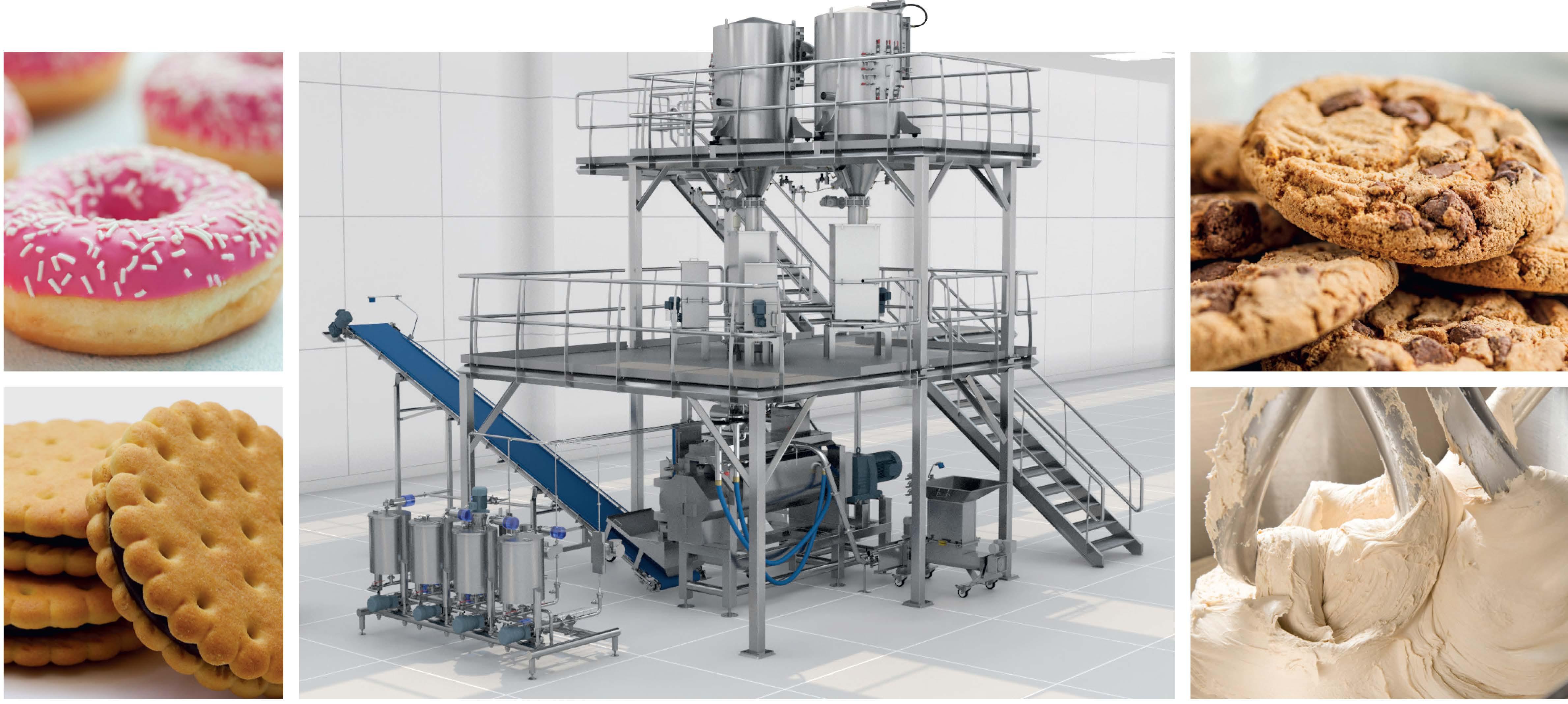


� baker perkins b bakon rcoperion '-,,. l<-TRON
@ peerless f shaffer � shick esteve
.diosna .•• :::: kemutec l!JJ unifiller

Scan the QR code to find out more


As a second-generation baker, Alexander Salameh, Bakery de France CEO, keeps the “why” at the heart of innovation.
BY JOANIE SPENCER
Every career path is forged by choices. For Alexander Salameh, CEO of Rockville, MD-based Bakery de France, baking may be in his DNA, but the choice to be part of his family’s bakery business came straight from his heart.
As the youngest of four children born to John and Nadine Salameh, who founded Bakery de France in 1986, Salameh didn’t just see bread as part of the family business. He saw it as part of the family.
“The business was never, ‘This is what my parents do [for a living],’” Salameh said. “It was, ‘This is what my family is about.’ My parents were always lovers of good bread, and growing up, bread was part of every meal. It truly was a family affair, something we all lived and breathed.”
While the bakery didn’t mature at a time that provided career opportunities for his siblings, time was on Salameh’s side in that the organization had developed at the point when he was ready to choose his path … after a lifetime of falling in love with the business of bread making.
“Growing up, any time I wasn’t in school or studying, I was at the bakery,” Salameh

recalled. “I developed a real bond with the company and the team and with the products we make. I always seemed to run toward it.”
After graduating from The Catholic University of America with a degree in economics, he dove into the bakery field. Working for notable French baker Eric Kayser in Paris, he focused on the artisan and retail side of the industry and learning not only the French style of baking but also marketing and storefront operations.
Salameh’s time in Paris was spent learning a vastly different type of baking and business from the world of artisan at scale. It not only solidified his love for the industry and the family business, but it also opened his eyes — and mind — to how he could contribute to it.
“I realized that what we were doing in terms of wholesale baking was something I really was passionate about,” he said. “The ability to take this artisan craft and scale it to mass consumer appeal was so special to me. If we could make these artisan products at a small scale and reach more American consumers without losing what makes it great, that was an awesome challenge.”
As a second-generation baker, Salameh took the helm when Bakery de France formed a strategic partnership with Ninove, Belgium-based La Lorraine Bakery Group, a family-owned company with milling and baking expertise in Europe, Turkey and the Middle East. While the partnership has not impacted the company operationally, it does expand opportunities for Bakery de France.
It also opens new doors for collaboration and innovation, two areas Salameh is passionate about.
“You have to preserve the fundamental nature of tradition while adapting to a changing world and modern demands.”
Alexander Salameh | CEO | Bakery de France
“This partnership makes both sides better at what we do,” he said. “We gain better tools and better metrics, and La Lorraine’s ability to scale has certainly helped us as we continue expanding.”
For Salameh, a wide scope of vision is the ultimate pathway to product innovation while maintaining the brand’s standards, especially for a product that fights for loyalty in an on-again-off-again consumer relationship.
“To innovate you have to be open-minded,” he said. “And I’m proud of how openminded my company is. We’re always open to new technology and new ways of doing things. We’re not bound by tradition; we’re motivated by it. The point is that you have to preserve the fundamental nature of tradition while adapting to a changing world and modern demands.”
Having served in marketing, operations and business development for Bakery de France, Salameh is well-versed in putting customers’ needs first to provide high-quality artisan bread at scale. That’s the standard he maintains for every aspect of the company.
“We have to focus on making the best possible product while also remaining customer-centric,” he said. “To accomplish that, marketing has a specific set of needs, as does business development. When we go to market with a product, we’re focused on what’s most important about it, and every department has to be on the same page.”
As CEO, Salameh’s main goal is staying true to Bakery de France’s mission of creating quality artisan bread. For him, collaboration is the key to achieving that, especially when different areas of the business come with varying objectives for achieving the same goal.
“At the end of the day, every department’s method might be different, but the goal is always the same: to make the best product and serve customers in the best possible way,” Salameh said. “It’s important for us to maintain that, even if there might be friction sometimes. After all, good friction makes polish.”
While evolving trends have sparked some successful niches in the market, Salameh remains intentionally focused on Bakery de France’s core product.
“The right way to make sourdough has not changed for a very long time,” he said. “As long as we stay true to that, we can continue improving on how we honor the time-tested way of making our bread.”
Focusing on product integrity — while producing at scale — has been a tenet of Salameh’s career in baking and also at the heart of his leadership.
The key, he said, is investing the time and effort to ensure alignment. It’s something that can never be taken for granted, and that’s a lesson he’s learned growing up in a family of bakers. In truth, that’s inherent in any family bakery.
While his parents are still involved with the company, Salameh takes pride in the family dynamic that exists for the business and the brand. Having worked with his parents at the bakery for decades, Salameh has put the respectful, open exchange of ideas into practice. It’s a manifestation of the need to balance modern innovation with time-honored tradition, and for Bakery de France, that’s the heart of its culture.
“I have to give my parents a lot of credit,” Salameh said. “They’ve always been open-minded people and people who empower. We’ve never been afraid to do things a little differently, and that’s been a big part of our success and who we are as a company. We’ve always been able to have open dialogue without ruffled feathers or bruised egos. I want to preserve that.”
Preserving it means building trust, starting on the bakery floor. Salameh carries on his parents’ foundation by empowering — and trusting — the people in key positions at the company. It’s a leadership style that prioritizes good ideas over hierarchy or sticking to how things have always been done.
As he thinks about advancing technology, he looks at how it can benefit not only the operation but also the people. Automation is

Scan for Videos, Brochures &
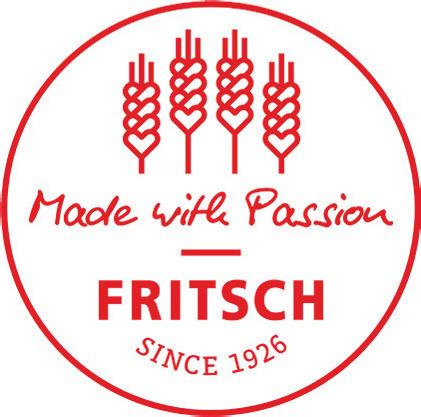
seen as a tool to empower the workforce by providing opportunities to learn new skills on the line or in other areas of the bakery.

Alexander Salameh explains how automation creates opportunities for the bakery’s workforce.
“Automation can increase capabilities in different ways,” Salameh said. “It can be an opportunity for a baker’s helper to become a line operator, or for a line operator to become a technician, or for a technician to become electromechanically certified.”
It’s about engaging with innovation that makes the people — and the product — better. In terms of artisan bread, that means incremental improvements over time.
Those improvements bring a level of sophistication that can only be understood in the finished product. That’s when automation puts the bread first, rather than creating an automated process to make bread that only looks artisanal.
Whether it’s automated production lines, robotics or state-of-the-art programming, Salameh doesn’t shy away from technology … as long as it supports the core of artisan integrity.
“All of these things can be done in a way that preserves the essence of what we do,” he said. “At the end of the day, we’re bakers. We want to improve efficiency and increase throughput without sacrificing the quality of the bread.”
That’s where Salameh’s operational experience comes into play. To him, time is an
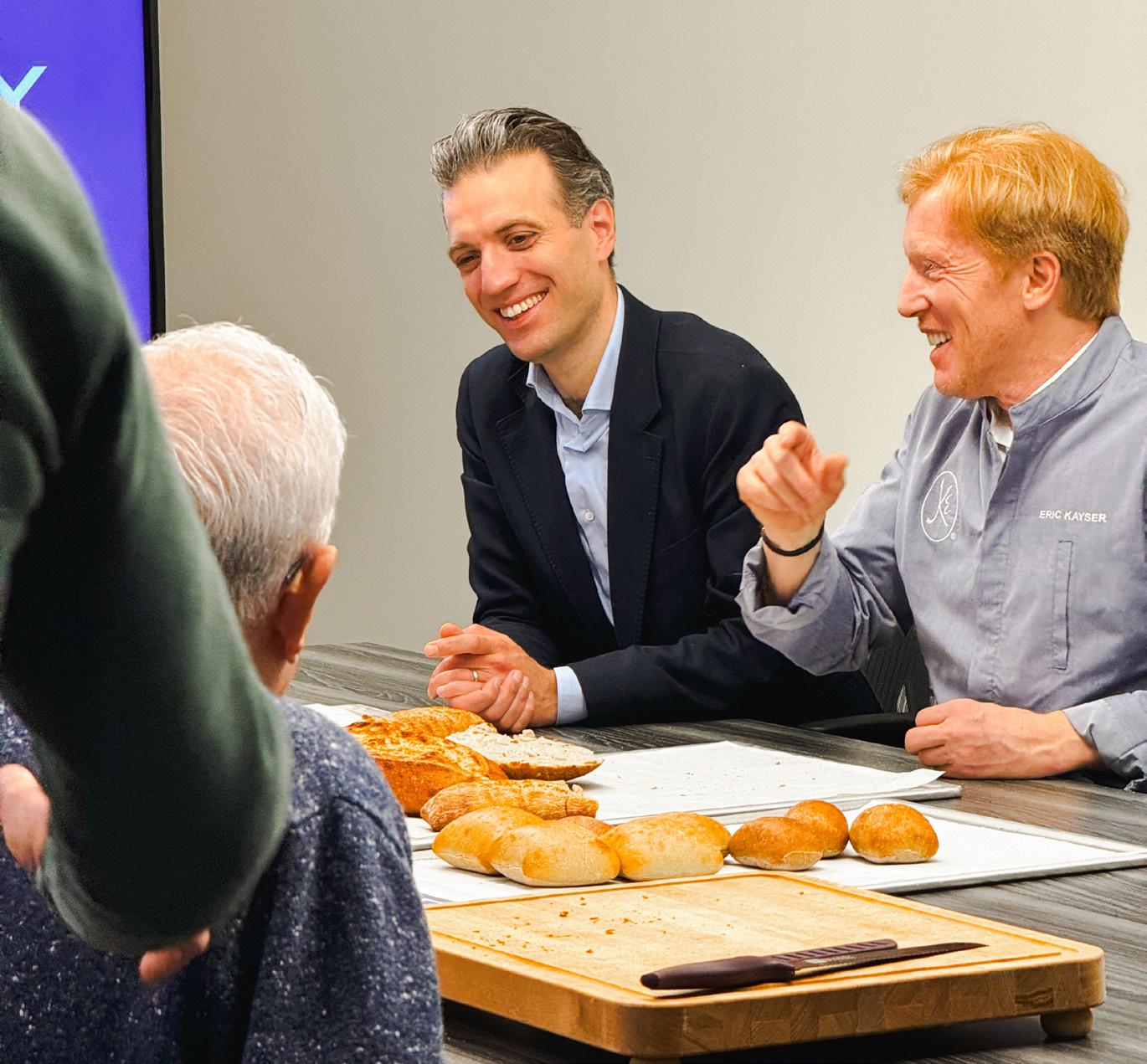
ingredient; it’s non-negotiable. Fermentation can’t be cut to run product faster, so creating efficiency requires intentionality.
“It’s possible to build an industrial, automated process and keep the requisite time in place,” he said. “What we won’t do is sacrifice quality for the sake of operational excellence. Quality is not a lever that can be pulled; we have to build the process around what the product needs to be and incorporate automation into it. We plan for the time we need and honor it without being at odds with the throughput.”
Ultimately, producing artisan at scale is a balancing act, creating a product that could be considered perfectly imperfect, while at the same time adhering to strict customer specifications. It’s a fine line that Salameh has spent his entire career carefully walking.
“When you can’t sacrifice quality for efficiency,” he said, “you learn how to produce the best quality, efficiently.”
In that regard, Salameh holds the line for living up to the reputation of true artisan bread that, while celebrating artistry through its variability, retains the same quality from generation to generation.
With a long runway still ahead of him, Salameh is building and maintaining a bridge between tradition and innovation.
“I want to always remember how we got here,” he said. “That doesn’t mean doing things the same way. It means the ‘why’ has to stay the same. I believe the ‘why’ drives what we do, not necessarily how we do it. I want us to stay open-minded about how we do things but always remember why we do it.” CB


Bringing industry-changing innovations to North American bakers for over 40 years
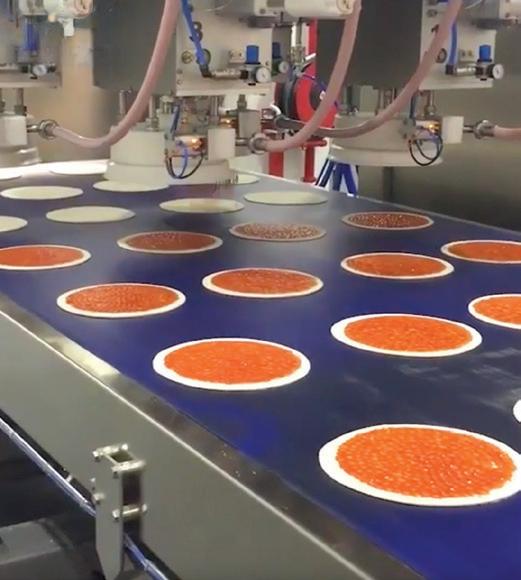
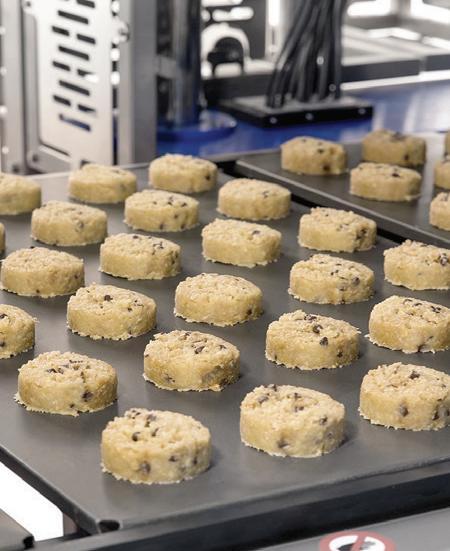

Some of the technologies Allied has introduced to our industry
Thermal Oil Oven technologytransforming the Artisan Bread sector
Carousel, Robot, and Continuous Systems to automate the mixing room
Large-scale, twin-tool, closed-bowl, self-scraping Planetary Mixing
Fully C.I.P. multi-piston batter depositors
Truly stress-free (no extrusion) large volume make-up lines for highly hydrated doughs
Revolutionary Vertical Dough Mixing technologies - beyond the spiral
High-speed injection equipment with an accuracy of +/- 0.25 grams

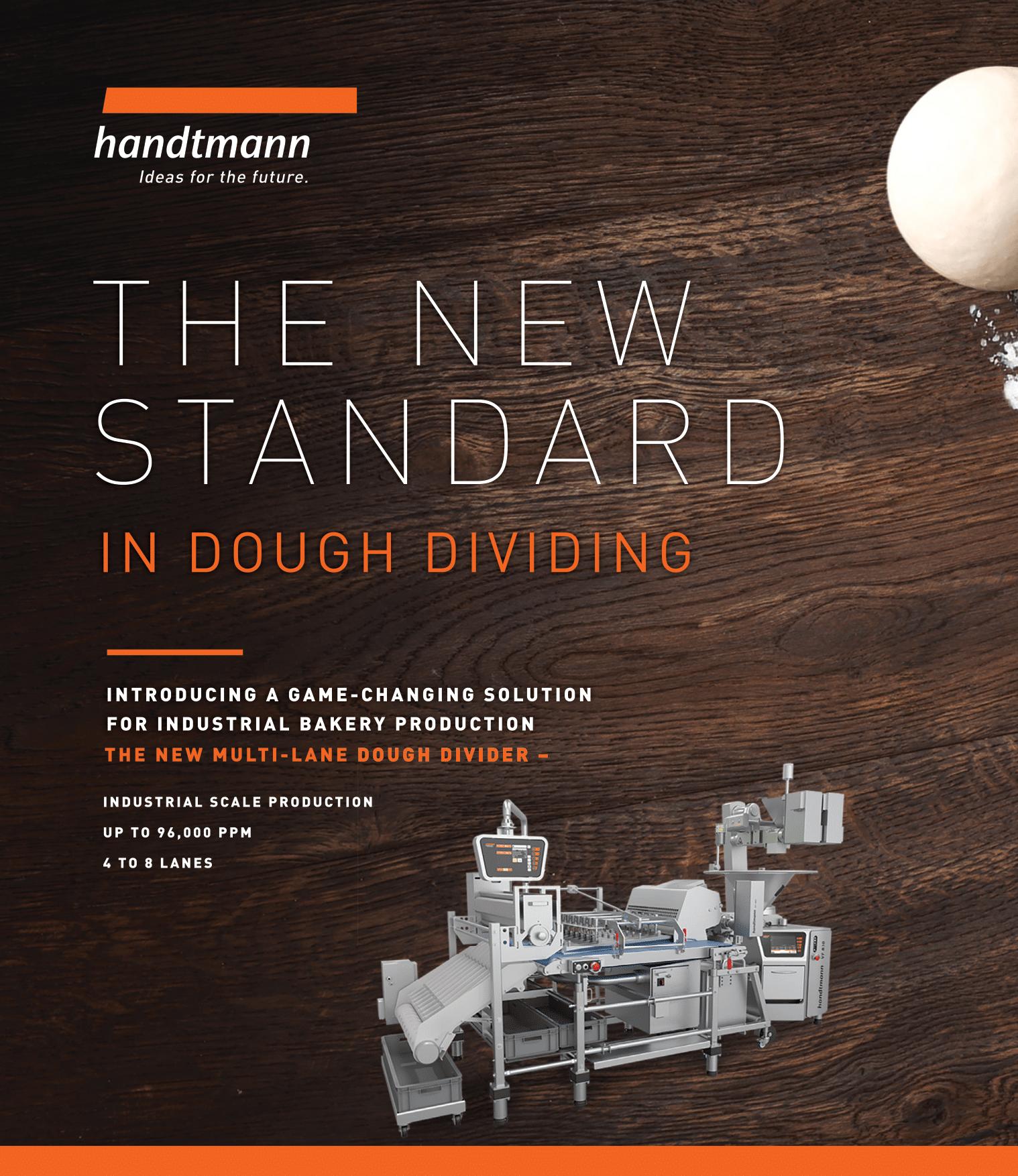
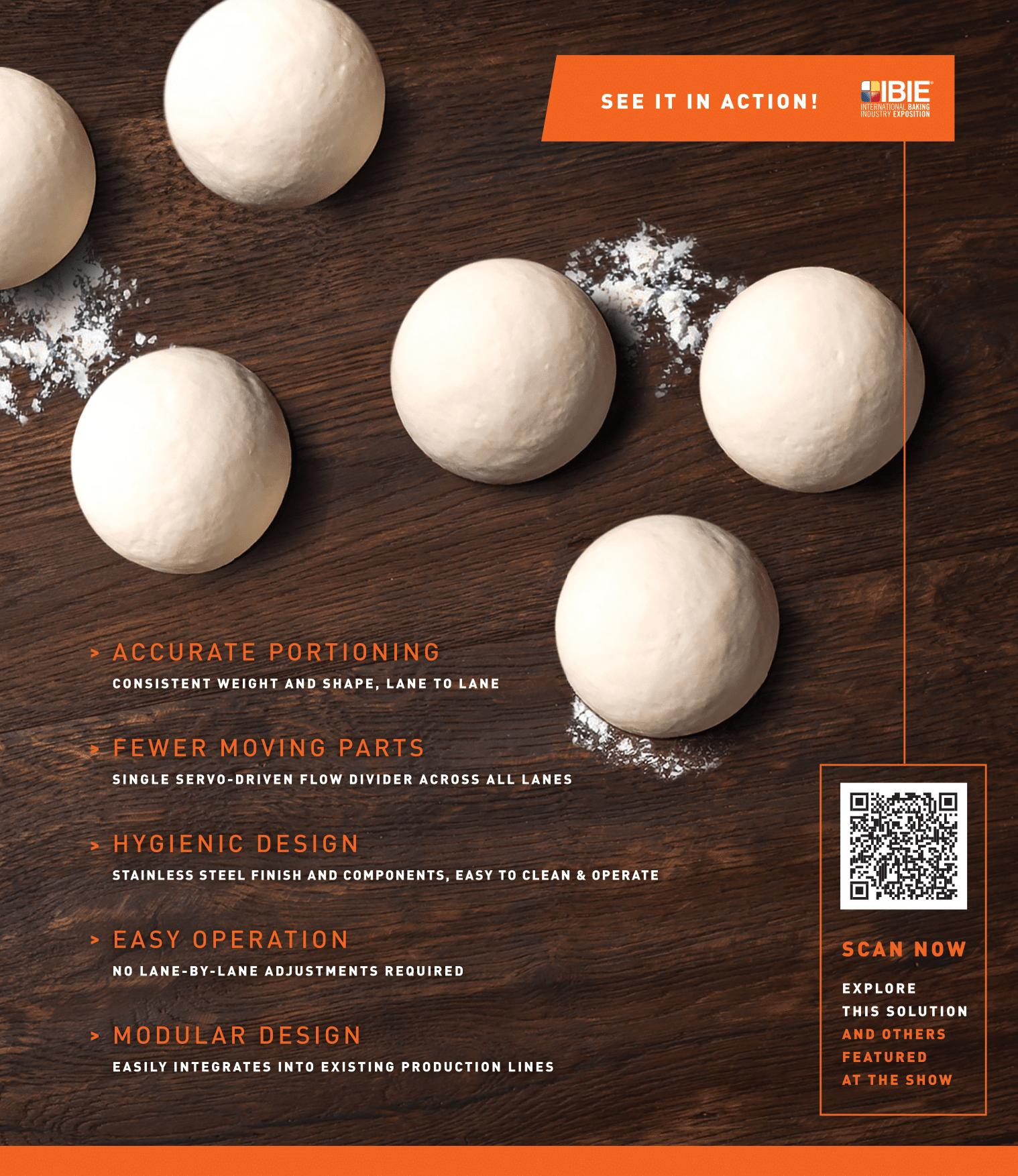

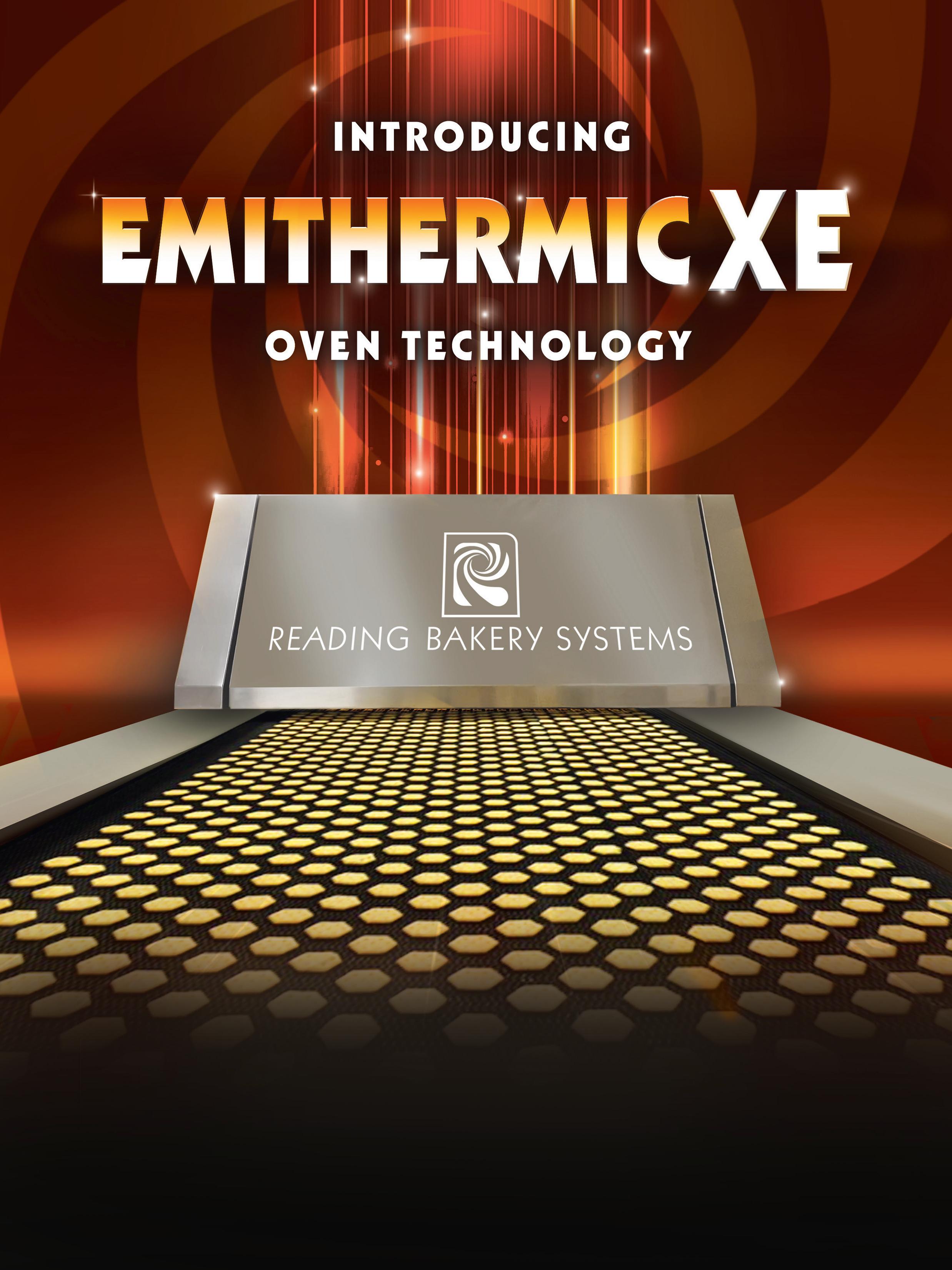

With flavors that pack a punch, OMG! Pretzels is on the cusp of a new era.
BY ANNIE HOLLON
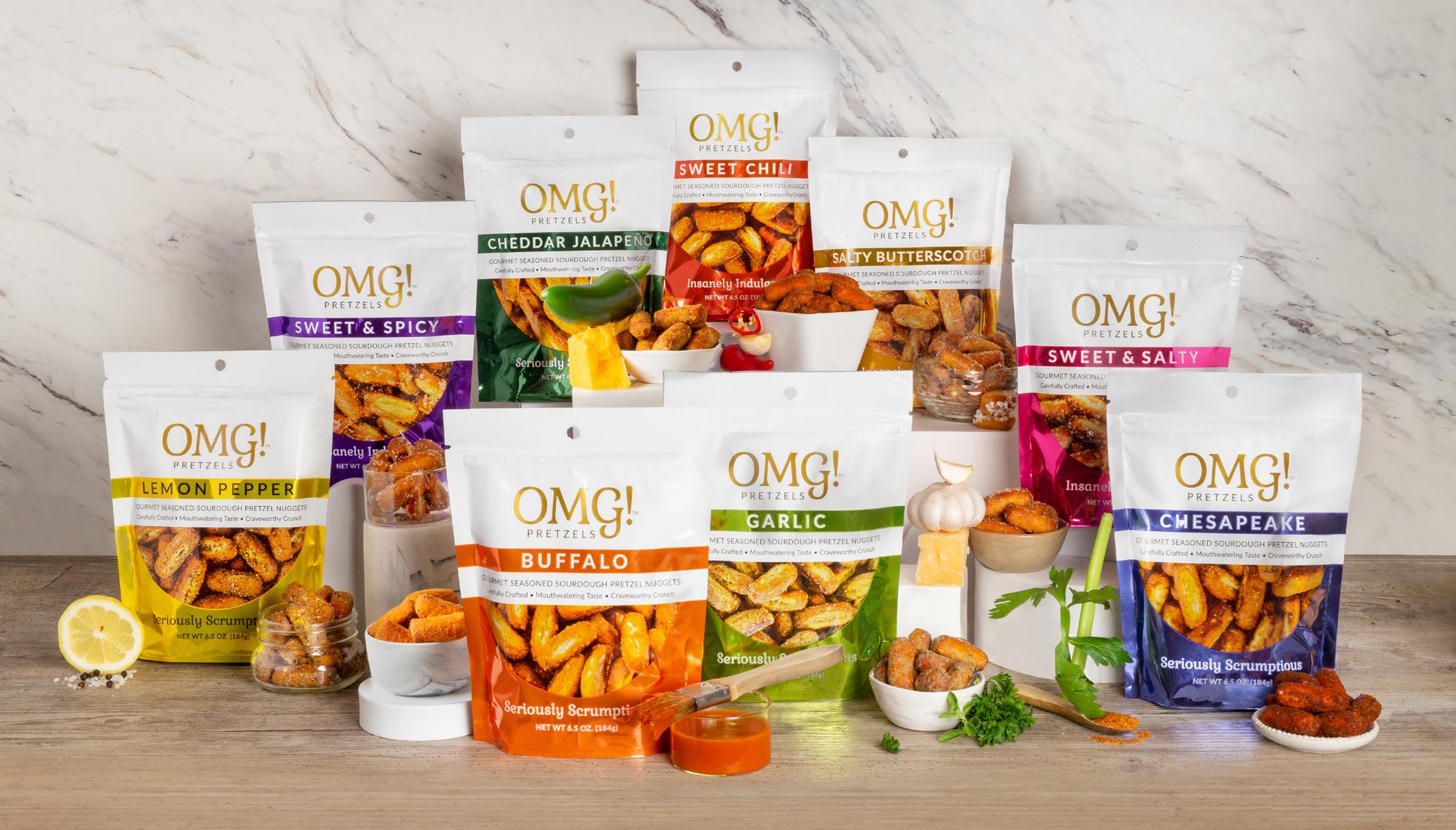
Snacking is hot right now. Circana insights reflect that despite a wavering economy and tighter purse strings, nearly half of US consumers snack three or more times a day. Today’s shoppers are also in search of more unique and convenient offerings with stand-out flavor combos ... enter OMG! Pretzels.
A little more than a decade into business, the Plymouth Meeting, PA-based pretzel company is finding its fit in the snack aisle with authentically aged
sourdough nuggets tumbled in its proprietary seasoning blends.
The brand’s reach today is vast, with its footprint stretching coast to coast in more than 1,000 locations, including supermarkets, specialty grocers, c-stores, gift shops, airport stores and university campuses.
Along with being in hundreds of doors — and counting — across the country, the premium pretzels have made their
mark on the snack segment. The brand earned a semi-finalist placement in the SNAC Tank Pitch Competition at SNAC International’s SNX 2024, and its Lemon Pepper flavor received a finalist nod for Most Innovative New Product at the 2024 Sweets & Snacks Expo.
It took time for the family-owned, woman-run business to reach this point. Its origins trace beyond its 2014 founding to co-founder and CEO Stephanie Kriebel’s childhood home kitchen.
“My mom was very strict about the types of snacks my siblings and I could eat,” Kriebel said. “So, she started making what is now our flagship garlic-seasoned sourdough pretzel nuggets for us to eat as after-school snacks, filling the gap she saw in the snack options in the market.”
The Kriebels served the pretzels as sides and brought them to parties as gifts. When people began asking where they could purchase the snacks, a path was unlocked for a business venture.
“My parents were 70 when we started the business, and we figured it would be this local or regional brand that would help support them in retirement,” Kriebel said, noting that once the seed was planted, it took the family about a year to scale the side hustle into a full-blown operation.
Starting out, Lynn Kriebel, Stephanie’s mother and co-founder of OMG! Pretzels, made the well-seasoned snack two pans at a time in their home oven. This production model lasted a few years until growing demand necessitated a commercial kitchen. Eventually, the Kriebels decided co-packing was the way to scale.
Building the brand was always a family affair. Initially, the company was operating in separate time zones, with the mother-daughter duo living in Pennsylvania and California, respectively. Stephanie leveraged her background in packaging and marketing to design the branding, and Lynn hit the pavement to drum up customers.
That door-to-door approach paid off in the long term; about 90% of the brand’s early customers still carry the seasoned pretzels in their stores today.
OMG! Pretzels launched with five varieties: Garlic, Sweet & Salty, Cheddar
Jalapeño, Chesapeake, and Sweet & Spicy. While Lynn honed the flagship flavor early on, the Kriebels spent years formulating the other blends.
“We leaned heavily into our family roots for ideas around what flavors we wanted to bring to market,” Stephanie said.
For example, Sweet & Salty was created in honor of Stephanie’s paternal grandfather, while the Cheddar Jalapeño variety was crafted with her personal love for the spicy pepper in mind.
The production timeline varies from flavor to flavor. It takes four to six months to a year to finalize and bring a flavor to market. But it’s not enough to add SKUs to the line; each variety must hit all the right notes. As a result, perfecting the balance of each flavor is the
toughest part of the R&D process for the team.
“It’s important to get that two-note tasting experience,” Stephanie said. “One flavor hits the tongue first, the second one comes after, and it lasts throughout the whole eating experience.”
After working with a co-manufacturer to perfect the seasoning application, OMG! Pretzels took off regionally, doubling its revenue year-over-year through 2021. The brand extended its footprint nationwide in 2020 through Faire, an online

Stephanie Kriebel highlights the role flavor played in building the brand.
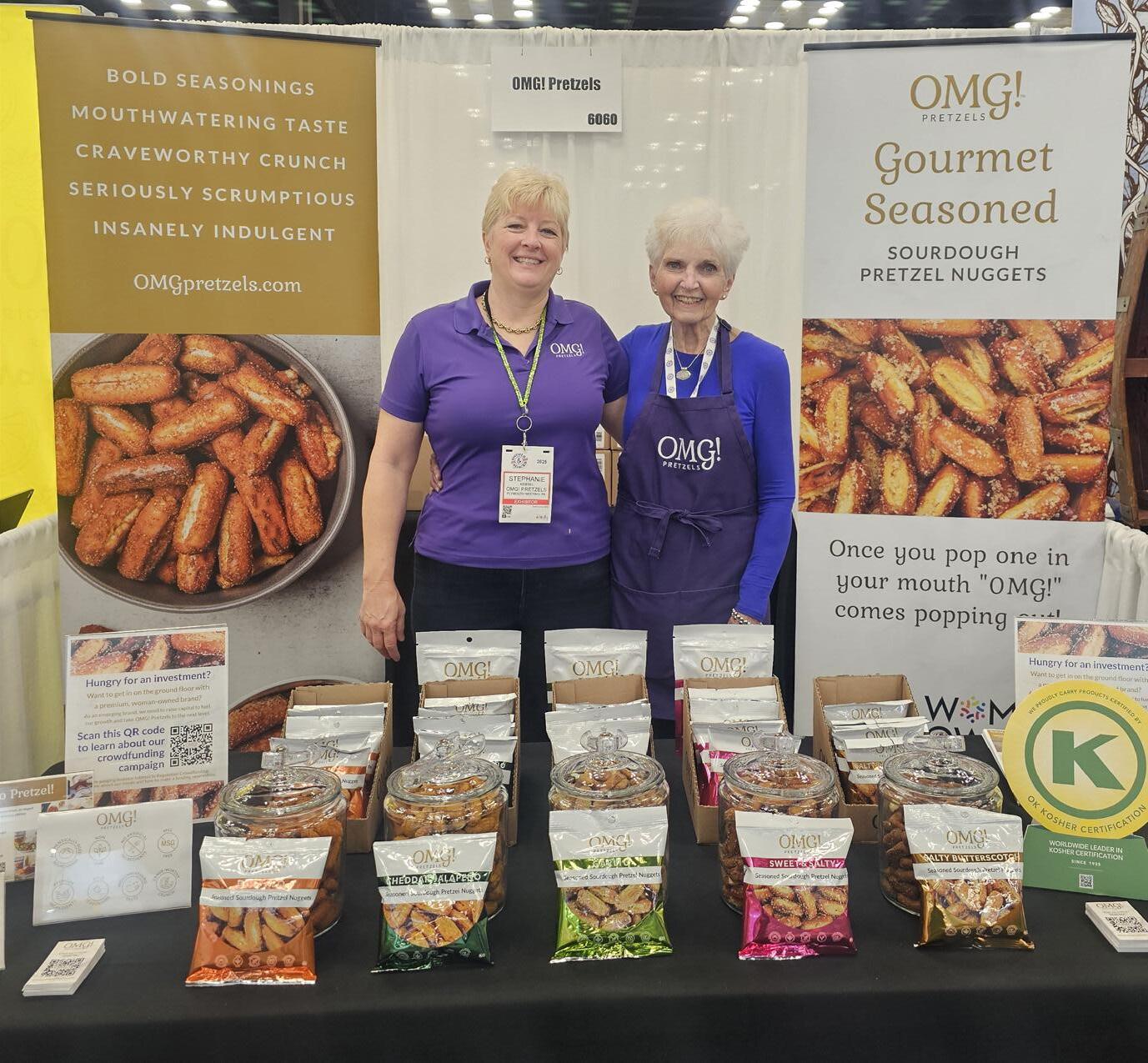


Get precision, consistency, and control with AZO's feeding and screening systems-built to perform, built to last.


marketplace. It was a move that — alongside the release of Lemon Pepper, Salty Butterscotch and Sweet Chili flavors — sustained the business during the early COVID-19 years.
After interest emerged from large box retailers in 2022, OMG! Pretzels was prompted to revamp its packaging and reformulate. The investment exhausted a lot of capital and caused a slight dip in revenue, but it was important to set the stage for the business moving forward.
Presenting the pretzels appropriately was also important. Over the past decade, the brand has worked through various visual iterations, landing on its current design — a white foil packaging with blocks of color denoting each flavor and size-accurate images of the final product — at the end of 2023. Beyond distinguishing it on store shelves, the decision also helped prospective retail buyers more easily identify the flavors. The attention to detail with the shiny, colorful packaging is costly, but a worthwhile investment to achieve the ideal look/feel for the pretzel nuggets.
Opting to use a sourdough pretzel nugget as the carrier for the seasoning mixes amplified the product’s premium status while also aligning with consumer interest. The reformulation refined the offering as clean label, non-GMO, vegan, vegetarian and kosher, as well as free from artificial ingredients or dyes, MSG, nuts, soy and sesame.
“We’ve been ahead of the curve on all these things,” Stephanie said. “There’s such a push now for removing synthetic colors and artificial ingredients in snack foods, and we’ve already done it.”
As the emerging brand looks to expand distribution, the team faces the challenge
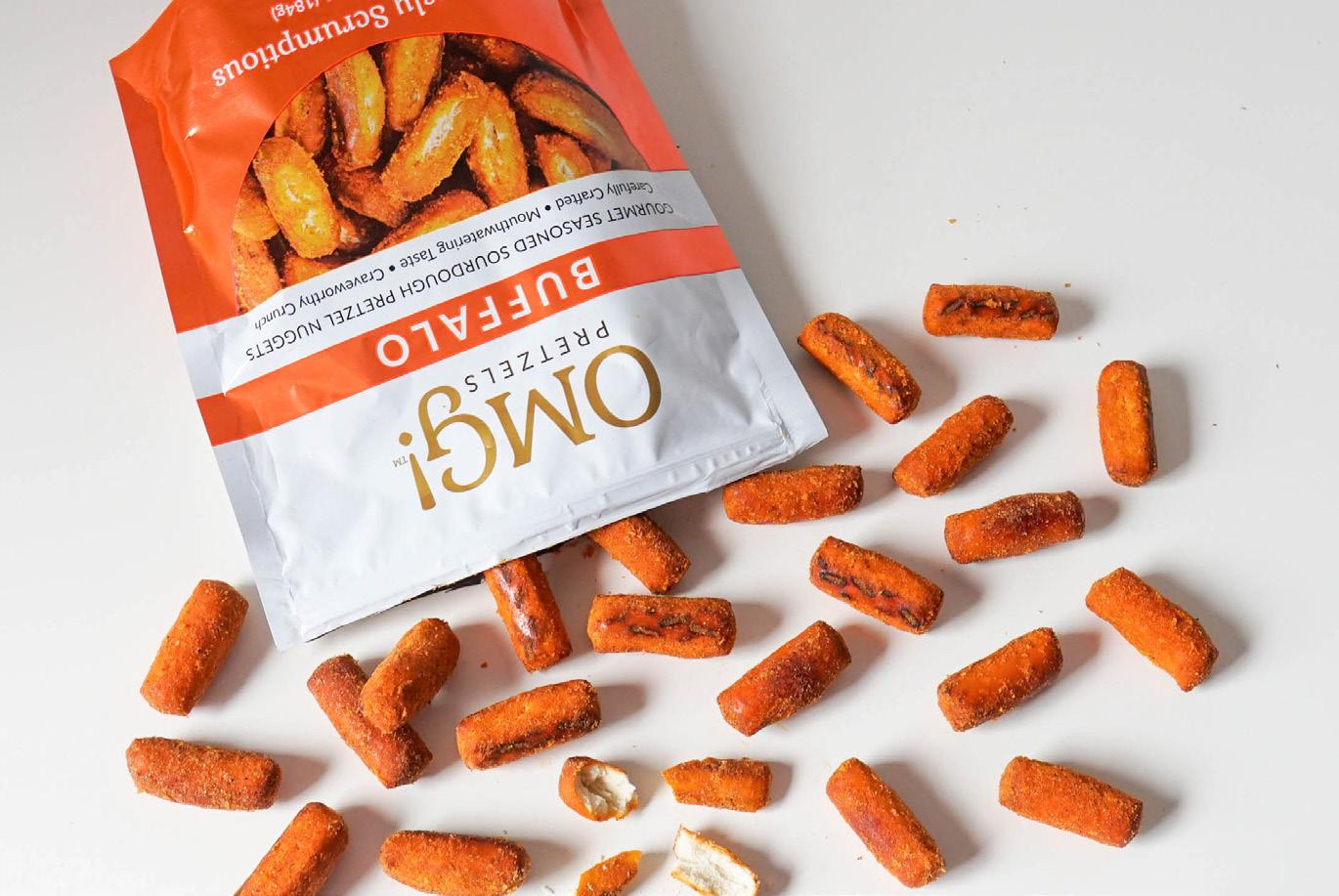
“You can do all the marketing you want, but if your product doesn’t provide an enjoyable eating experience, you’re not going to get anywhere.”
Stephanie Kriebel | co-founder and CEO | OMG! Pretzels
of managing nine flavors in two different package sizes — the original 6.5-ounce resealable pouch and a 3-ounce graband-go bag introduced in 2024 — and a myriad of distribution avenues. OMG! Pretzels also has single-serve 1-ounce bags waiting for the right opportunity to present itself.
“We’re discussing pulling back on a few flavors, parking them in a shed and pulling them out for special occasions,” Stephanie said. “It’s a work in progress.”
Throughout the packaging changes and flavor additions the brand has had over the years, prioritizing the consumer experience has kept people coming back for more.
“Everything comes down to, ‘Does it taste good? Does it offer a great experience?’” Stephanie said. “You can do all the marketing you want, but if your product doesn’t provide an enjoyable eating experience, you’re not going to get anywhere.”
Funding the business meant bootstrapping, using credit cards and reinvesting
each year’s revenue growth. OMG! Pretzels also worked closely with TD Bank to establish a line of credit. The company financed other p rojects with a Small Business Administration loan.
“We exceeded half a million in revenue for the very first time last year,” S tephanie said. “We’re very proud; it took a lot of work and grit to get there. We’re hoping to get to $1 million this year.”
That goal is certainly achievable with the help of Michael Hoare, a decades-long member of the food and beverage industry who was recently hired as VP of sales, business development manager, advisor and consultant to support the future of the emerging brand.
With a bevy of flavor-packed pretzels, funding in the works, and a decade of slow and steady growth in its back pocket, OMG! Pretzels is well-positioned to enter its next era and bring investors along for the ride.
“We’re like plants,” Stephanie said. “We need to be watered with investments so that we can grow.” CB
Solve your toughest secondary packaging challenges with our automated solutions
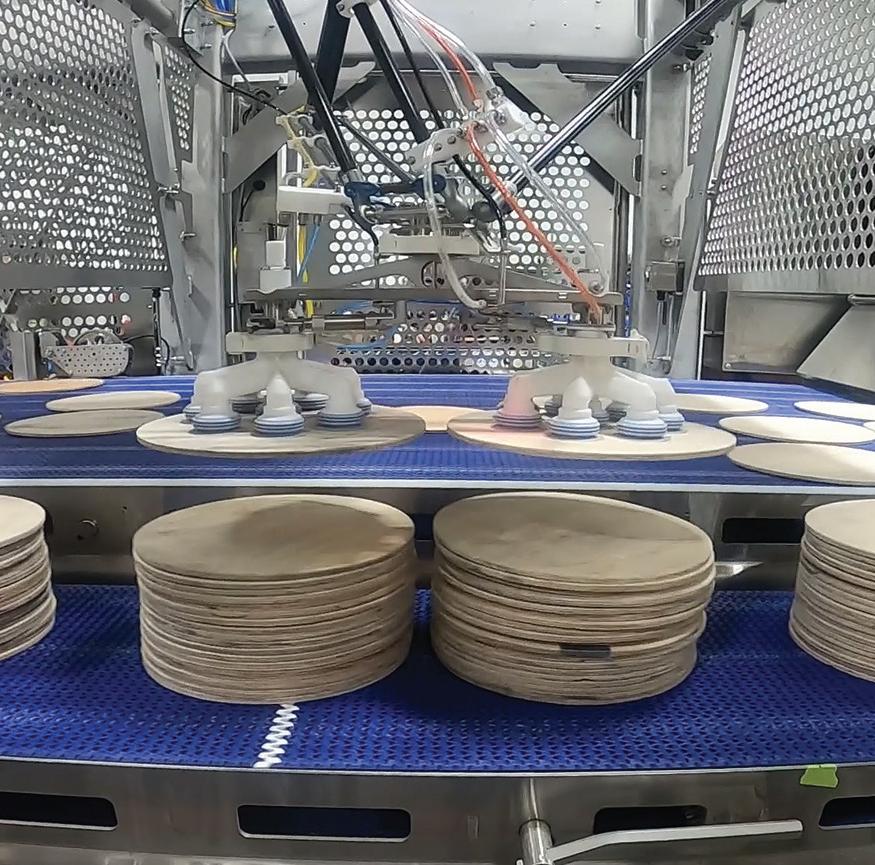

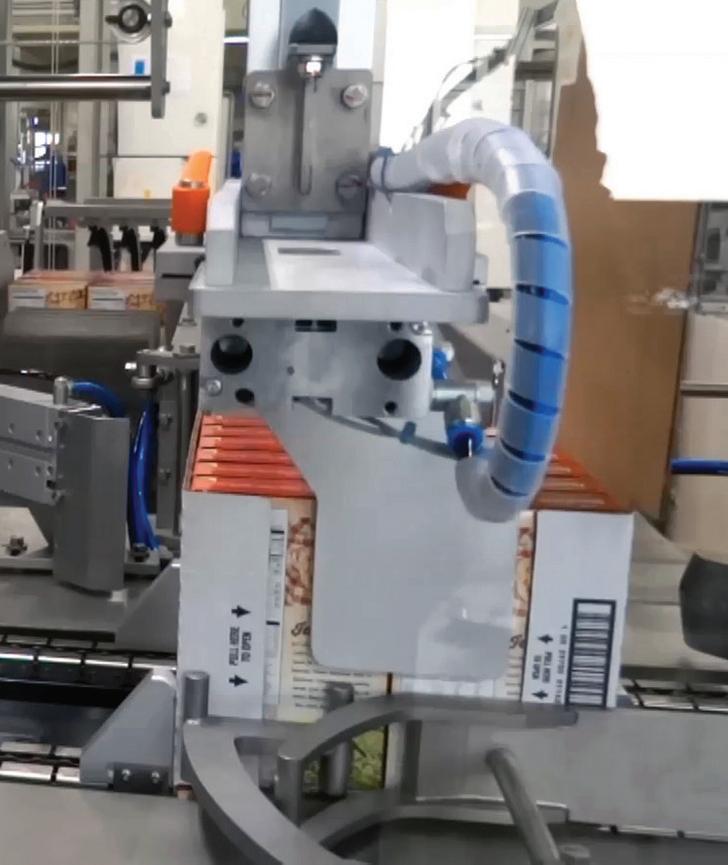
You make it. We pack it. End-of-line packaging solutions for the bakery, snack and tortilla industries. BPA loads your packaged and naked products into cases and various secondary containers including your hffs machines, wrapper chain in-feeds and indexing thermoform machines. We ASK. We LISTEN. We PARTNER.

























The Artisan SFE EC is a highly efficient dough sheeting line in “Easy Clean“ design. Save valuable time for cleaning processes and product changes: the innovative design ensures optimized hygiene and accessibility. With endless dough sheet generation and a capacity of up to 9,000 pieces per hour, the Artisan SFE EC is the ideal solution for your production.
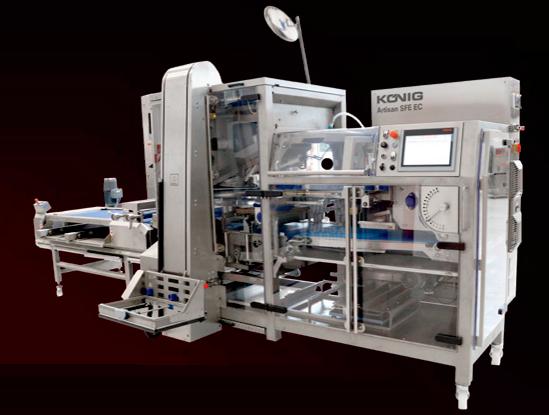
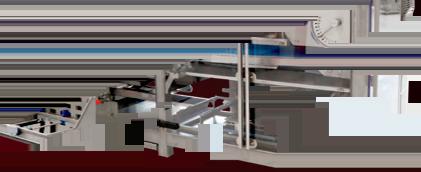



With the Fortuna semi-automatic machine, the dough pieces are perfectly high and round. Thanks to its compact design, the Fortuna semi-automatic machine can easily be installed even in the smallest of spaces. The proven semi-automate is the ideal dough divider for weight ranges of 1.1 to 2.8 oz and 1.4 to 3.9 oz.






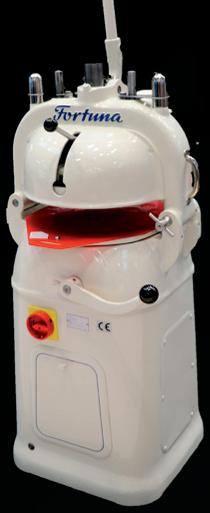


AI tools help product developers explore — and push — the boundaries of innovation.
BY MARI RYDINGS
AI is no longer the technology of the future ... it’s here. It’s also proliferating at breakneck speed and transforming how food and beverage companies do business. Embracing AI in key areas can help organizations optimize operations, boost productivity, increase profits and decrease costs.
As evidence of increasing adoption, Precedence Research predicts the global market size for AI in food and beverages will grow from $15.36 billion in 2025 to approximately $263.80 billion by 2034, a CAGR of 37.30%. In the commercial baking space, nearly 70% of the industry has adopted or plans to adopt AI in some capacity, according to “AI in the Commercial Baking Industry,” a pulse survey from the American Bakers Association (ABA), with respondents indicating marketing and sales, supply chain management and manufacturing as top AI-focused business functions.
“AI is really just taking math and applying it to something that makes the world faster,” said Chad Larson, COO for Springfield, IL-based Mel-O-Cream Donuts during a Baking Industry Forum (BIF) panel discussion at BEMA Convention 2025. “The theme behind it is always going to be, ‘What do we do, and how do we do it with less?’”
R&D is a key area where AI is thriving, specifically as it relates to new product

development (NPD), where staying ahead of trends and speed to market are competitive advantages for baking companies. Regarding R&D, the ABA survey reported that 17% of companies are currently using AI, 11% have either tested or plan to test AI pilot programs, and 24% intend to adopt AI solutions in the next 12 months.
The biggest drivers of AI adoption in NPD are speed to market, actionable
insights and consistent product qual
ity. With the right tools, bakeries can generate ideas, explore new ingredients, reduce the trial-and-error process and the risk of failure, and generate consumer-centric innovation.
“AI can find ingredient alternatives, reduce formulation cycles and cut costly bench tests, which speed up the path to market,” said Greg Heartman, VP of product management at TraceGains. “It
also allows teams to model new products and reformulations — down to ingredients, packaging and ESG criteria — before anything hits the lab. It enables product developers to explore unlimited ‘what if’ scenarios with precision, while tracking consumer trends, regulatory shifts and supplier risks in real time. From source to shelf, AI is helping food brands move faster and smarter.”
Many companies use semantic AI to track online consumer conversations across social media platforms, blogs, forums and review sites and mine them for consumer behaviors, emerging — or fading — trends, and even language that could be used in marketing campaigns.
As part of its Taste Tomorrow proprietary research program, ingredient company Puratos USA combines digital insights with extensive consumer survey results and sensory research to accelerate product ideation and recipe development
and help customers bring new products to market on a truncated timeline.
“We look at long-term, fast-evolving and seasonal trends,” said Benjamin Bado, data and digital innovation manager at Puratos. “We can gather thousands of ideas, filter them down to the most relevant ones and invest in those. AI enables us to move quickly in this kind of exploration. What used to take months can now be done in days; we can create a recipe and gauge market response almost immediately. Of course, adjustments are still needed to meet requirements for value, machinability, processes and taste, but AI accelerates the core stages that typically take the most time.”
Applying predictive modeling during formulation can also reduce some of the trial and error because it can simulate how different ingredient combinations will impact shelf life, food safety and product quality before testing even begins.
17%
of companies are currently using AI in R&D.
Source: American Bakers Association Pulse Survey













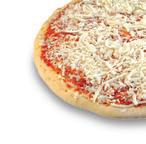
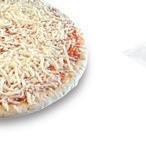
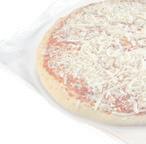
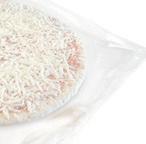
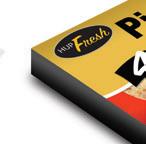
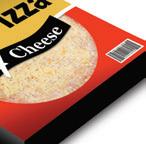
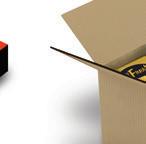
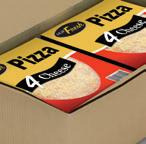
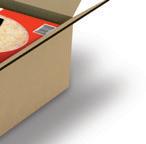
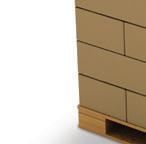































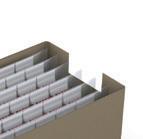





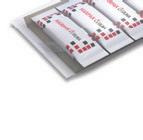








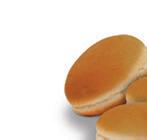
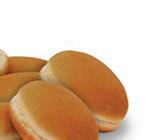

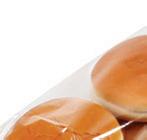




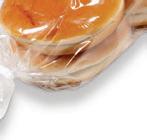









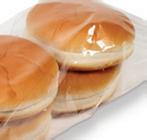

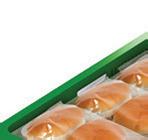
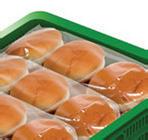


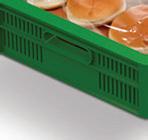

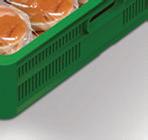


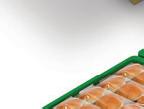



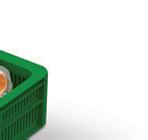
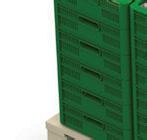
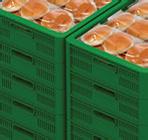




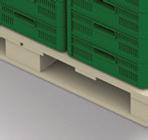









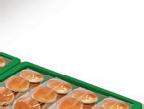


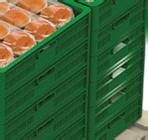

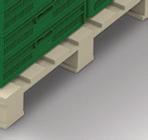





“This data-driven approach enables our customers to reduce development time; streamline innovations; and bring clean-label, sustainable solutions to market with greater confidence,” said Ashley Robertson, director of marketing and communications for Corbion. “AI empowers manufacturers to turn complex datasets into clear, actionable direction. This allows brands to innovate more efficiently and stay ahead of evolving consumer expectations.”
As a testament to the technology’s increasing use in recipe formulation, the Institute of Food Technologists (IFT) launched its AI-powered R&D platform, CoDeveloper, at this summer’s IFT FIRST event. Designed to speed up formula development and help food scientists with ingredient substitutes, texture improvement, clean-label reformulation and flavor development, the platform features a generative AI co- s cientist, advanced formulation tools for iterative development and science- o ptimized reverse engineering.
While AI tools have value in individual areas of new product development, their strength lies in cross-functional application. When Chicago-based Mondelez International decided to i nnovate on its Chips Ahoy! cookie, the company turned to AI for help. Project leaders took steps to ensure team-wide adoption of the new approach to product development.
“We encouraged people to think of it as an insights source versus a data source,” said Maria Rondon, director of brand insights, confections for Mondelez International, during a recent Industry Dive webinar. “At Mondelez, AI is truly cross-functional, especially as we think about new innovation pipeline development. With Chips Ahoy!, we
“One thing I see in the future for ingredient suppliers and equipment manufacturers is customers asking for information to be organized into individual documents for specific audiences.”
Justus Larson | VP of operations | United States Bakery
brought the entire team along on the journey: consumer insights, marketing, the innovation team, consumer science, R&D. These partners saw the value that this new process was bringing to their specific functions.”
The power of any AI tool lies in the data it receives. The more accurate information it gains, the smarter the AI becomes.
“If you want to be the best partner for your customer, you need the best tools and the most insightful data,” Bado said. “A company’s true intellectual property isn’t its machines. It’s the data and knowledge the company has accumulated over time. There must be something unique about the data you possess, because if you build the same tool with the same data source, anyone can replicate what you do. You want your own recipe, your own knowledge and your own method for creating it.”
To maximize the benefits of an AI model, companies must make sure their data is clear, concise and organized into the right model for the right position. Dissecting existing documentation into specific knowledge sections and uploading each section into the appropriate AI model will be more effective, but it can also be a very time consuming and arduous process.
“One thing I see in the future for ingredient suppliers and equipment manufacturers is customers asking for all the information inside a typical manual — operator settings, changeover procedures, maintenance tasks, sanitation tasks, troubleshooting, diagrams — to be organized into individual documents for specific audiences such as production, R&D, maintenance and food safety,” said Justus Larson, VP of operations for Portland, OR-based





























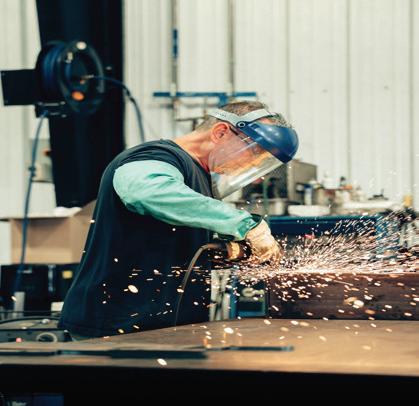


More



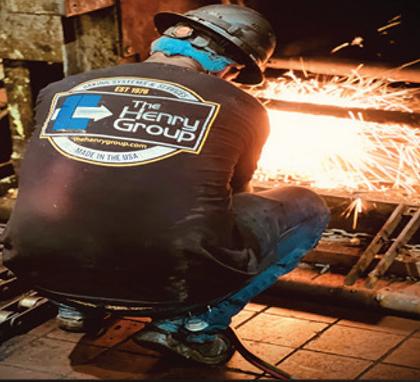


United States Bakery during the BEMA BIF panel.
That’s where things can get tricky. According to the ABA survey, 38% of companies reported that the availability of internal data for use with AI was one of the top five challenges to implementing the technology. It’s not just a lack of data that impedes AI adoption. It’s also the increased risk exposing proprietary data, including formulas, to competitors, with 65% of survey respondents indicating cybersecurity was the primary AI-related risk most relevant to their businesses.
The growing concern of a data breach of any type has prompted many companies to construct sophisticated network firewalls that restrict communication between secure internal systems and less secure external networks, and that makes AI implementation tough, but not impossible.
“We are locked down like Fort Knox,” said Richard Ybarra, senior manager of manufacturing engineering for L akeland, FL-based Publix, during the BEMA panel. “When I started talking to my leadership about implementing AI in our facilities, the first thing they said was that we couldn’t go outside of our firewall to pull data. That was a challenge. But we went back and looked at how we could incorporate AI in various areas within this, and other, limitations.”
The use of AI in the food and beverage industry will only accelerate the pace of new product launches. Companies that recognize its value and embrace its capabilities will find new opportunities to excite consumers, a unique competitive edge and the freedom to ask, “What if?” … pushing the boundaries of taste, texture, nutrition and flavor. CB
“AI enables product developers to explore unlimited ‘what if’ scenarios ... From source to shelf, it is helping food brands move faster and smarter.”
Greg Heartman | VP of product management | TraceGains

From forming toloading andclosing all inacompact footprint




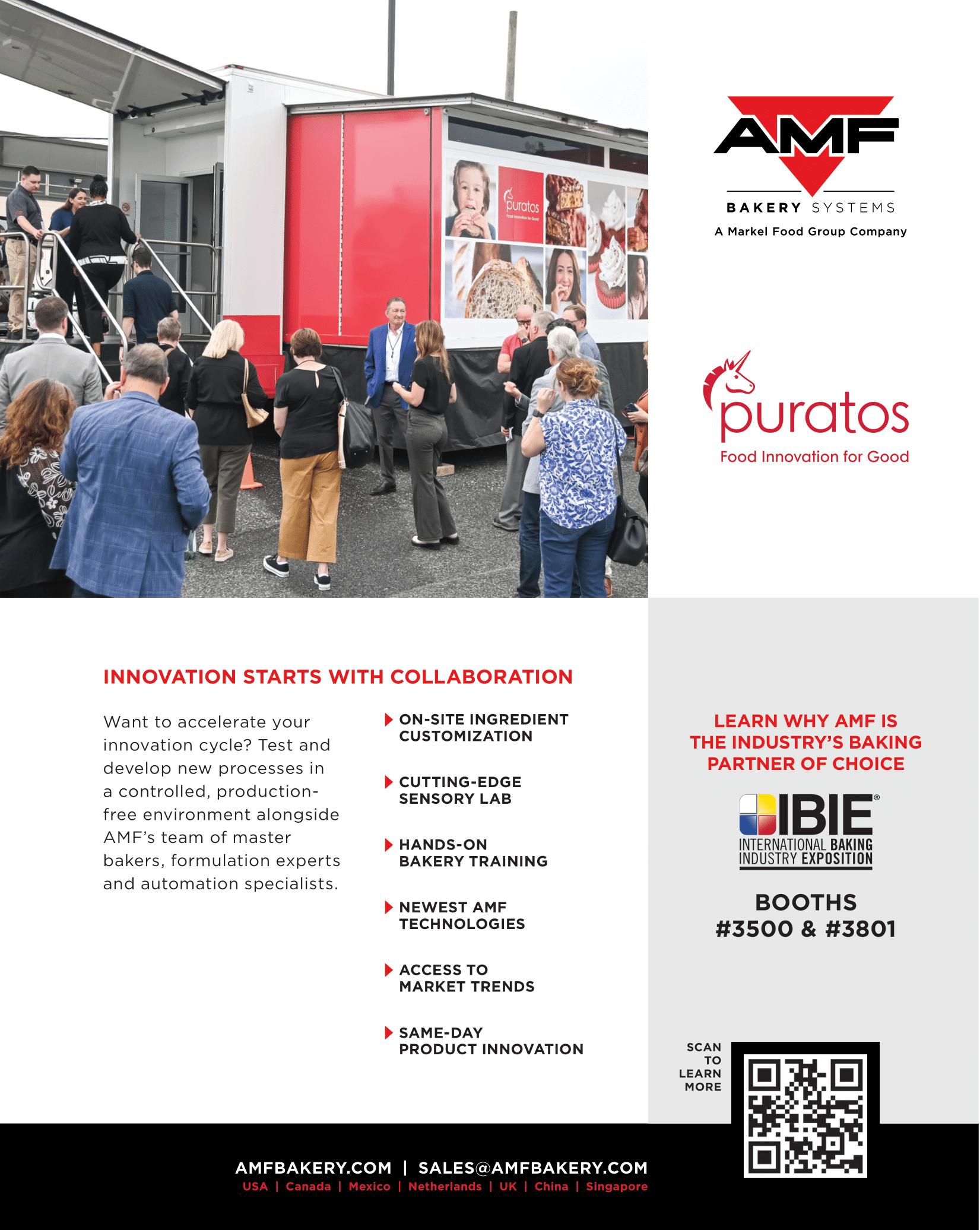
up to 120 per minute with state-of-the-art motion and wireless the 893 C Automatic Bag Machine has
Closing up to 120 bags per minute with state-of-the-art motion control, ethernet, and wireless communications, the speedy 893 C Automatic Bag Closing Machine has LEARN MORE AT KWIKLOK.COM
Come see us at IBA Hall 9, BOOTH G:11. Come Visit us at IBIE, BOOTH 2117
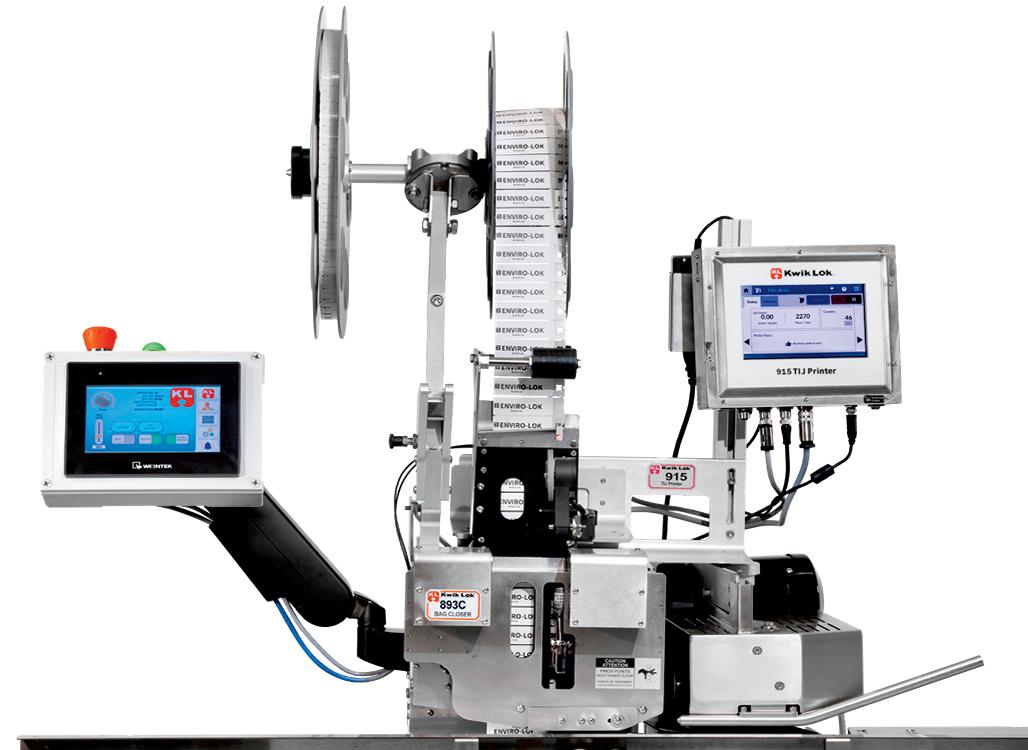

Sustainability and efficiency have synchronized, offering the industry a fresh perspective.
BY MADDIE LAMBERT
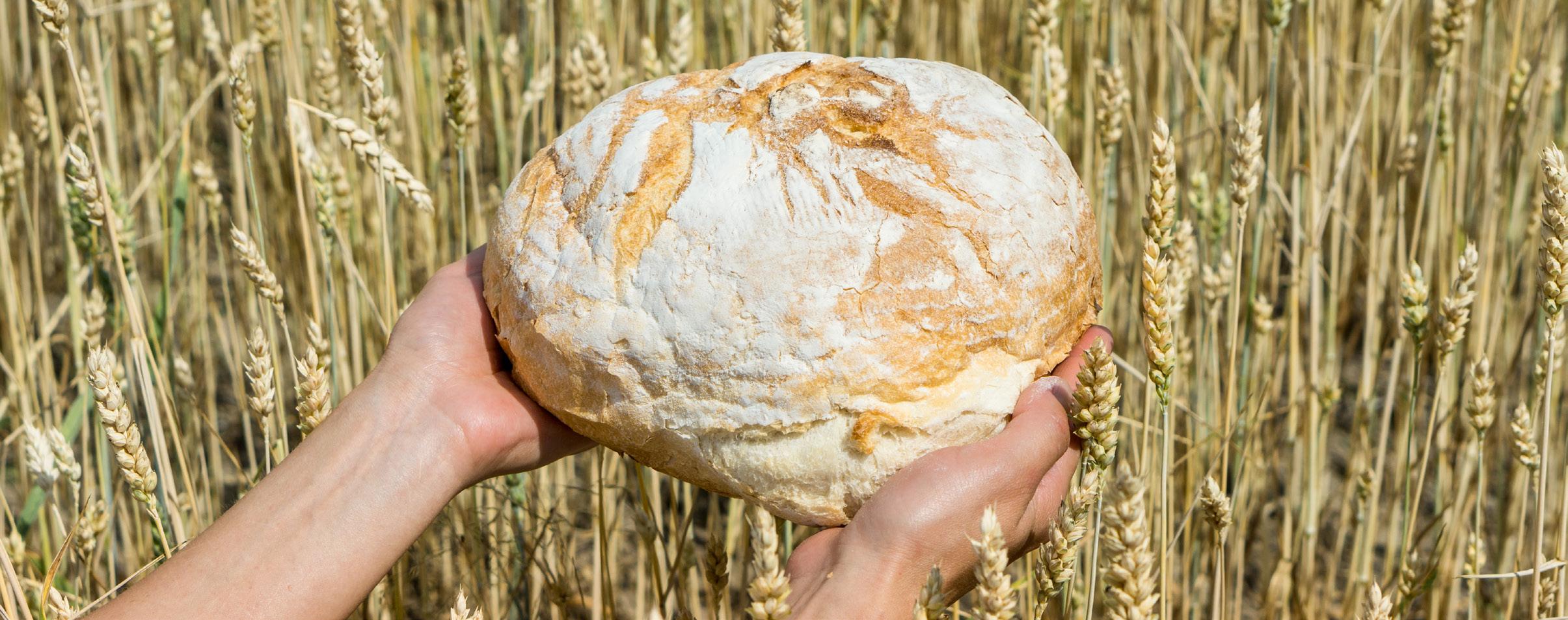
The word “efficiency” is tossed around like a communal frisbee, grasped by bakers, manufacturers and suppliers alike. The heightened emphasis on maximizing output and reducing costs has impacted the way businesses operate. From minimizing waste and optimizing resources to implementing advanced automation and upgrading technology, companies are revamping their processes to embrace this critical initiative.
These efforts to operate more efficiently have yielded unexpected — and radically promising — results.
The measures companies are taking to streamline operations are also enhancing sustainability beyond environmental compliance. Within multiple aspects of business, from production to packaging, a new space has formed to tackle both efficiency and conservation.
Quite simply, sustainability, in all its forms, is being seen through a new lens.
Here’s how two companies are realizing the benefits of this new era of secondary sustainability.
Thomasville, GA-based Flowers Foods focused on its water stewardship when reflecting on its baking processes and sanitation. Striving to improve water
“More than half of our bakeries use on-site meters to monitor water use, identify leaks more quickly, and verify utility invoices … which helps lower production costs and maximizes how we use our water resources.”
Margaret Ann Marsh | senior VP, safety, sustainability and environmental | Flowers Foods
metering capabilities, the company discovered that tracking water consumption per ton of product was the key to achieving this.
“More than half of our bakeries use on-site meters to monitor water use more frequently, identify leaks more quickly and verify utility invoices,” said Margaret Ann Marsh, senior VP, safety, sustainability and environmental at Flowers Foods. “We set internal goals to reduce usage, which helps lower production costs and maximizes how we use our available water resources.”
Flowers’ Bakery of the Future program provides immediate reporting of production line conditions, enabling each facility to make adjustments in real-time. By more effectively monitoring water use and incorporating data and analysis, the company improved its tracking and helped quantify water reuse.
Heat recovery is another major area that Flowers focused on. The company captures waste heat from ovens and reuses it for ingredient tanks, pipe jackets and proof boxes, which conserves energy and reduces heating costs.
Horsham, PA-based Bimbo Bakeries USA (BBU) also strives to optimize its manufacturing process to help prevent waste during development,
ultimately seeking to reduce the time and energy required to push product from concept to store shelf.
“The best way to manage waste is to not create it,” said C hristopher Wolfe, senior director of sustainability at BBU. “Eliminating and reducing waste has benefits across the value chain — fewer raw materials, energy, water, fuel and miles — and this all benefits the environment, including the carbon aspects. It also directly impacts the bottom line with associated cost savings.”
The global baking company sought to optimize its supply chain, and as commodity and utility costs increased, space for synergies emerged.
BBU reinforced fundamental programs, including steam trap maintenance, high-efficiency lighting and motors, and lowwater-flow appliances. These initiatives reduced the company’s resource consumption, minimized its environmental impact and lowered operational costs.
But it didn’t stop there.
“We’ve embraced renewables, real-time monitoring and emerging technologies like AI,” Wolfe said.
With AI, commercial bakers and equipment manufacturers can monitor energy usage across production lines, identify inefficiencies, and recommend improvements or automatically adjust processes to minimize energy consumption. For ingredient suppliers, AI can improve supply chain visibility and identify alternative, more sustainable ingredients that meet quality and taste requirements.
Transportation and logistics play a crucial role in achieving sustainability and efficiency. Through Flowers’ direct-store-delivery network, the company ships fresh goods from bakeries to depots to be picked up for delivery to retail and foodservice customers. The company consolidated its delivery service from five to four days at select warehouses and has plans to expand this initiative.
“It saves fuel, extends the life of equipment and improves our overall carbon impact,” Marsh said. “For each warehouse converted, we’ve reduced miles driven by an estimated 27,500 miles per year.”
Where there’s space for efficiency, there’s space for sustainability. By prioritizing waste elimination and optimizing resource use, commercial bakeries are primed to boost their impact ... in more ways than one. CB
Attending IBIE? The Baking Expo is offering several educational sessions on sustainability.
• Intelligent Energy Consumption Monitoring in Industrial Bakeries | Andrii Bulatov, AMF Bakery Systems
• The Future of Biscuit & Cracker Baking: New Emithermic XE Oven Design to Replace Traditional DGF Baking Technology | Tremaine Hartranft, Reading Bakery Systems
• Baking Sustainability into Your Operations: A Strategic Approach | Diana Thomas, BiologiQ, Inc.
• Adapting to Change: Navigating Sustainability in the Modern Food Industry | Abby Ceule, Corbion
• Baking for a Better Future | Olivier Hamel, KLR Systems
• How to Automate Your Admin to Build a More Sustainable and Profitable Wholesale Bakery | Luke Karl, Cybake Ltd

BROWSE MORE:
See the full IBIEducate lineup at www.bakingexpo.com/education
“The best way to manage waste is to not create it. Eliminating and reducing waste … directly impacts the bottom line with associated cost savings.”
Christopher Wolfe | senior director, sustainability | Bimbo Bakeries USA
Bettendorf Stanford



•Compatible with wire tires or any other closure device
•Built in metal detector
•Built in rejection system
•Servo driven bagger

•Centerline setup for easy repeatable setup

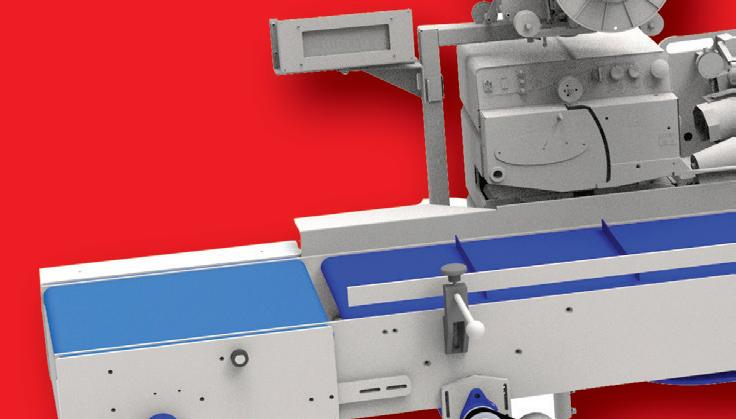
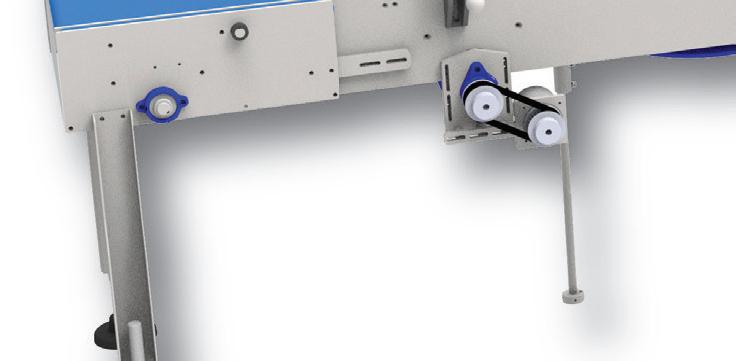

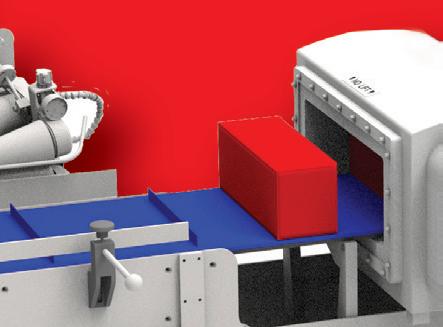


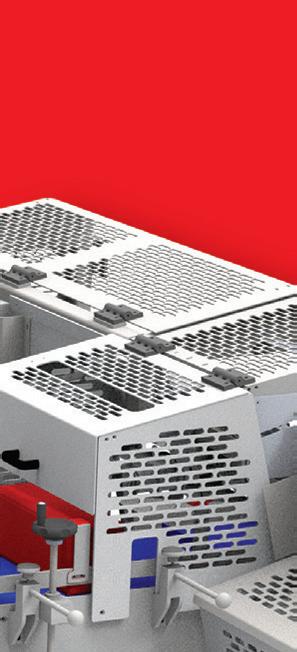

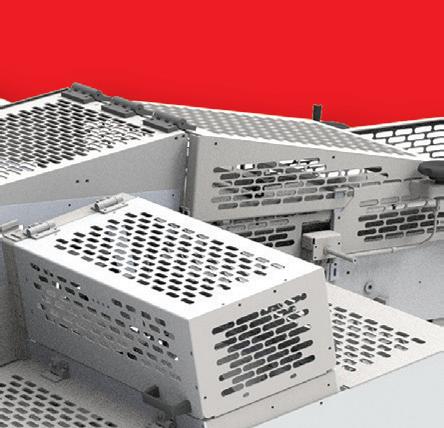





Our Servo 65 Bagger with built in metal detector is designed to allow metal detection after the loaf is bagged, even if you want to use a wire tie.
Don’t let food safety take a back seat, use the industry’s safest bread bagger!
Bellarise® BellaSOFT Ever Fresh bakes the best softness, resilience, and bite into all of your breads and buns.
Oh, and it's all-natural and clean label, too.
All-new Bellarise• BellaSOFT Ever Fresh:
• Maximizes value by yielding the best softness for the longest time
Protects your breads when stacked by offering top-notch resilience
Creates a perfect bite that always reveals all the best in your breads
Our master bakers put their best into Bellarise BellaSOFT Ever Fresh to help make your breads unforgettable. After all, you work hard at the bakery every single day, so we work hard to make sure all your efforts count.
Please contact us and order your sample today!

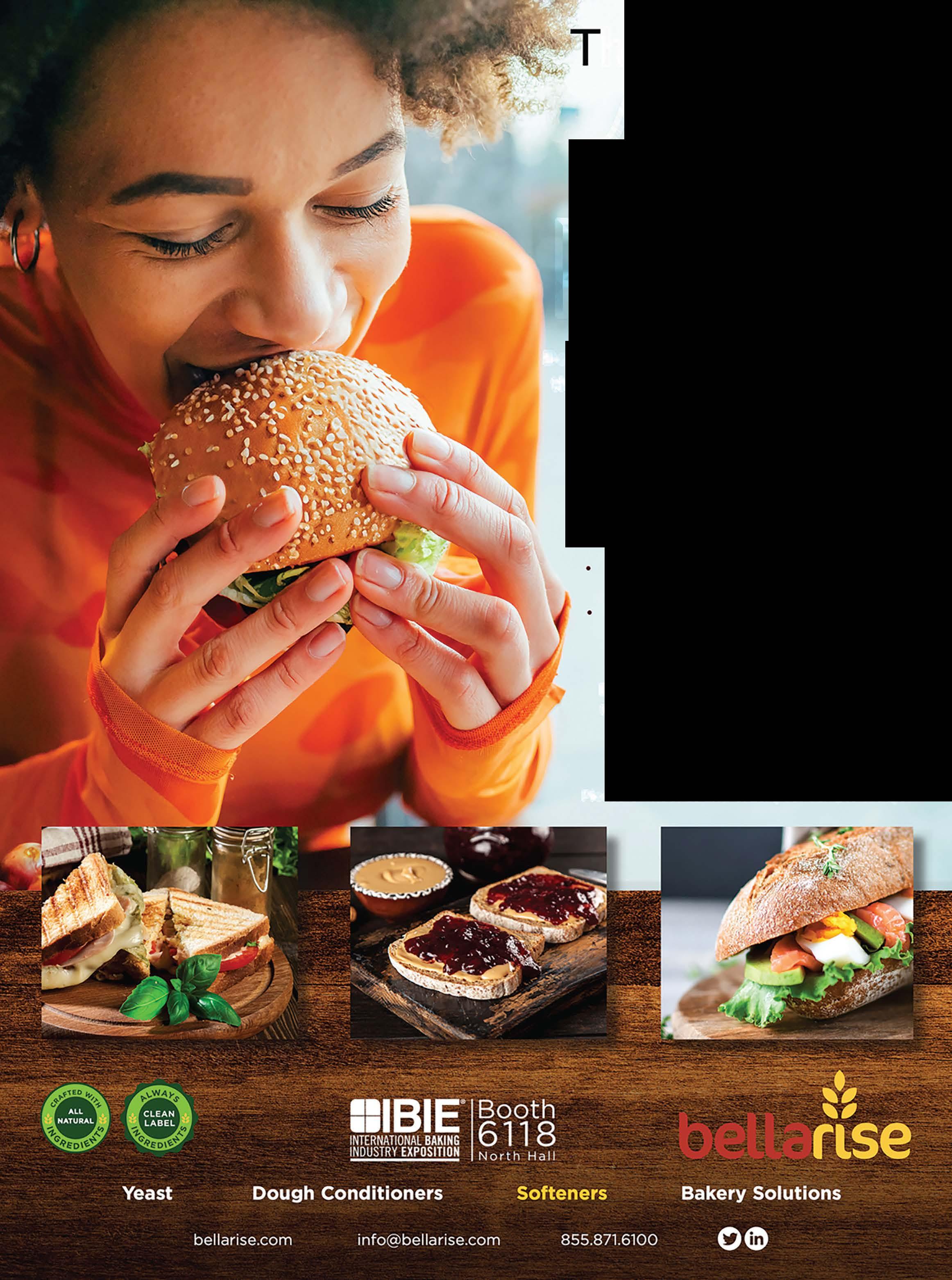

BY MAGGIE GLISAN

For more and more Americans, mealtime just isn’t the same as it used to be. They’re eating smaller portions, feeling fewer cravings and paying a lot more attention to what’s on the label — all the result of starting a GLP-1 medication. As these treatments grow in popularity, food manufacturers have to rethink how they meet new consumer habits, especially when it comes to flavor, function and nutrition.
GLP-1 (short for glucagon-like peptide-1) receptor agonists are a class of medications originally developed to help manage Type 2 diabetes by regulating blood sugar. Today, they’re increasingly prescribed for weight loss. Medications such as Ozempic, Wegovy and Trulicity mimic the GLP-1 hormone naturally released in the gut after eating. This helps stimulate insulin production, slow gastric emptying and reduce appetite.
It’s not just the physical effects of these medications that are making them so disruptive; it’s physiological as well. GLP-1 medications send satiety signals to the brain while slowing digestion, leading users to eat significantly less and feel fuller longer. Many patients report changes not just in how much they eat but also in their overall relationship with food.
As these medications become more common, the ripple effects are taking shape. The Institute of Food Technologists named GLP-1 agonists the leading driver of product innovation for 2025, and as the global GLP-1 market grows, food manufacturers are accelerating R&D efforts to meet the nutritional needs of users focusing on protein density, gut health and satiety.
“GLP-1 medications are creating one of the most significant behavioral shifts
we’ve seen in food and beverage in recent years,” said Alon Chen, CEO of Tastewise, “not by eliminating demand, but by reshaping it.”
The impact is especially pronounced in snack foods. Products such as chips, baked goods, cookies and sides saw the steepest pullbacks, with average spending declines ranging from 6.7% to 11.1% during the six-month period post-GLP-1 adoption, according to research published by Cornell University and consumer insights group Numerator. Chen said he sees traditional snacking undergoing a quiet revolution with “smart snacking” on the rise, impulse-driven snack purchases down 15% and the definition of a snack evolving from indulgence to function.
GLP-1 medications are also impacting what types of foods users gravitate toward. A 2024 Corbion proprietary survey found 43% reported increased cravings for savory foods, while interest in sweet, salty and even bitter flavors appears to be declining. Many reported a reduced craving for sweets and rich foods and more of a preference for lighter, fresher, even more savory or umami-type flavors.
Although users of GLP-1 medicines may be consuming less food overall, what they do eat is becoming far more intentional.
“We’re seeing a sharp pivot toward nutrient-dense, functional options,” Chen said. “Consumers are actively seeking foods that align with their new physiological cues, i.e. less appetite, with a heightened focus on satiety and nutrition.”
So what, exactly, are GLP-1 users looking for in food from a nutrition standpoint? There are two clear winners: protein and fiber. According to Tastewise, interest in protein-rich snacks is up 113% year-over-year, while social conversations around fiber-rich foods have surged 177%.
Protein and fiber play a critical role for people taking GLP-1 medications because they support the unique nutritional demands these medications create. As appetite decreases and overall food intake drops, every bite matters more. Protein helps preserve lean muscle mass and promotes satiety, making it easier for users to feel full with fewer calories.
Fiber, meanwhile, aids in digestion, supports gut health and helps maintain blood sugar stability, which is another key consideration for many users managing Type 2 diabetes or insulin resistance. Together, protein and fiber help people feel
satisfied longer, making them essential components of a more intentional approach to eating.
Ingredient innovations that boost protein and fiber are at the center of many emerging product formulations, but each comes with its own set of challenges.
“Fiber offers some great benefits from a nutritional perspective, but in terms of processing, it competes for water,” said Ashley Beech, bakery applications product development manager at Corbion. “When you’re using fiber, you have to be conscious of the water adjustments and how it will interfere with the gluten network, other hydrocolloids, other proteins, etc.”
Texture tends to be another big challenge when working with fiber.
“Fiber can create really tight, stiff doughs, and it can also create really sticky, wet doughs,” Beech said. “Understanding the specific fibers you’re working with and looking to your suppliers to identify the product process will help with those challenges.”

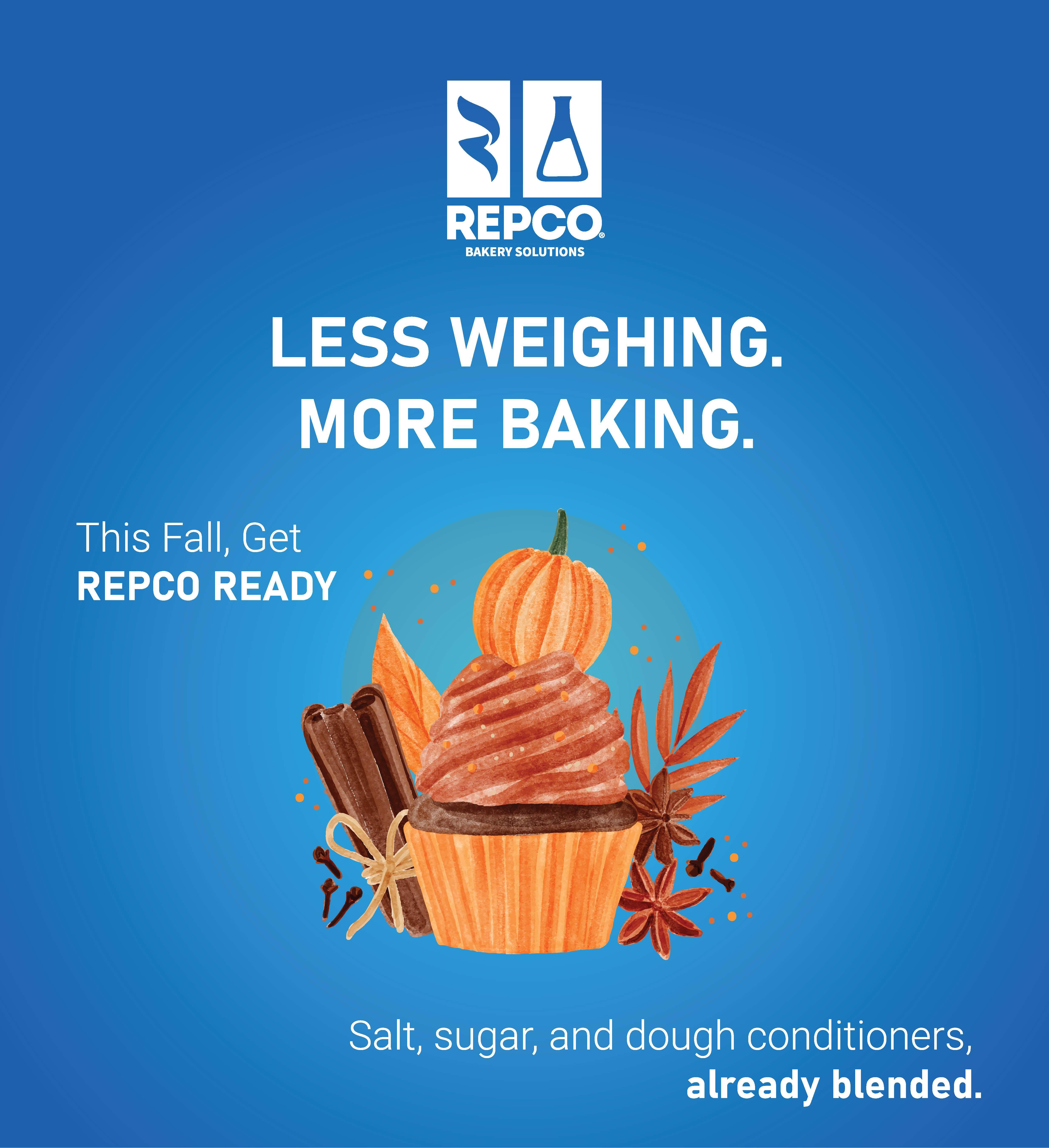


Proteins can have similar textural challenges, and that’s especially true of plant proteins.
“If you’re looking at plant proteins, they don’t form the same type of gluten network that a wheat protein will, and that can have an antagonistic effect on your baked goods structure,” Beech said. “Some proteins can give you a bit of a gritty texture and others a soft texture.”
Taste can also be affected by both fibers and proteins, imparting off notes that range from bitter to earthy. Using blends, Beech said, is one way to mitigate some of the negative impacts of adding fibers and proteins.
“Perhaps one protein gives you excellent nutritional delivery, but it comes with a bit of a gritty texture,” she said, “so finding a complementary protein to help balance that can be really helpful.”
Increasing fiber without sacrificing flavor or texture has become a particular area of focus for Bay State Milling. The company developed a high-fiber wheat flour that contains more prebiotic fiber than conventional wheat. Unlike functional fibers added during processing, this fiber is intrinsic to the grain itself, allowing manufacturers to increase nutrition without compromising the familiar taste and texture consumers expect.
“It can be quite the challenge to achieve the trifecta of taste, texture and fiber content,” said Colleen Zammer, VP of varietal solutions growth and innovation at Bay State Milling. “One of the brilliant things about flour is — because of the combination of protein and starch — it runs very well through baking equipment and can be very efficient. If you add a fiber ingredient that makes the dough sticky, you’re either slowing down your
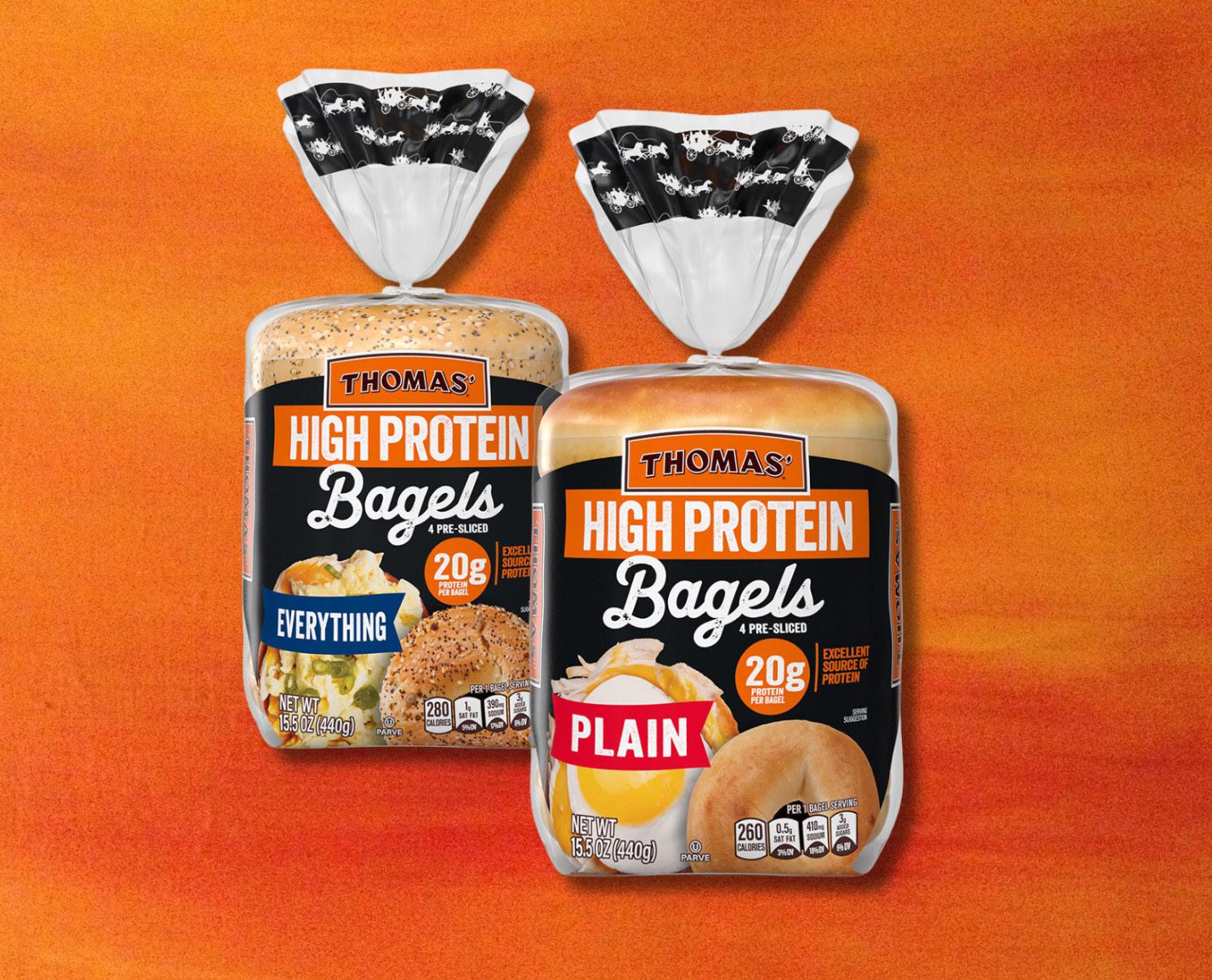
line or having a product that doesn’t come out well or that looks different than expected.”
Ingredient innovations that boost protein and fiber are at the center of many emerging product formulations, but each comes with its own set of challenges.
High-fiber flours such as Bay State’s HealthSense are developed to address these types of challenges. For bakers looking to quietly reformulate everyday staples like sandwich breads, rolls or baked snacks, this type of ingredient offers a practical path forward in a market where fiber-rich, functional foods are gaining traction.
It’s also important in an environment where consumers scrutinize labels.
“We’ve seen that consumers on GLP-1 drugs are looking much more carefully at labels,” Zammer said. “If you can avoid a fiber additive — something that doesn’t sound like food — your ingredient label will look that much better. Balancing the whole consumer experience with the clean-label piece is really important.”


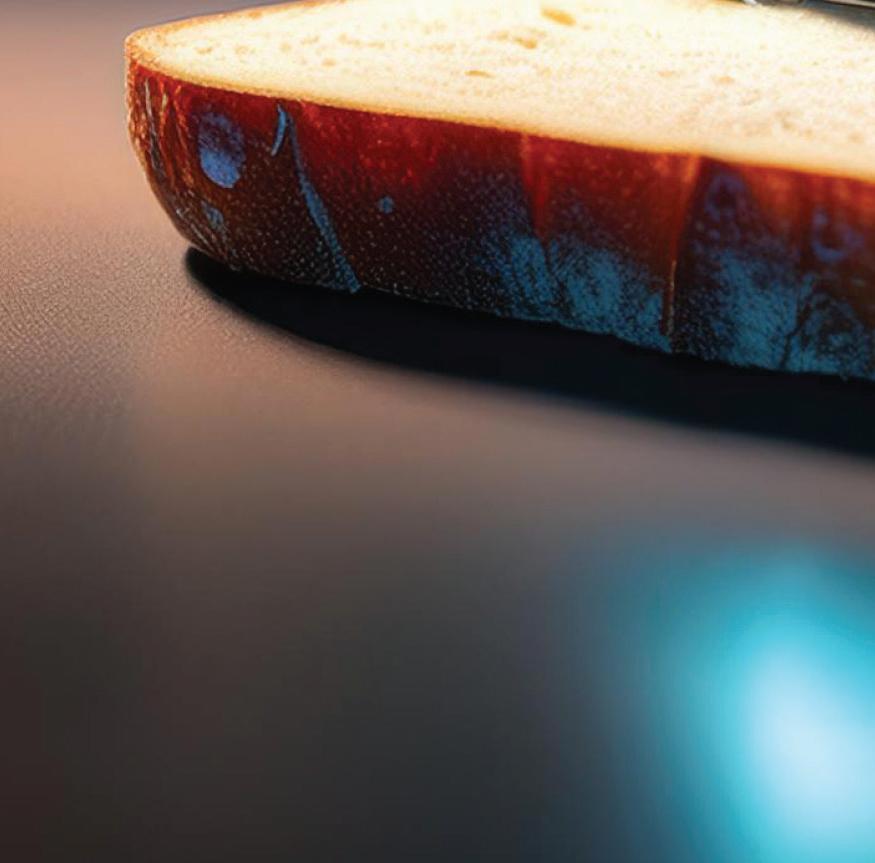

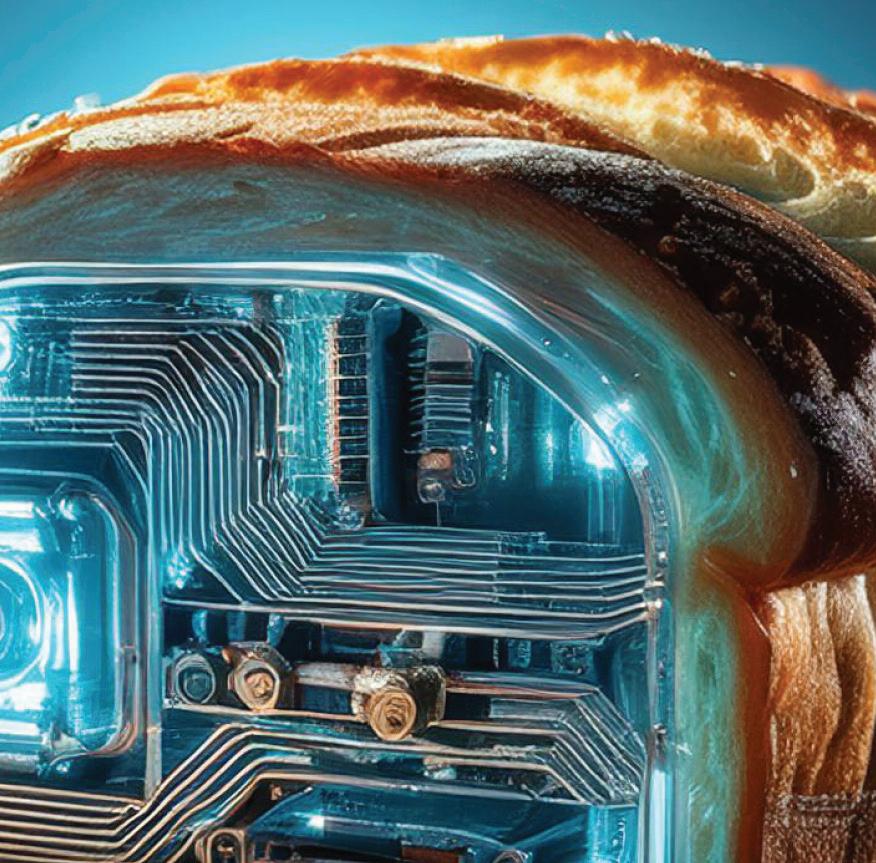


Sure, the highest quality ingredients matter. We’re pretty good at that. We’re also known for partnering with our customers to provide next-generation ingredient solutions to support their big ideas. With dedicated experts and a full innovation lab, we’d love to share our secret of success with you. Let’s get started.

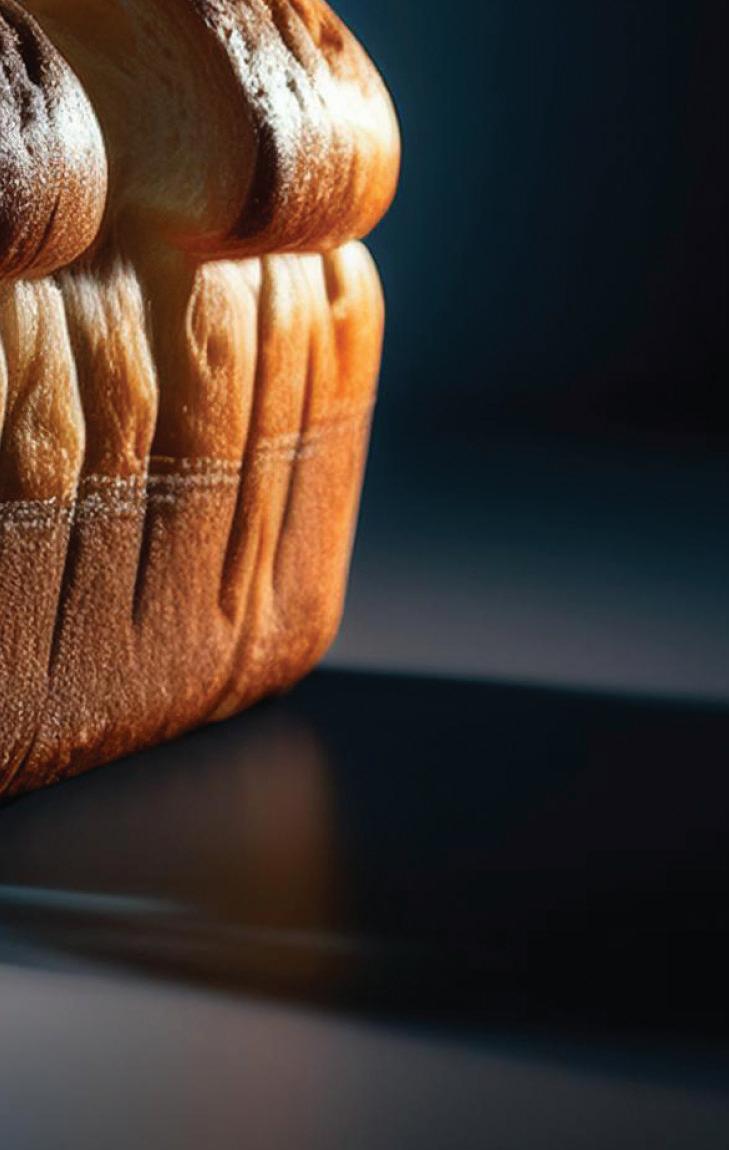


Undercover Snacks is a manufacturer that’s leaning into nutrient density and GLP-1-friendly innovation. Known for its crispy quinoa-based chocolate snacks, the brand recently opened a new processing facility to meet rising demand for better-for-you indulgences that prioritize protein, fiber and clean ingredients. By combining plant-based protein with a naturally gluten-free grain, Undercover is developing snacks that offer satiety and substance.
Focusing on innovations that extend shelf life is another way bakers can capitalize on evolving eating behaviors.
“People aren’t eating foods as fast as they may have originally,” Zammer said. “A loaf of bread may be around for a lot longer in someone’s home than it might have been when they weren’t taking a GLP-1 medication. When manufacturers reformulate a product, that’s something they need to be thinking about.”
Additionally, according to Beech, adding fibers to a product can improve freshness and shelf-life stability due to their water-holding capacity.
“When you have higher water content in a product because of fibers, it can actually improve shelf life,” she said. “But you need to watch out for mold and balance that with a proper antimicrobial.”
Corbion’s data suggests that for nearly 7 in 10 GLP-1 users, the food industry isn’t meeting their expectations, particularly when it comes to fresher, more convenient options that go beyond the typical frozen and prepackaged offerings. Smaller portion sizes, longer shelf life, and even clear packaging and nutritional claims are all part of the equation bakers should be calculating.
Reformulating products to meet the needs of GLP-1 users doesn’t have to mean a complete overhaul. But small, incremental changes may be the most effective path forward, and the payoff for brands willing to invest in these adjustments could be significant. As the category grows, so does consumer demand for food products that are functional, convenient and thoughtfully designed.
The time to act is now.
“With up to 35 percent of Americans expressing interest in GLP-1s, this is a growing wave,” Chen said. “Because the current adopters tend to be affluent, health-conscious consumers, there’s a clear premium opportunity for brands that can adapt. The future of food won’t necessarily be about more, but it will absolutely be about better.” CB
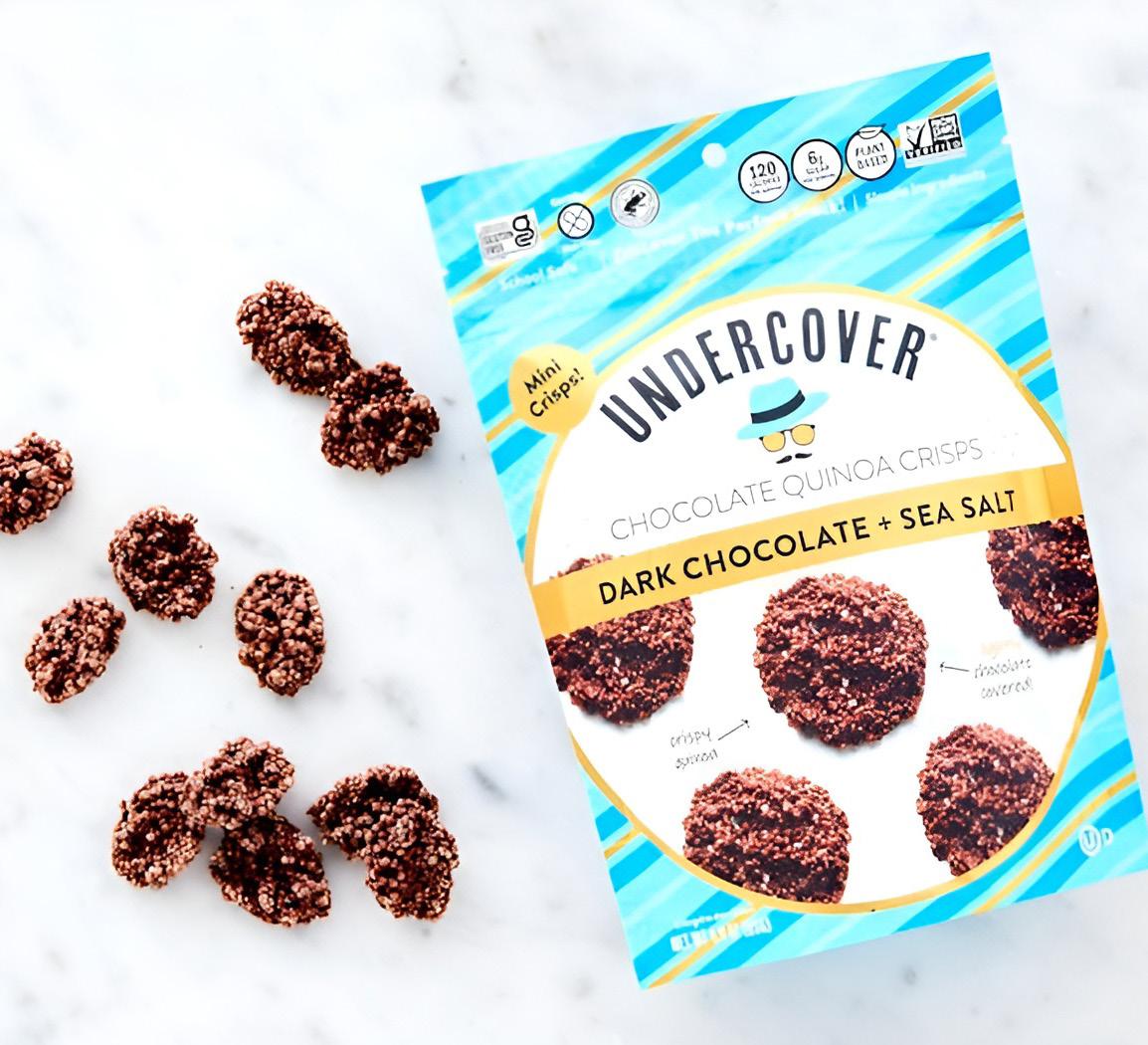
Undercover Snacks is leaning into demand for better-for-you indulgences that prioritize protein and fiber.






The first bite of a croissant or donut is soft, warm and indulgent — exactly as it should be.
But behind the freshness is a process that’s anything but efficient. Most bakery items are baked, packed, frozen, shipped and stocked — all within 24 hours.
Consumers don’t notice. Producers must.
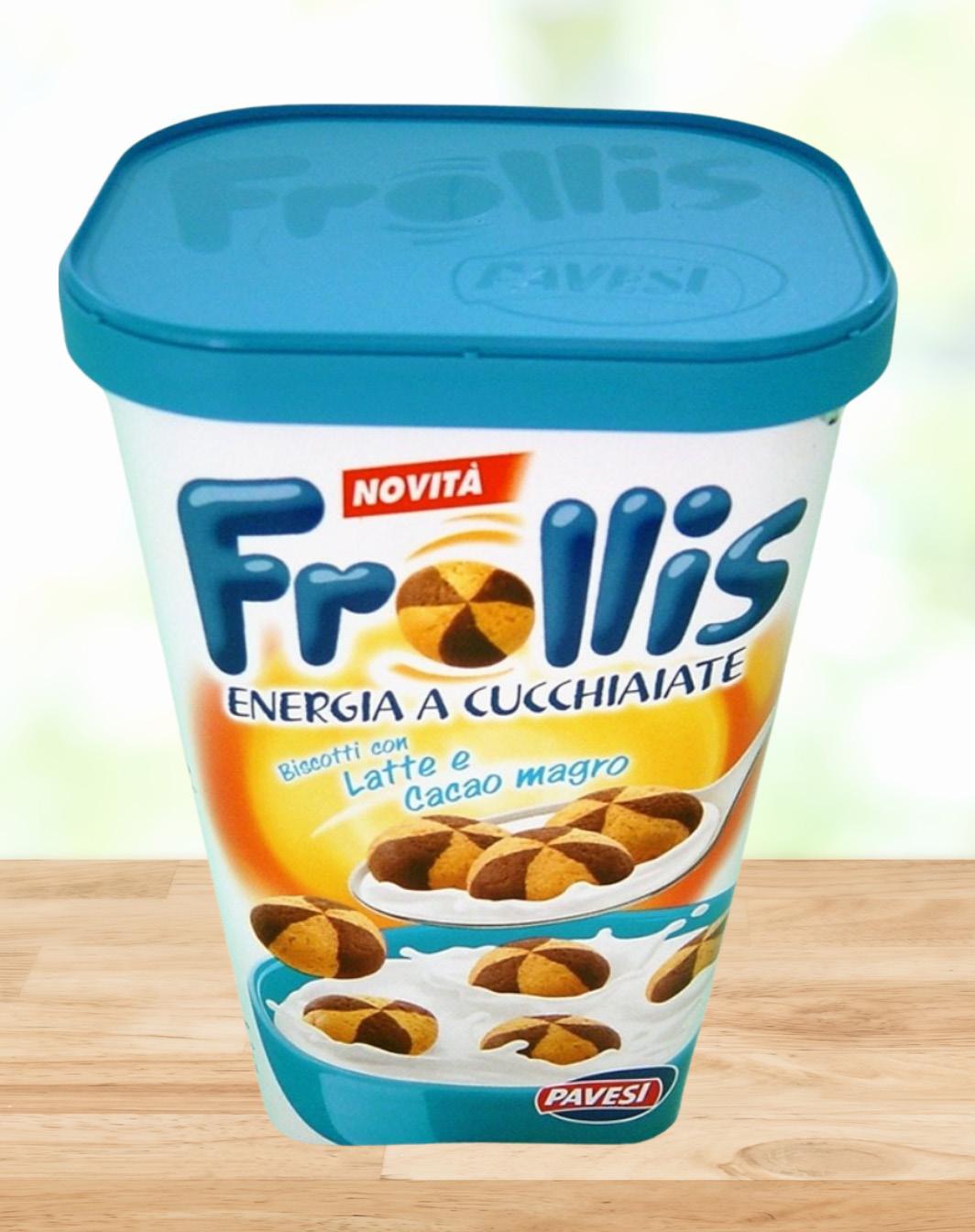
Traditional systems depend on conventional plastic packaging like clamshells, which can be bulky, fragile and manually intensive. Lids misalign, labels shift and every extra touchpoint increases the risk of waste. When packaging fails, shelf life shortens, product quality drops and margins shrink.
So, where can bakers turn to for a trusted alternative? Harpak-ULMA.
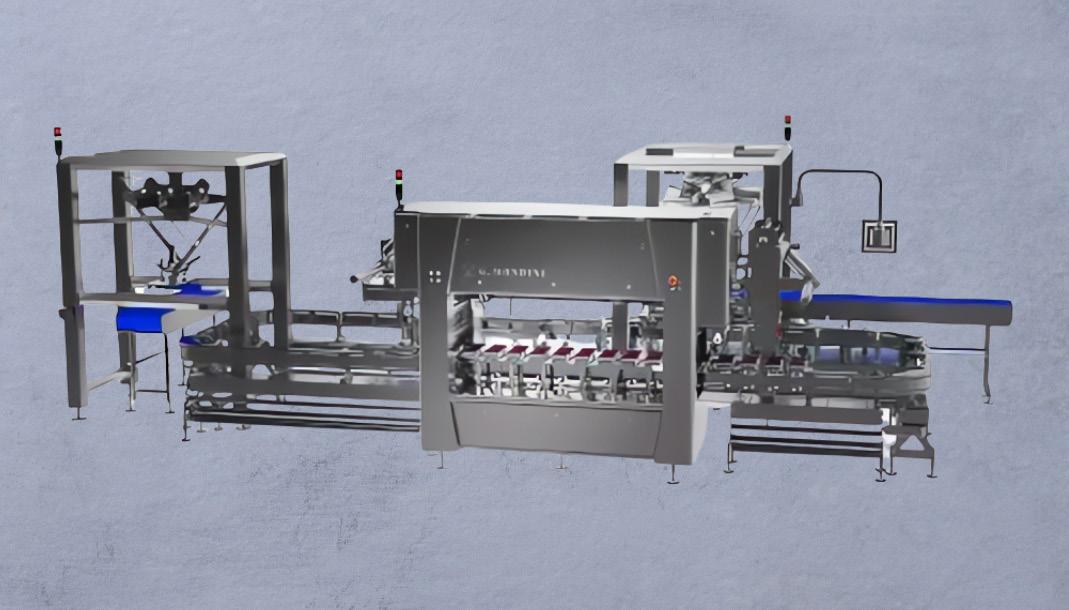
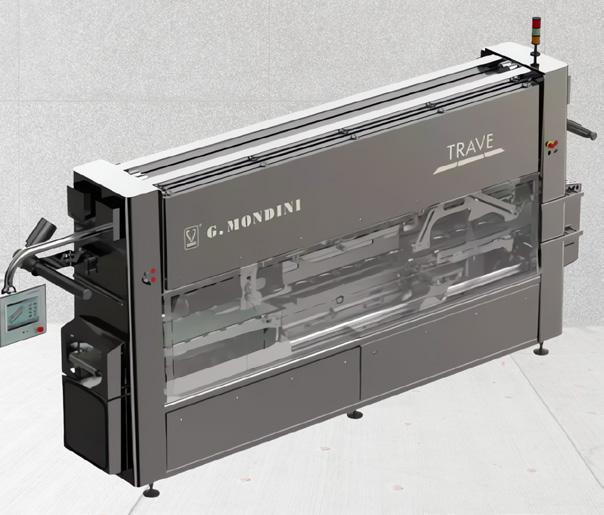

Tray sealing offers a more streamlined solution. It utilizes a single-tray base and a thin top film that’s sealed via heat or modified atmosphere packaging (MAP). The result is a 20%-50% (on avg.) cut in plastic use, fewer materials and a lower cost per unit.
Clamshells = $0.18 per unit
Tray + film = $0.11 per unit
Savings per 2-million-unit run: $140,000 per year
Material savings is only the start. With MAP, baked goods remain fresh without spiral freezing, which eliminates the need for freezing infrastructure, reefer trucks or cold-chain maintenance.
Bakers can save between $215,000 and $550,000 (on avg.) by removing a process or product they might not even need.
Flow wrap typically involves multiple stations: tray loading, wrapping, sealing and labeling. Tray seal condenses this into one efficient system, resulting in cost savings:
• Up to 30% less material
• $0.03 per unit (avg.)
• $83,000 (avg.) per year, per line in labor
• $40,000-$75,000 per year, per line in reduced downtime
• Up to 70% shrink reduction with better MAP integration
Tray seal adds standout shelf life that’s not just a number but also a lever for profitability. For high-turn items such as pastries or filled goods, it’s a game changer. A bakery item with a three-day shelf life sees about 10% shrink. MAP and tray seals extend that to four days and sell-through rises to 99%. One extra day can cut shrinkage by up to 90%.
Tray seal packaging also delivers on sustainability. Recyclable materials such as pressboard and fiber trays reduce packaging waste by up to 50%, allowing for a low-profile format with tighter pallet stacking and reduced truck shipments.
That means bakers can skip one weekly truckload and save 23.5 metric tons of CO₂ annually. Combine that with the energy saved by eliminating spiral freezing, and integrating tray seal is the equivalent of removing between 30 and 40 (on avg.) gas-powered cars from the road each year.



Start your day at IBIE with a pastry and hand-crafted, premium coffee at Middleby’s CommercialBaking Cafe You’ll hear from Joanie Spencer, editor-in-chief, on the latest industry trends and engage with Middleby category experts about innovations to fuel your company’s growth and efficiency.
Sunday 10am
• Bread, Buns
• Sweet Goods, Cakes, Muffins
Monday 10am
• Cookies, Crackers, Energy Bars
• Artisan, Flatbread
Tuesday 10am
• Pizza, Pastries
• Tortillas, Snacks











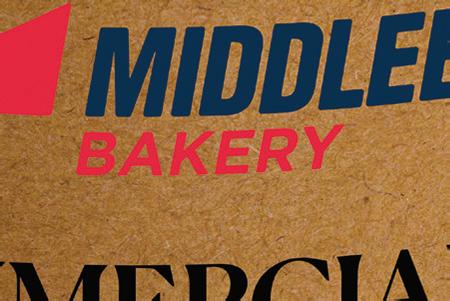




















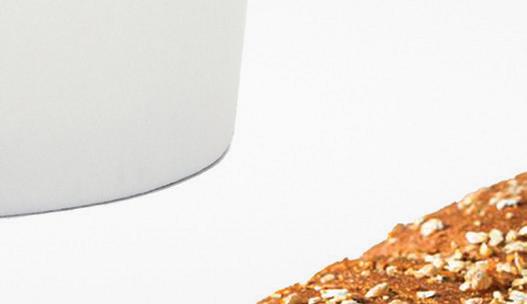
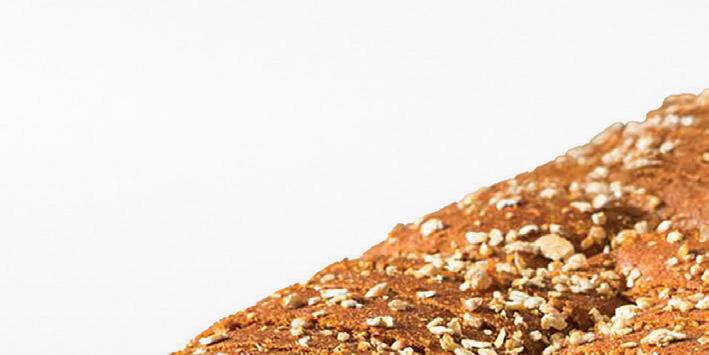




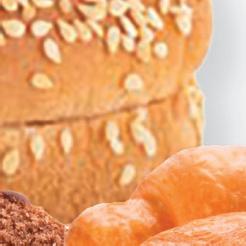

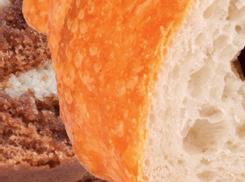


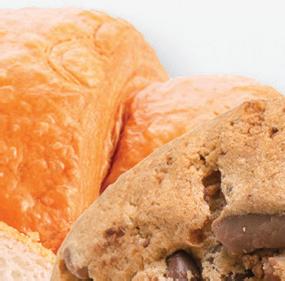
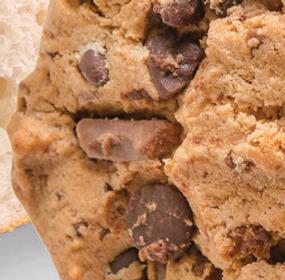
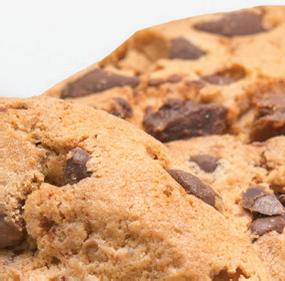

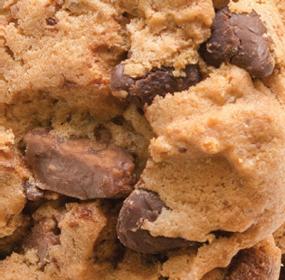

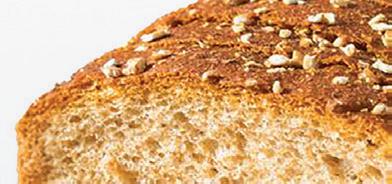



Catching up is never fun, but staying ahead can be.
BY LILY COTA

Keeping up isn’t always easy, especially in an industry known for its adaptability and fleet-footed evolution. Comprehensive events such as the International Baking Industry Exposition (IBIE) provide the one-stop shop needed to stay ahead of the shifting trends and budding initiatives shaking the industry.
Read on to dive into the top 10 trends guiding the 2025 Baking Expo.
Across every industry, automation is being adopted at rapid rates. Labor shortages and overall rising operational costs are driving baking companies of all sizes to make changes to their production, manufacturing and distribution methods — fast.
AI-powered ovens, robotic dough handling systems, smart sensors for moisture and texture, and predictive maintenance tech, as well as Industry 4.0 integrations, are on the rise and worth keeping an eye on at the Expo.
As a result of persisting labor woes, the industry is placing greater focus on professional development resources ... which has the potential to provide
long-term gains. Many are taking strategic measures in the form of on-the-job training programs, employee engagement strategies, mentorship models and succession plans to retain skilled workers and prepare future leaders.
“Younger generations like to learn,” said Scott Calvert, business strategies manager for the Retail Bakers of America and owner of The Cake Plate, in an exclusive interview with Commercial Baking earlier this year. “If there are [IBIE classes or sessions] that come up that someone is interested in, we get them in. When they want to increase their skill sets and further their knowledge, so do we.”
Despite economic impacts affecting things behind the scenes, consumers are maintaining demand for their go-to baked goods. In turn, baking companies must maintain their ability to meet that demand, even in the face of uncertainty.
Ingredient sourcing, global disruptions, transportation and logistics impact consistency and costs across the industry. To combat these challenges, bakeries are diversifying their supplier networks — often achieved through connective events like IBIE — and implementing digital tracking tools for improved inventory visibility.
Consumers view clean-label i ngredients as natural, recognizable and easy to understand. Clean-label products are typically free from artificial colors, flavors, preservatives and other additives. These desirable ingredients include natural sweeteners like honey and monk fruit, natural preservatives such as vinegar
“When [younger generations] want to increase their skillsets and further their knowledge, so do we.”
Scott Calvert | business strategies manager, Retail Bakers of America | owner, The Cake Plate
and lemon juice, natural colors and flavors from fruit and vegetable extracts, and plant-derived texturizers and emulsifiers.
As demand for transparency and natural ingredients rises, formulation shifts toward clean-label products are following suit. Bakers are navigating this by prioritizing balance when it comes to taste, texture, shelf life and clean-label appeal. Enzyme-based dough conditioners, egg replacers and natural mold inhibitors are finding their way into more baked goods, and so is an updated approach to shelf stability that excludes gums and emulsifiers.
Once an emerging trend, sustainability has become a minimum expectation. From upcycled ingredient implementation such as spent grain and pulp flours, to regenerative grain sourcing (think Kernza and heritage wheats), the industry is moving toward a more sustainable future with innovation at the forefront.
Alongside more sustainable product development practices, the i ndustry is also placing a heavy focus on carbonneutral packaging and waste reduction initiatives. Companies such as Mondelez International have been recognized for their tenacious pursuit of greener, more sustainable practices through refined goals built on the latest intelligence.
Grain-based products that align with specific health goals, dietary needs and performance lifestyles are bringing in new consumers looking to factor even more value into their indulgence. This better-for-you category encompasses functional foods and fortified baked goods, ancient grains, high-fiber flours, plant-based and vegan formulations, gluten- and sugar-free alternatives, and high-protein options aligned with developing priorities and nutritional requirements. Functional ingredients can affect a product’s structure, quality, texture and nutritional value, as well as how it looks and tastes.
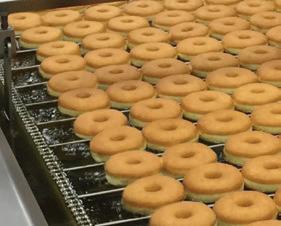
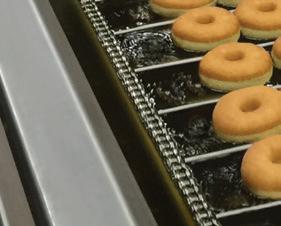
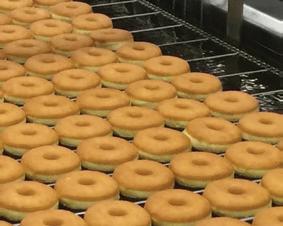







Moline manufactures the three core elements of yeast-raised donut systems in sheeting, proofing, and frying.
• Mid capacity/high flexibility or highest capacity systems available.
• Fully rounded technical support for operations, maintenance, and sanitation.
• Full washdown systems designed for 24/7 operation.
• Full offering of in-line finishing including glaze, icing, topping, sugaring and crunch.
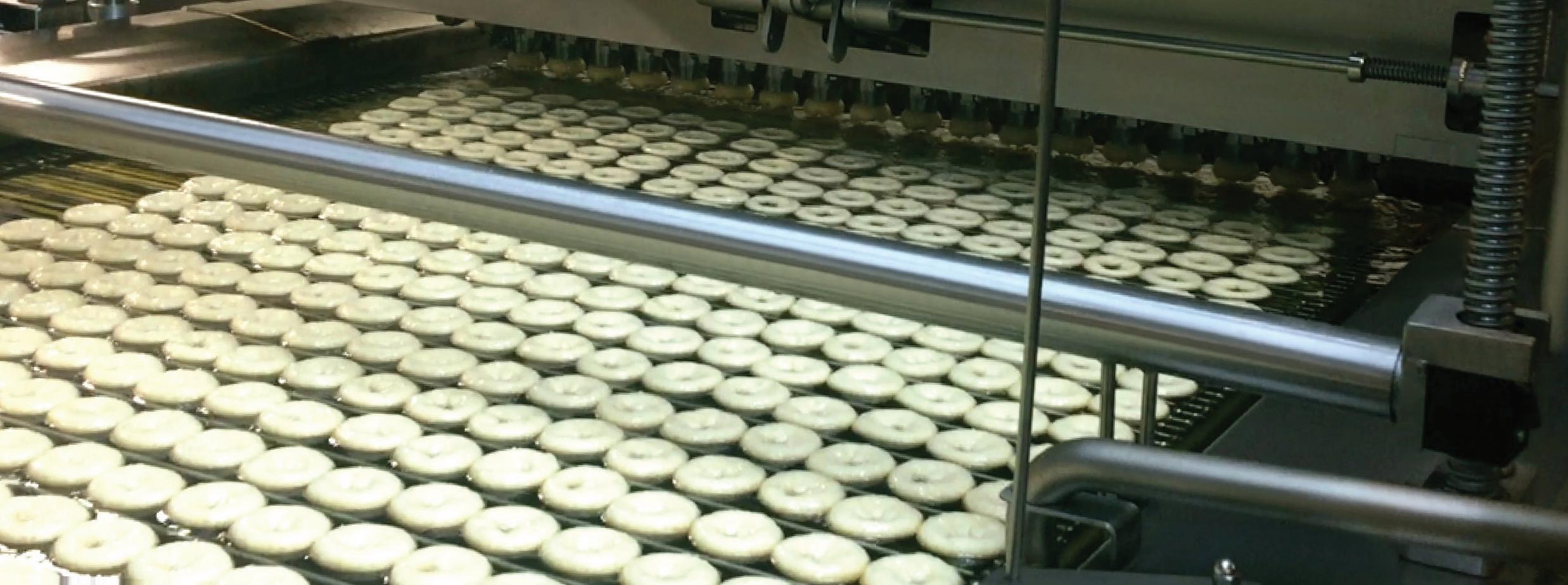



Baking companies are altering the way they craft their products, using AI to tap into consumer preferences and identify key areas of innovation. Generative AI platforms such as Tastewise exist to do just that by analyzing consumer data and predicting emerging food trends, making it easier for brands to develop with market demand in mind.
In R&D, companies are implementing generative AI for recipe creation and testing, machine learning for trend forecasting, and digital twins for prototyping food textures and baking performance. On the production floor, bakeries that apply AI at every step in the process, from ingredient handling to packaging, can streamline their operations at a scale never seen before.
Innova’s “Top 10 Global Food and Beverage Trends 2025” report highlighted a change in health and wellness priorities, acknowledging a growing demand for personalization and tailored nutrition plans. Brands are being challenged to meet targeted needs at all life stages, combining personalization with balanced nutrition and convenience in functional food, and consumers are responding with an increased budget for specialized, premium products. Baked goods that boast unique flavors or exclusive experiences can grab attention from consumers who previously looked the other way.
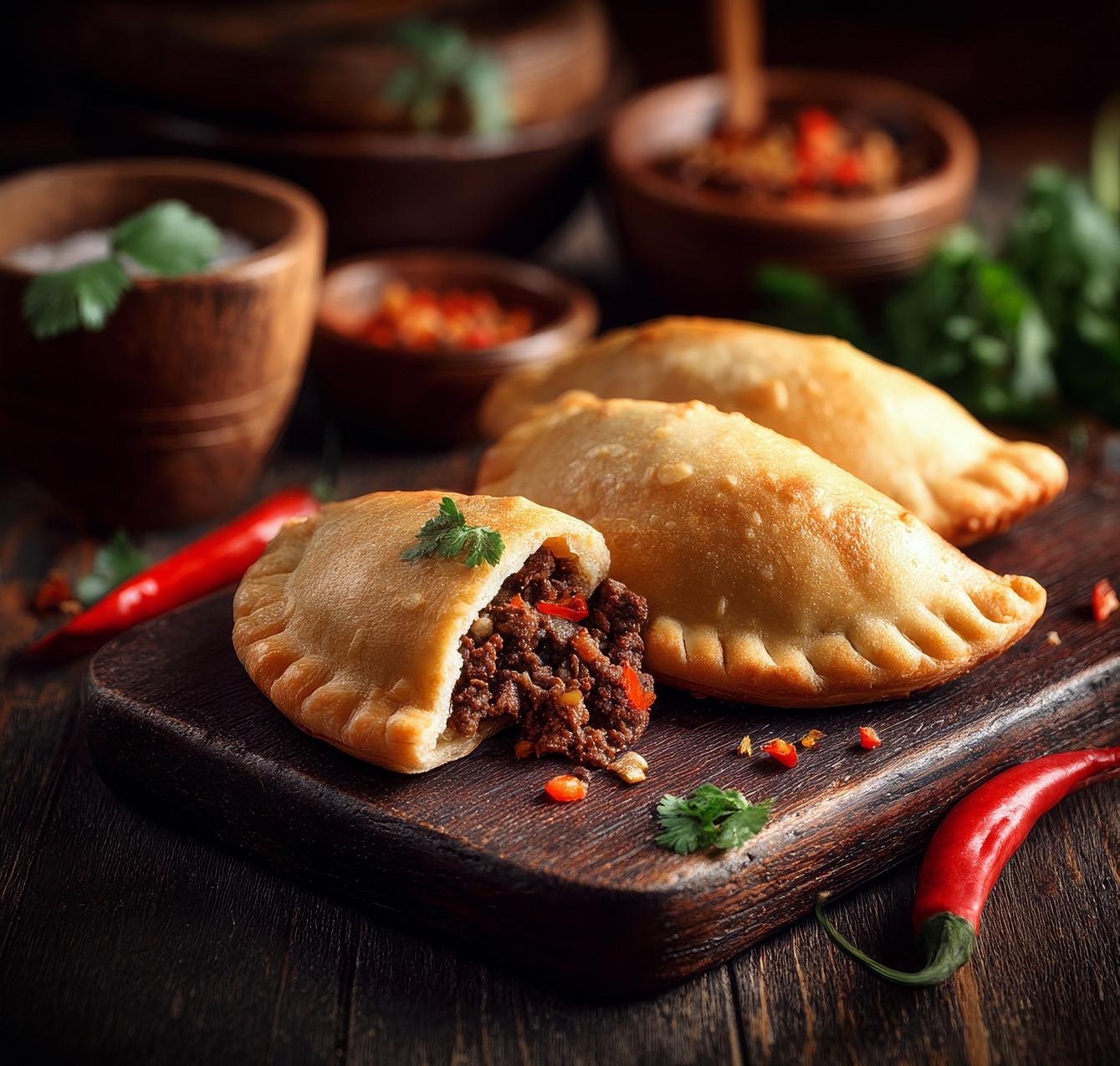
One of the ways brands can stay on top of this trend is by utilizing new technologies, such as generative AI, that can help identify the specific personalized and elevated touches consumers seek.
Shifts in consumer behavior are everlasting, influencing product innovation and demand across every grain-based category. Among the top themes guiding the way, interest in global flavors, better-for-you ingredients, permissible indulgence, and specialty diets such as high-protein or gluten-free baked goods are topping the charts.
Overall, consumers are looking for more out of their baked goods, and they’re getting that by balancing convenience, quality, price, sustainability and flavor preferences. Limited-time products that offer a temporary venture into new flavor profiles can influence consumers to step out of their box and try new brands.
As technology adapts, so do the desires of consumers, and they’re pushing for fast, flexible delivery, particularly when it comes to specialty and premium products. Alongside traditional distribution channels, delivery-focused products and packaging, third-party fulfillment partnerships, and integration with last-mile services are reshaping how products reach consumers.
Companies can make the most of this trend by offering direct-to-consumer subscription bread boxes, cake kits, freezer-ready heat-and-eat pizzas and snacks with gourmet credentials, delivered right to people’s front doors. CB

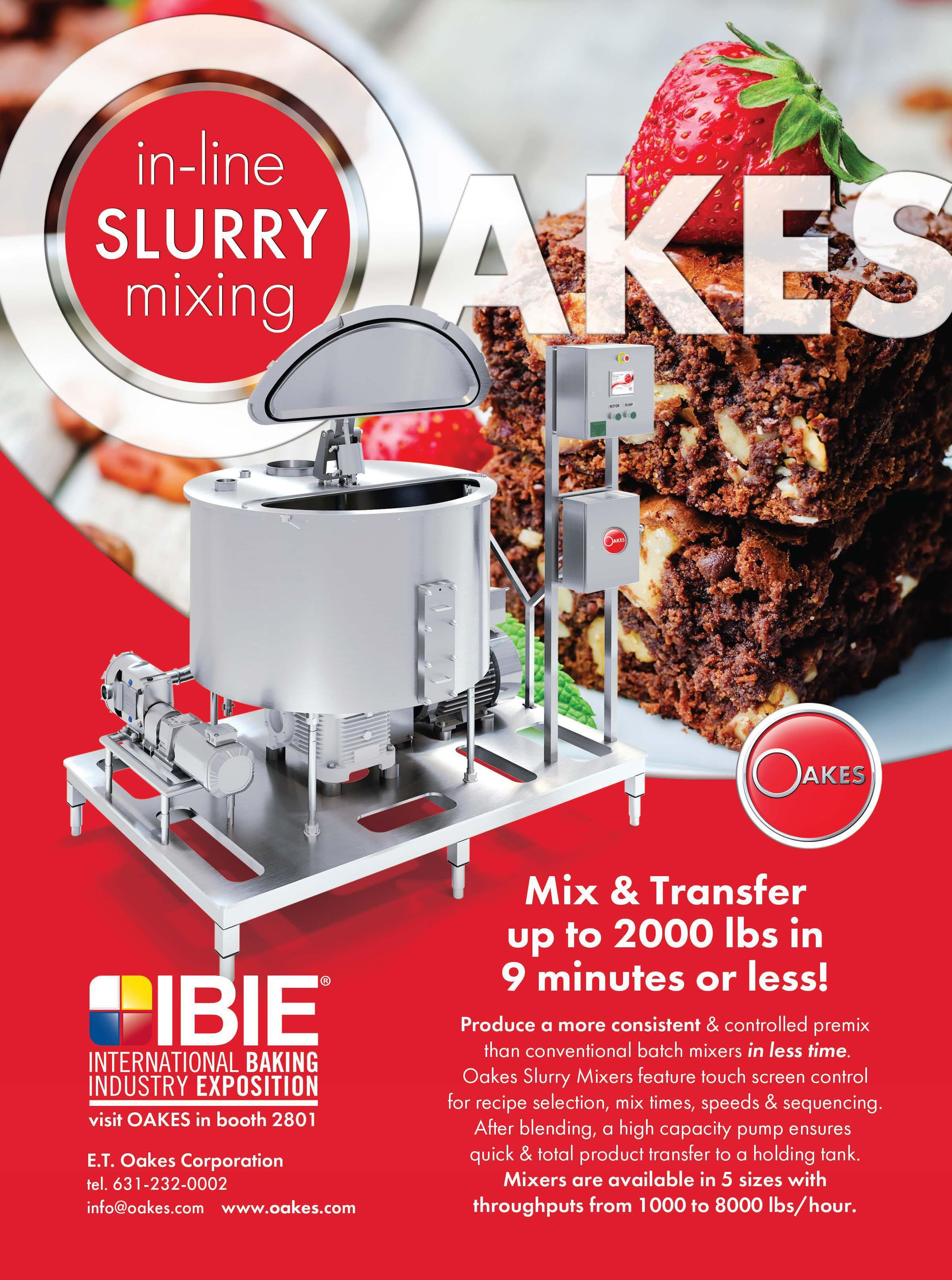


Our bread bags made with cast film provide:









•Superior clarity and low haze



• Sho'paque® finishing technology
• Matte and gloss finishing options



• Reclosability features







•Excellent durability and machine performance














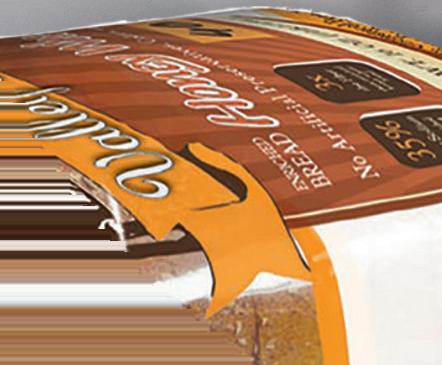























Scan here to learn more about our full range of bakery packaging.













































































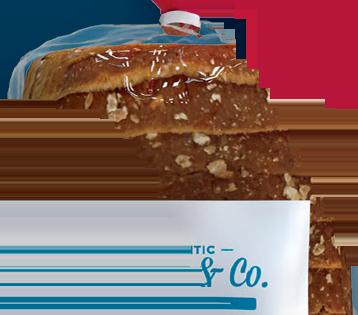





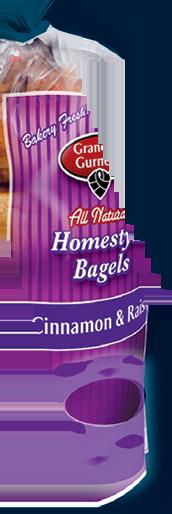




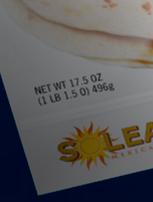

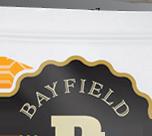



















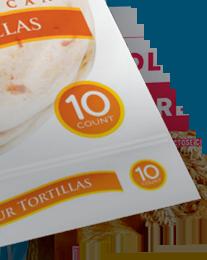

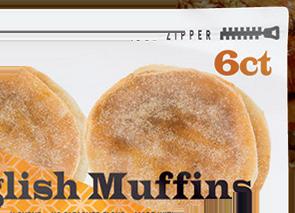












BY BETH DAY
Tortillas and flatbreads are versatile vehicles for endless ingredient combinations. It’s no surprise that 61% of Americans consume tortillas at least once a year across home and restaurant meals, according to The Bakery Playbook 2024: Tortillas , a consumer research study series from the American Bakers Association (ABA). Manufacturers are innovating to provide a diverse range of products that deliver flavor, functionality and health claims.
The overall hard/soft tortilla/taco kit segment reported more than $4.52 billion in sales with a 1.5% increase vs. a year ago, according to Circana data for the 52-week period ending May 18, 2025. Hard/soft tortillas within the Mexican food subcategory made up the vast majority of tortillas sold last year and is doing so again this year.
“Driving growth for hard/soft tortillas are private label and brands including Mission Carb Balance, El Milagro, Ole Mexican Food’s La Banderita, Ole, Ole Xtreme Wellness and La Banderita Carb Counter,” said Dawn Aho, principal of client insights, bakery vertical at Circana. “While gains for many of these brands over the past year are attributed to innovation focused on better-foryou options, the majority of growth stems from sales of original tortillas.”
Tortillas Dollar Sales REFRIGERATED
Top Hard/Soft Tortillas/Taco Kits Makers
Growth for center store tortillas is propelled by Irving, TX-based Mission Foods Inc., Norcross, GA-based Ole Mexican, and private label. Mission Foods accounts for almost 38% of the market share, posting dollar and unit increases, according to Circana. While Ole Mexican brands Total US - Multi Outlet W/ C-Store (Grocery, Drug, Mass Market, Convenience, Military And
hold a smaller share, they demonstrated strong gains, with 10.2% dollar and 8.5% unit increases.
“Performance by Mission Foods’ tortillas is exclusively driven by its Carb Balance brand, with $510 million in sales, up 7.4 percent versus a year ago,” Aho said. “Three Carb Balance products report much higher distribution levels this year over last.”
Several Ole Mexican tortilla brands are boosting center store growth. La Banderita increased dollar sales by 10.0%, and La Banderita Carb Counter reported $127 million in sales, up 15.5%. The Ole brand showed a 10.1% gain, and the Ole Xtreme Wellness brand boasted a 7.5% increase in dollar sales.
“Two of the four growth brands for Ole Mexican leverage better-for-you claims with items that are zero carb, gluten-free, keto-certified and high fiber,” Aho explained. “Some of these products are available in street taco sizes, and distribution gains are helping sales versus year ago.”
Refrigerated tortillas, while a small share of the total category, posted 6.1% dollar and 3.4% unit gains vs. a year ago, according to Circana. Austin, TX-based Siete Family Foods, acquired by PepsiCo in January; San Diego-based Franco Whole Foods and
Weslaco, TX-based La Abuela Mexican brands all showed significant dollar and unit increases. These outpaced private label, which saw a -22.8% decline in dollar sales and a -21.1% decrease in unit sales, per Circana.
“These brands experienced distribution gains, and Siete is catering to the health-conscious, offering alternative tortillas made with cassava, chickpea, almond and cashew,” Aho said. “Refrigerated tortillas also imply freshness, and they are located near cheese, salsa and sour cream, which are often used with tortillas.”
According to ABA’s Bakery Playbook, two-thirds of Americans believe in betterfor-you versions of meal-related baked goods, including tortillas. Manufacturers are leveraging demand for bakery products that adhere to certain dietary needs such as gluten-free, low carb and high protein.
“Tortillas are alternatives to bread and rolls,” Aho said. “In past years, egg white and cheese wraps have been introduced as lower-carb substitutes for tortillas. There are vegetable and herb offerings, as well as street taco tortillas as line extensions within many brands.”
Circana data showed declines for center store wraps/flatbreads, excluding tortillas. However, private label reported increases for both center store wraps and naan. Consumers tend to trade down to reduce costs, so there may be opportunity for brands to offer comparable value to compete with private label flatbread products.


One brand showing growth in center store flatbreads is Ridgefield, NJ-based Toufayan Bakeries, which reported 5.8% dollar and 5.7% unit increases and 22.6% of the center store flatbread dollar share, according to Circana. The brand’s Garlic Tandoori, Original Tandoori and White Flatbread items are driving most of the growth this year. However, Aho noted, this growth is organic, as there were only slight distribution gains.
While perishable perimeter flatbreads decreased -33.7% in dollar sales compared to a year ago, the Circana data showed significant dollar and unit gains for the perishable perimeter pita segment, 8.4 % and 11.1%, respectively. Growth is attributed exclusively to Lawrence, MA-based Joseph’s Bakery, which holds 91% of the subcategory.
Perimeter flatbread reported
$20.09
million in the latest 52 weeks ending May 18, 2025.
Source: Circana
“Six products represent the bulk of Joseph’s Bakery brand,” Aho explained. “One of the six items is new this year, two others showed strong growth as compared with a year ago and all of them have had distribution gains.”
The perimeter wraps subcategory reported 28.2% unit growth, with Dublinbased BFree Foods garnering 81.8% of
PITA
FLATBREAD
LAVASH
WRAPS
ALL OTHER
Total US - Multi Outlet w/ C-Store (Grocery, Drug, Mass Market, Convenience, Military And Select Club & Dollar Retailers) | Latest 52 Weeks Ending May 18, 2025
Source: Circana Omnimarket Integrated Fresh, a Chicago-Based Market Research Firm (@WeAreCircana)
the market share. Offering gluten-free and carb-friendly products, BFree Foods is driving performance for the segment, and its High Protein White, Quinoa & Chia Seed and Sweet Potato tortillas experienced significant distribution gains over last year.
FGF holds 93.4% of the perimeter naan market share but has experienced declines that can be attributed to its Stonefire products. Aho noted that this year’s 5.7% decline in dollar sales is due to Stonefire wrapping up strong growth in 2024, as well as slight distribution declines for its top five items.
Continued innovation with betterfor-you options will attract and retain consumers. Aho suggested that strong
performance by several brands such as BFree Foods and Siete Foods supports expanding portfolios with popular health claims when it makes operational sense.
“Variety through flavors and sizes also generates excitement,” Aho said. “Street taco-size tortillas have resonated, and offering fewer tortillas and flatbreads per package may appeal to budgetconscious consumers as well as smaller households.”
Leveraging consumer interest in tortillas and flatbreads as a versatile and internationally inspired alternative remains relevant. Offering these types of products in a variety of flavors and sizes — while made with the desired health claims — can prove to be a winning strategy for producers. CB
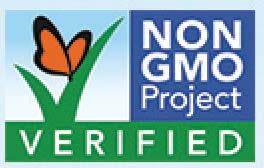



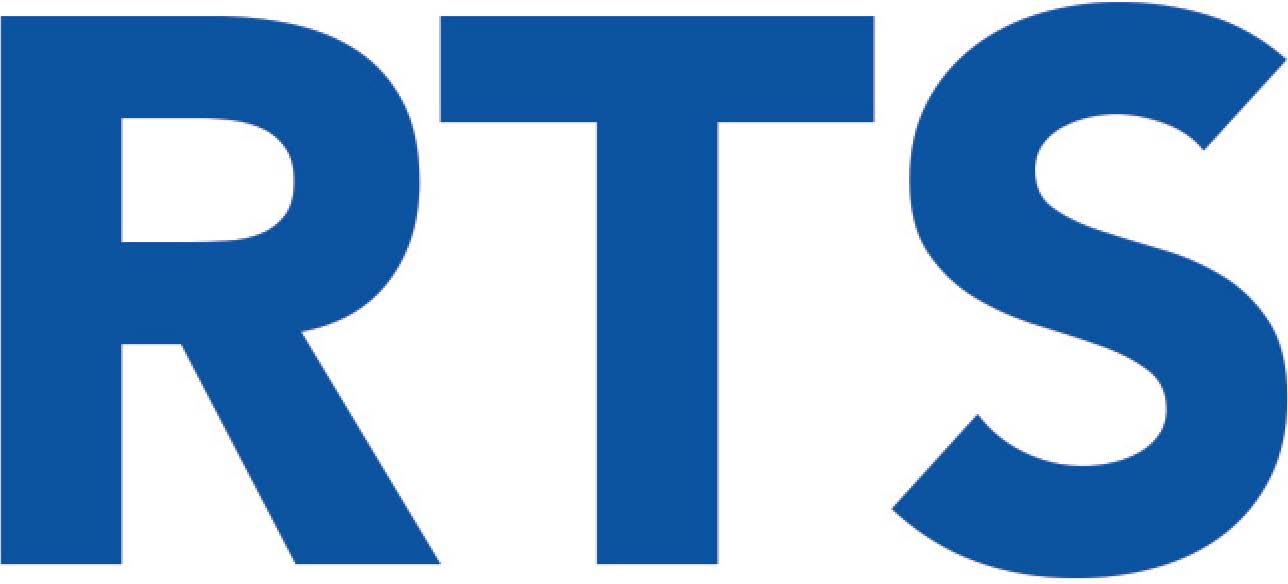
Foundedin1992asafunctionalingredientmanufacturingcompany, RIBUS, Inc.suppliesnaturalandorganicplant-basedingredientstofood,beverage, dietarysupplementandpetcompaniesaroundtheworld. Thefoundationofour businessistoprovidecleanlabelalternativesthatcanhelpsolveproduction issuesandbringinnovationtoyourproducts, whileremovingsynthetics.



Flat,


100 years of partnership with the bakery industry.
Energy efficient – lighter belt means lower carbon footprint.
Fast, clean high power laser cleaning.
Installations, upgrades, repair, maintenance and spare parts.
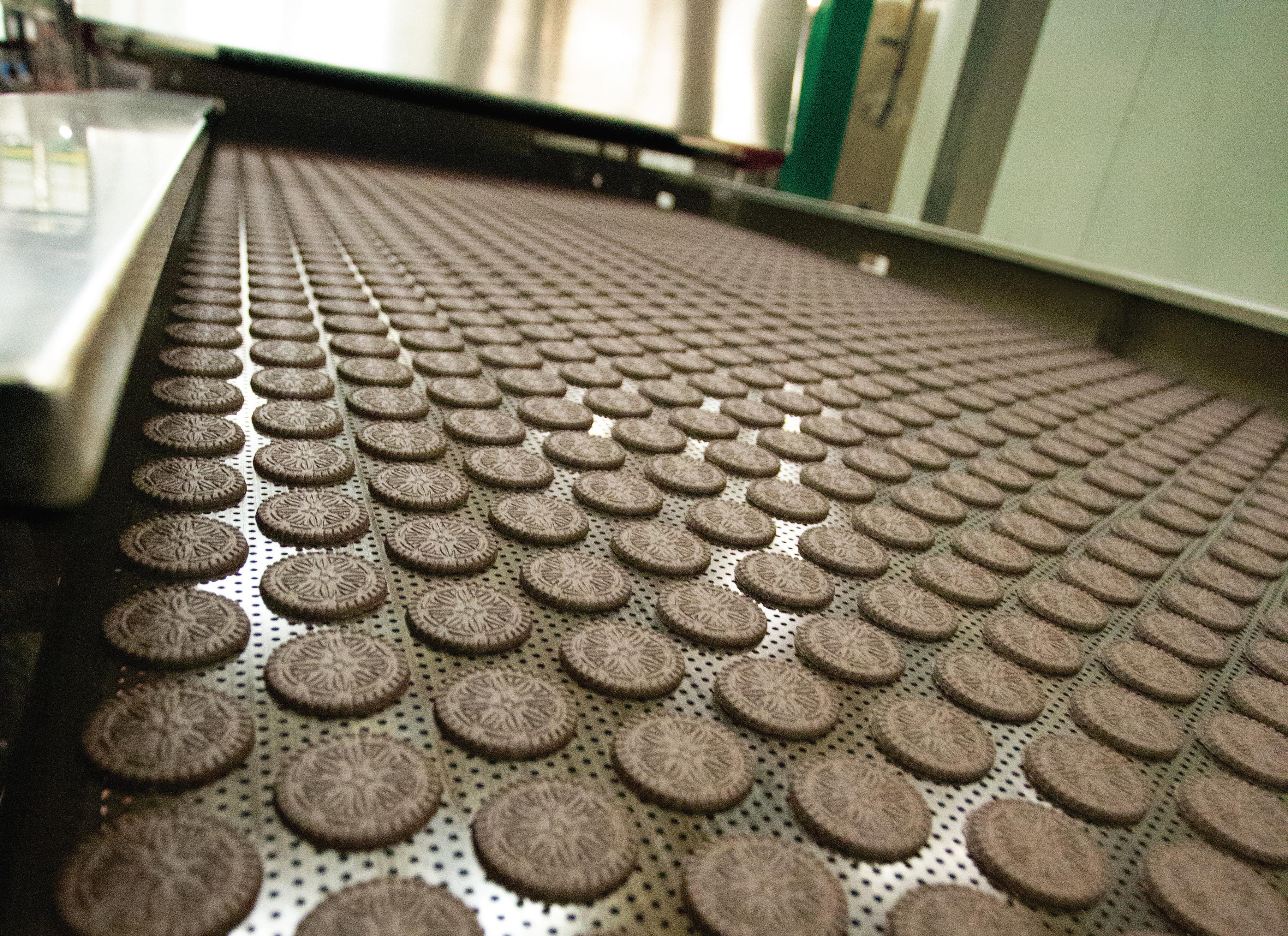

BY BETH DAY
Source: Circana
Cookie lovers are devoted to their favorites, enticed by decadent ingredients and innovative styles. The snacking staple is on its way to becoming an all-day indulgence, consumed anytime and evolving beyond a simple treat, according to Mintel’s “US Cookies Market Report 2024.”
Mondelez International and private label reported the highest dollar sales for the overall cookie category, with $4.94 billion and $1.54 billion, respectively, according to Circana’s data for the 52 weeks ending May 18, 2025. Bimbo Bakeries USA (BBU) and Ferrero USA showed strong gains in both dollars and units. BBU reported 7.7% dollar and 7.2% unit growth, and Ferrero showed 30.4% growth in dollar sales and 17.1% in unit sales.
“Bimbo Bakeries’ cookie sales were driven by its Marinela brand,” said Dawn Aho, principal of client insights, bakery vertical at Circana. “Sponch cookies made with marshmallow, Canelitas cinnamon-flavored cookies and Principe sandwich cookies are the top contributors to Marinela’s growth. The brand has experienced distribution gains over the last year, which often contribute to positive performance.”
The Circana data reported more than $15.8 billion in dollar sales for the entire cookie category. While overall growth is slow, there is more to the story. Aho explained that Circana’s cookie category is composed of three segments: the main cookie aisle, which represents 72% of dollar sales, and two segments within the perishables department: perimeter cookies, which represent 21% of total dollar sales, and center store cookies, with 7% of dollar sales.
“While dollar sales are down for perishable center store products, both perishable perimeter — driven by private label — and cookie aisle products — driven by branded products — are showing dollar sale increases,” Aho said.
Private label dominates perimeter cookies, showing dollar and unit growth in almost all subcategories. When looking at dollar share, Aho observed that private label holds 84% in the perimeter’s traditional segment, with chocolate chip/chunk, oatmeal raisin and sugar flavors being the most popular. It carries 62% of the iced/frosted subcategory, 91% of multi-pack for items coded as multi-flavored or assorted, and 78% of perimeter holiday seasonal items, primarily pumpkin and pumpkin spice flavors.
Private label perimeter cookies offer cost-effective options, such as variety packs for larger families and occasions requiring greater quantities.
“Popularity of value items in the perimeter may be attributed to appealing price points and unique varieties that may be perceived as fresher or home-baked, which meet a variety of household needs,” Aho said.
That said, Mondelez’ Kimberley’s Bakeshoppe brand is driving gains in perimeter traditional cookies, with sales increases and slight distribution gains. Aho noted that this brand also showed significant increases in the iced/ frosted segment for several different flavors and considerable distribution gains since last year, nearly doubling its distribution. Within perimeter holiday seasonal cookies, Mondelez’ The Worthy Crumb, Two-Bite and
Perimeter Cookies Dollar Sales*
TRADITIONAL
ICED | FROSTED
ASSORTED | MULTI-PACK
SPECIALTY
TRAY | KIT
HOLIDAY | SEASONAL
ALL OTHER TOTAL
Total US - Multi Outlet w/ C-Store (Grocery, Drug, Mass Market, Convenience, Military And Select Club & Dollar Retailers) | Latest 52 Weeks Ending May 18, 2025
Source: Circana Omnimarket Integrated Fresh, a Chicago-Based Market Research Firm (@WeAreCircana) *Dollars rounded to nearest hundredth.
Kimberley’s Bakeshoppe all gained distribution over the last year through primarily pumpkin flavor profiles.
Improving quality and highlighting premium attributes attract consumers to the category, according to Mintel’s report. Cookies play a role in many meal occasion mindsets, including indulgences perceived as permissible, because they are made with top-quality ingredients.
“Premium cookies made with highquality ingredients worthy of being included on the package certainly fit that role,” Aho said. “Advertising can also position cookie brands as special-moment cookies. For example, Pepperidge Farm’s Milano advertising always seems to strike that permissible indulgence sweet spot.”
Perimeter private label assorted/multi-pack cookies captured
91.2% of the dollar share.
Source: Circana

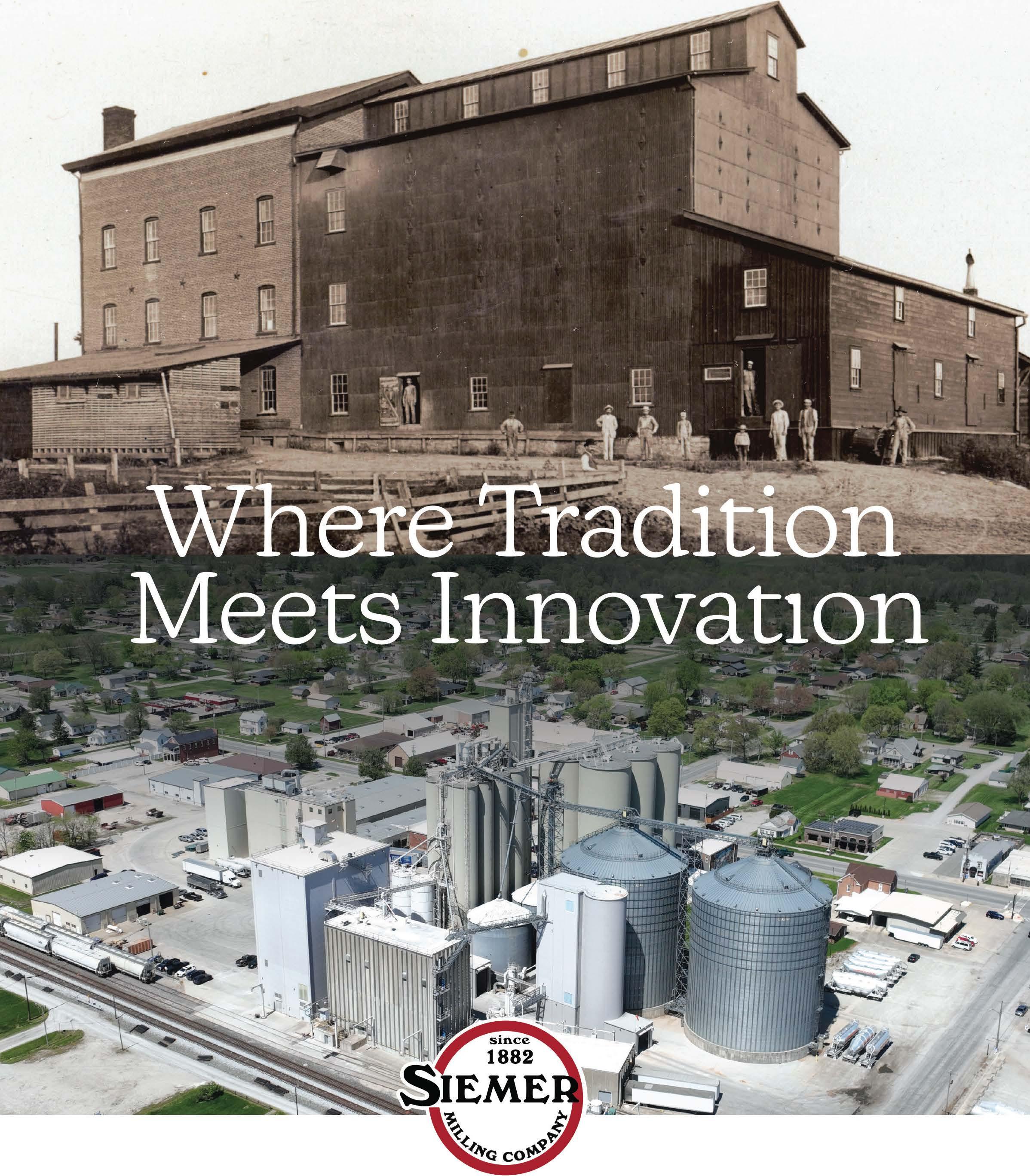
KIFFLE KITCHEN: 1.7%
GRUPO BIMBO: 2.3%
RACINE BAKERY: 4.0%
CHATTANOOGA BAKERY: 4.6%
SCHWARTZ BROTHERS BAKERY: 0.1%
PRIVATE LABEL : 0.1%
MCKEE FOODS : 0.0%
Total US - Multi Outlet W/ C-Store (Grocery, Drug, Mass Market, Convenience, Military And Select Club & Dollar Retailers)
Latest 52 Weeks Ending May 18, 2025
Source: Circana OmniMarket Integrated Fresh, a Chicago-Based Market Research Firm (@WeAreCircana)
*Percentage rounded to nearest tenth.
Recently, Circana highlighted the bifurcation of many grocery categories, where consumers forego the purchase of mainstream brands to buy either value brands, premium brands or both. While it is difficult to determine whether value is more important than splurging on high-end cookies, Aho pointed out that consumers make trade-offs every day, purchasing different cookie options to satisfy varying household needs, budgets and consumption occasions.
Circana data reflected dollar and unit growth for Collegedale, TN-based McKee Foods and Ferrero USA brands in the perishable center store iced/
frosted segment. Ferrero reported 176.9% growth in dollar sales and 191.8% growth in unit sales, according to Circana’s data, ending May 18, 2025. These increases are driven partly by its new Mother’s Jurassic World Chocolatey Cookies, Aho noted. Three items in McKee’s Little Debbie brand portfolio — Little Debbie Nutty Bars, Gingerbread Cookies and Pie Sandwich Cookies — are benefiting from significant distribution gains.
Offering a variety of sizes appeals to portion-control and convenience, encouraging more frequent consumption, according to Mintel’s report. Whether single or multi-varietal, multi-
packs are present in all cookie categories across the store. Many retailers have invested in multi-packs for most grocery and mass retailers.
“Cookie producers have successfully leveraged a variety of flavor and size strategies,” Aho said. “Several new products include thin or small-sized cookies to satisfy a sweet tooth while managing total carb, sugar or calorie intake.”
Emerging occasions and flavor trends across bakery categories can inspire new ideas for cookies. By providing options that meet various household needs and budgets — and that satisfy different consumption occasions — cookie producers have a clear path for category growth. CB
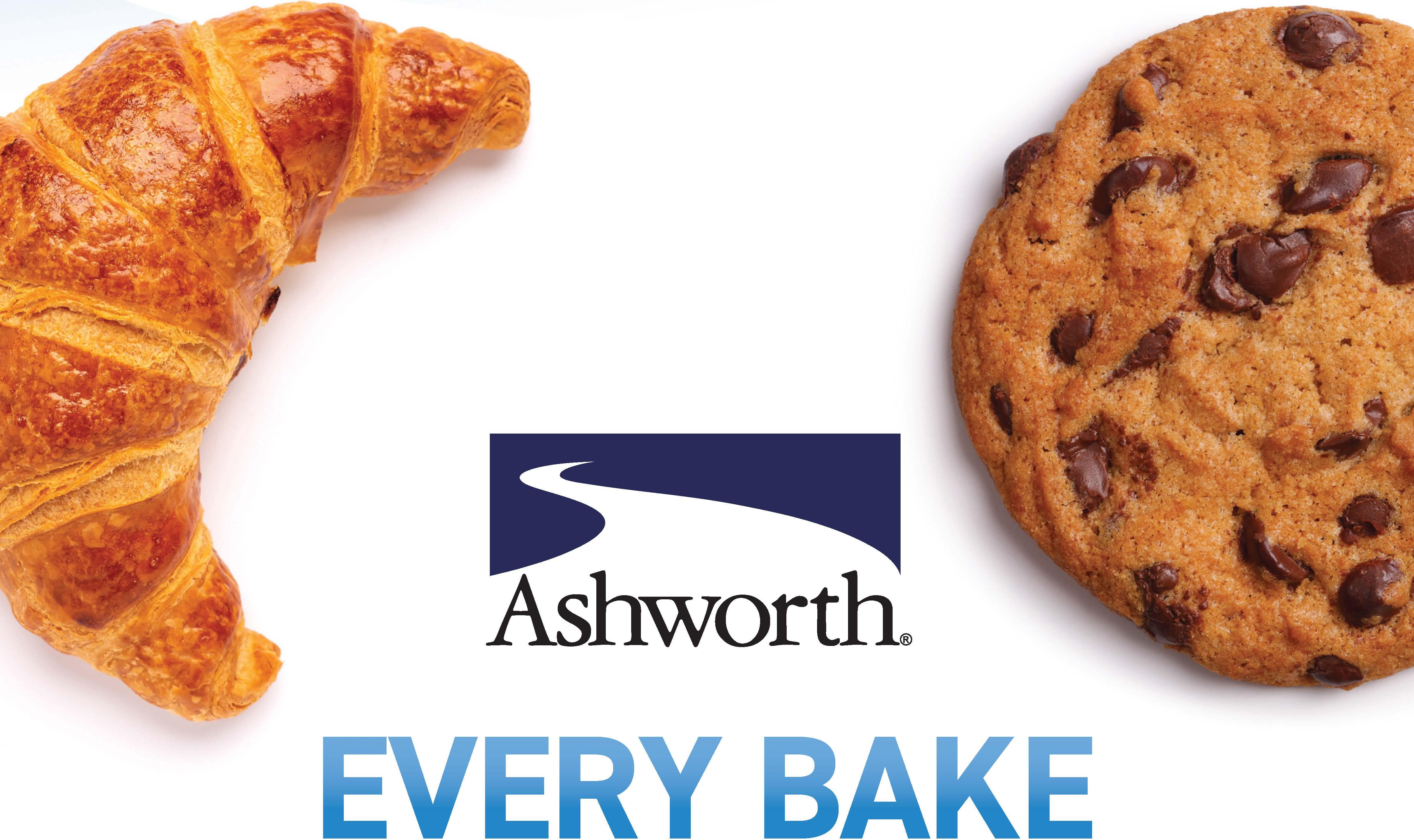
DEPENDABLEBELTSFORCONSISTENTPERFORMANCE
POSIDRIVE SPIRAL®
Increase capacity while minimizing maintenance and downtime in the most demanding applications.
SMARTSPIRAL®
Flexible belt stackers that deliver cost-effective, high quality food processing solutions.
SMARTOVEN®
Monitor key metrics that are tracked and trended to identify changes in the equipment's operating parameters.
®
Customize to meet individual requirements for cooling and freezer applications. Perfect for tight transfers and small products.


Scalability. Reliability. Flexibility. Profitability.
When it comes to investing in automation, these four traits top every commercial baker’s wish list. As they strive to boost operational efficiency and productivity, bakers want solutions that integrate easily with existing equipment, fit within the allotted footprint, align with their budget and address the lack of skilled labor.
With these parameters in mind, DIOSNA and VMI, two technology brands of Coperion, combined their areas of expertise to develop an Automated Guided Vehicle (AGV)-based transport solution specifically for batch mixing systems in bakeries of all sizes.
When developing the system, the brands focused on one main goal: providing commercial bakeries with a fully integrated, scalable logistics solution that would streamline the front-end process of dough handling by allowing automated transport of mixing bowls and dough-resting tubs to various areas.
“We realized we could build on proven technologies to deliver a solution precisely aligned with bakers’ needs,” said Arnaud Boutin, R&D project manager for Coperion’s VMI. “We can adapt the AGV technology to fit the customer’s footprint and existing equipment, allowing us to optimize their overall process without any major changes.”
At the core of every successful project is a solid foundation. That’s why DIOSNA and VMI prioritize comprehensive real-time simulation before any operator training begins. It ensures full feasibility and helps minimize unexpected challenges.



“Our experts work closely with the customer to understand their production processes, specific requirements and physical constraints,” said Peter Moormann, project and technical product manager for AGV Systems at Coperion’s DIOSNA. “This handson collaboration allows us to tailor solutions that align seamlessly with the customer’s goals and operational realities.”




The integration of DIOSNA and VMI AGV technology is just one example of the possibilities that are unlocked through the unified technologies of Coperion. Bakeries can benefit from:
An in-depth exchange of ideas, knowledge and resources. This high level of collaboration results in state-of-the-art solutions.
Highest quality. Coperion’s brands constantly collaborate to improve their products, learn from each other and provide the highest safety standards.
Versatile and individual solutions. Commercial bakeries benefit from a wide range of solutions tailored to their specific needs.
Comprehensive support. Coperion offers bakeries fast, reliable support, anytime and anywhere.

This new solution offers bakers:
• Higher flexibility and easy integration
• Increased productivity and consistency
• Enhanced scalability, flow traceability and operator safety
• Recipe management
• Easier access for cleaning and maintenance
• Improved process control
• Full automation of existing manual batch systems












High dough weight accuracy
Optimized for high-hydration & delicate doughs
Superior rounding performance
Hygienic design for easy cleaning
Designed for low service demand





Suitable for buns, rolls & pizza
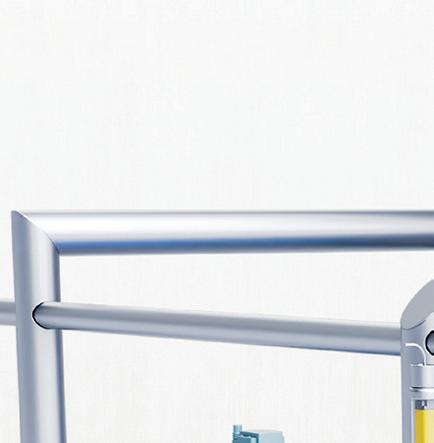
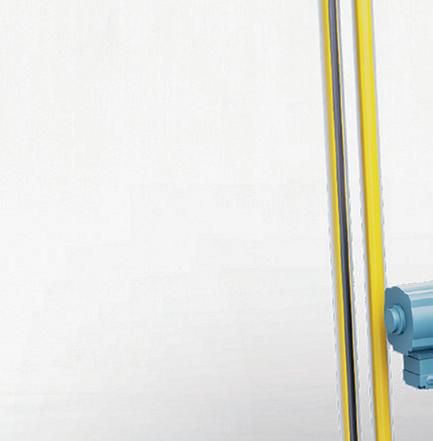

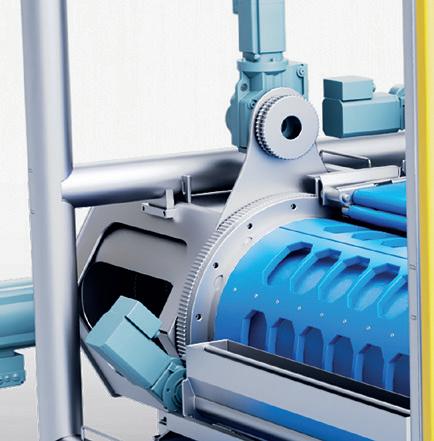

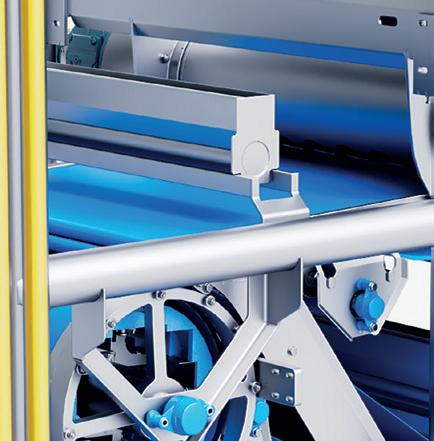
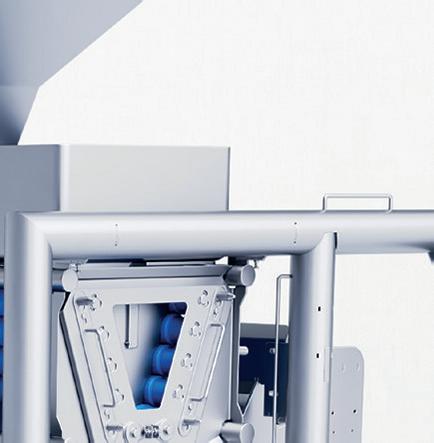
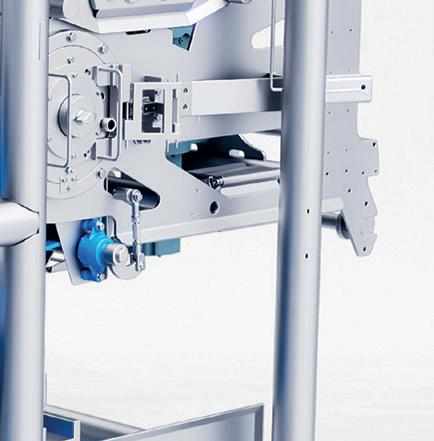



















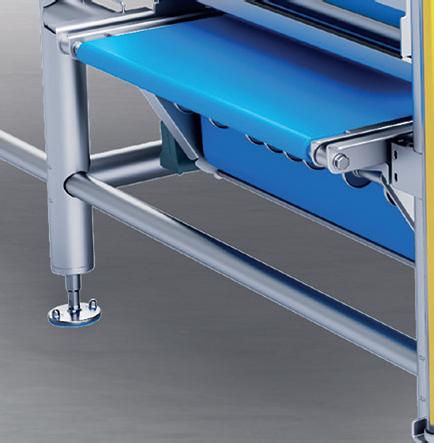



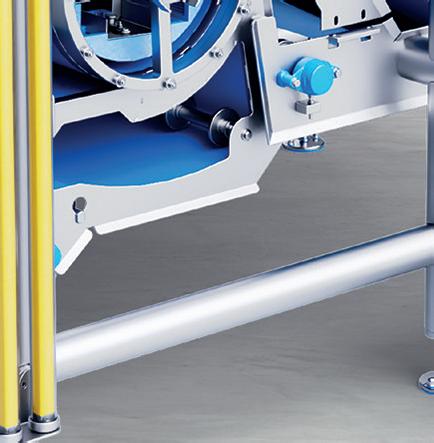

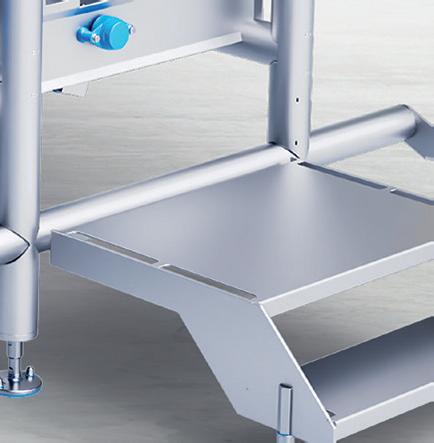



BY BETH DAY
The perception of tortillas and flatbreads as healthy, convenient and versatile pantry staples is driving consumer interest in the category. Growing preference for less-processed foods plays into the appeal.
Here’s how manufacturers are responding with innovation and enhanced production methods to expand their better-for-you portfolios.
Corn tortillas have the biggest share of the US tortilla market, according to Future Market Insights’ (FMI) “USA Tortilla Market Report for 2025-2035.” Consumers seeking fewer calories, higher fiber, gluten-free and clean-label products are driving a niche for manufacturers within the space.
Leveraging this opportunity, San Diego-based PACHA, a manufacturer of buckwheat-based, allergen-free baked goods, expanded its glutenfree bread portfolio to include a tortilla line made from sourdough, sprouted buckwheat and sea salt. These tortillas are not only gluten-free, but they also deliver some of the appealing characteristics of corn tortillas in a sourdough format.
“Our tortilla was actually a happy accident,” said Adam Hiner, co-founder of PACHA. “We were testing a batch of crackers, and I pulled one out early that looked like a tiny tortilla, which sparked the idea. We pivoted almost immediately knowing that the gluten-free tortilla category was missing a clean, functional option without binders or fillers.”

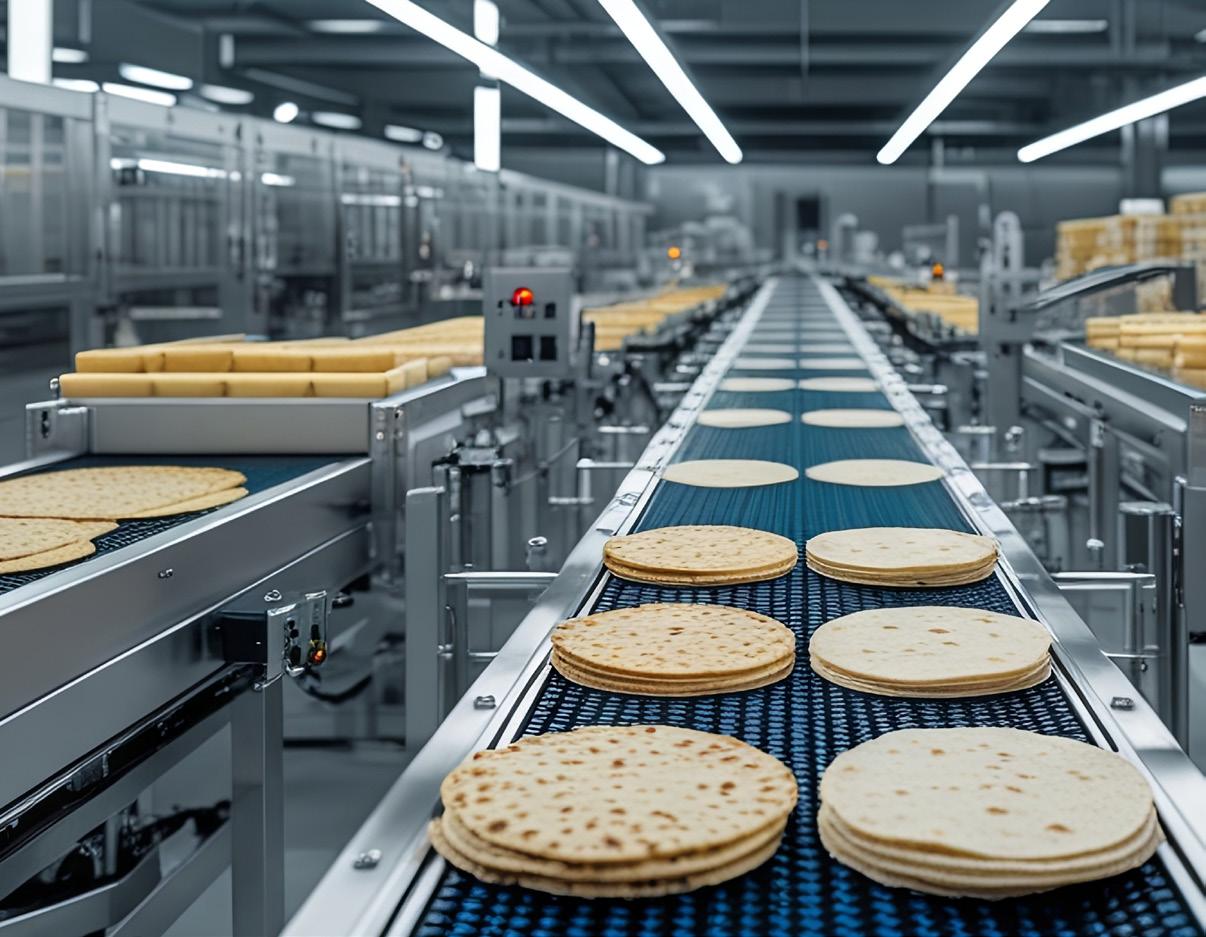
The company produces its tortillas from the same base formula as its bread. They require a different process than that of traditional tortillas because they are made from a batter rather than a dough. It begins with soaking the buckwheat seeds for 24 hours to reduce antinutrients and initiate sprouting.
Whole buckwheat groats are then sprouted and blended into the batter with an industrial food processor. The batter is fermented for 16 hours using the wild yeast present on the buckwheat groats. Unlike sourdough bread, there is no added yeast from a starter because the buckwheat already has the yeast necessary for the fermentation process.
“Buckwheat is a dream to work with, and it is naturally gluten-free and nutrientdense,” Hiner said. “The only challenge is ensuring we have enough of it, which is why we contract-grow all of our buckwheat with regenerative farmers.”
R&D did not center around dough reformulation. Instead, efforts were focused on how to manufacture the tortillas at scale. Customized equipment unlike any other in the tortilla category was developed to manage the production process.
Ironically, growing demand for PACHA’s tortillas has created the biggest production challenge: scaling up.
“Our batter behaves more like pancake batter than traditional dough, so conventional presses don’t work,” Hiner said. “This discovery pushed us to design a proprietary process and build custom machinery.”
Aligning the company’s expansion of operations with increased product demand requires a strategic, yet balanced, approach.
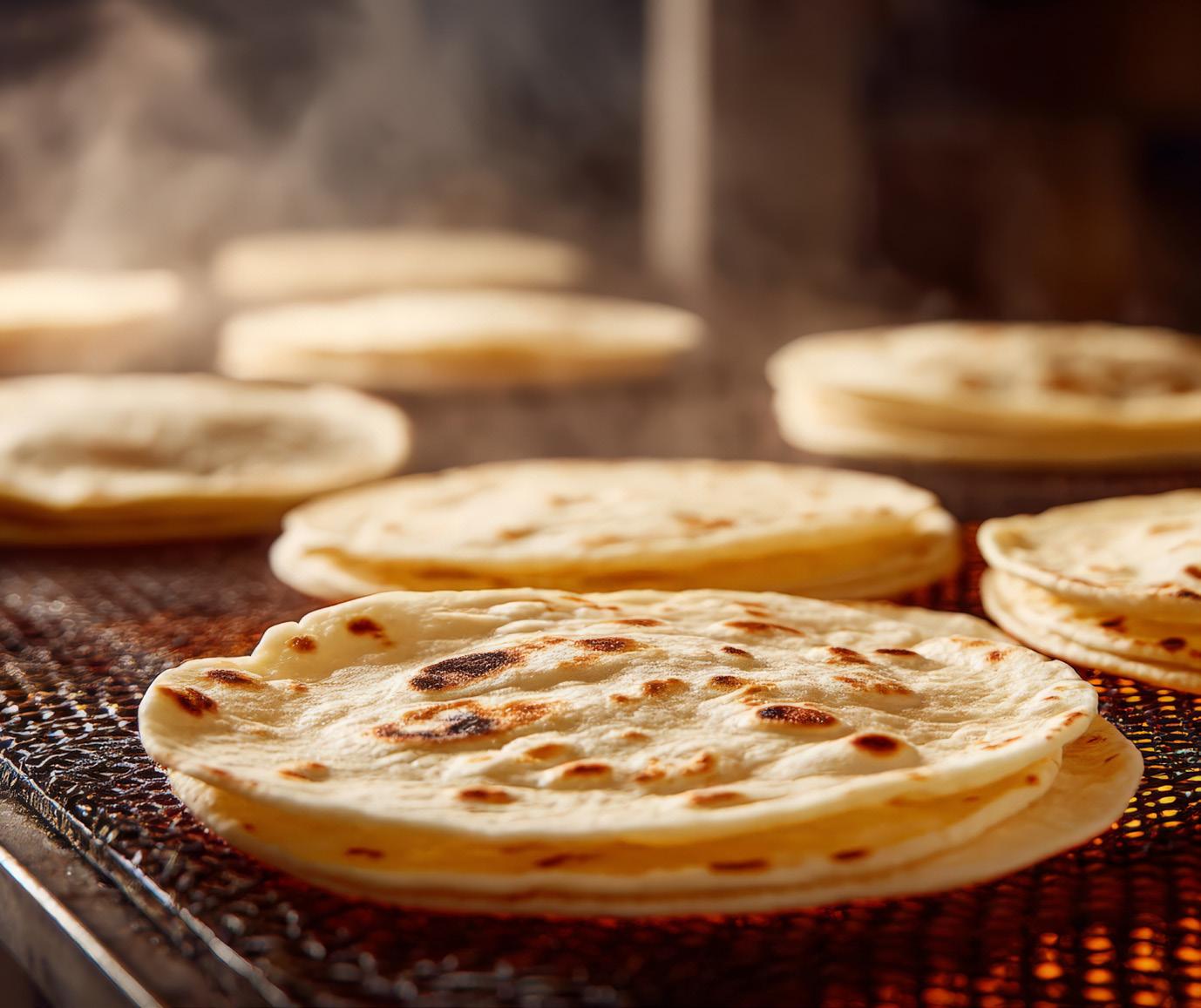
“We are seeing significant interest in our tortillas because, despite growing demand for gluten-free and organic options, there are no widely available tortillas that check all the boxes for organic, gluten-free, clean label and structurally functional,” Hiner said. “Our process is entirely unique, and we are still refining as we scale, but our facility can only scale so fast. It’s a great problem to have, but one that requires careful planning and investment.”
The company is moving toward more technology, which includes adding an automated tortilla press. Looking ahead to future innovation, Hiner noted PACHA’s tortilla formulation is receptive to other flavors and ingredients. For now, however, the production team remains focused on the original recipe and a whole grain option that blends the hulls of buckwheat groats into the tortilla for a more fiber-rich recipe.
The movement toward healthier, less-processed food is propelling growth in this segment, according to FMI’s report. Manufacturers of more traditional tortillas and flatbreads are responding with new lines of glutenfree, low-carb and higher-protein products to satisfy consumer preference for better-for-you options.
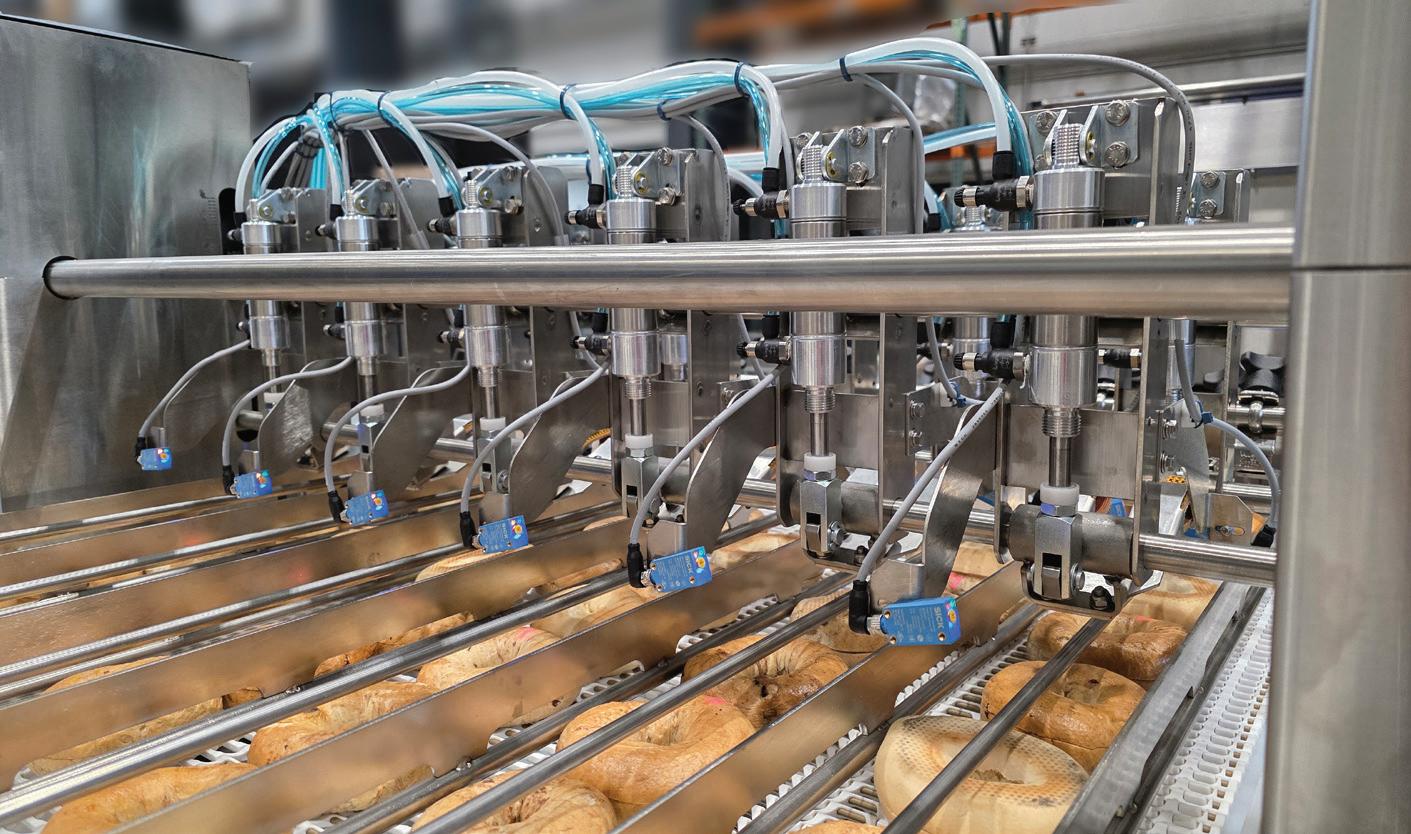




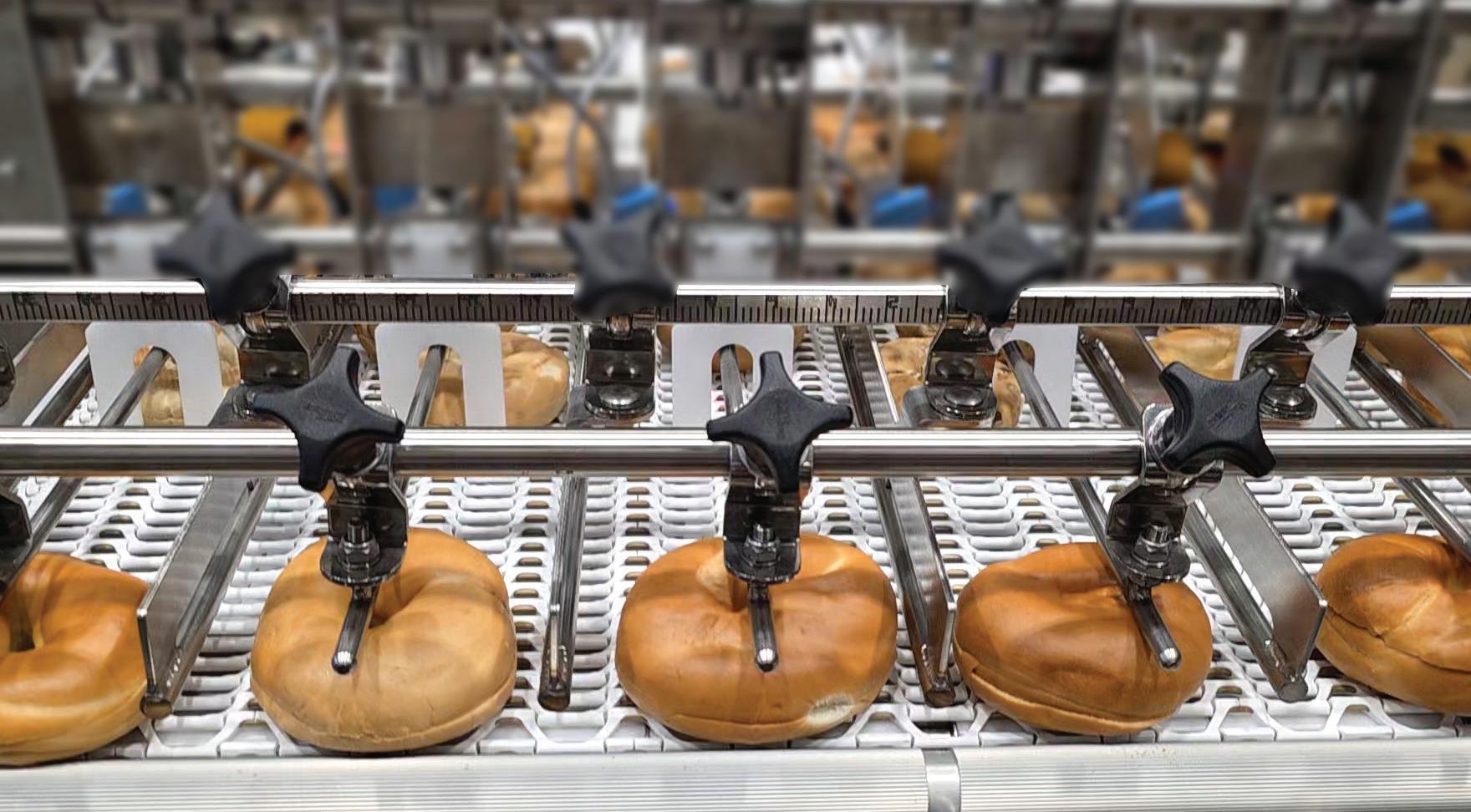
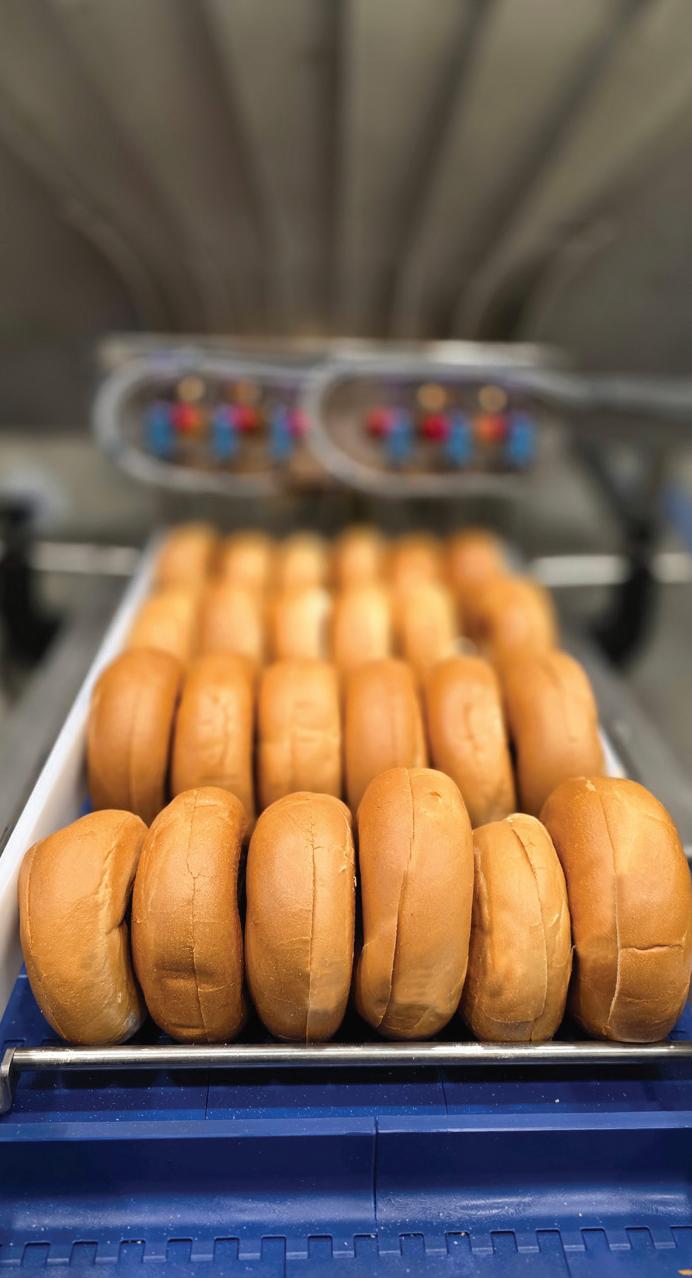







Ridgefield, NJ-based Toufayan Bakeries has embraced the trend of high-protein bakery items, even though increasing protein brings production challenges. From an R&D perspective, incorporating additional protein requires careful formulation to maintain the desired texture and machinability. High-protein doughs can be denser and less elastic, necessitating adjustments in mixing times and hydration levels.
“Our keto-friendly line, including pita, wraps and flatbreads, contains up to 7 grams of protein and 13 grams of fiber per serving with zero sugar,” said Karen Toufayan, VP of marketing and sales at Toufayan Bakeries. “Our production teams have optimized processes to ensure our high-protein products meet our standards for taste and quality.”
Toufayan Bakeries has noticed some innovation in the equipment used to manufacture keto-friendly and low-carb flatbread products. These advances are improving manufacturing methods for these formats.
“On the equipment side, advancements in baking technology have allowed for more consistent quality and scalability in flatbread production, ensuring we can meet growing consumer demand without compromising on product integrity,” Toufayan explained.
The company recently responded to growing interest in breads made without seed oils by creating new seed oil-free wraps made using pure avocado oil. This formulation change required recalibrating dough hydration and mixing profiles to accommodate the viscosity and fat distribution properties of avocado oil.
“Unlike seed oils, avocado oil impacts elasticity and sheeting behavior
“Our process is entirely unique, and we are still refining as we scale, but our facility can only scale so fast. It’s a great problem to have, but one that requires careful planning and investment.”
Adam Hiner | co-founder | PACHA
differently,” Toufayan said. “So our team worked closely across formulation and machinery settings to preserve the signature softness and pliability that our wraps are known for.”
With the International Baking Industry Exposition (IBIE) just around the corner, Toufayan said she’s looking forward to exploring the show floor and attending IBIEducate sessions to stay abreast of the latest trends and technologies within the tortilla category and overall baking industry.
“We are particularly interested in ingredient innovations that align with health-conscious consumer preferences, such as plant-based proteins and clean-label additives,” Toufayan said. “We are also researching new equipment that enhances production efficiency and supports our sustainability goals.”
Emphasis on sustainability measures and food safety regulations is also sparking innovation for the category. Manufacturers are investing in eco-friendly packaging, engaging in ethical sourcing of ingredients and looking for ways to minimize waste, according to the FMI report.
For example, PACHA’s tortillas use buckwheat, which is a staple crop used in regenerative agriculture. The company’s packaging is 100% home compostable, which reduces plastic packaging waste.
Additionally, Toufayan Bakeries is committed to environmental sustainability. The company is continuously seeking ways to reduce food waste and invest in energy-efficient equipment to minimize its environmental footprint.
“We have recently overhauled our packaging, introducing 100 percent recyclable materials with resealable zipper
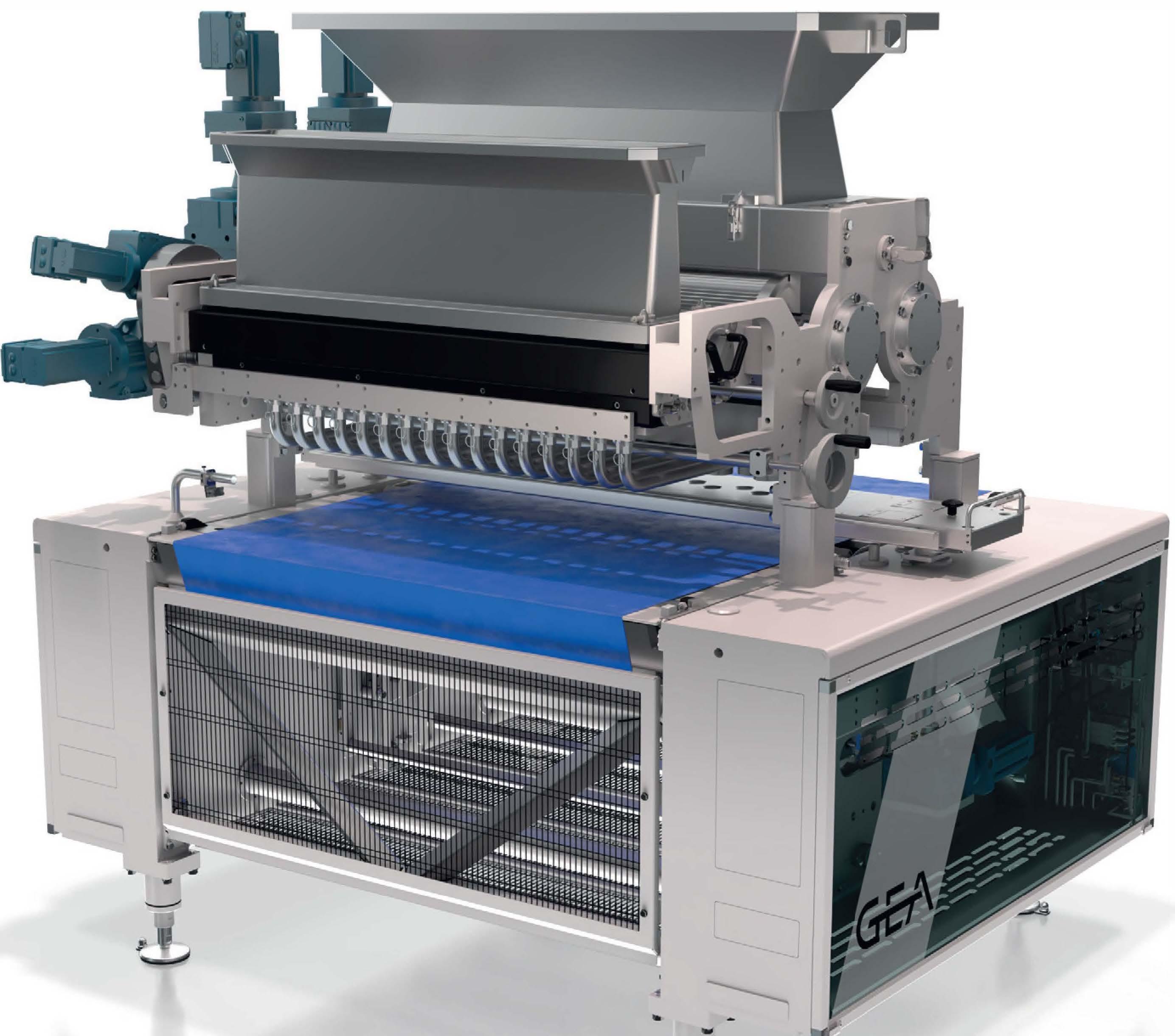


closures, eliminating the need for plastic clips and inner cellophane wraps,” Toufayan said. “This initiative is expected to reduce our plastic consumption by more than 40 tons annually.”
Adhering to food safety regulations is critical for commercial bakers, especially those with brands that are certified organic and free from gluten and other allergens. PACHA’s products are free from the top allergens, including wheat, milk, eggs, fish, shellfish, tree nuts, peanuts, soybeans and sesame. These claims require the company’s facility to meet Gluten-Free Certification Organization, California Certified Organic Farmers and other standards for certification.
“The biggest challenge is reimagining processes that typically rely on allergens, but for us, that’s also the opportunity,” Hiner said. “We manufacture in our own facility, which is entirely free from the top nine allergens, so there is no risk of crosscontamination.”
Every ingredient that enters PACHA’s facility is clearly labeled and logged. Hiner pointed out that having its own operations allows PACHA to build food safety in from the ground up. If the company used a co-manufacturer, some of that control would be lost.
Tortilla manufacturers are still navigating labor, supply chain, and trade and tariff uncertainty, as well as other daily production issues. For the most part, many have been able to troubleshoot problems with minimal disruption.
“While fluctuating tariffs have not significantly impacted our operations, we remain vigilant and adaptable to any changes in trade policies that could
potentially affect our supply chain,” Toufayan said.
When it comes to hiring and retaining production staff, PACHA has not suffered as much as others may have. The company’s starting pay is significantly above minimum wage, which Hiner said is a considerable incentive.
“Working for PACHA is a unique opportunity, and we believe our staff enjoy being a part of a company that is doing better things to improve the health of people and the planet,” he said.
Expanding production of tortillas and flatbreads that deliver health claims and support sustainability initiatives are effective strategies to boost the bottom line. Improving manufacturing methods for low-carb, high-protein, gluten-free tortillas and flatbreads that perform well and taste great will appeal to consumers and promote category growth. CB
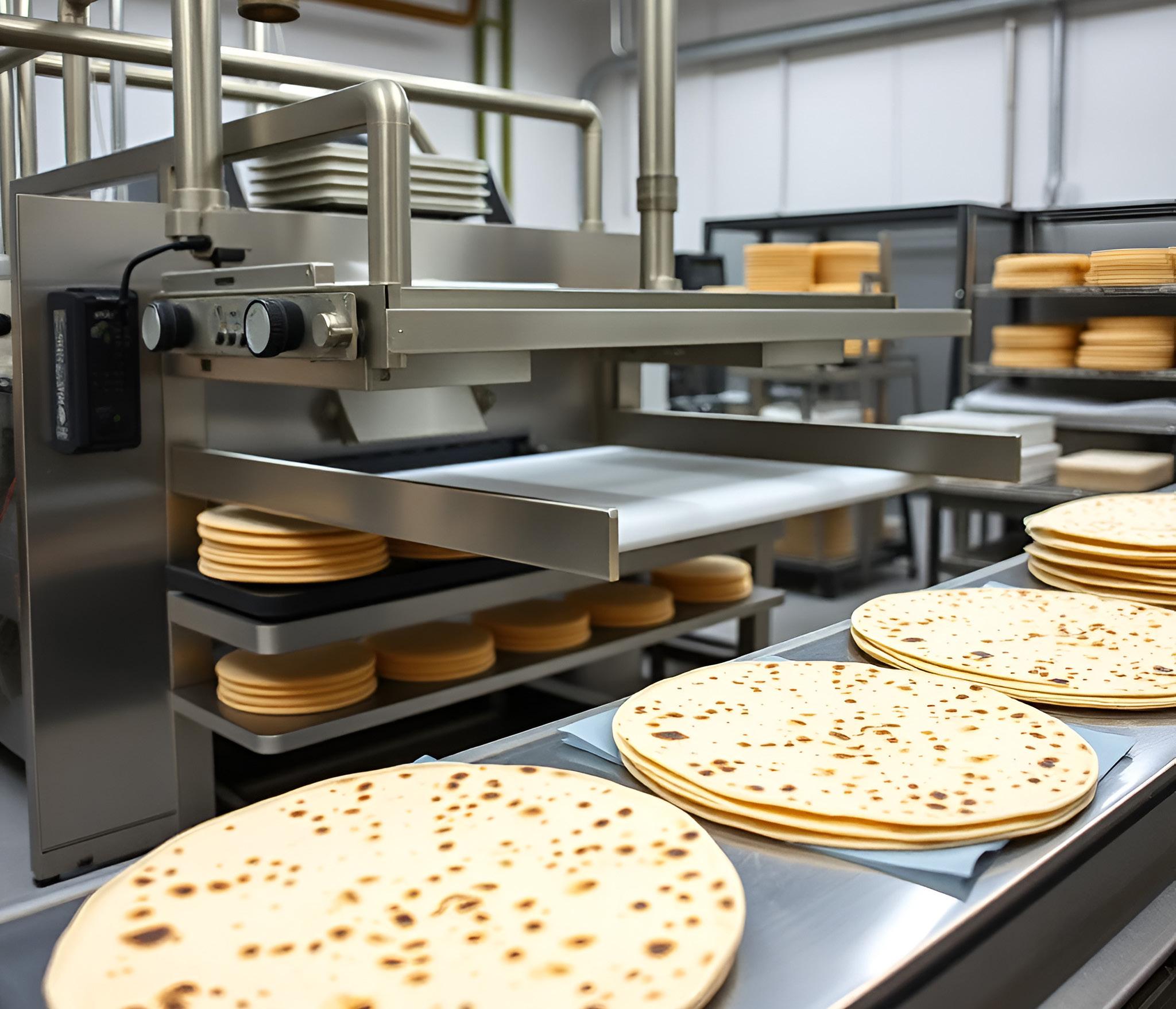

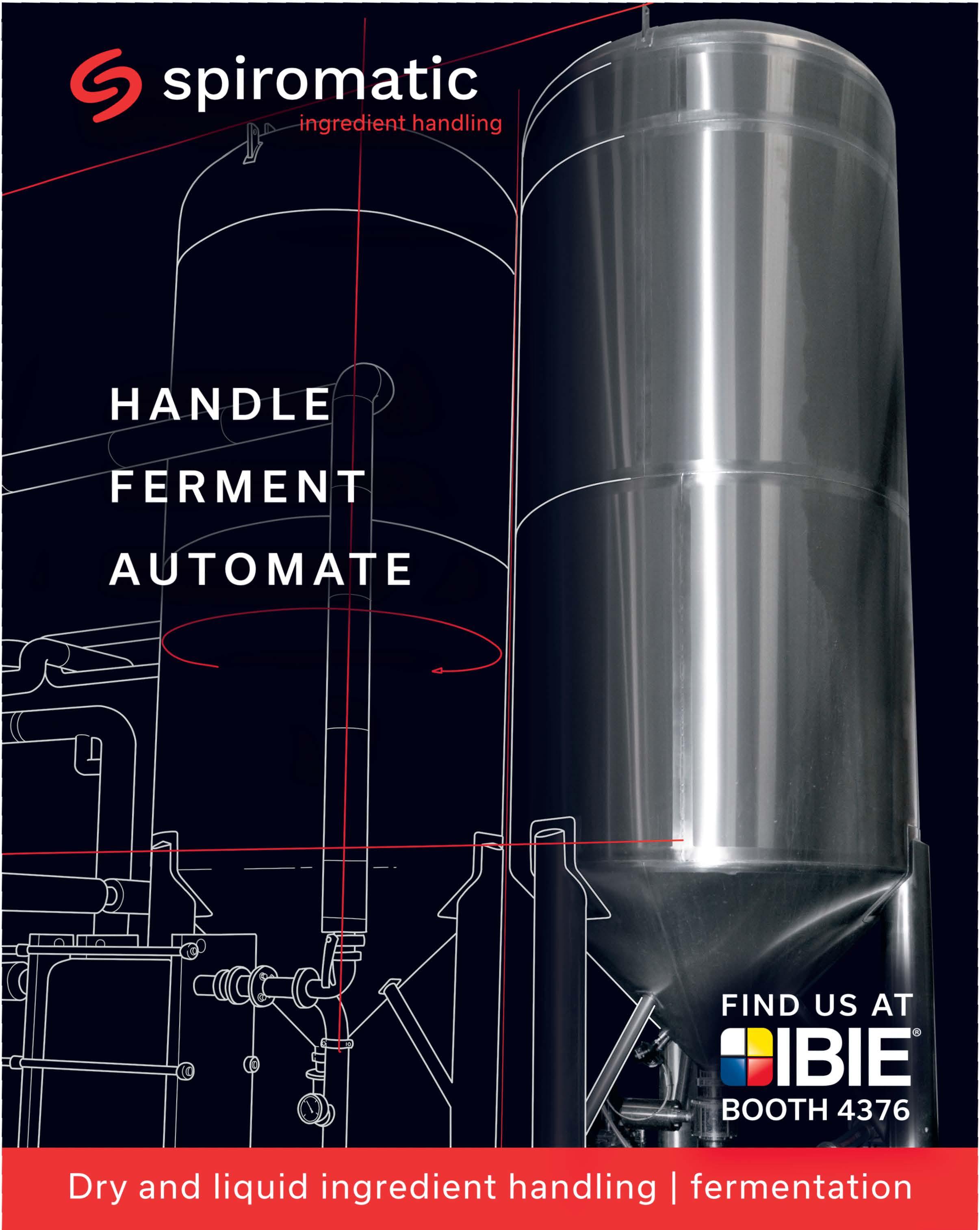




Our experts can help you find the ideal solution to bring your product to market. Perfect cookies begin with perfect packaging: it’s all about the presentation. Discover our cutting-edge Amplified Heat Sealing (AHS) technology that brings significantly higher speeds to standard heat seal film.
Let’s solve it together—visit us at booth 2165! VISIT US AT IBIE BOOTH 2165.
BY BETH DAY
Cookie fans still seek indulgence when choosing their favorites. Yet, clean-label options and sustainable packaging are broadening appeal and ultimately increasing consumption.
Commercial Baking spoke with a few cookie producers about how they are leveraging consumer trends around clean labels and sustainability.

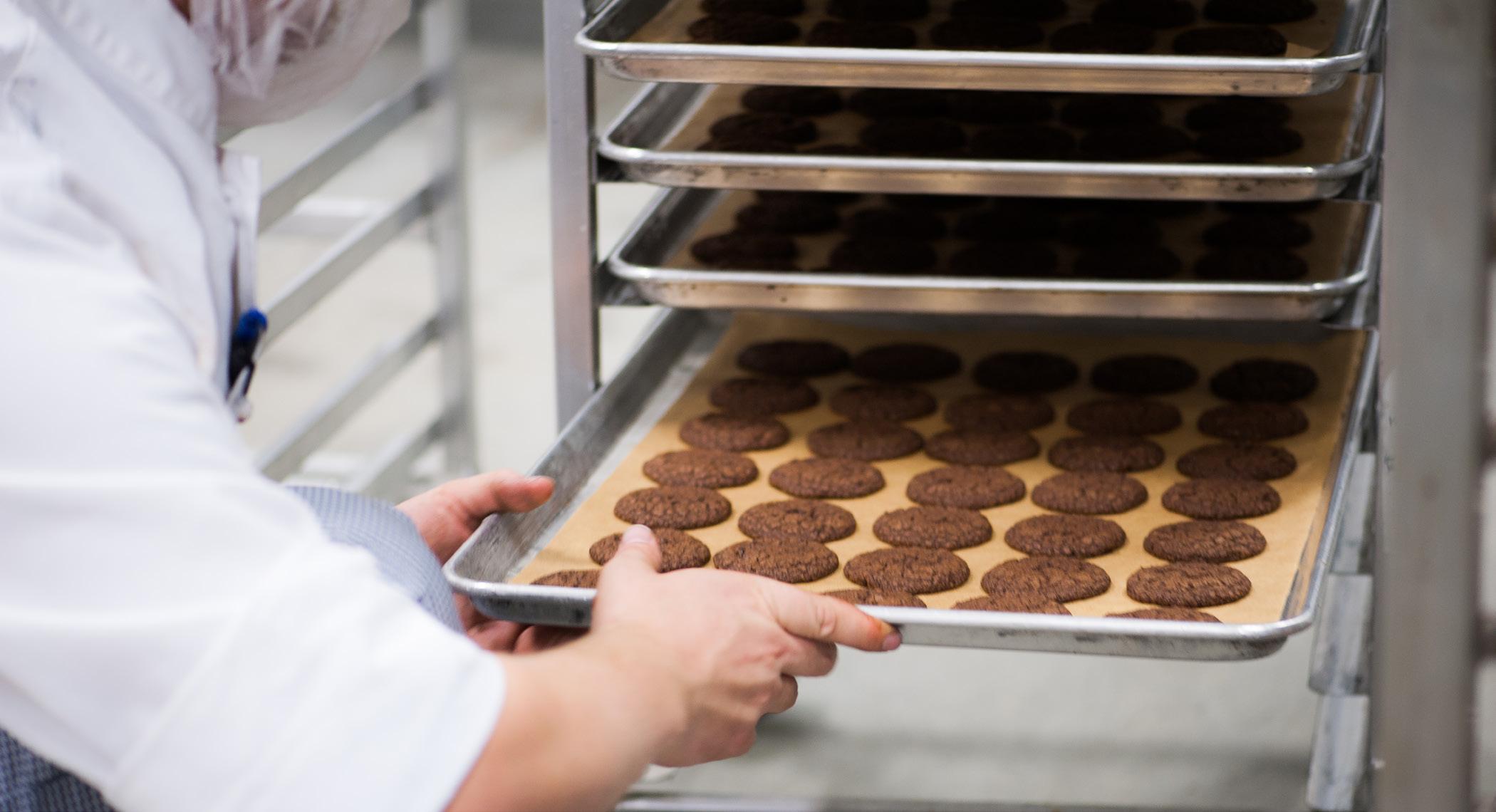
Buffalo, NY-based Rich Products invests in cutting-edge bakery technology, processes and equipment to create high-quality products that meet the evolving needs of its customers, from gluten- and nut-free cookies to iced and filled varieties. The company’s cookie production is highly automated, with its Salem, MA, facility producing nearly 50 million pounds of cookie dough annually.
“This SQF Tier 3, USDA- and koshercertified facility is recognized as a center of excellence for cookie dough production and features multiple high-speed, highly automated lines,” said Nicole Utz, senior product manager for cookies at Rich Products. “We eliminated the labor and cost of handling bagged ingredients by using advanced material storage and traceability systems, managing more than 300 unique ingredients and four 130,000-pound silos that feed flour and sugar directly into production.”
While automation encompasses much of Rich’s cookie production, some finishing processes are completed by hand at facilities that produce decorated dessert cookies and cakes. Utz explained that skilled associates hand-decorate these products, delivering the authentic, premium-quality look that sets Rich’s desserts apart.
Responding to preference for clean labels, Rich Products sources the highest-quality ingredients.
“We take pride in using real, authentic ingredients, like those you find in your grandma’s pantry, because that is the foundation of the best cookies,” Utz said. “We house a state-of-the-art butter tempering room at our Salem facility, where up to 80,000 pounds of butter are gradually brought from 38°F to 70°F daily. This precise, staged warming process
“We always seek ways to incorporate clean, sustainable practices into our business. For us, the biggest innovation to improve our products is the advent of high-barrier recyclable film.”
Maura Duggan | founder and CEO | Fancypants Baking Co.
ensures the butter is at ideal temperature for the creaming stage, delivering the best quality and texture.”
Consumer standards for cookies are the same, regardless of size or scale of the manufacturer. Walpole, MA-based Fancypants Baking Co. also leverages consumer interest in clean labels. The company understands that cookies made with natural ingredients deliver premium products free from artificial ingredients and preservatives.
“Clean label is rapidly becoming a necessity, not just an option, and real ingredients are not just a trend, but a return to what consumers have always cared about,” said Maura Duggan, founder and CEO of Fancypants.
Fancypants produces up to 400,000 cookies daily using a wire cut process and rotary mould equipment. The production line includes an AMF Glen 340-quart mixer, automated depositors and double-rack ovens.
“Our R&D process is still that of a small, nimble company,” Duggan said. “It is reliant on a core group of highly trained, long-tenured employees. This core group works in combination with our sales team and our connections throughout the cookie category in both fresh bakery and center store, branded and private label. This collaboration and teamwork is what drives R&D for our brand.”
Over the past decade, one of the most significant ingredient advances for Fancypants has been the emergence of upcycled ingredients. The upcycled oat milk flour used in the baking company’s crispy cookies has been a game changer for sustainability initiatives, though it has challenged production, requiring adjustments with regard to

Watch live demonstrations of our industry-leading Vemag cookie dough portion-to-pan lines
n Produceexact-weight,ready-to-bakeport
Produce exact-weight, ready-to-bake portio
n Gentlyhandlesdough,inclusionsarenotd Gently handles dough, inclusions are not dam
n Fast, easy changeovers
n Reduce labor, maximize production

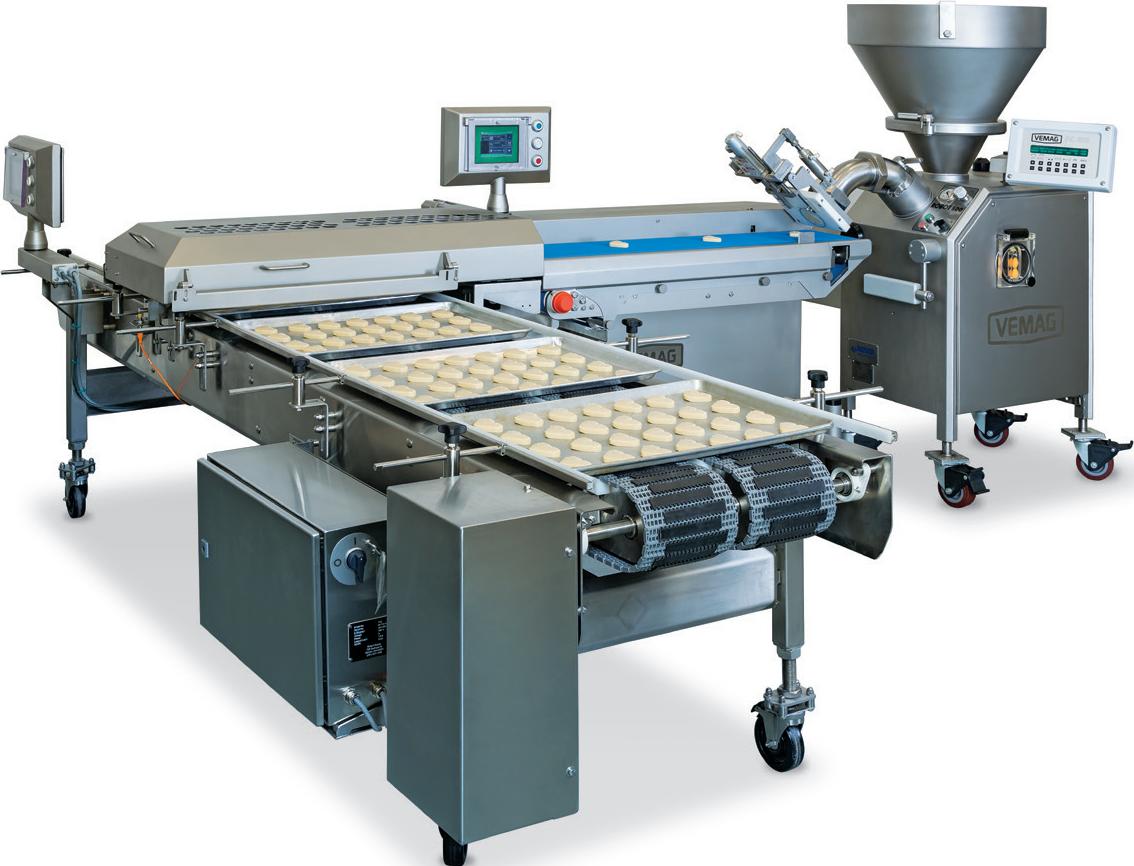

hydration levels and accommodating for the extra protein and fiber content.
Use of gluten-free flours typically impacts batter formulation and moisture content, making machining more difficult. For Fancypants, however, gluten-free production has not been troublesome.
“I think gluten-free baking can be more of a challenge with items like breads and rolls,” Duggan said. “With a crispy cookie, we are fortunate that rice flour operates as a beautiful substitute for wheat flour, so reformulation was not as challenging as with other cookie styles.”
Inclusions can also be the enemy of machinery in the cookie space. Fancypants mixes 1,000-count chocolate chips into its dough.
“Incorporating larger chips can challenge the equipment, but we deal with it because bigger chunks of chocolate are better chunks of chocolate,” Duggan said. “Oatmeal raisin cookies were also surprisingly challenging. It took a massive sourcing effort to find raisins that were just the right size and texture to avoid getting caught in our wire cut.”
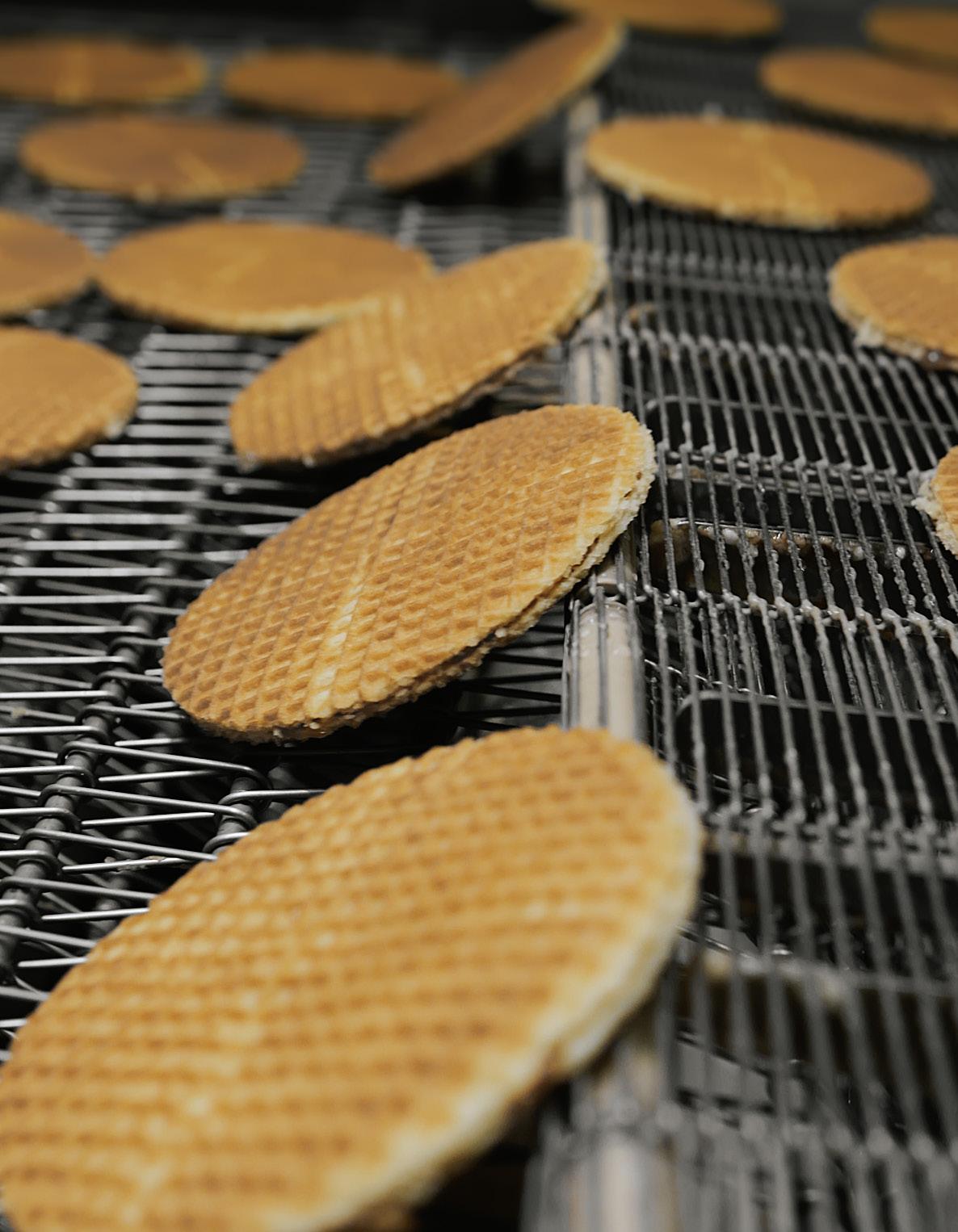
Limited-time offers (LTOs) can also disrupt production, yet their ability to boost sales and increase brand awareness makes it worth the effort for some manufacturers.
“LTOs are a huge hit in the cookie category, and we love them as an opportunity not only to grow the consumer experience but also as a volume driver since orders are usually significant in size,” Duggan explained. “From an operational standpoint, we treat them like any other product and run them on the same line with staggered production by SKU.”
As interest in sustainability increases, brands such as Fancypants are using eco-friendly packaging that can also preserve freshness and extend to achieve these goals.
“Sustainability plays a critical role in every part of our operation, and we always seek ways to incorporate clean, sustainable practices into our business,” Duggan said. “For us, the biggest innovation to improve our products is the advent of high-barrier recyclable film.”
In the past, fully recyclable films did not provide a barrier to water or oxygen, which was problematic for long shelf life. Now that this film provides enough barrier to extend shelf life, it is significant to Fancypants’ operations since all packaging is recyclable.
One of the biggest cookie innovations for Rich Products was the shift from cookie dough to pre-baked formats, providing fresh-baked quality in ways never seen before. The company constantly explores new technologies that deliver innovation and enhanced capabilities to its portfolio and customers.
“We take great pride in our customization abilities, partnering closely with our customers to create signature cookie offerings that help their menus and bakery cases stand out,” Utz said. “Many of our customers face labor challenges and rising costs, so a key focus of ours over the next three to five years is investing in expanded baking capabilities to offer more fully finished labor-saving solutions.”
International offerings such as Dutch stroopwafels are blurring category lines. These thin, caramel-filled cookies from the Netherlands were initially available as an international specialty or an energy-boosting snack from Canadian manufacturers. Recent tariffs on imported goods from Canada created opportunity for US producers such as 3Bros Cookies.
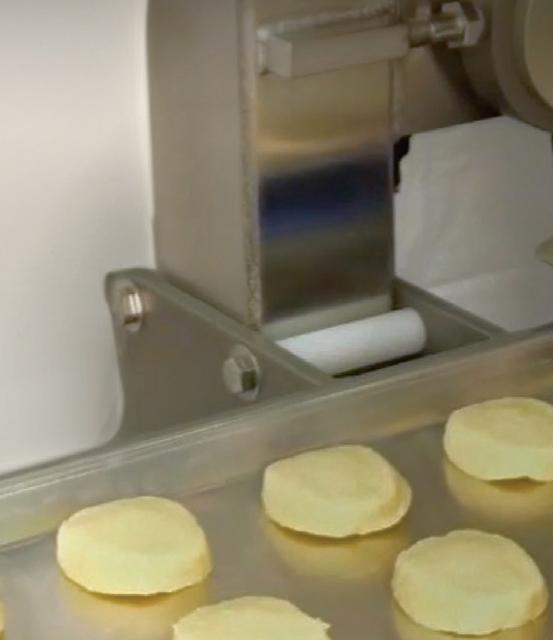









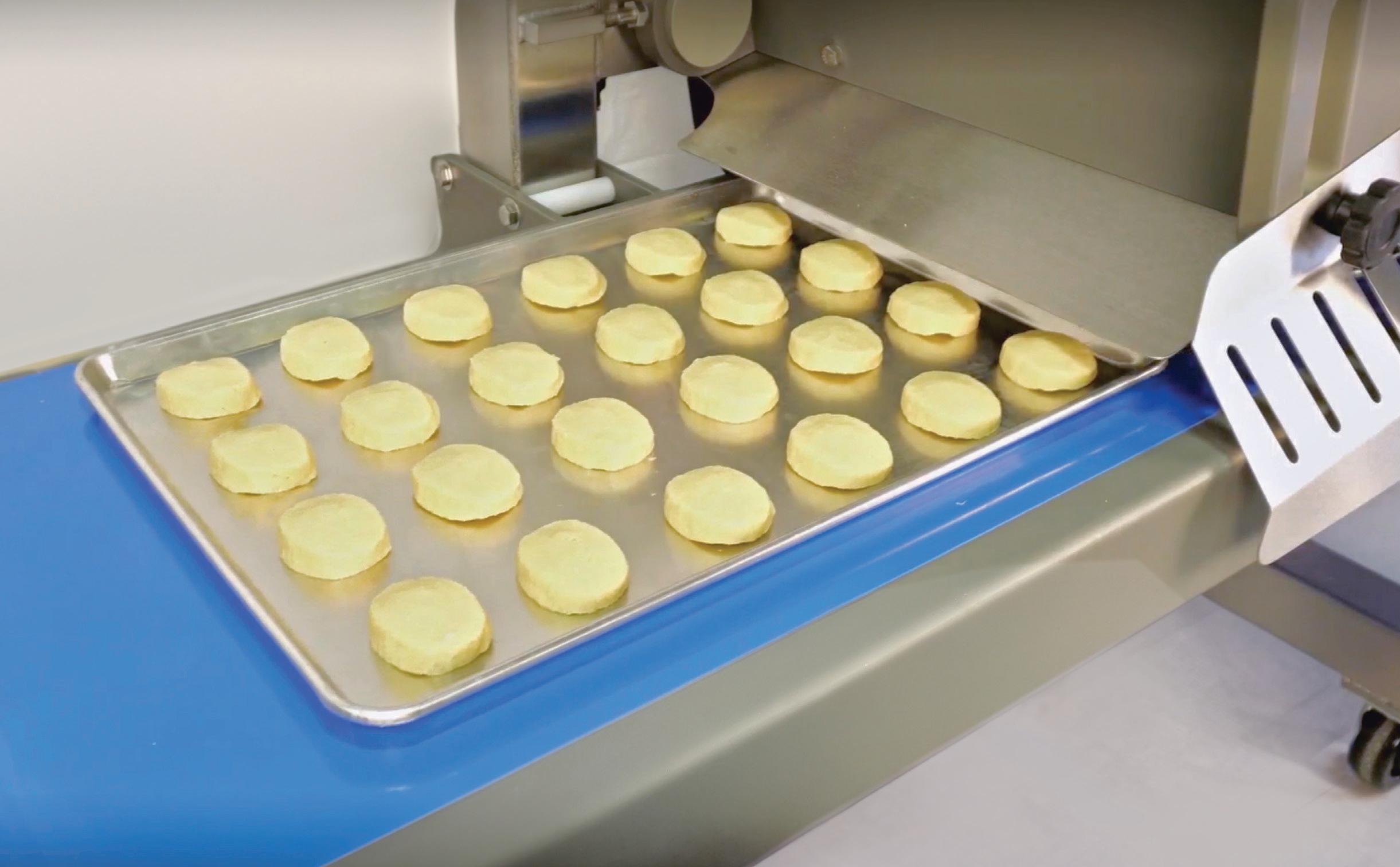


Brownies: Portions: 250 p/min onto a tray. Sheets: 15 - 20 full sheet pans p/min.
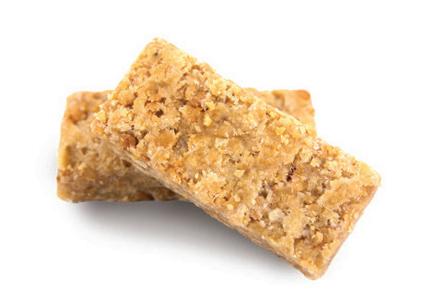
Protein/Energy Bars: High-quality protein & energy bars 300 - 900 p/min.

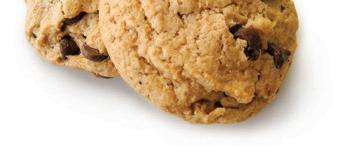
Cookies: Accurate placement, uniform weight, no smearing 200 - 800 p/min.

Gingerbread: Sheeting and shaped cookies 200 - 400 p/min.
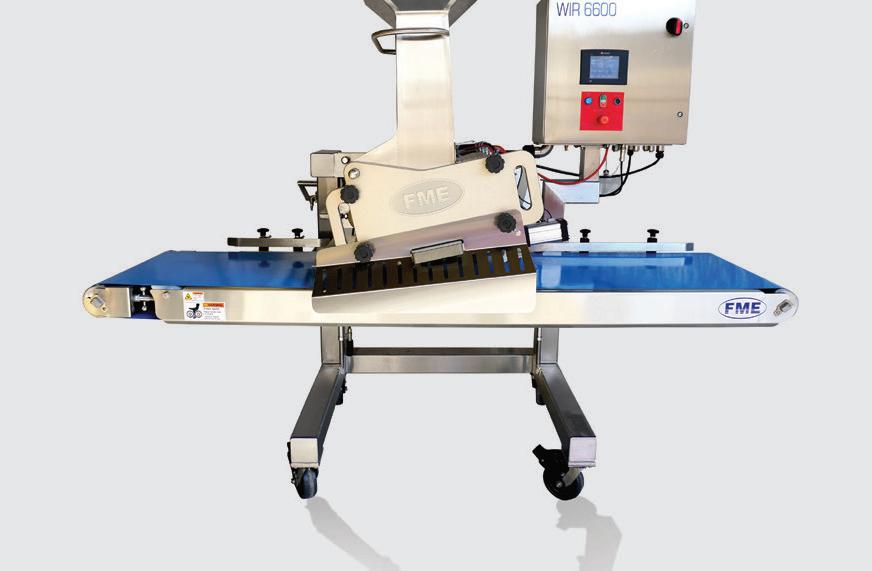
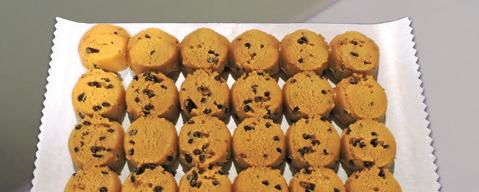

Frozen Dough Production: Placed break n’ bake or individuals 600 - 1500 p/min.

Biscotti: Biscotti formed to pan length 1 to 4 rows 10 - 40 p/min.
High production
Small foot print
2 minute die change over Large inclusion operation
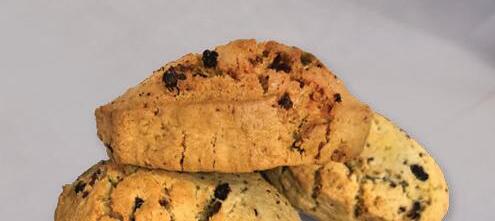

Scones: Artisan scones, all shapes and sizes 150 - 400 p/min.

Full access toolless sanitation Remote access/monitoring
Intuitive operation and maintenance
Challenging products






Stroopwafel cookie production differs from traditional commercial cookie baking methods in that the cookies are made from a thick dough and baked on a special iron press. While still hot, they are split and filled with a thick caramel, or “stroop,” the Dutch word for syrup.
“We manufacture thousands of stroopwafels daily in three flavor profiles, including caramel, honey and chocolate,” said Leslie Vliegen, founder and owner of the Fayetteville, GA-based company. “We produce a variety of packaging styles and size options.”
Whether aligning innovation with current capabilities or scaling operations, cookie manufacturers must be strategic to stay ahead of unforeseen production challenges, such as supply chain disruptions, that can derail daily operations.
“It’s no secret that commodity volatility impacts the entire food industry, from cocoa to eggs,” Utz observed. “We are managing our supply chain and mitigating potential disruption to our customers by leveraging strong relationships, dual and triple sourcing essential commodities, and partnering with customers to create customized solutions.”
Overall, Duggan believes the state of the cookie industry is positive. From a labor standpoint, she noted jobs have been easier to fill over the past several months, and the average tenure of a line employee is more than three years.
“I think the key to minimizing turnover is to hire effective, communicative and extremely likable management and make sure that employees know their voices matter,” she explained.
Fancypants recently invested in new packaging equipment that will double
the speed of the current line and expand packaging capabilities.
“We are replacing our current 10-head vertical scaling system line with two 20-head scales and a duplicate rotary bagger,” Duggan explained. “We are also adding two twin-tube pillow baggers capable of filling one- to three-ounce bags at a rate of 200 per minute.”
The addition means the company will be able to offer single-serve pillow bags.”
The company sourced the equipment and made additional supplier contacts during a visit to IBIE 2022.
“We learn so much by attending and networking at the show,” Duggan said.
3Bros Cookies continues scaling production and increasing automated processes, while maintaining product integrity and authentic taste.
“Many of our customers face labor challenges and rising costs, so a key focus of ours over the next three to five years is investing in expanded baking capabilities.”
Nicole Utz | senior product manager, cookies | Rich Products
“We are always planning for the next product innovation, customer and capability,” Vliegen said. “While automation can streamline processes, it also requires supervision. We work as a team to align automation with labor capabilities to increase production.”
Offering cookies made with real ingredients in a variety of flavors, styles and better-for-you options will help meet customer needs and satisfy consumer preferences. Focusing on production efforts on innovation that improves freshness, quality and shelf life, while promoting sustainable practices, is a winning strategy. CB


More reliable and clean fermentation process





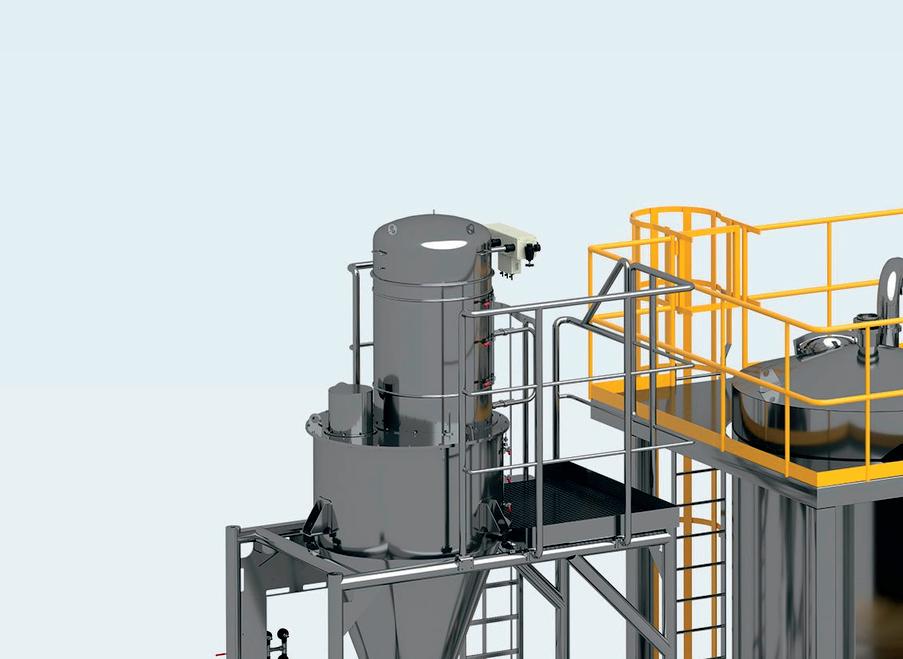
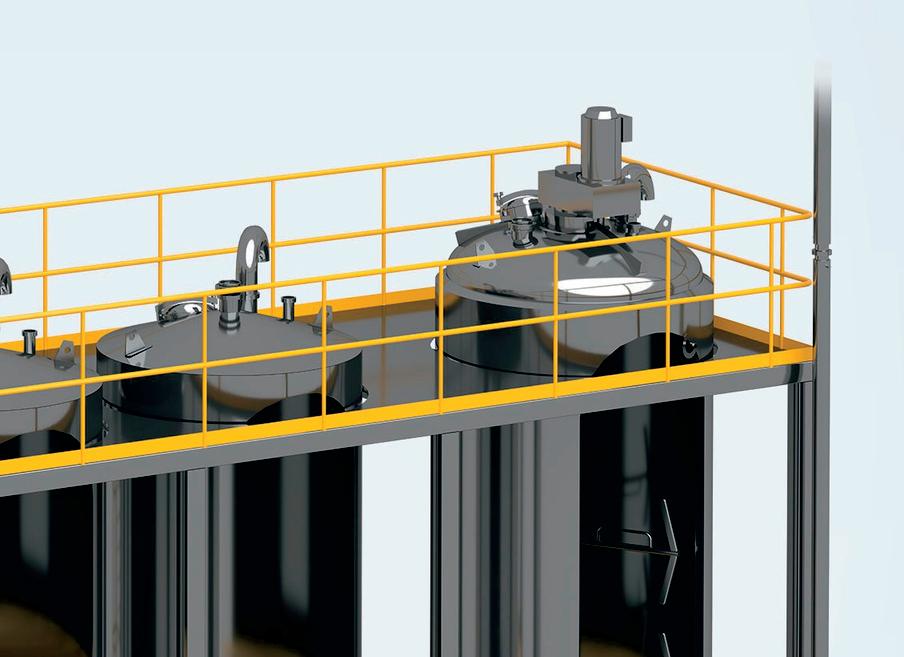




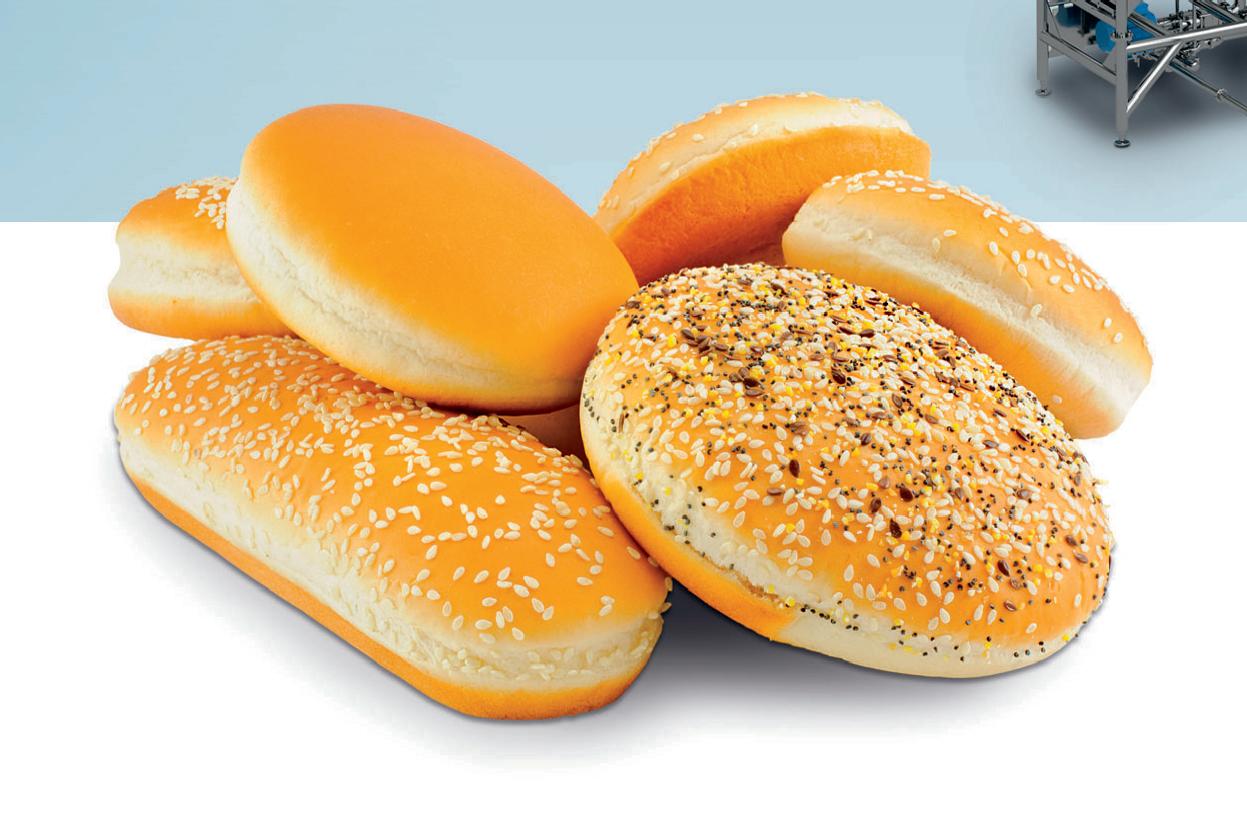
WE CREATE SOLUTIONS!

zeppelin-systems.com/us/en
COME TALK FERMENTATION WITH US AT IBIEBOOTH #W3265
Level temperature throughout the process
Continuous and batch operation
Simple maintenance due to modular design






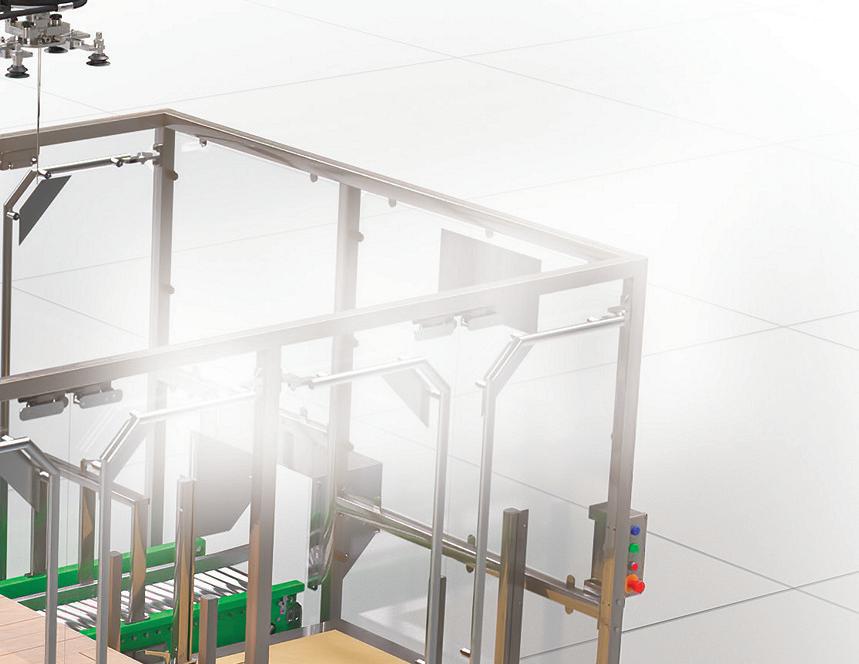
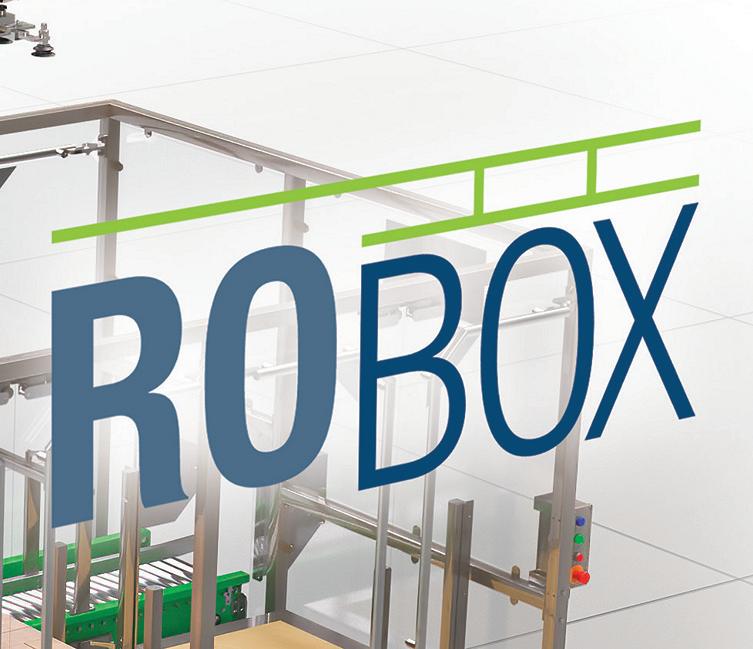


A space-saving, flexible, and portable alternative to manual palletizing, no assembly needed.
We automate the supply of life’s products through cartoning, case packing, cartoning packin f u k
conveyors, palletizers, stretch wrapping, and integration.





You can’t patch your way to the future.
BY JEFF WINTER, INDUSTRY 4.0 THOUGHT LEADER
Picture this: a wide-open road stretching ahead, the left lane marked by familiar potholes, outdated signs and traffic jams. Let’s call those legacy systems. On the right, a shiny, newly paved lane labeled “Industry 4.0,” buzzing with autonomous cars, AI-driven signs and smart sensors optimizing traffic flow.
And then, right in the middle, a single Band-Aid stretching feebly across a gaping crack labeled “digital divide,” proudly announcing: “Another Dashboard!”
Sound familiar?
Too often, companies attempt digital transformation by tossing yet another fancy dashboard at deeply embedded, systemic problems. Dashboards are like Band-Aids: They might momentarily cover the crack, providing short-term comfort, but they never truly fix the road beneath.
There are three reasons why another dashboard won’t save a company from the digital divide.
Information overload does not equal insight. Dashboards dramatically enhance the visibility of data, generating streams of colorful charts, graphs and metrics at a glance. However, visibility alone doesn’t translate directly into actionable
insights or meaningful decision-making. Without deep integration into operational processes, strategic goals and an understanding of context, dashboards merely become repositories for overwhelming data that employees don’t fully utilize or understand.
Adding mirrors to a car won’t help spot potholes. You might clearly see each pothole, but without the ability to steer away or the proper vehicle to navigate around them, you’re still stuck on the problematic road. Insight comes from analytics that simplify complexity, detect patterns and guide actionable decisions. Dashboards should be the last step in a chain of integrated technologies and processes, not the first or only step. Without proper integration, analytics capabilities and training, dashboards risk becoming another source of confusion rather than clarity.
Surface-level solutions fail at scale. Deploying yet another dashboard might feel like progress initially, but this approach is akin to placing a Band-Aid on a wound that requires surgery. Dashboards are excellent for surface-level diagnostics and quick, initial fixes to minor issues. However, when confronting deeply rooted technological, cultural and operational gaps, their effectiveness dramatically diminishes.
Industry 4.0 is not about digitizing existing outdated processes; it’s about fundamentally reimagining a business model, value chain and operational methodologies for a digitally-enabled future. Delaying comprehensive transformation makes eventual modernization harder, more expensive and more disruptive.
True digital transformation isn’t cosmetic; it’s structural and strategic, requiring a fundamental rethinking and redesigning of business processes, data infrastructures and workplace cultures. Dashboards can’t bridge the enormous gap between legacy technologies and Industry 4.0 capabilities because they do nothing to address the underlying legacy limitations. To effectively scale, businesses must invest in comprehensive system upgrades, culture shifts and technology integrations that enable holistic, sustainable improvements, rather than repeatedly applying superficial patches.
You’re delaying the inevitable. Every time your business opts for a quick fix — such as adding yet another dashboard — you’re essentially postponing the larger, inevitable necessity of addressing foundational problems. While short-term solutions offer immediate relief, they mask critical structural weaknesses, creating the illusion of progress without any sustainable improvements.
Industry 4.0 is not about digitizing existing outdated processes; it’s about fundamentally reimagining a business model, value chain and operational methodologies for a digitally-enabled future. Ignoring the need for deep structural changes only compounds technical debt, increases complexity, and escalates future costs and risks. Delaying comprehensive transformation makes eventual modernization harder, more expensive and more disruptive. Instead, businesses must proactively
embrace deeper digital transformation strategies that reshape their organizations from the core, preparing them for sustainable growth and ongoing innovation.
So, what’s the real fix? Instead of Band-Aids, you need road construction. Invest in infrastructure: robust data architectures, AI-driven analytics, interconnected systems and, most importantly, organizational alignment around digital goals. This isn’t about just observing problems; it’s about solving them.
Dashboards have their place, but not as patches. Use them as windows into new opportunities, supported by sturdy, future-proof foundations.
Ask yourself: Are you genuinely paving the road to Industry 4.0, or are you still buying Band-Aids? CB
Jeff Winter is passionate about helping manufacturers digitally transform utilizing Industry 4.0 technologies. With nearly two decades in manufacturing, spanning automation, safety, controls, OT and IT systems, he’s advised and guided hundreds of manufacturers on embracing digital transformation. Winter’s deep industry insights, thought leadership and ability to keep his finger on the pulse of manufacturing’s future have earned him the moniker “The Industry 4.0 guy.” Contact him at JeffWinter@criticalmanufacturing.com
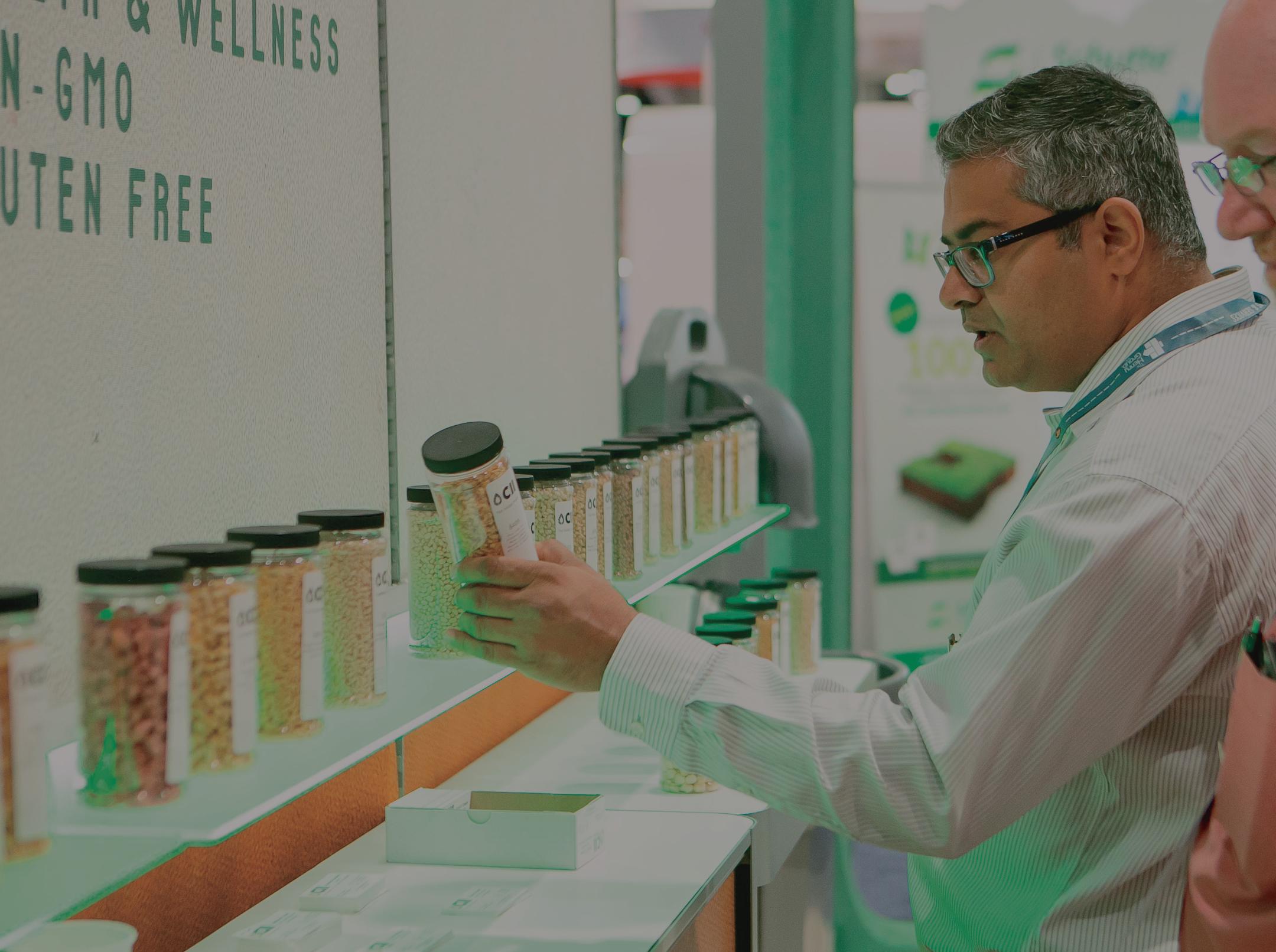

Our multimedia collection is full of videos, podcast episodes and more, where you can get a deep look — and listen — into the exciting shifts happening in the baking industry.

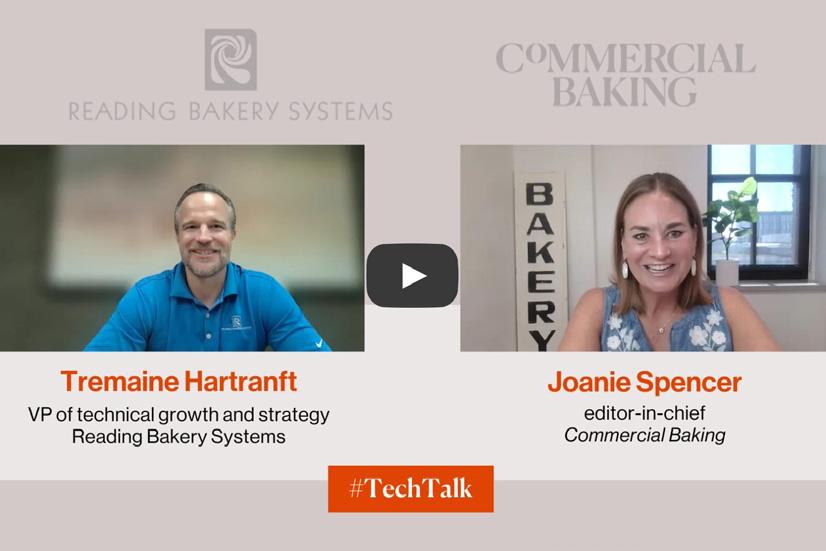

TechTalk with Middleby | RapidBake Oven Technology

Eric Cruse, president of Baker Thermal Solutions, and Kendall Howie, principal food scientist at Middleby’s Bakery Innovation Center, discuss the latest RapidBake oven advancements. www.middleby.com
TechTalk with Reading Bakery Systems | Emithermic XE Oven Technology

Tremaine Hartranft, VP of technical growth and strategy, chats about how RBS’ Emithermic XE oven helps meet sustainability goals and maintain efficiency. www.readingbakery.com
TechTalk with RIBUS | Clean-Label Baking with NuBAKE

Steve Peirce, president, highlights technical applications for NuBAKE, a patented hypoallergenic rice bran extract used in clean-label, gluten-free baking. www.ribus.com
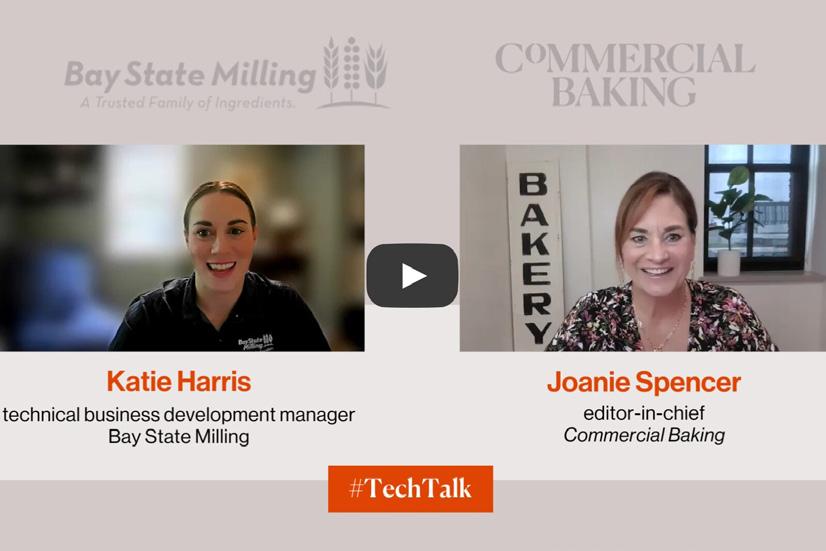
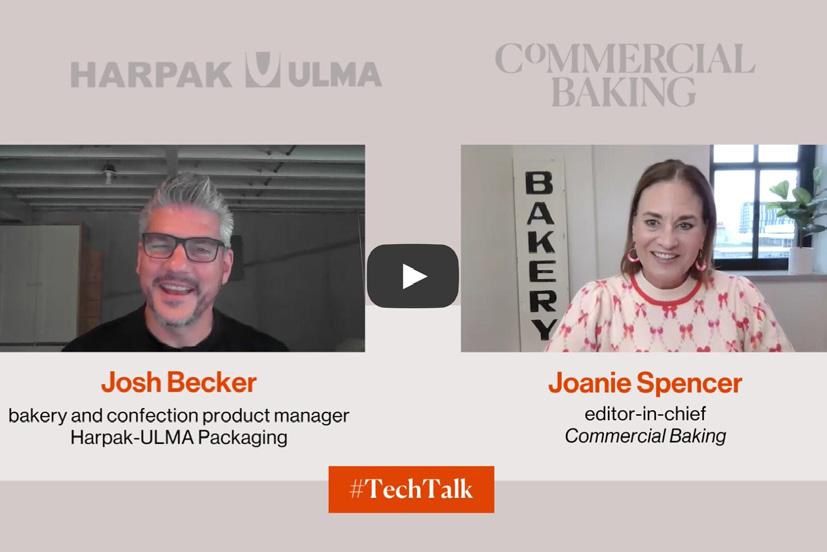
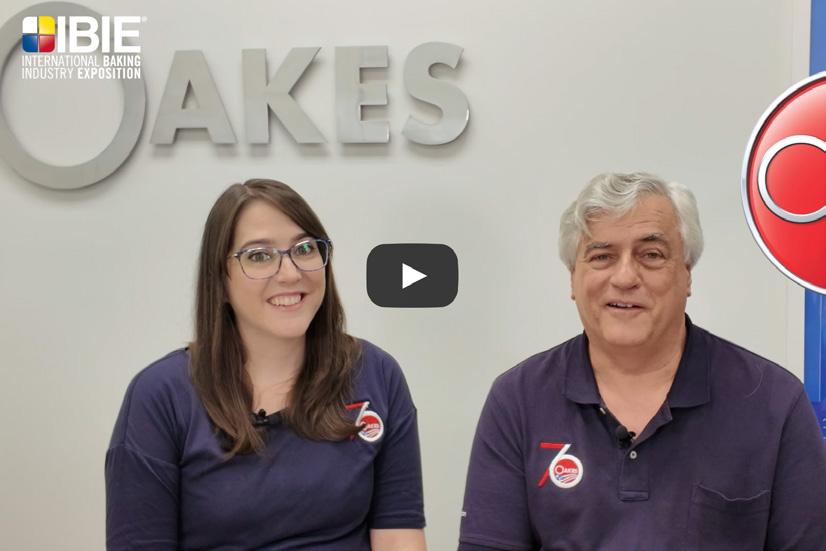
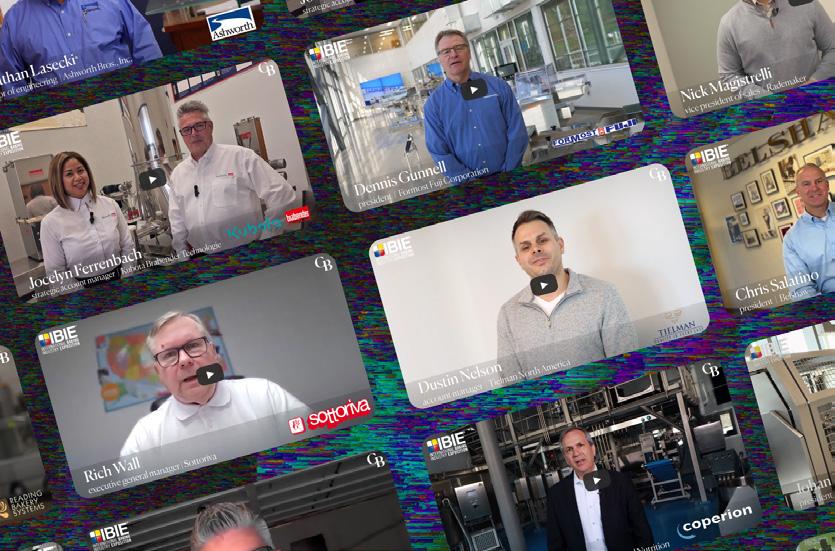

Katie Harris, technical business development manager, details the practical aspects of Bay State Milling’s HealthSense High-Fiber Wheat Flour. www.baystatemilling.com

Josh Becker, bakery and confection product manager, dives into the functions, benefits and challenges of flowwrapping packaging equipment. www.harpak-ulma.com

Stop by Booth #2801 in the West Hall to witness the latest advancements in Oakes’ mixing and depositing technology, including the debut of a new sheet cake extrusion manifold. www.oakes.com

These short videos offer a sneak peek at some of the Baking Expo’s most innovative exhibitors, trends and solutions, and provide attendees an easy way to outline their show floor strategy.



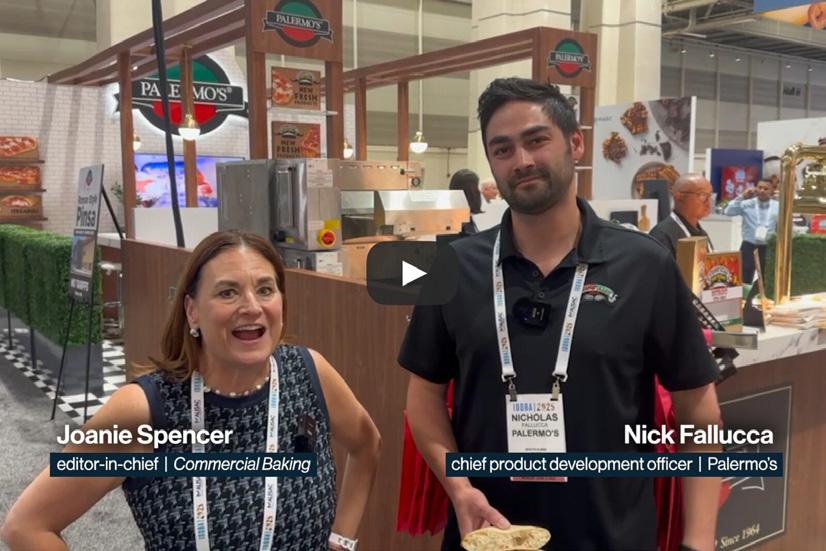
Catching Up with Commercial Baking : Richard Ybarra at BEMA 2025

Richard Ybarra, senior manager for manufacturing engineering at Publix, shared his favorite things about BEMA Convention as a seven-time attendee.
Catching Up with Commercial Baking : Clay Miller at BEMA 2025

Clay Miller, president of Burford Corp., talked about highlights from the Convention’s programming and reflected on his time as the 2024-25 BEMA board chair.
Catching Up with Commercial Baking : Nancy Silverton at IDDBA 2025

Nancy Silverton, founder of La Brea Bakery, reflected on her participation in this year’s show and the history of the Aspire Bakeries brand.
Catching Up with Commercial Baking : Nick Fallucca at IDDBA 2025

Nick Fallucca, chief product development officer for Palermo’s Pizza, stopped to chat about trends he’s seeing in pizza and bread products.

BEMA connects, educates, and provides resources to our members through a number of collaboration opportunities creating an overwhelming competitive advantage for your company.

















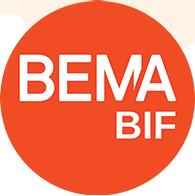









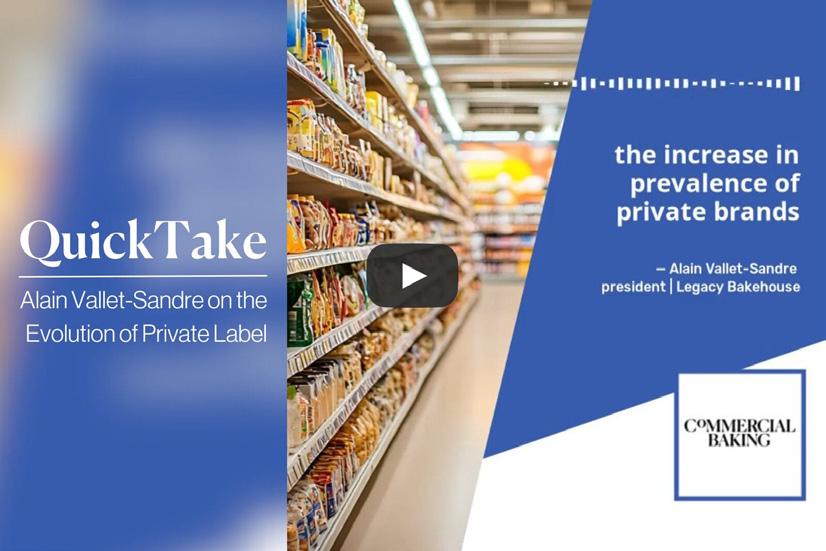

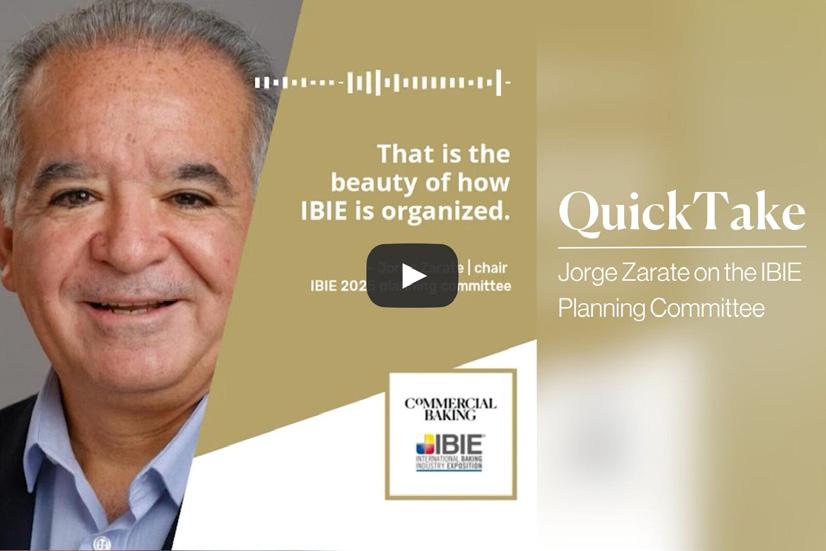

Esmer Cancino, VP of sales and marketing for Sugar Bowl Bakery, discussed the R&D and strategy behind the baking company’s Lemon Blueberry Madeleine.

The president of Legacy Bakehouse talks about how private label brands have learned to pivot over the years to compete with name-brand products and pricing.

The IBIE 2025 vice chair and president of Hansaloy notes the heightened anticipation for the Baking Expo and how the planning committee keeps up on which trends to spotlight at the event.

The IBIE 2025 chair details how the diversity in expertise represented on the planning committee lends itself to creating the best holistic experience for attendees.
We are the “OGs” of so accept no imitations We invented, executed and TechTalks,
We are the “OGs” of multimedia, so accept no imitations. We invented, executed and perfected TechTalks, Booth Trailers and Innovation Minutes.
are the media source for the commercial
We are the premier media source for the commercial baking industry.

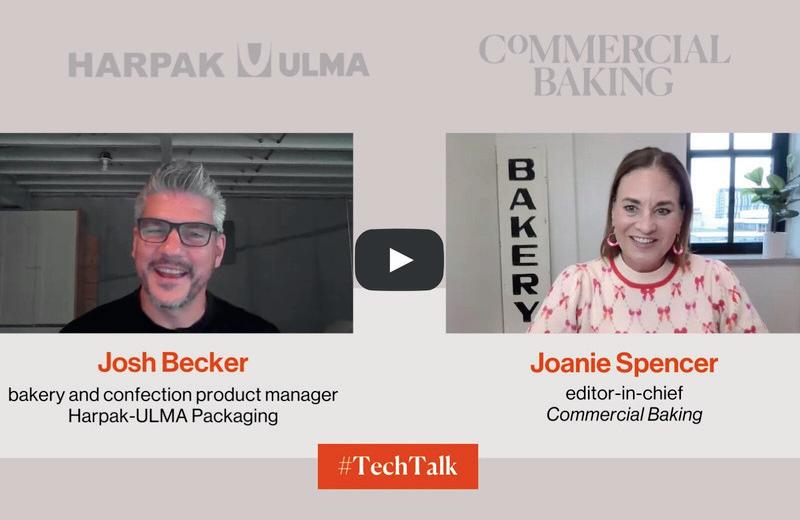

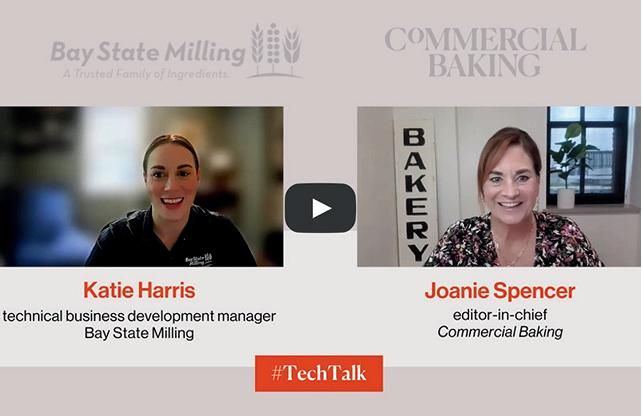

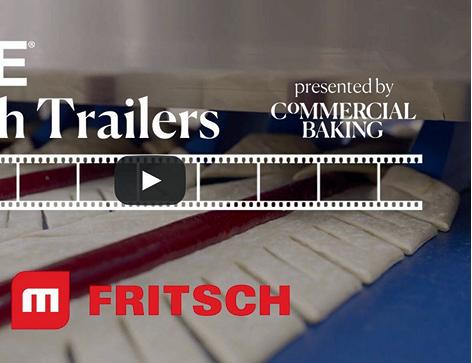
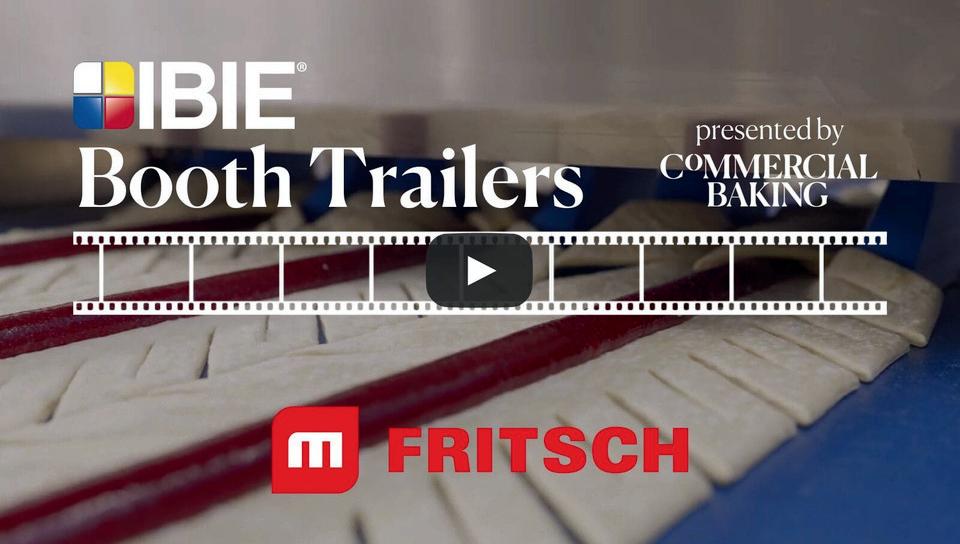


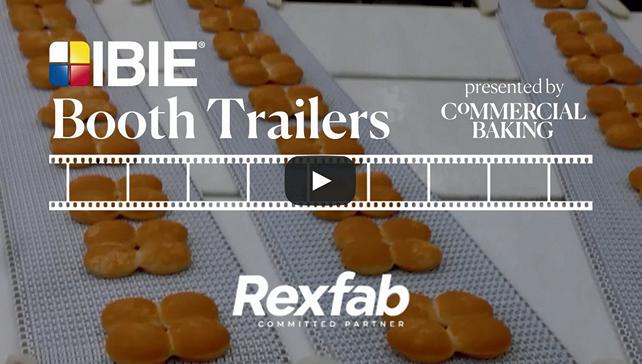
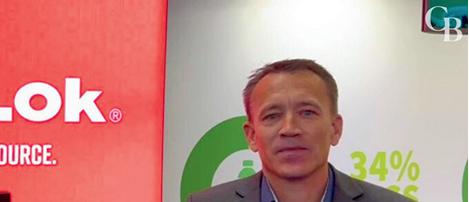









to our m ltimedia a c pt in ted e ec e a d e cte T h alks

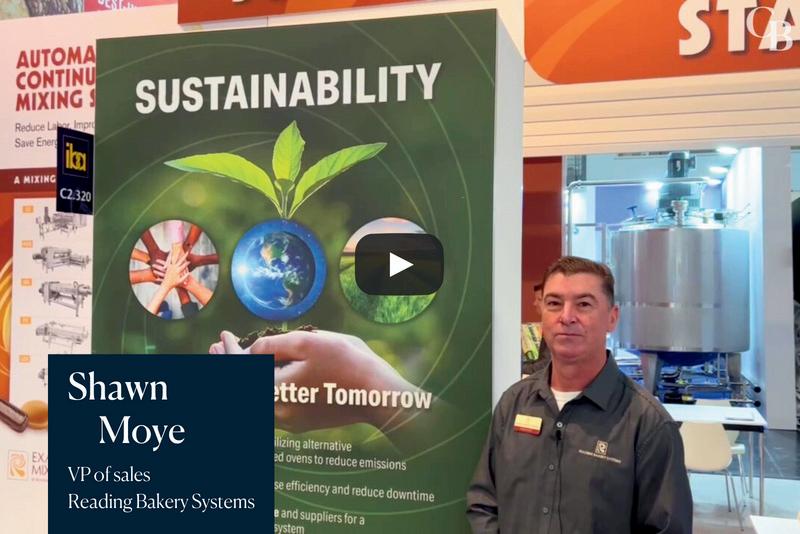



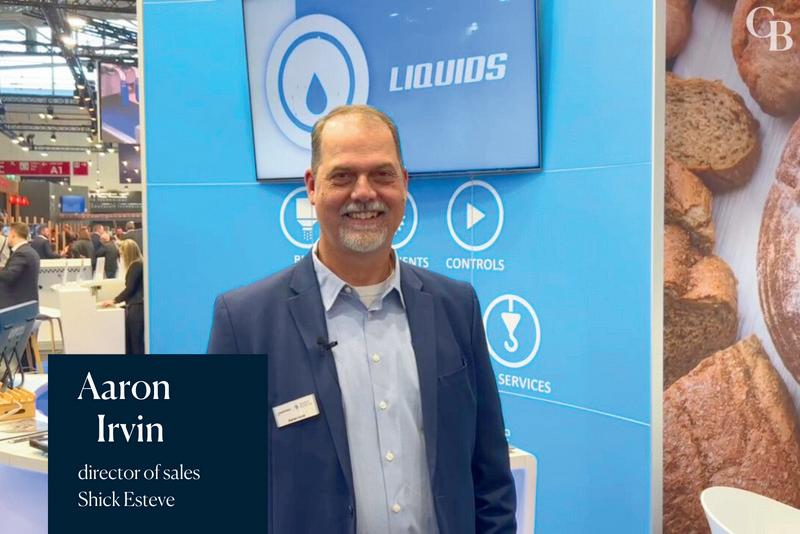

our

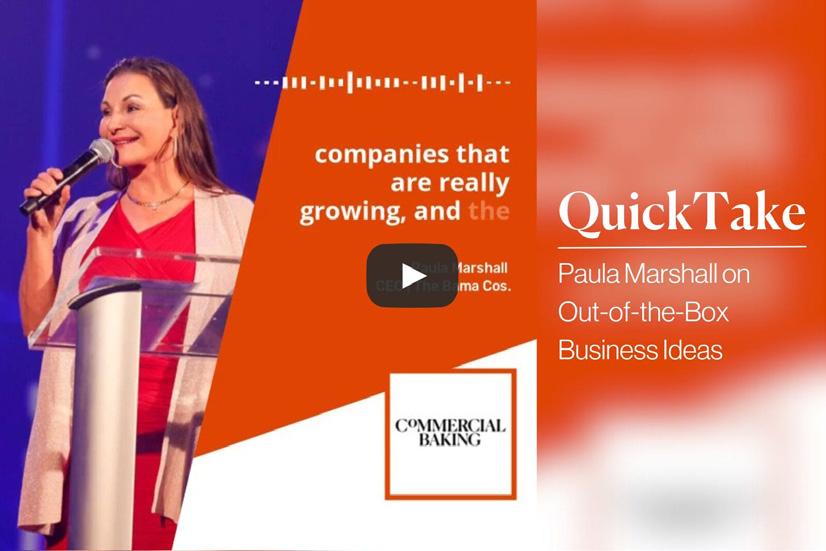

The president and CEO of the American Bakers Association shares valuable insights into the rising consumer demand for diversity in pizza crust options.

The CEO of The Bama Cos. explains the strategy behind pushing the baking company into frozen production and how strong customer relationships can lead to opportunities for long-term innovation.



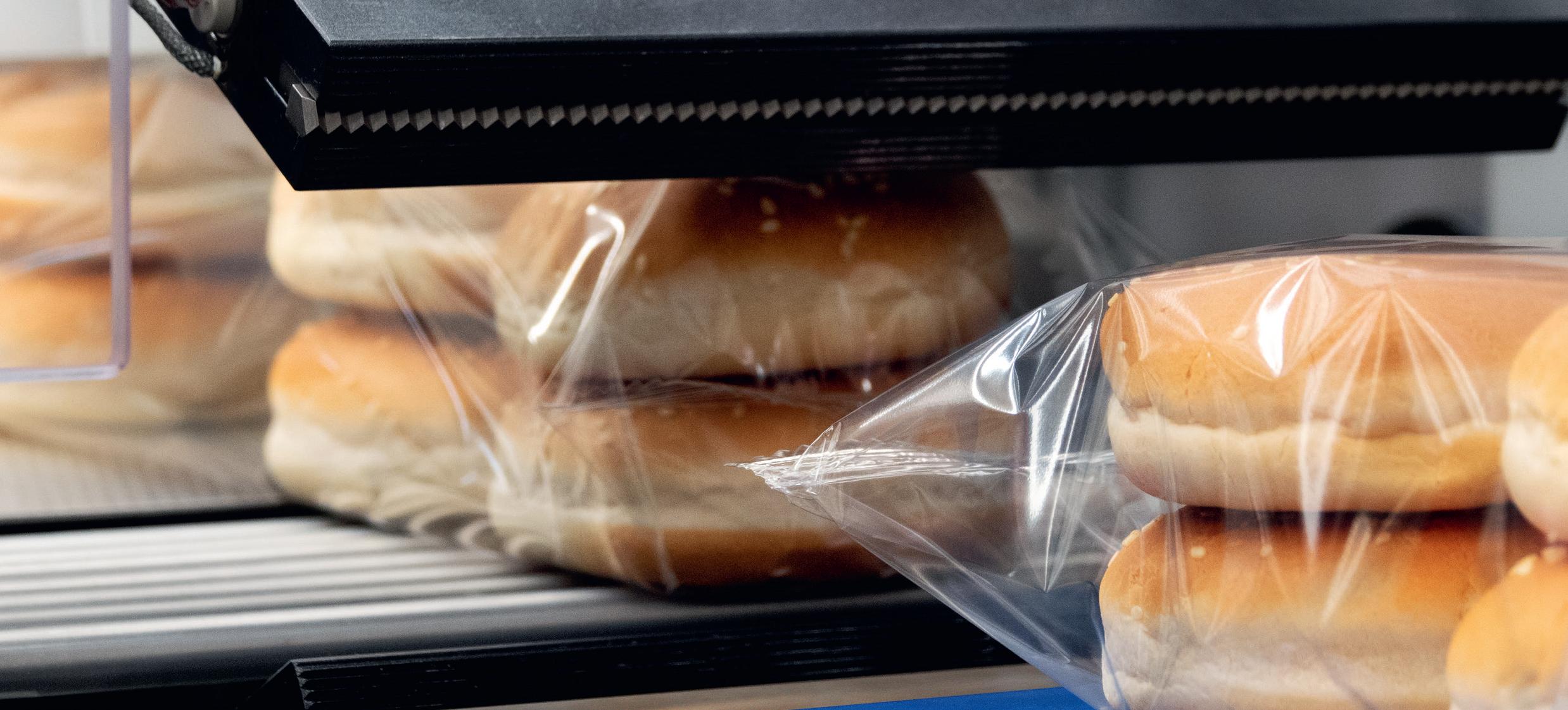

IMA Ilapak and IMA Delta Systems part of the IMA FLX HUB bring over years of expertise in the bakery sector with thousands of packaging systems installed worldwide. isit us at IBIE and discover our cutting edge solutions for feeding weighing counting and packaging a wide range of bakery products — including bread pizza tortillas cakes pastries biscuits cookies croissants and frozen baked goods.
IBIE
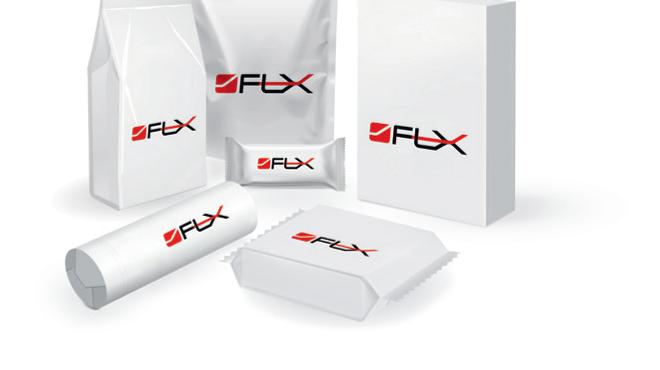
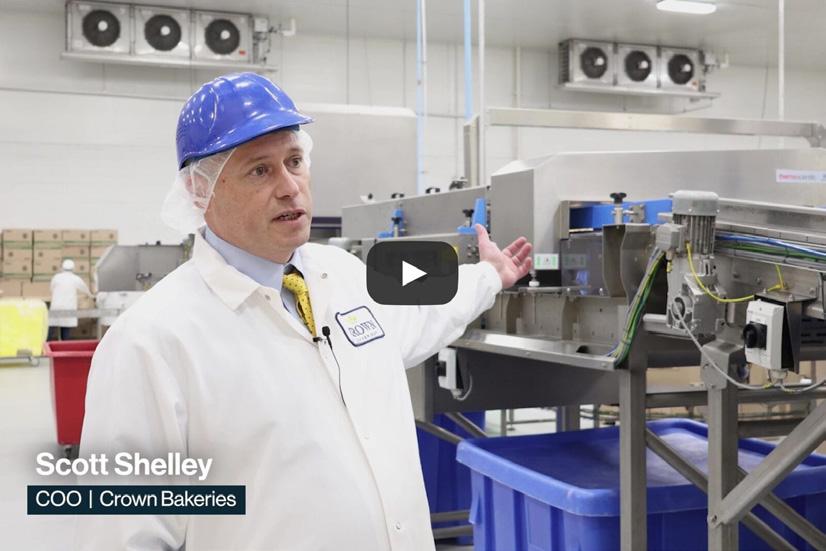
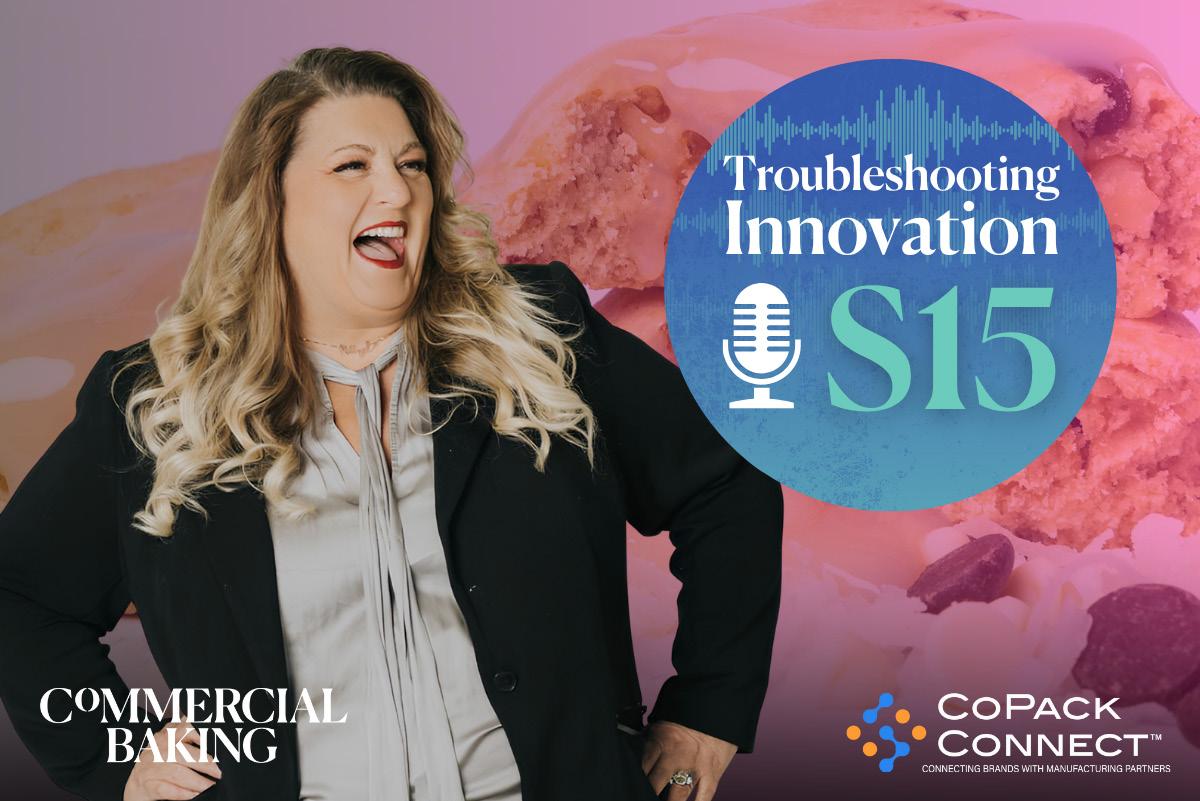

The COO of Crown Bakeries outlines the b enefits of adding a versatile spiral system to a bakery’s operations for cooling and freezing.

The current season of Commercial Baking ’s awardwinning podcast features Molly Blakely, founder and CEO of Molly Bz Cookies, who covers how she built a nationwide cookie brand from $150 and an InstaPot. Sponsored by CoPack Connect.









Come See Us at Booth 617!
The boba craze is here to stay, and tea is sharing the wealth as tapioca pearls enter the baking realm. The signature chewy texture adds a wow factor to classic baking staples such as cakes, cookies and donuts. Incorporating traditional Thai flavors as a base and embellishing with the sweet bubbles takes a treat from ordinary to exceptional.
Artisan innovation is flourishing. From unique flavor combos to boundary-breaking baked goods, see what’s trending in retail bakery cases.
POWERED BY


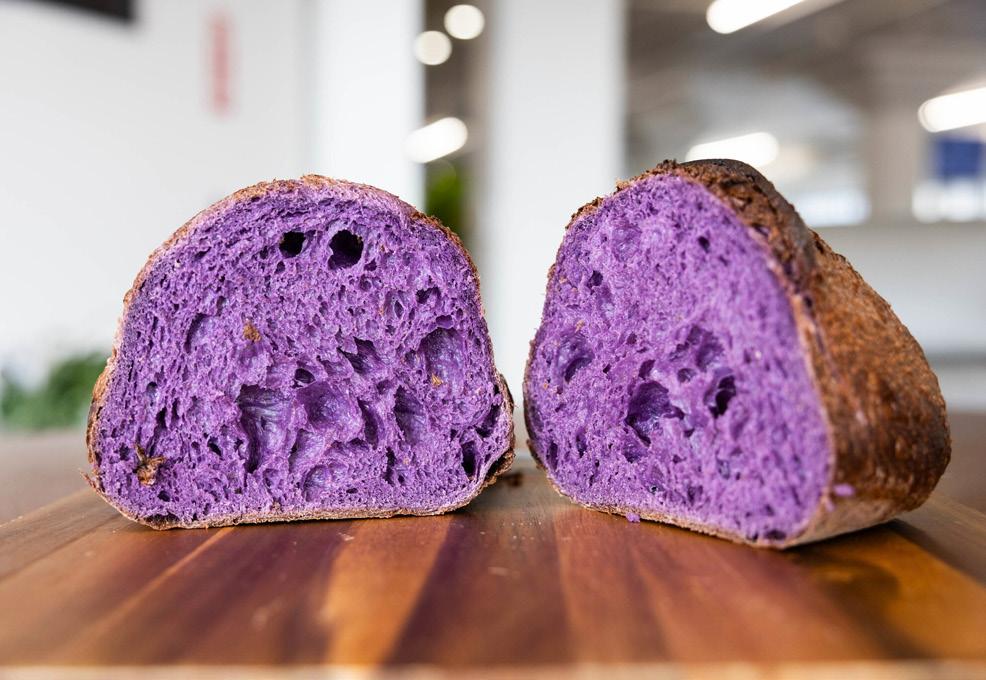
Ube has garnered international attention for its vibrant hue and versatility. The purple yam was so popular among consumers that it was named flavor of the year by T. Hasegawa in 2024. Bakeries are capitalizing on the ingredient’s momentum by incorporating ube into traditionally savory breads to add a touch of sweet, nutty flavor.

This inventive twist on crepe cakes pairs pandan, a tropical plant used in Asian cuisine, with kaya, a sweet coconut jam, to craft a soft treat with subtle floral notes infused in each layer. The new creation combines global flavors in a fresh take on cake, offering a unique, easily customizable dessert.
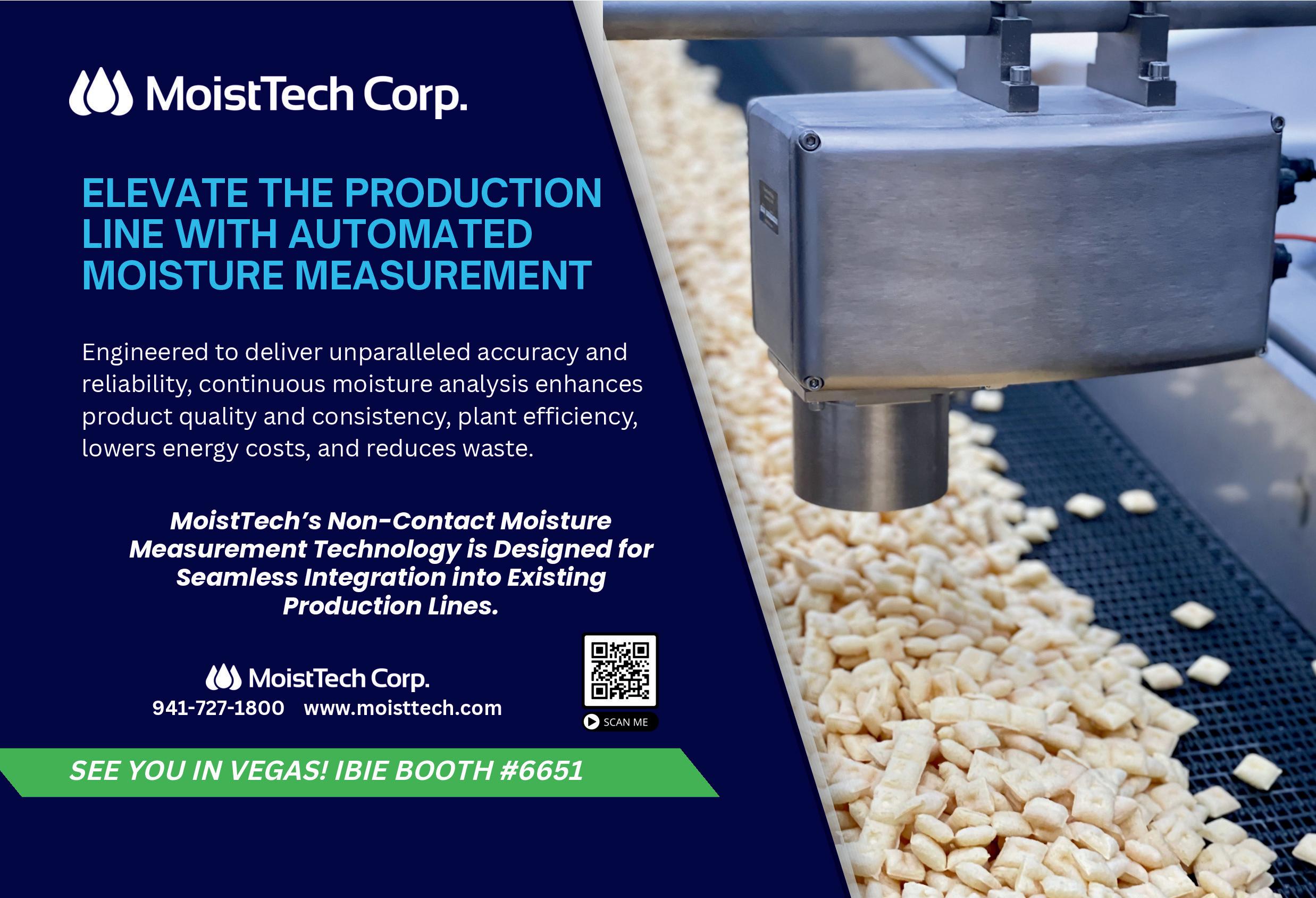
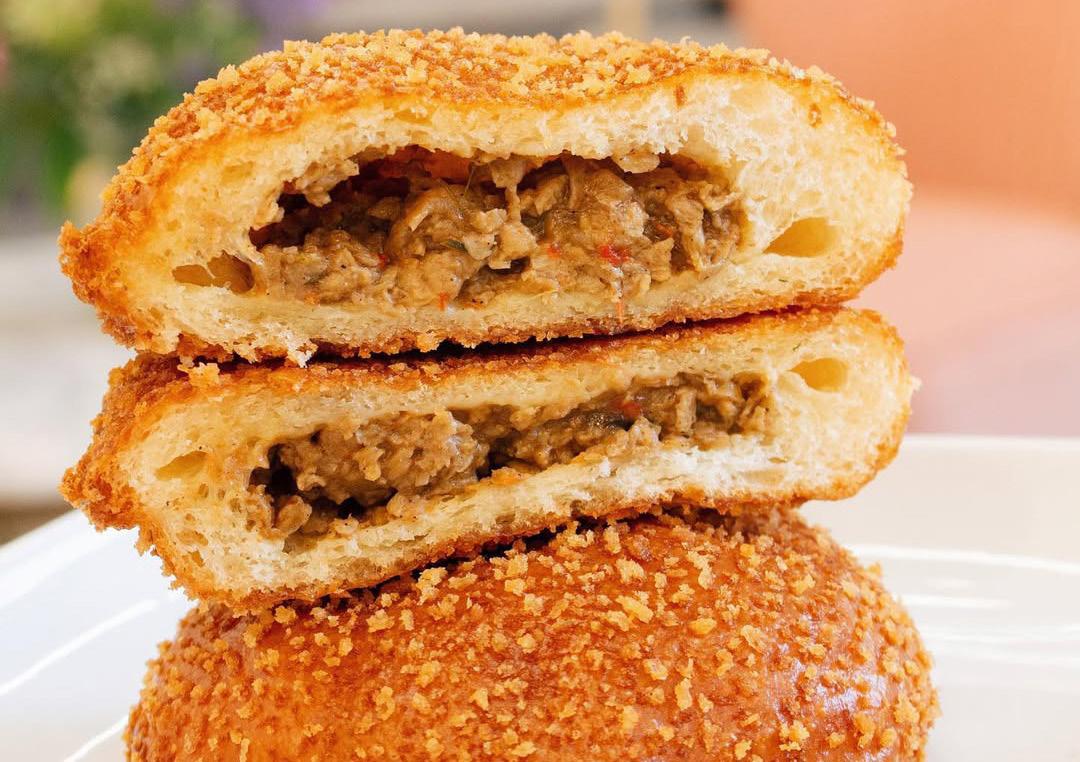
Curry’s appeal is rooted in its blend of spices and diverse flavor profile. Bakers are getting creative with the ingredient, pairing it with products such as croquettes. Using the spice as a core ingredient and mixing it with a variety of fillings will satisfy consumers seeking a savory breakfast or crispy snack.

Also known as finger limes, this thumb-sized fruit features a trove of citrus pearls filled with tangy juice. Native to Australia, the fruit is thriving throughout the US as chefs and bakers use it to add visual and textural pops to their dishes. The pearls can be used as macaron filling, lemon bar sprinkles and garnishes for cakes.


Product quality, industrial performance, and sustainability. At MECATHERM, we aim to support you everyday as you explore new ideas to stay ahead, and overcome challenges while reducing your carbon footprint. We are developing numerous innovative and sustainable solutions to optimize your energy efficiency throughout your entire production line. Let’s discuss and discover the array of options awaiting you. WWW.MECATHERM.COM
Make your industrial bakery simpler

www.commercialbaking.com/subscription
The following advertisers appear in this issue. We encourage readers to reach out to these companies through the listed website or email for further information. This index is provided as a service to readers and advertisers, but Commercial Baking does not assume any liability for errors or omissions. Please send any updates or corrections to info@commercialbaking.com
Mauri
www.abmna.com customerservice.abmauri@abmauri.com
Bakery Equipment
www.alliedbaking.com steve@alliedbake.com
northamericaflexibles@amcor.com
Bakers Association
www.americanbakers.org info@americanbakers.org
www.amfbakery.com sales@amfbakery.com
www.ashworth.com sales@ashworth.com
www.avantfoodmedia.com info@avantfoodmedia.com
www.azo-inc.com info-azo-usa@azo.com
www.bcwilliams.com info@bcwilliams.com
www.bellarise.com info@bellarise.com

info@bema.org
Handtmann 14, 4 4-45
www.handtmann.us max.king@handtmann.us
Harpak-Ulma 55, 74-75 www.harpak-ulma.com info@harpak-ulma.com
Henry & Sons
www.dhenryandsons.com info@dhenryandsons.com
Ilapak
www.ima.it/flexible-packaging-hub info.flxhub@ima.it
Imperial
www.imperialind.com morgan@imperialind.com
Intralox 5 www.intralox.com customerservice.bakery@intralox.com
IPCO
www.ipco.com sales.us@ipco.com
J&K Ingredients 2 www.jkingredients.com sales@jkingredients.net
JLS Automation
www.jlsautomation.com sales@jlsautomation.com
Kaak
www.kaak.com jlaros@kaak.com
King Arthur
www.kingarthurbaking.com bakeryfloursupport@kingarthurbaking.com
Koenig Baking Systems
www.koenig-rex.com info_usa@koenig-rex.com
Kubota Brabender Technologie 7 www.brabenderti.com golmes@brabenderti.com
Kwik Lok
www.kwiklok.com sales@kwiklok.com
Lallemand Baking
www.lallemandbaking.com baking@lallemand.com
Manildra Group USA
www.manildrausa.com info@manildrausa.com
Mecatherm
www.mecatherm.fr/en info@mecatherm.fr
moisttech.com/applications/human-food-moisture info@moisttech.com
Moline
www.moline.com sales@moline.com
Multivac/Fritsch
www.fritsch-group.com cecily.pickering@multivac.com
Oakes
www.oakes.com info@oakes.com
Pacteon
www.pacteon.com contact@pacteon.com
Rademaker
www.rademaker.com sales@rademaker.com
Reading Bakery Systems
www.readingbakery.com info@readingbakery.com
Reiser
www.reiser.com sales@reiser.com
Repco
www.repcoworld.com/bakery info@repcoworld.com
Rexfab
www.rexfab.com rexfab@rexfab.com
Ribus
www.ribus.com alicia@ribus.com
Siemer Milling Co.
www.siemermilling.com jay.wallace@seimermilling.com
Sottoriva
www.sottoriva.com richwall@sottoriva.com
Spiromatic
www.spiromatic.com info@spiromatic.com
Syntegon
Middleby Bakery Group 3, 7 6 www.middprocessing.com info@lematic.com MoistTech
www.syntegon.com info@syntegon.com
The Henry Group
www.thehenrygroup.com morgan.henry@thehenrygroup.com
Tielman Group
www.tielman.com rhonda@tielman.com
Zeppelin Systems USA
zeppelin-systems.com/de/en/industries/food-industry info@zeppelin-usa.com

www.commercialbaking.com/adv ertise

Lattan paul@avantfoodmedia.com 816.585.5030



Author Bob Goff once said, “Embrace uncertainty. Some of the most beautiful chapters in our lives won’t have a title until much later.”
Today, the United States and the commercial baking industry are in a period of uncertainty. Our industry is navigating an environment marked by unpredictable tariffs, fast-evolving consumer expectations and continued workforce challenges … all while remaining steadfast in our commitment to deliver a variety of delicious and safe products for our fellow Americans.
This isn’t the first time our industry has weathered formidable challenges, from global conflicts to ingredient shortages and labor market uncertainties. Each of these trials has shaped us to reinforce our resilience, strengthen our industry and deepen our commitment to feeding the communities across our great nation.
This time of uncertainty and change provides a unique opportunity for our industry to collaborate for the betterment of our country and the world. By working with our associations and industry stakeholders, we can strengthen the entire industry. From the dedicated farmers growing our ingredients and the equipment manufacturers constantly innovating to improve our processes, to the nearly 800,000 Americans employed in our bakeries — including
the tireless delivery drivers making sure our products are fresh for the consumers at their local stores — we all work together to provide nourishment to millions of people.
These opportunities can happen in dozens of different ways. Most notably is the largest baking industry trade show in the Western Hemisphere, IBIE in Las Vegas this September. There are myriad other association conventions and meetings, including the American Bakers Association Convention (which I’ll proudly admit holds a special place in my heart), among many others.
If we come together in the spirit of trust, communication and shared purpose, we will not only strengthen our industry but also support our country. And when that happens, I believe this chapter in our history will be remembered with a fitting title: “The baking industry united to nourish a nation and shape a better world.” CB
Bill Quigg is president and CEO of Richmond, IN-based Richmond Baking and Versailles, KY-based More Than A Bakery. With deep roots in the industry, he is the fourth generation of leadership in the country’s oldest family-owned cookie/cracker bakery. Quigg also serves as the 2024-2026 board chair for the American Bakers Association.

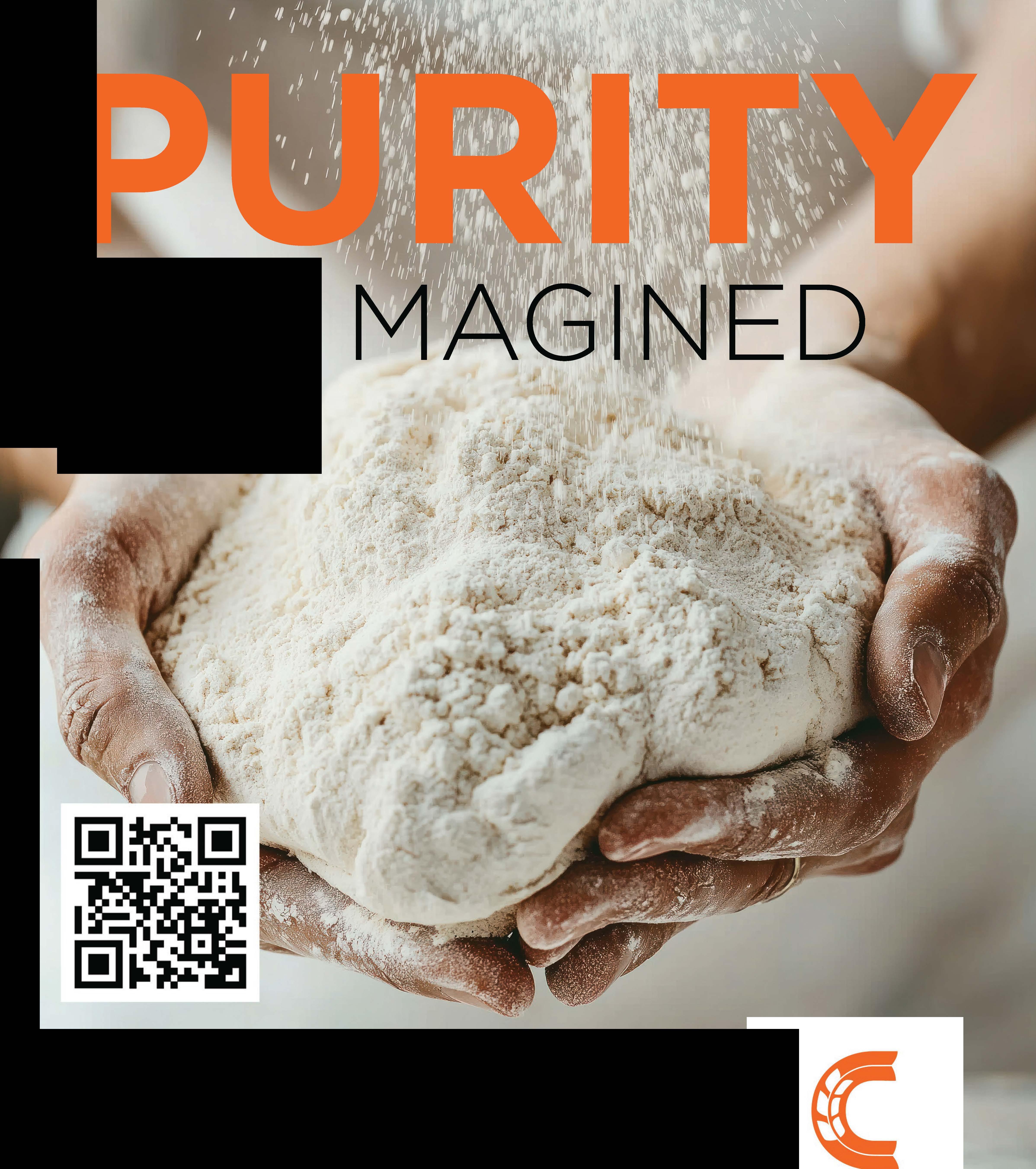








Consumer expectations for bold, inventive new products have never been greater. From unconventional hybrid products to wild indulgences, the name of the game is taste.


Corbion’s portfolio of dough conditioners, freshness solutions, and natural mold inhibitors is designed to do more than preserve your baked goods. It helps you bring out their best. By enhancing texture, maintaining softness, and protecting against spoilage naturally, our solutions support the authentic flavors today’s consumers crave while maximizing the overall eating experience.


